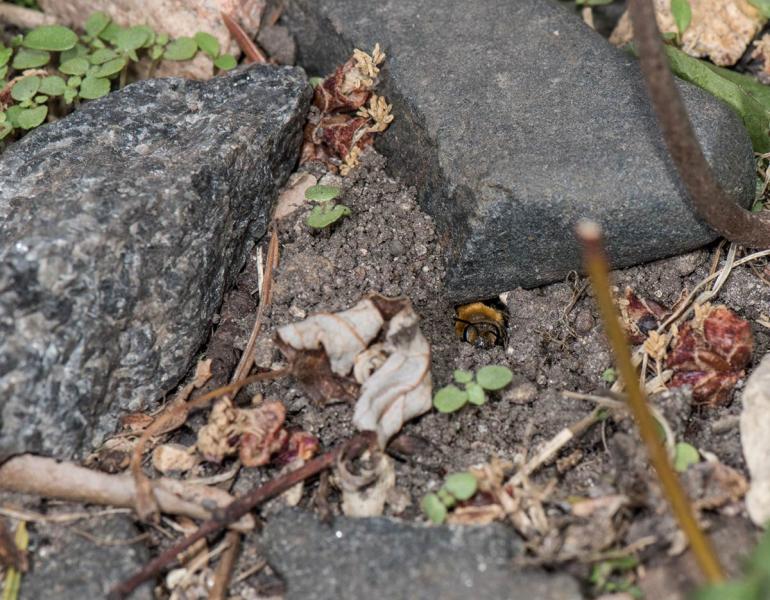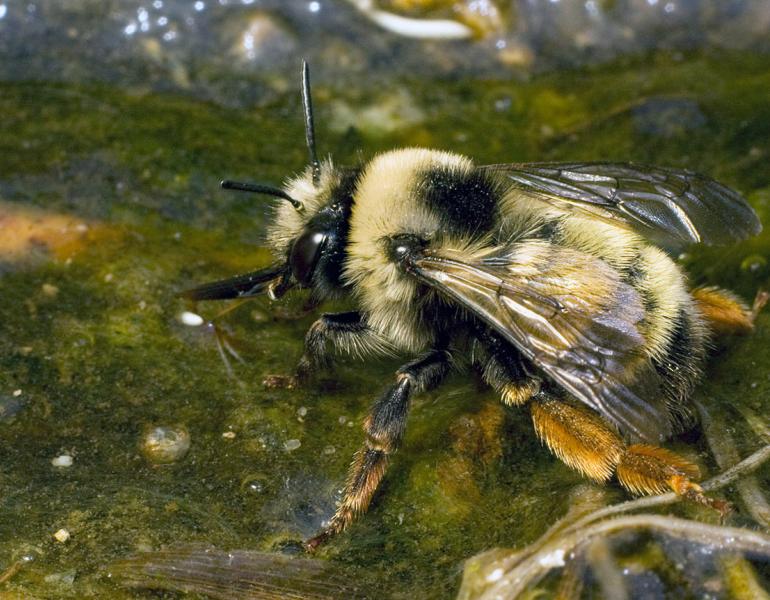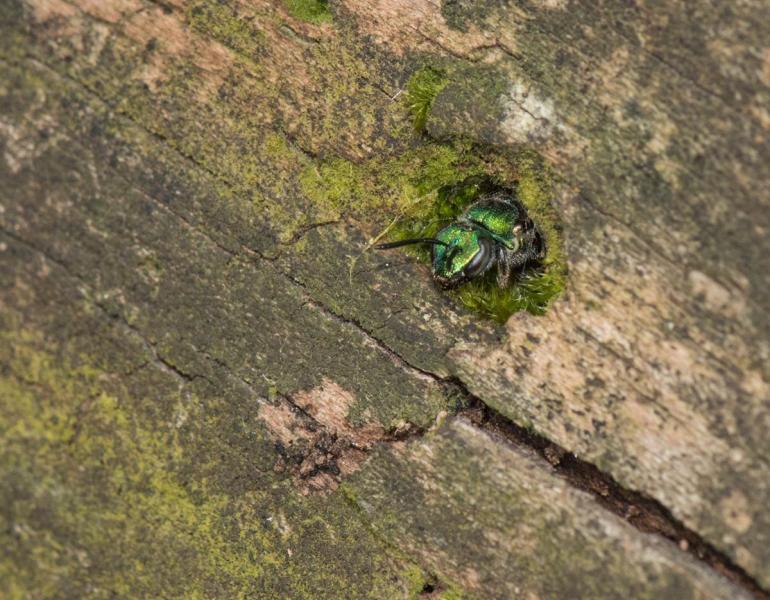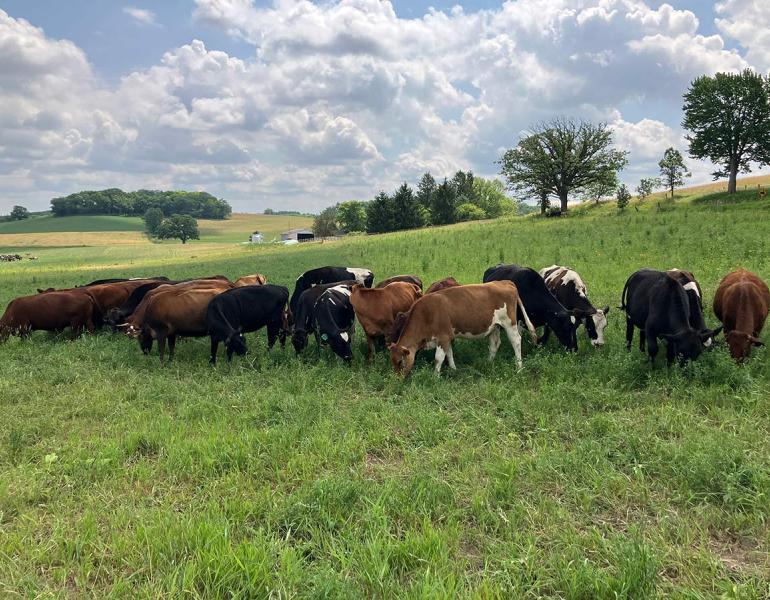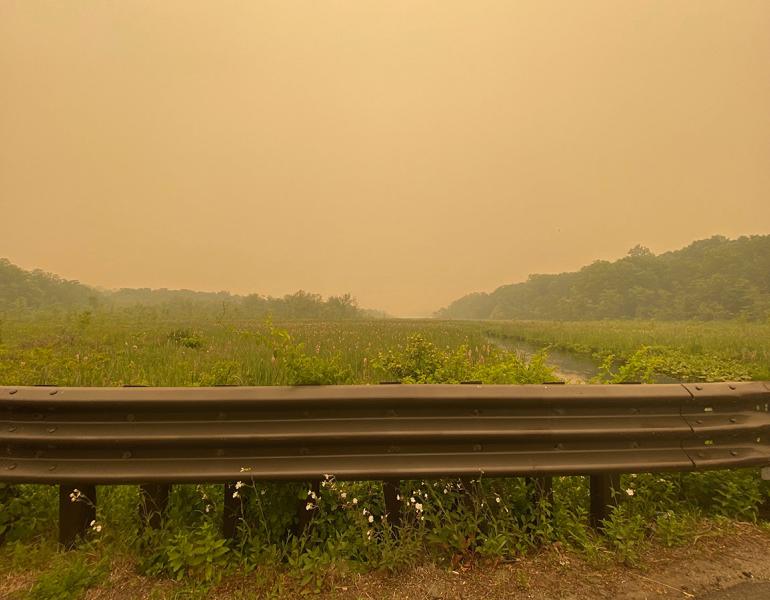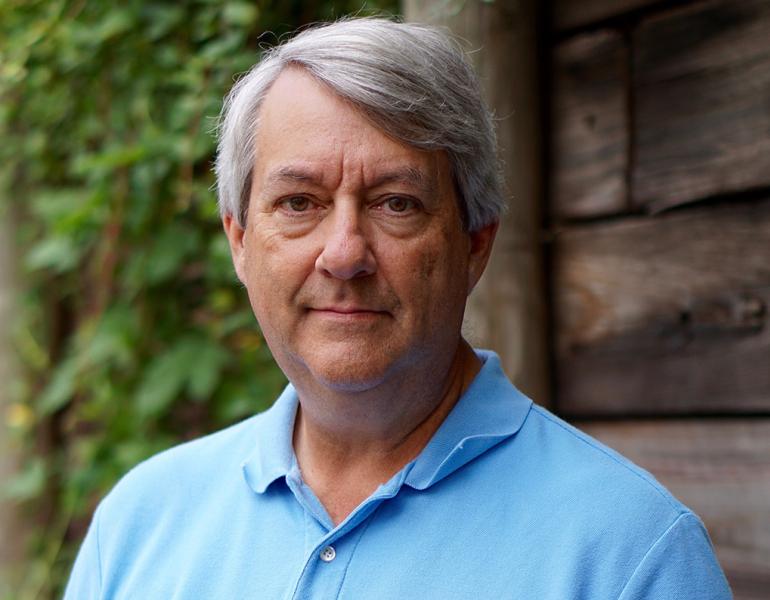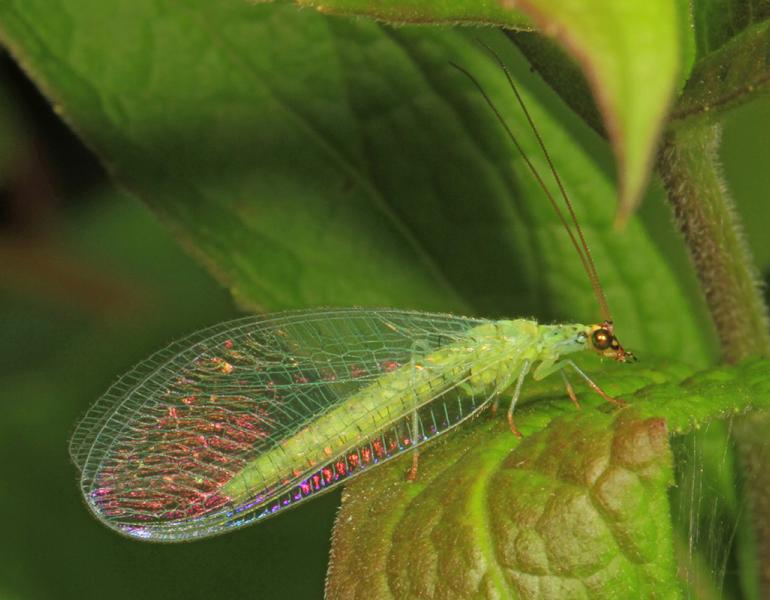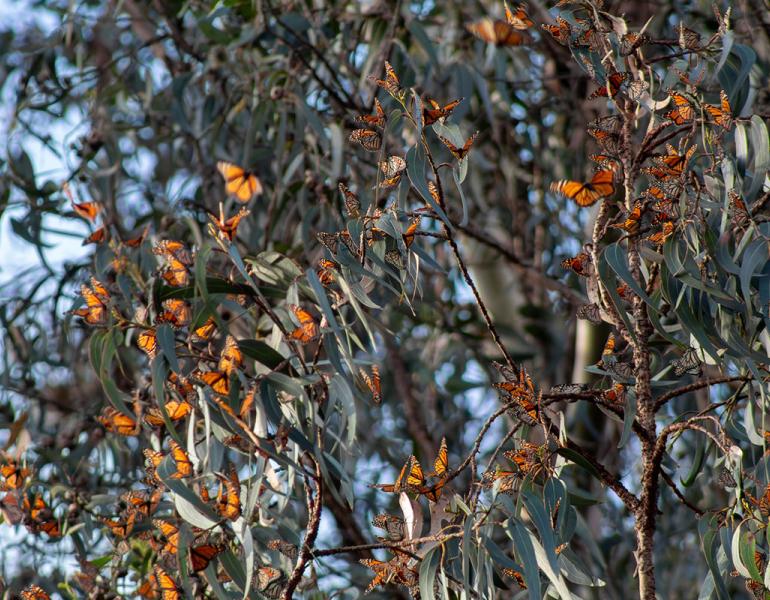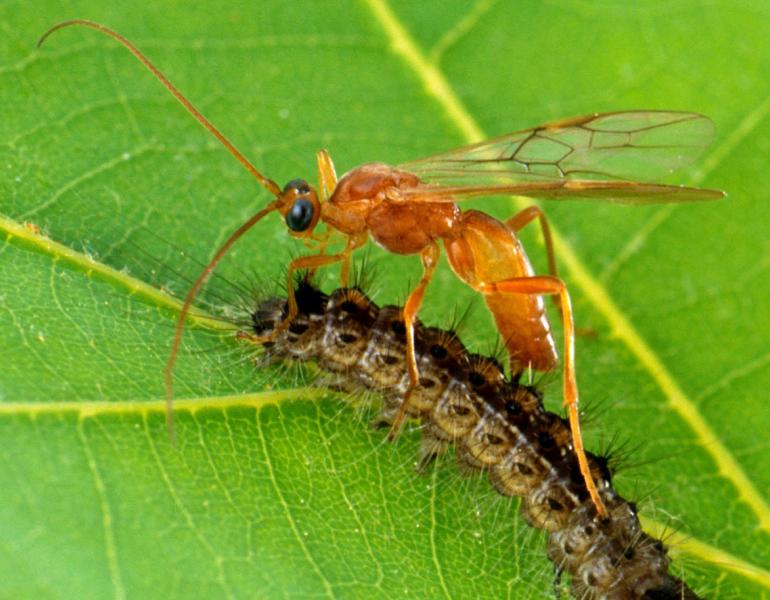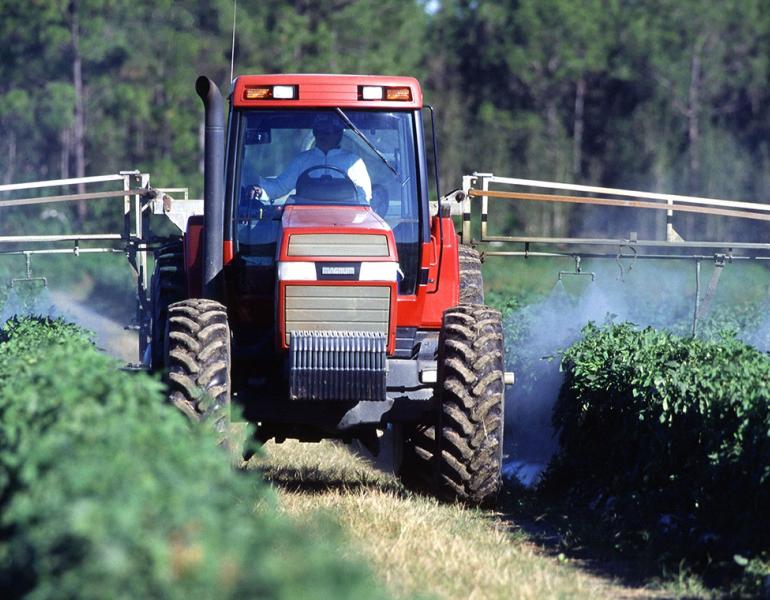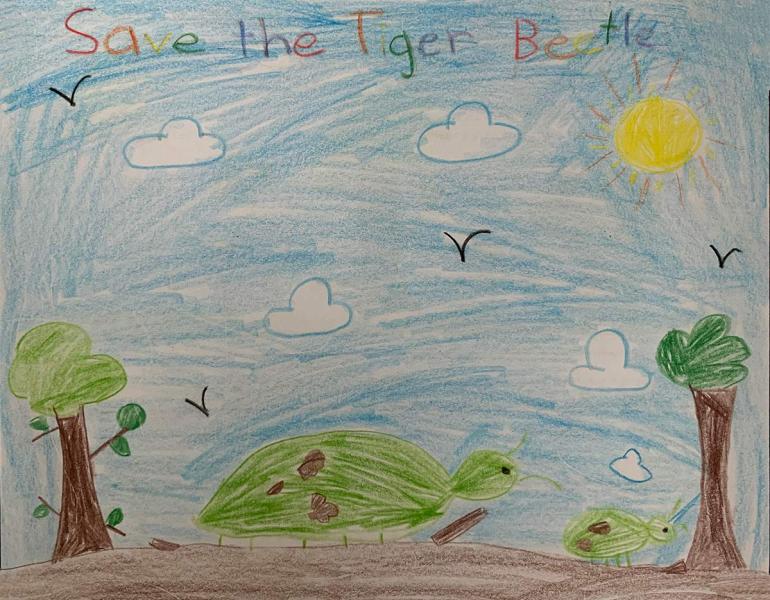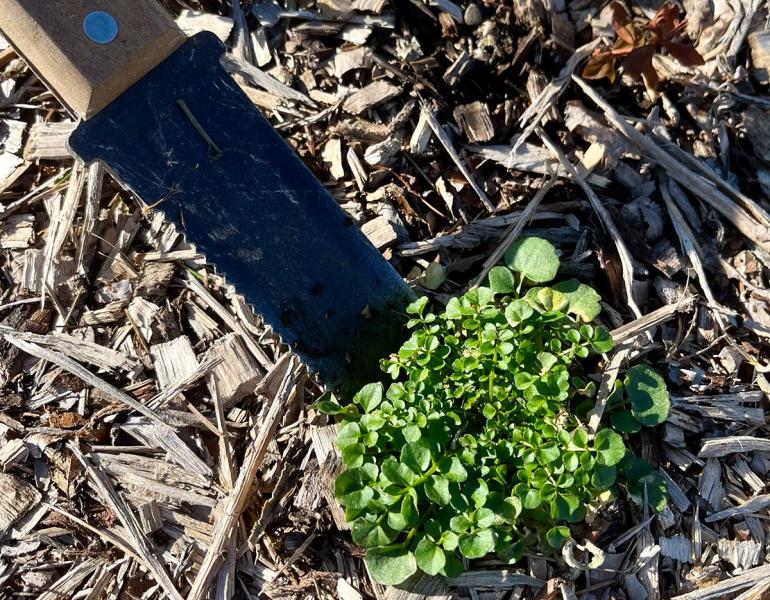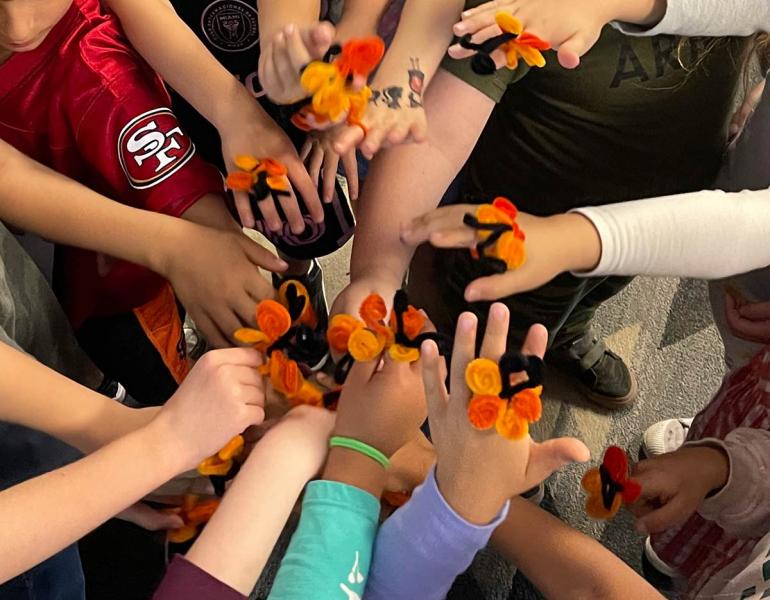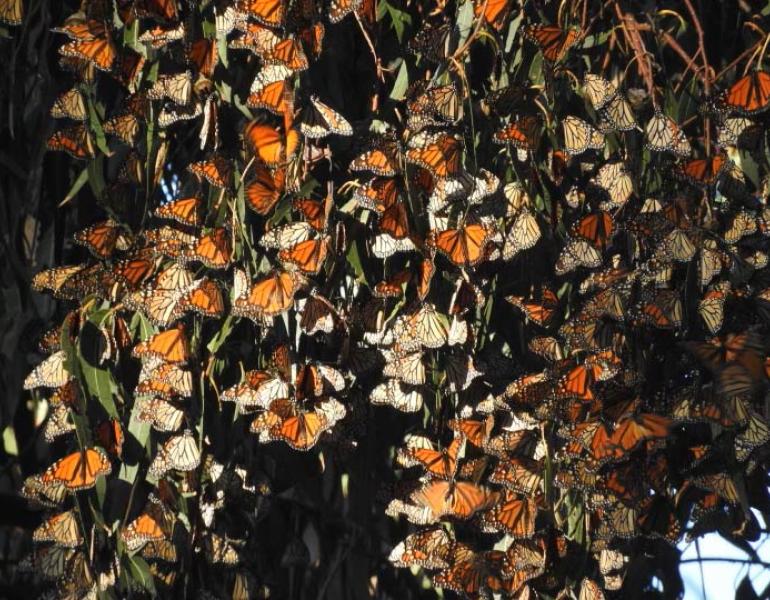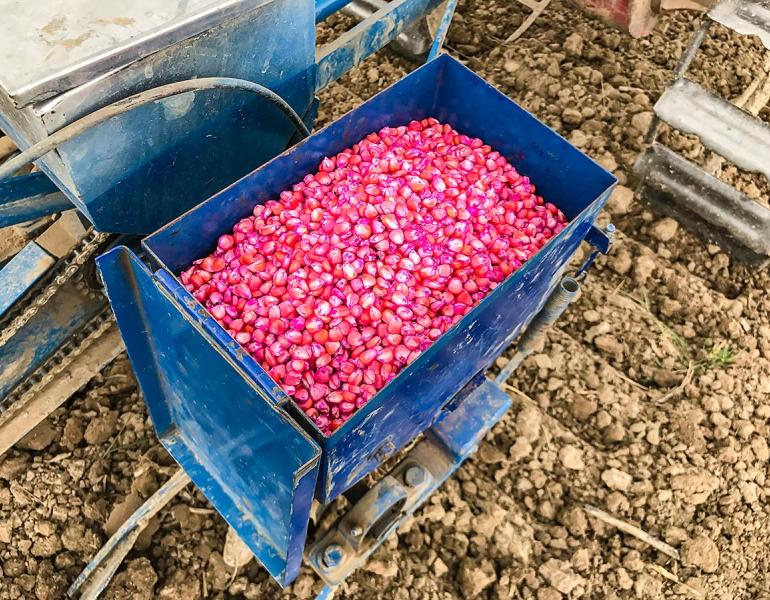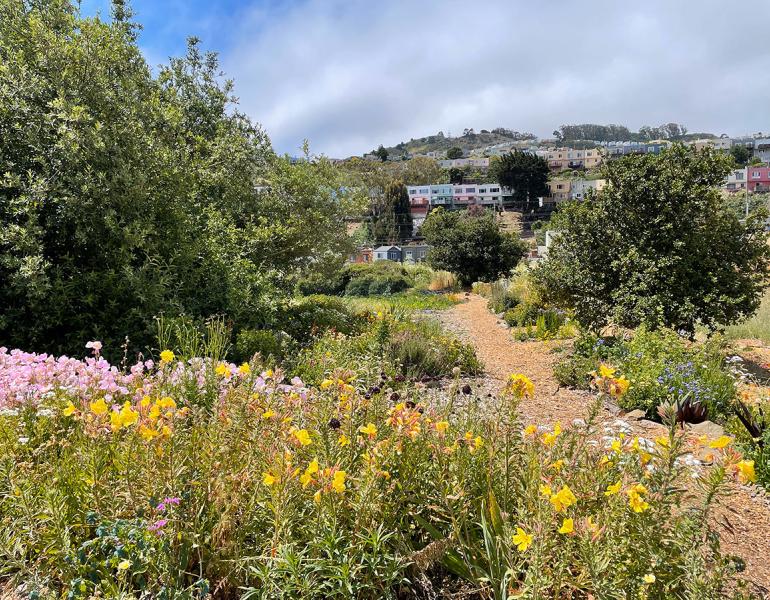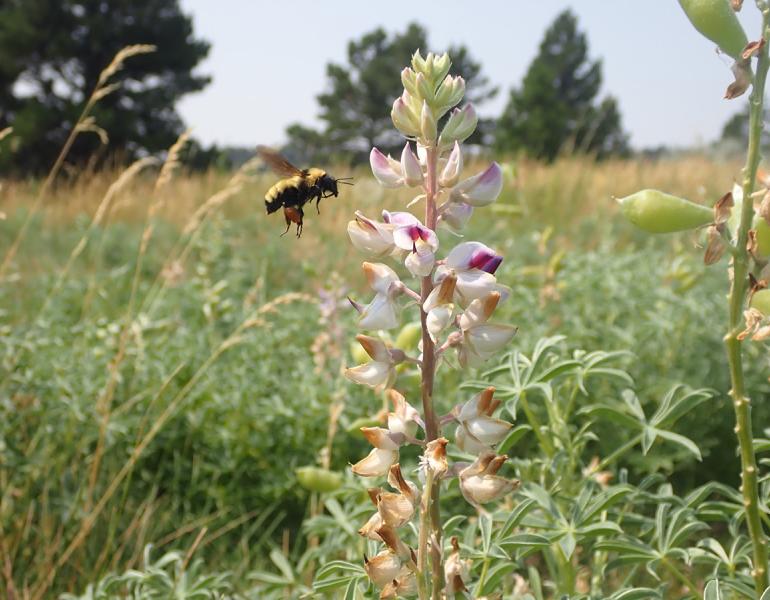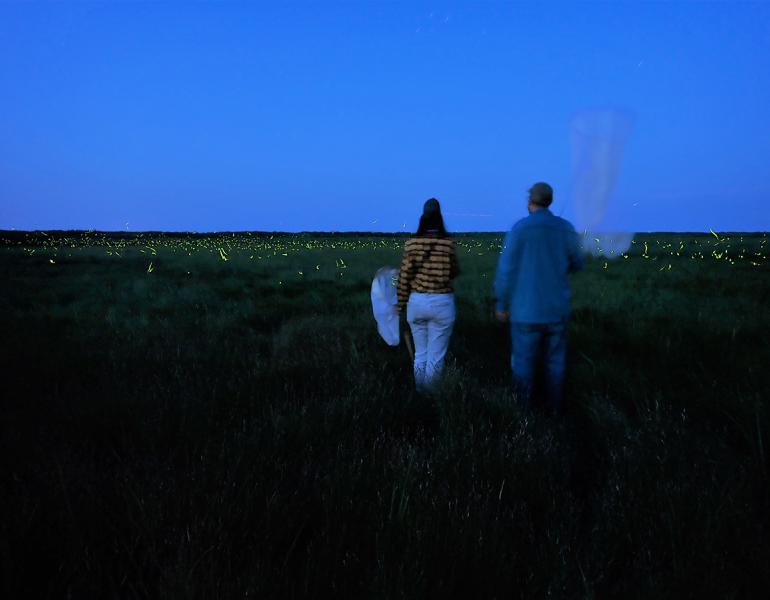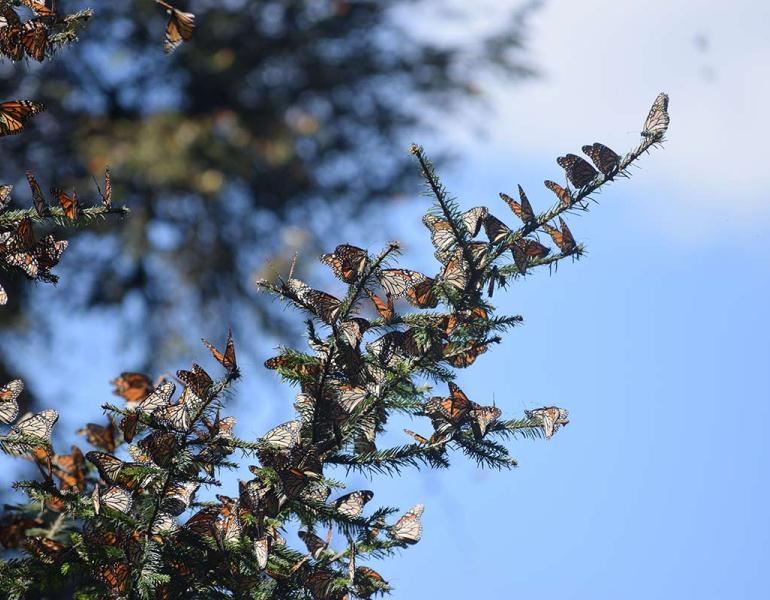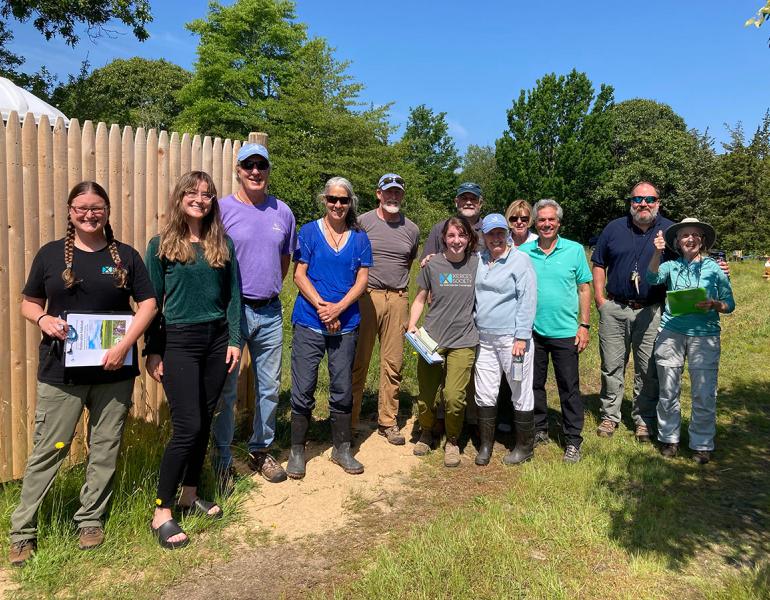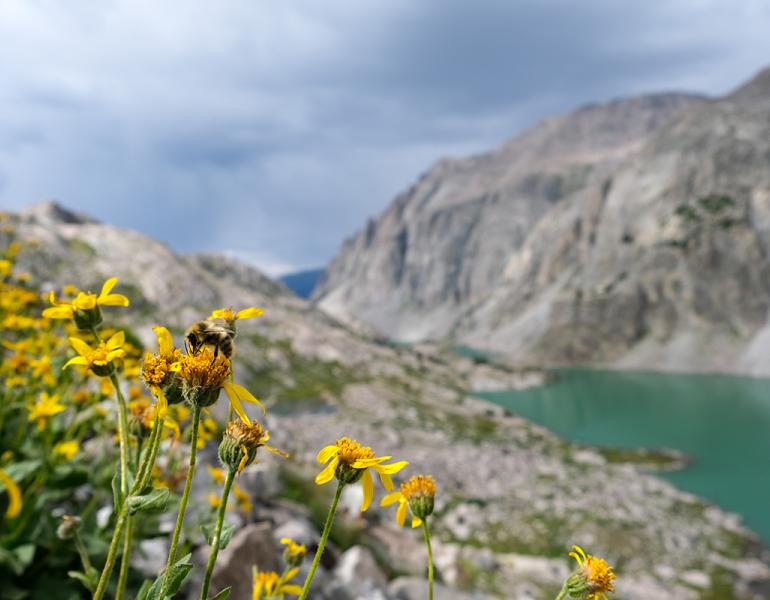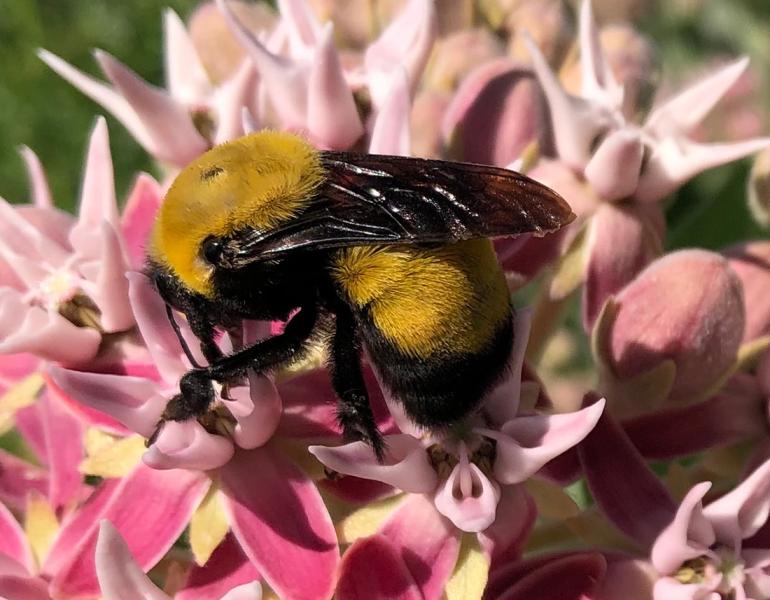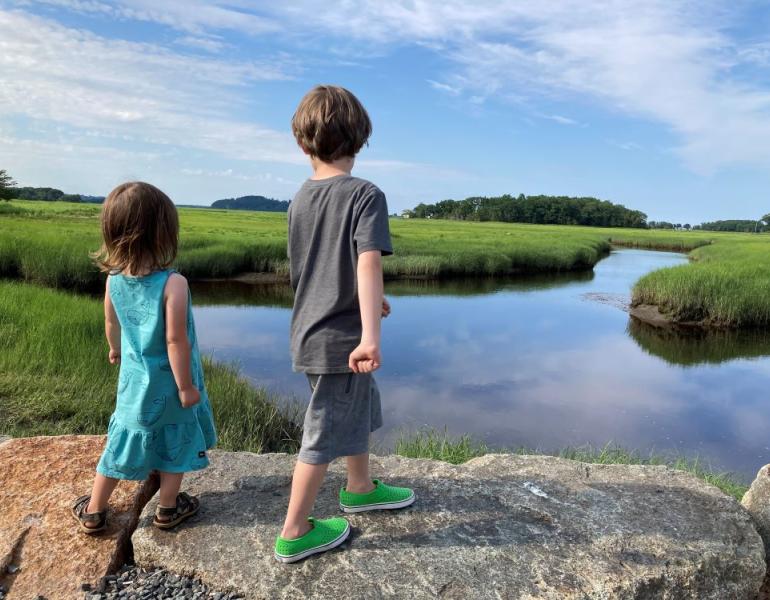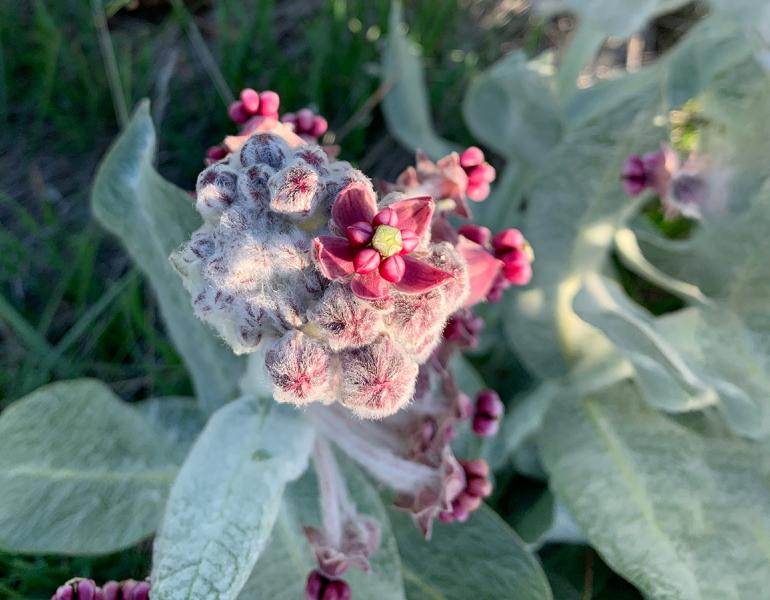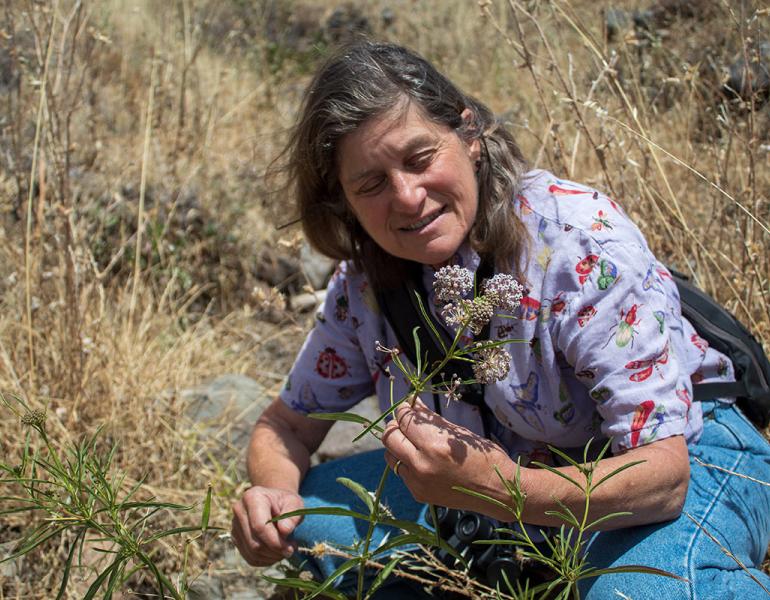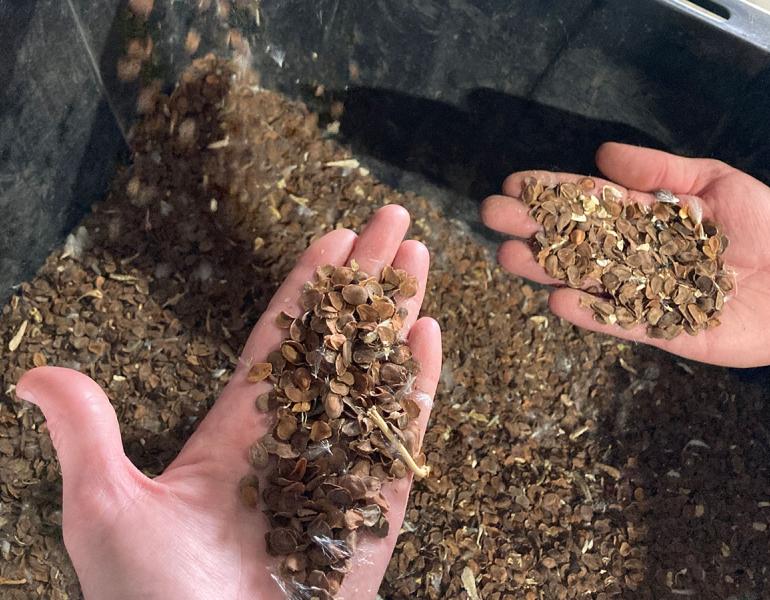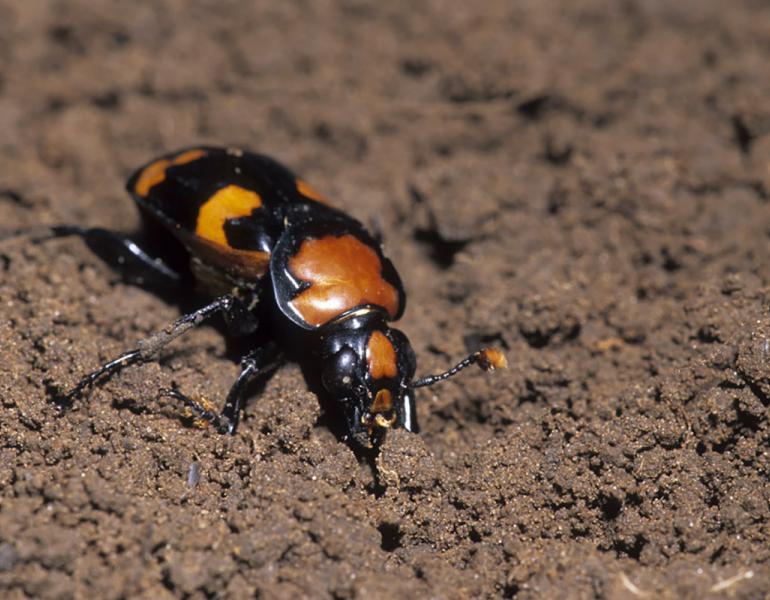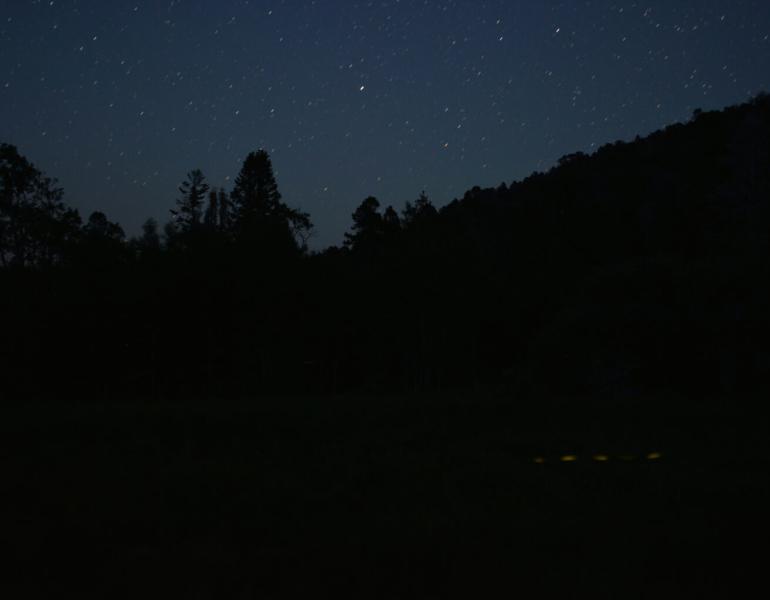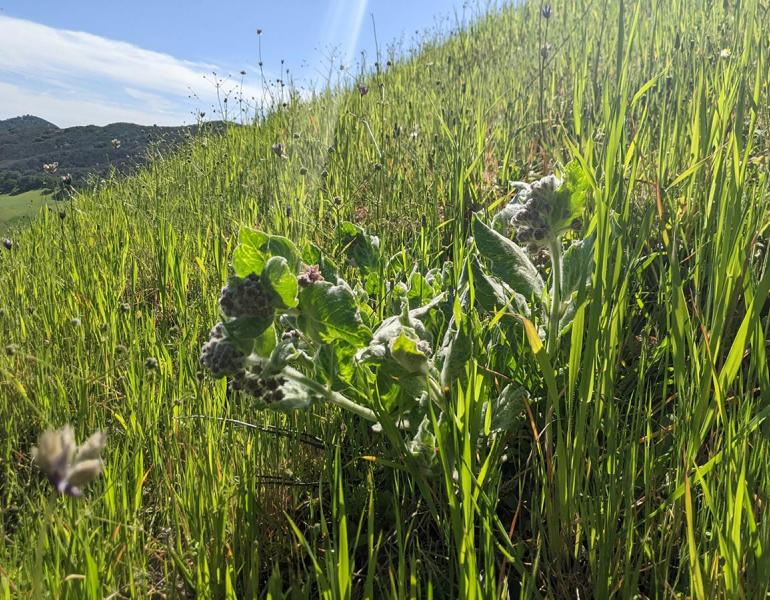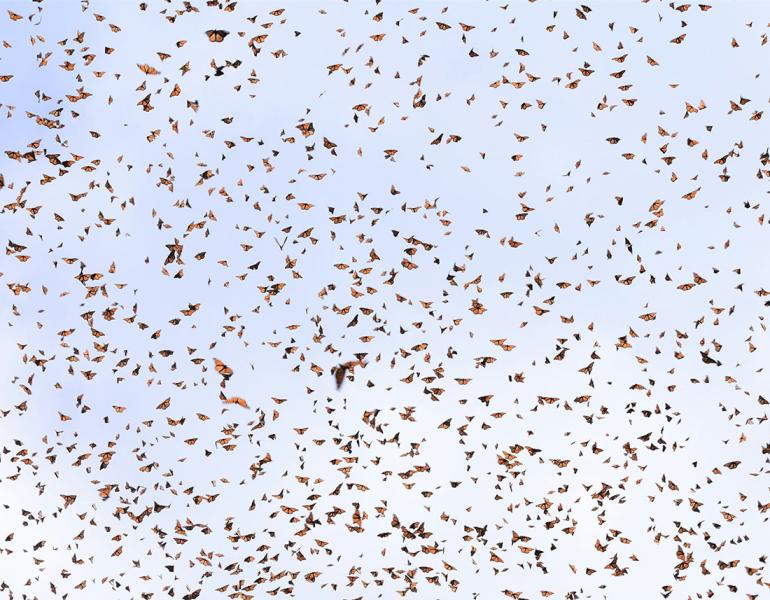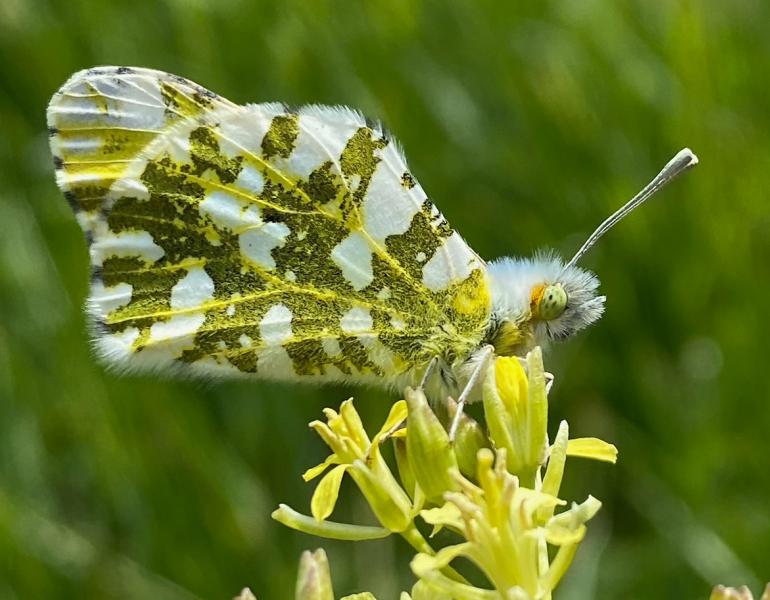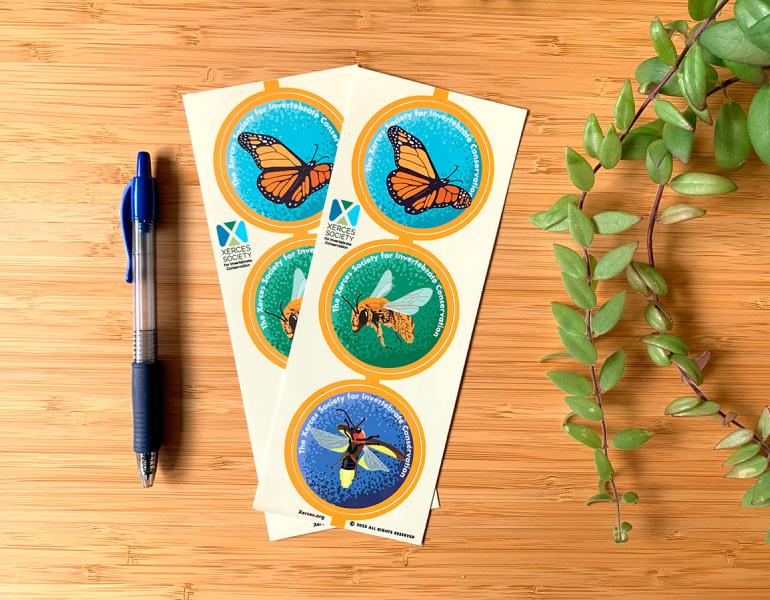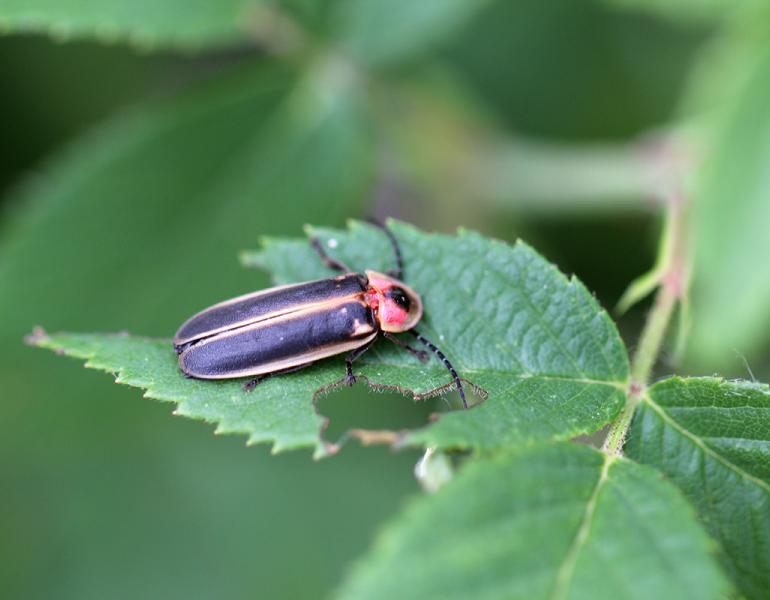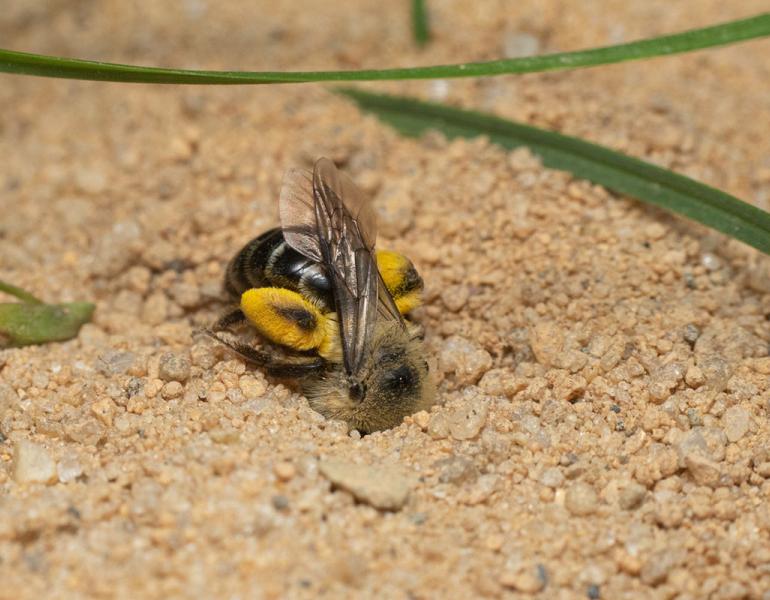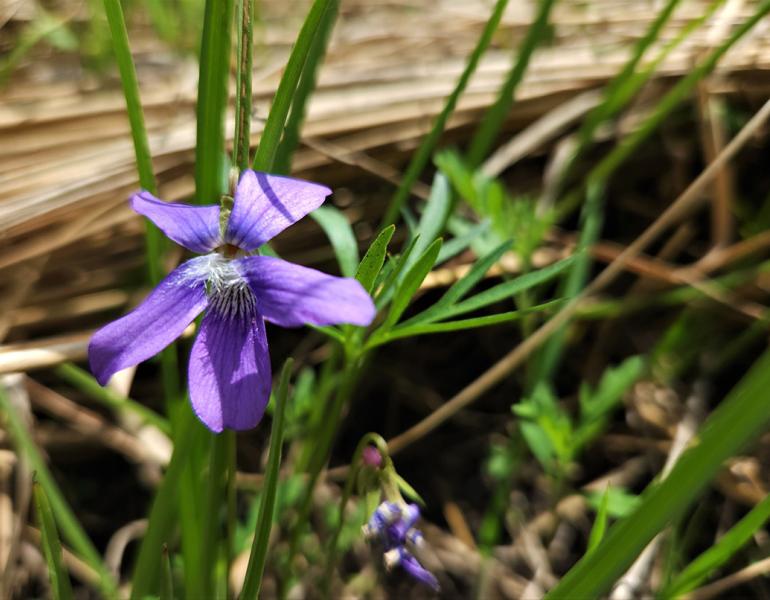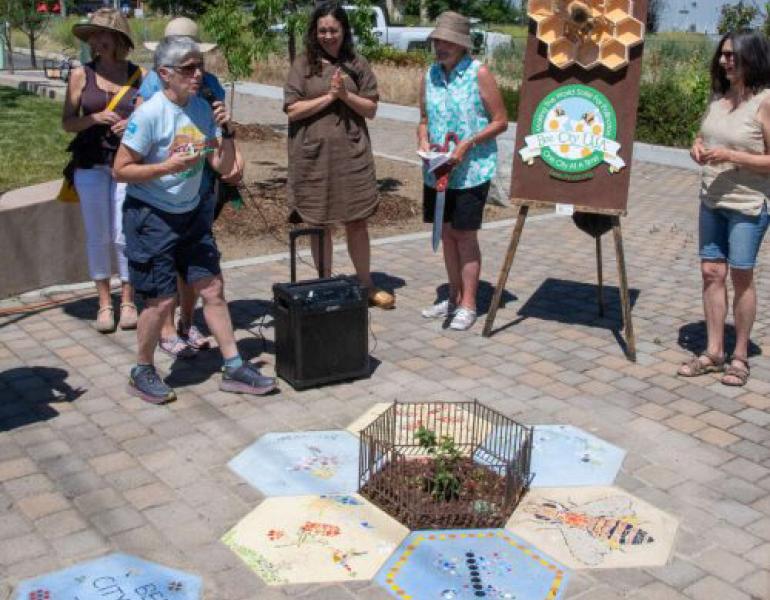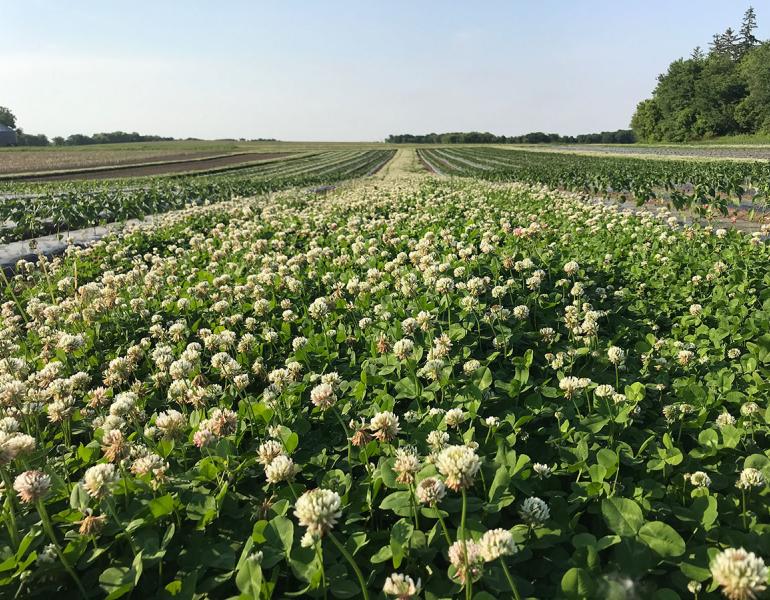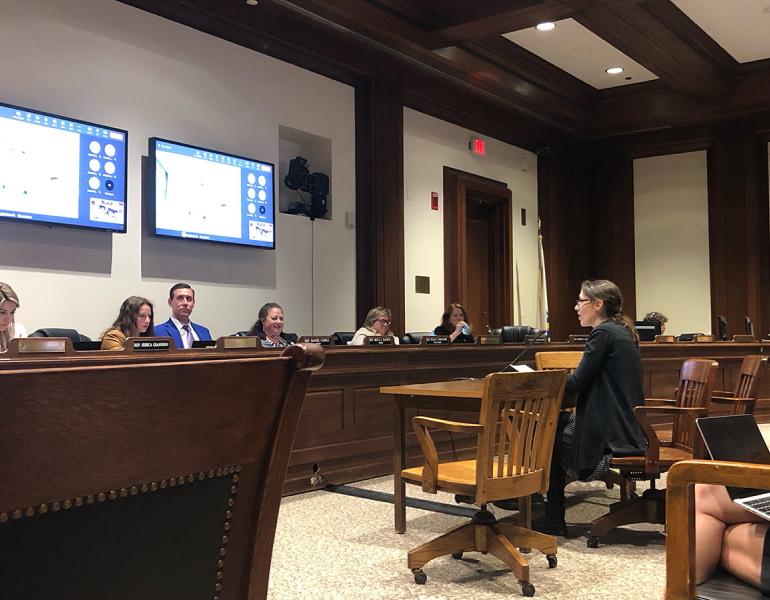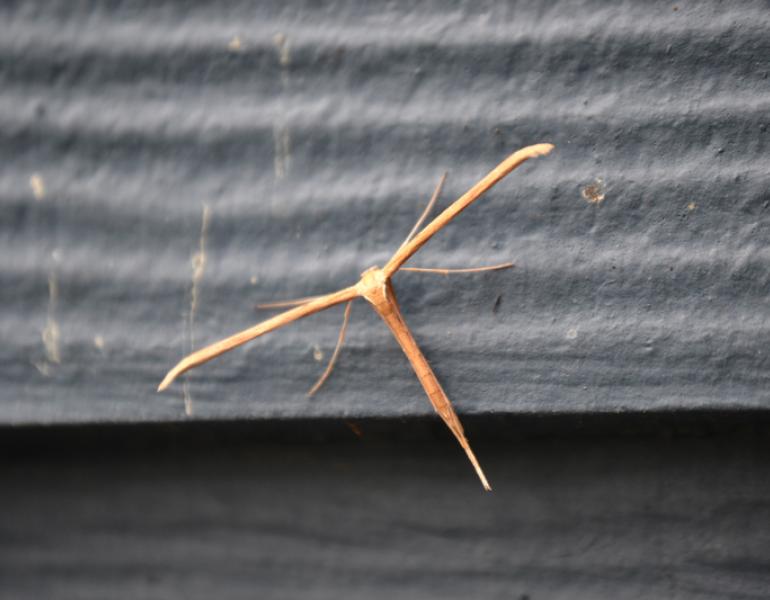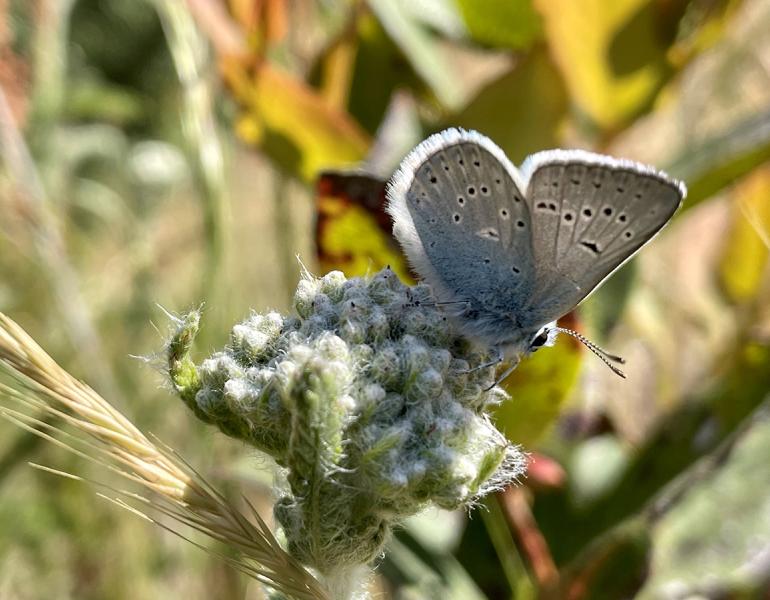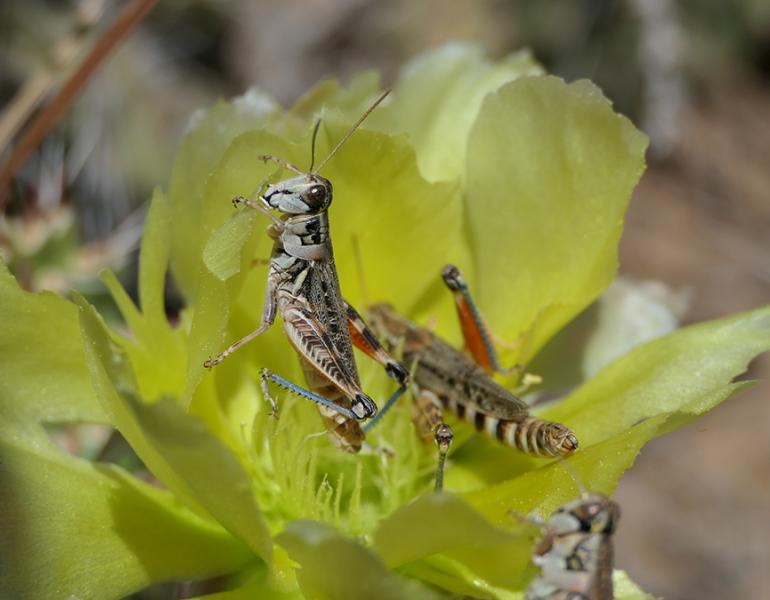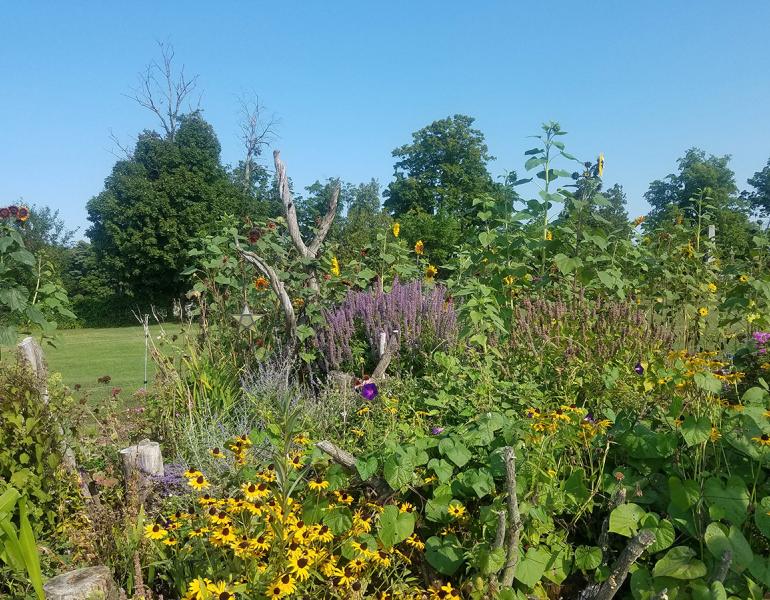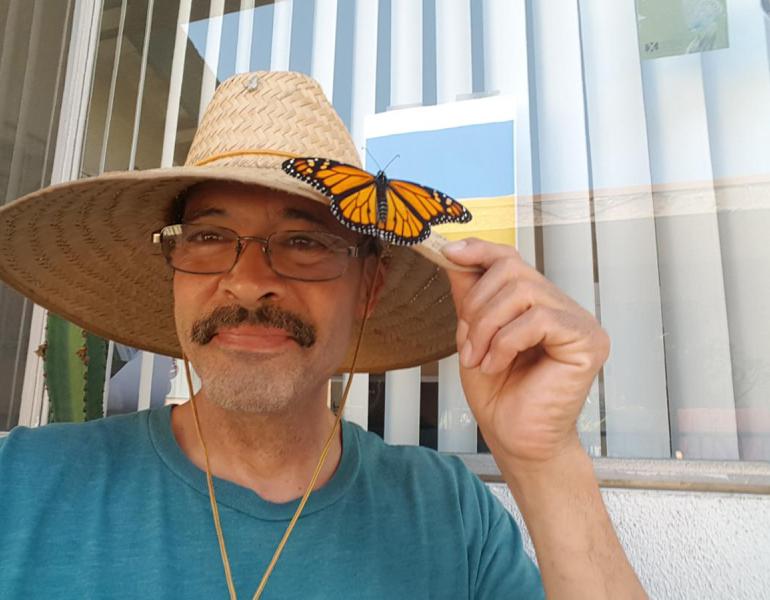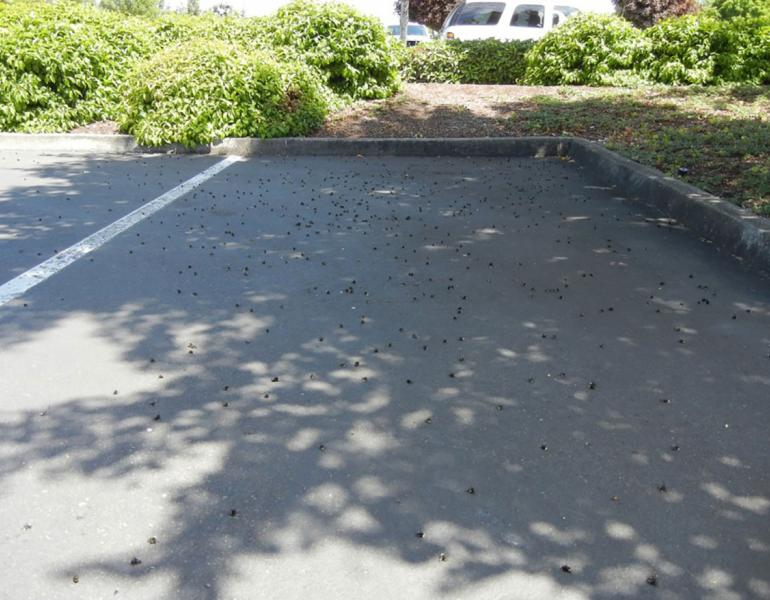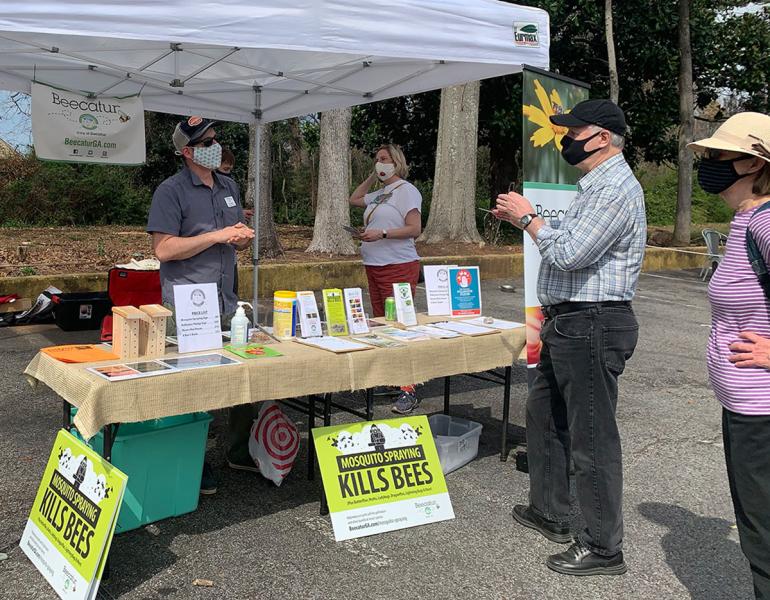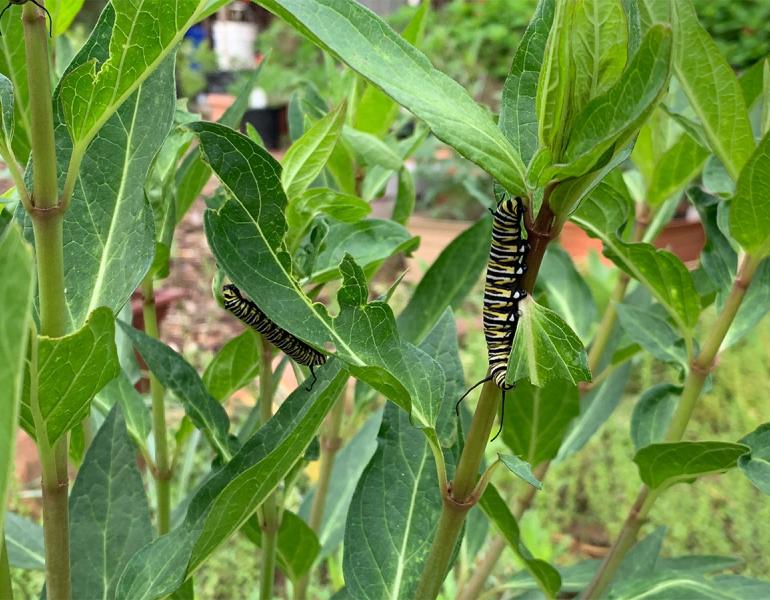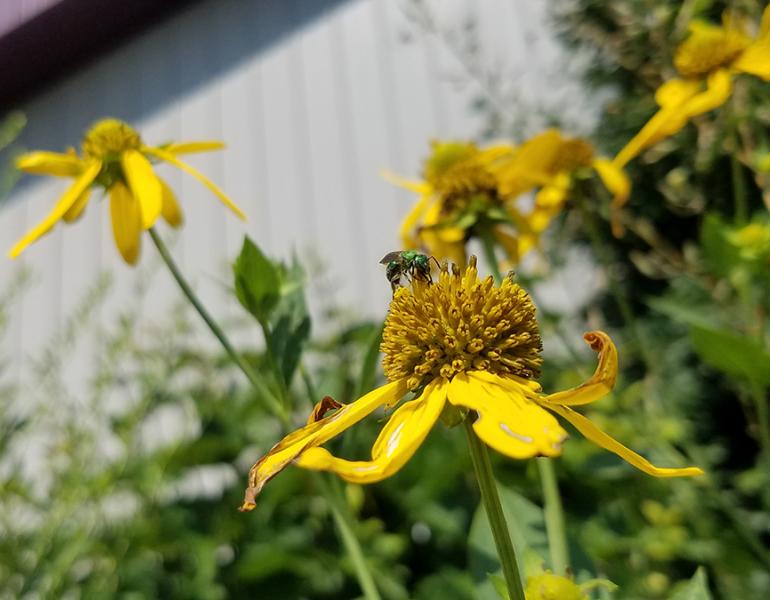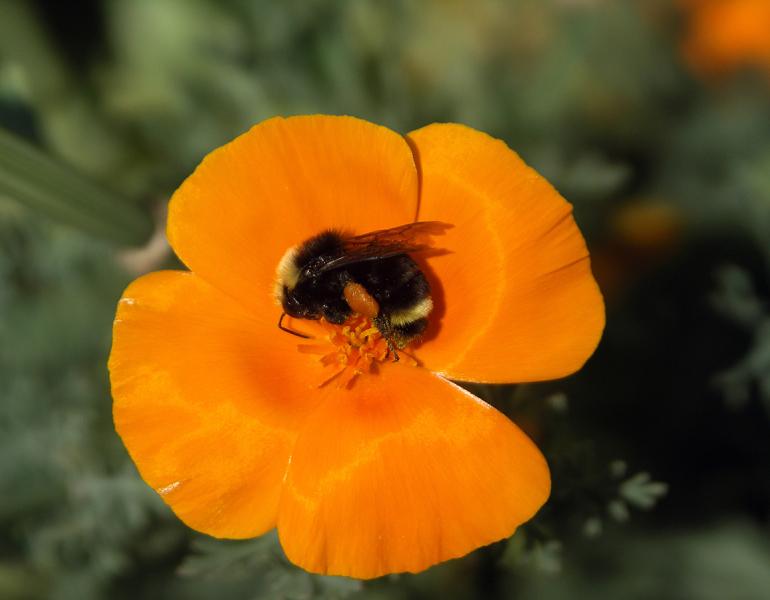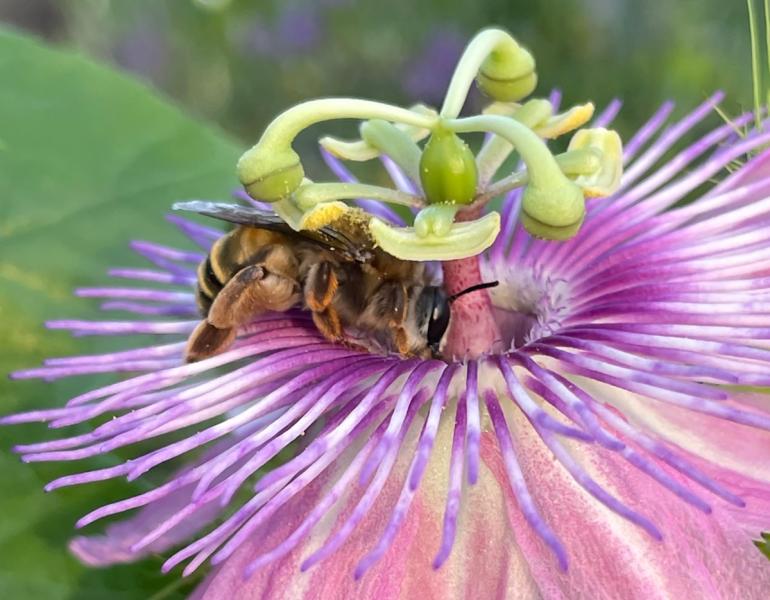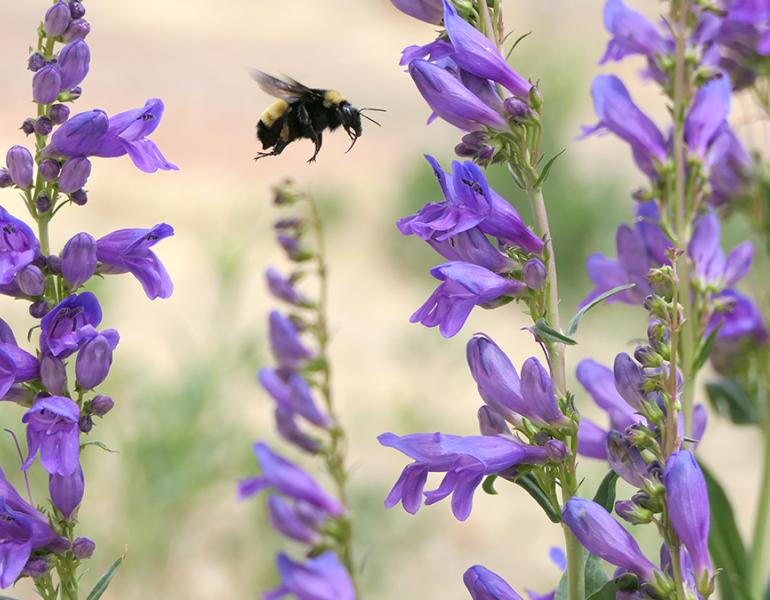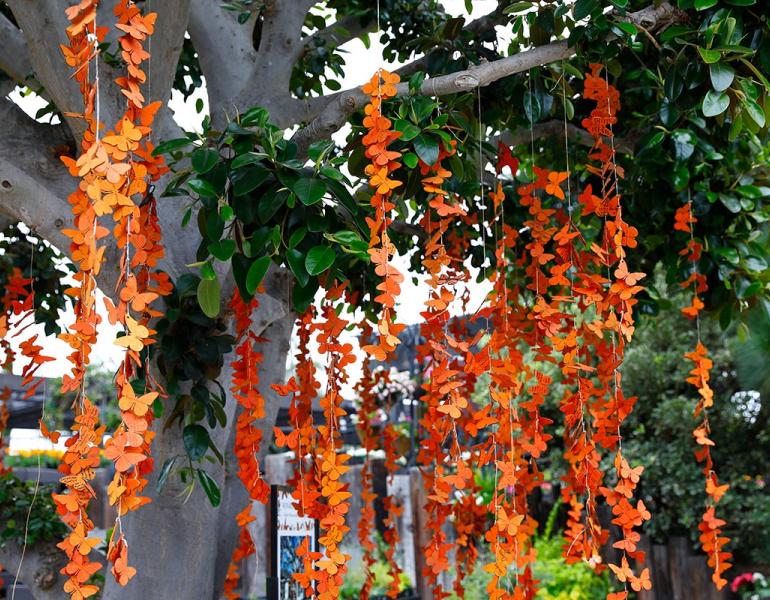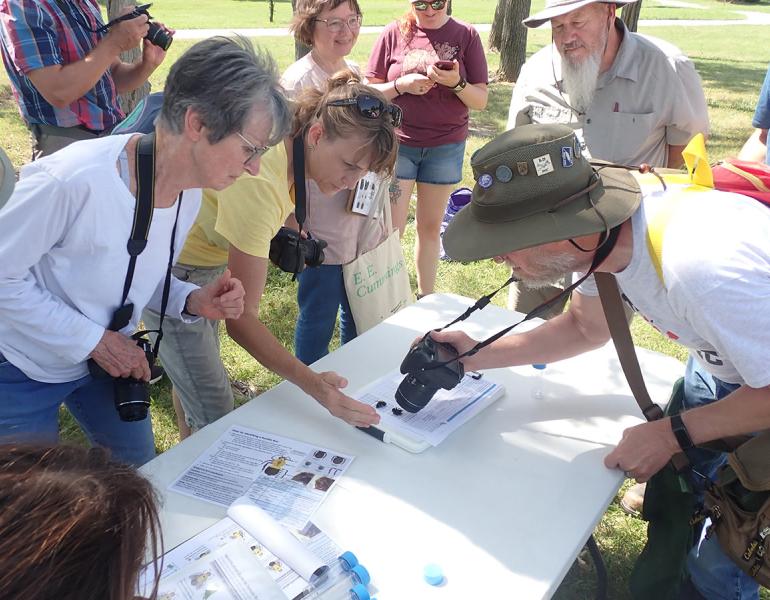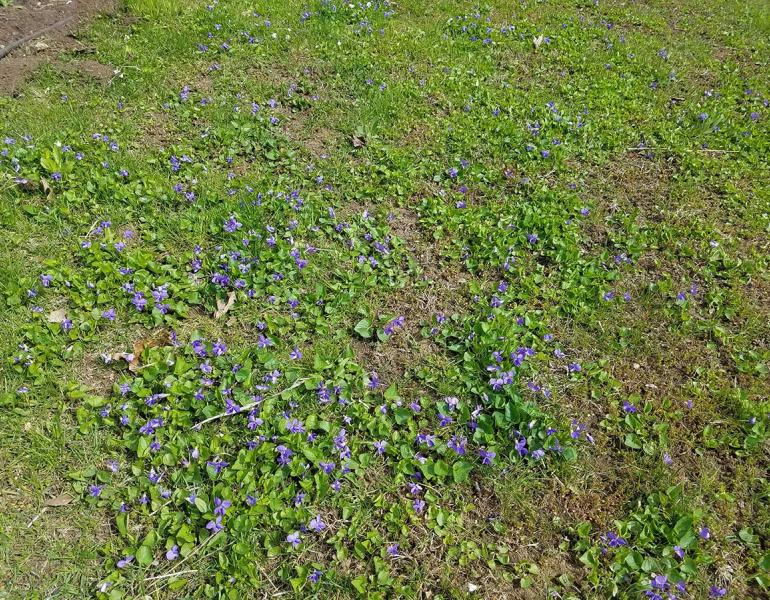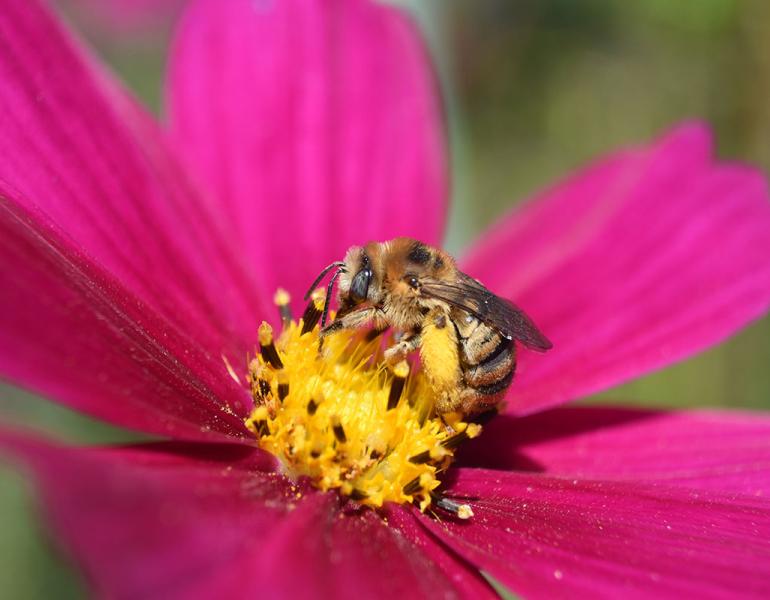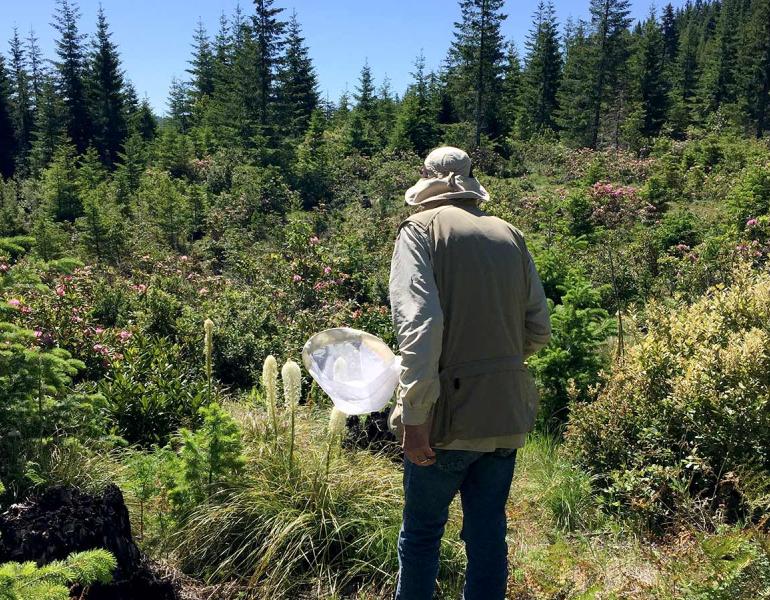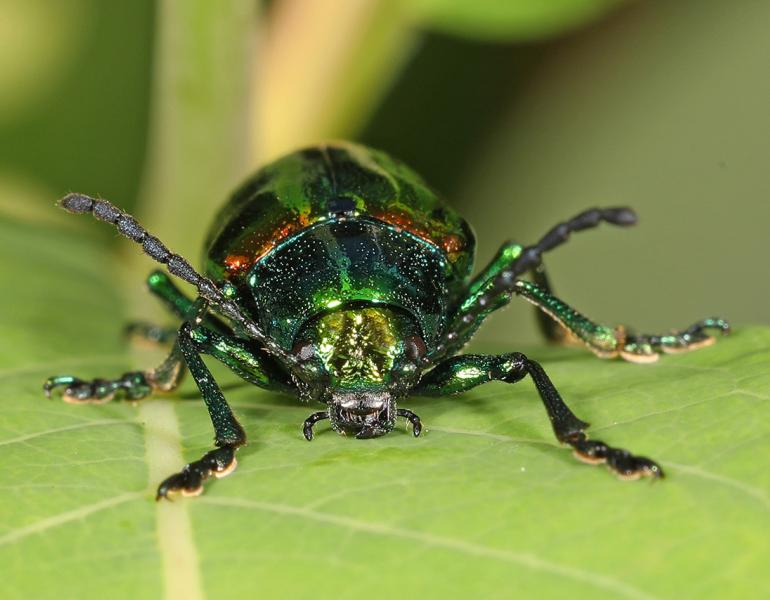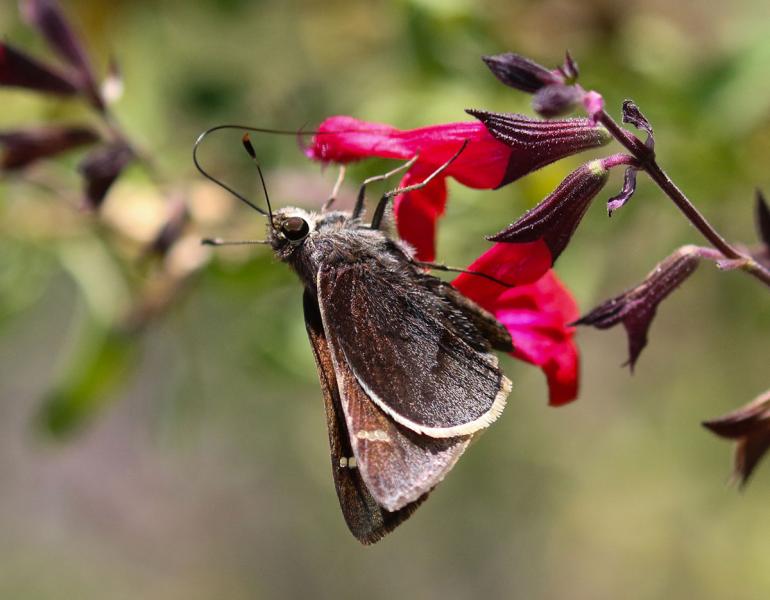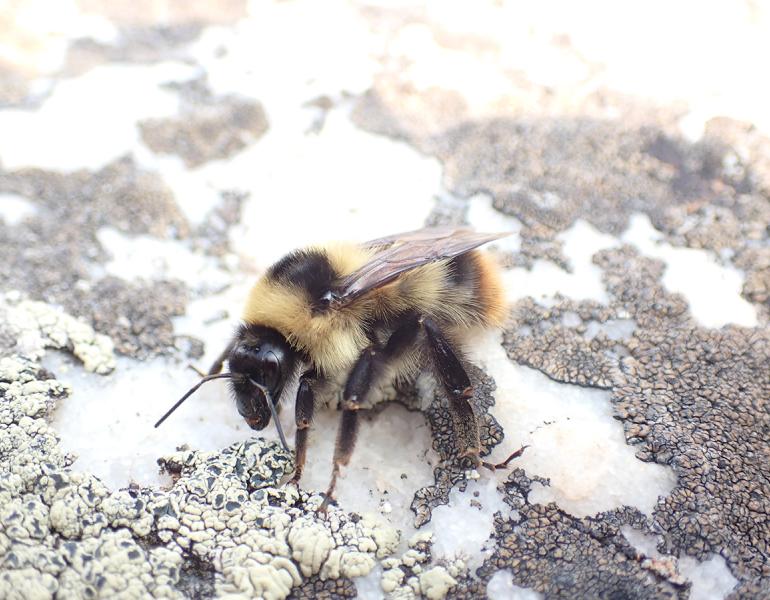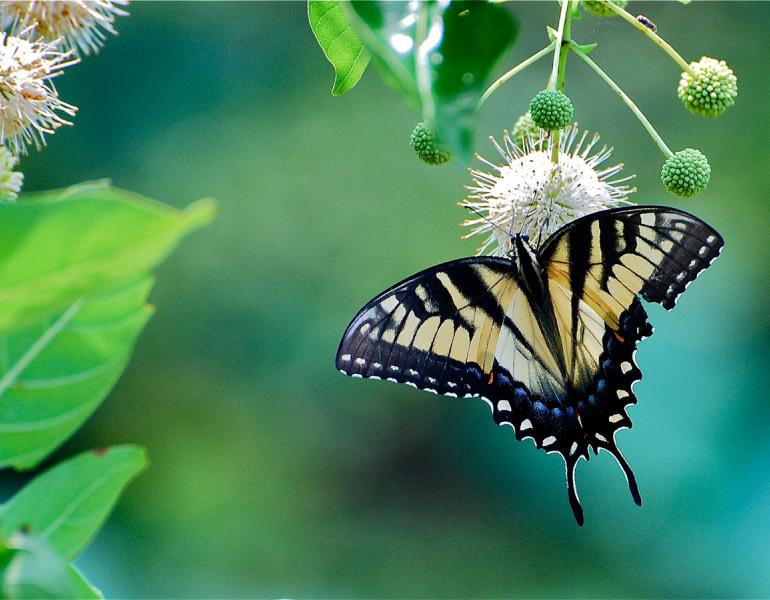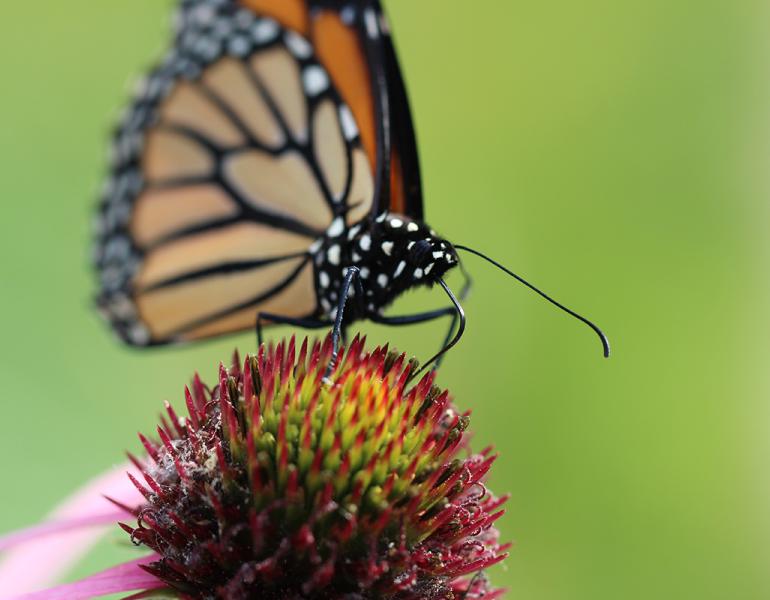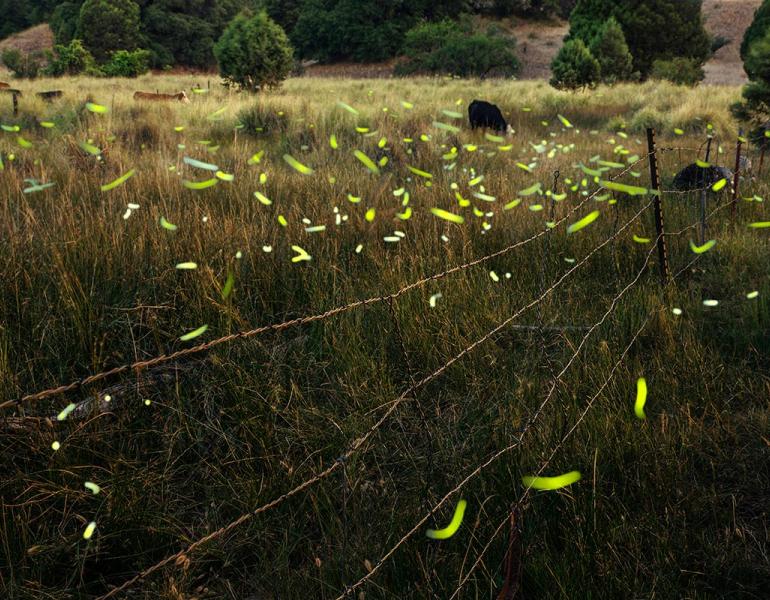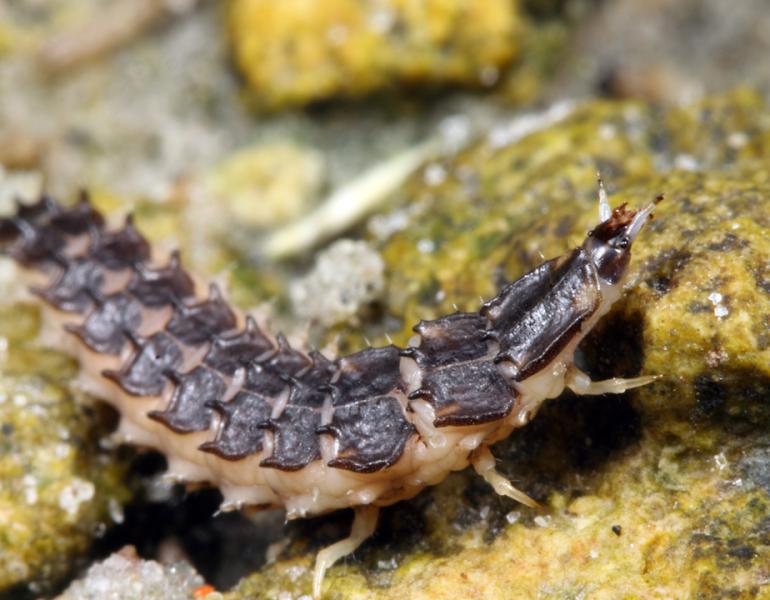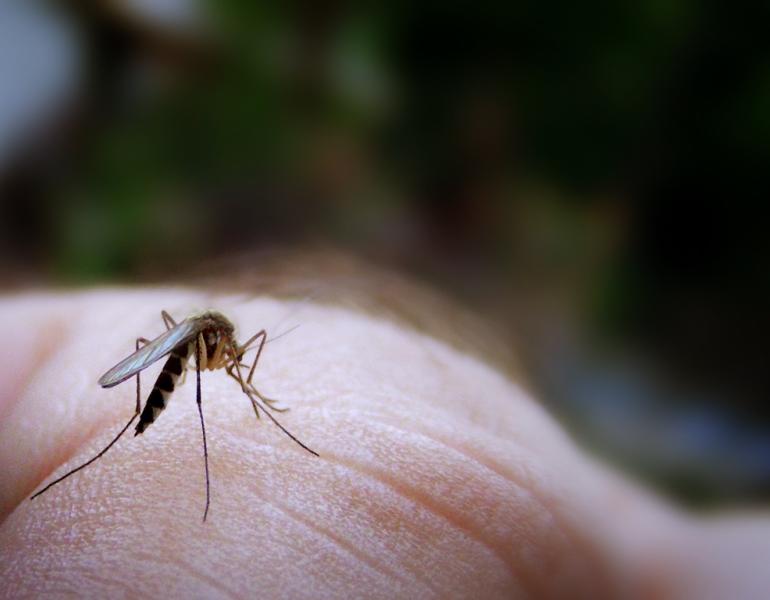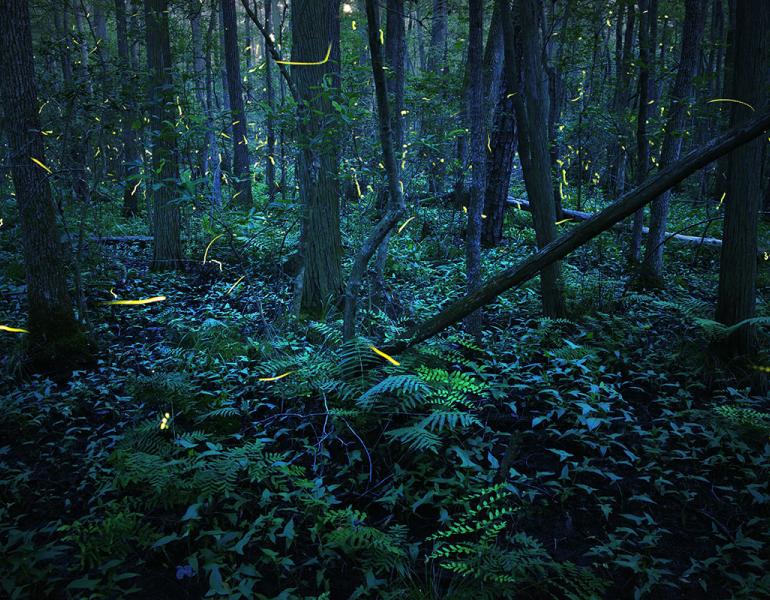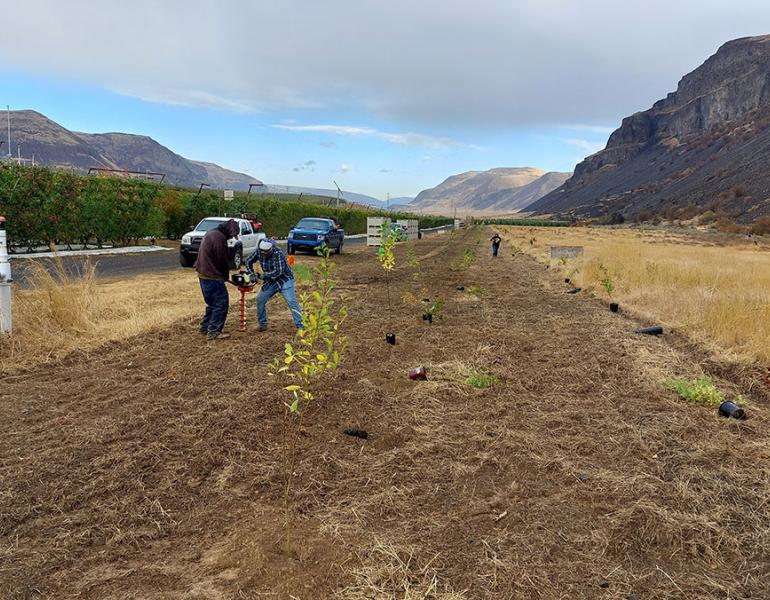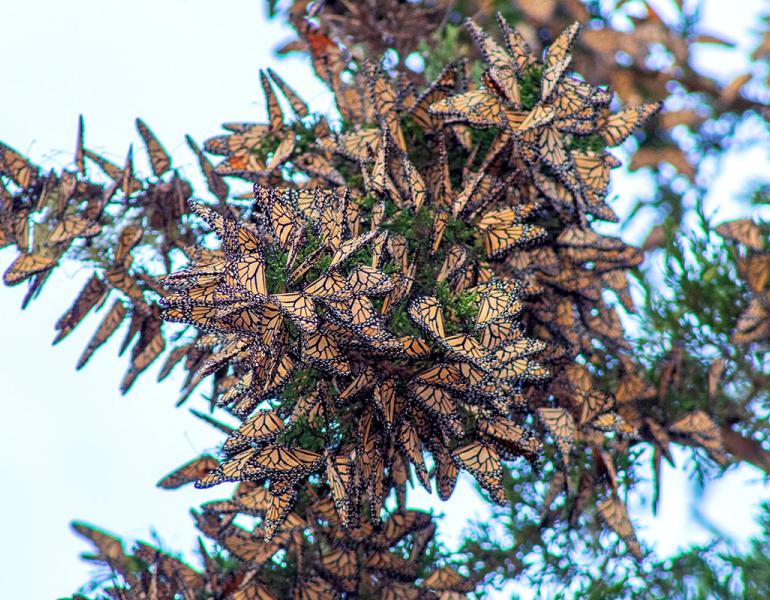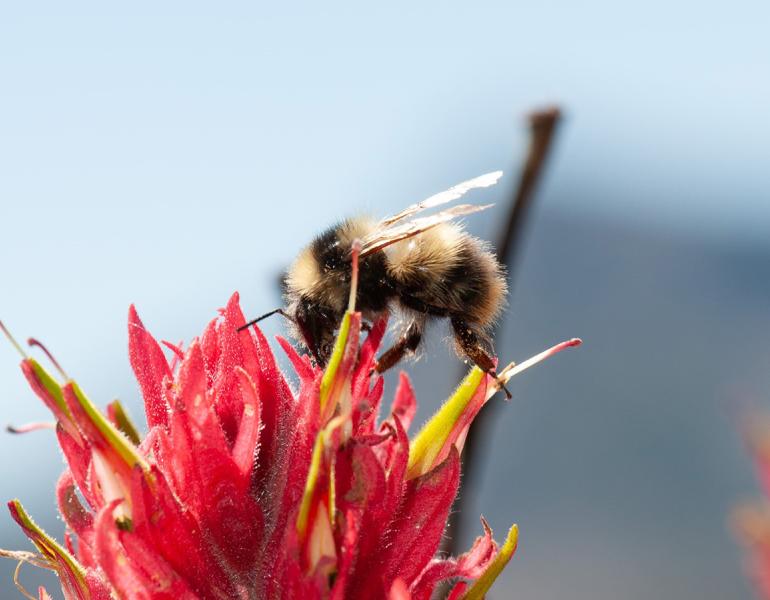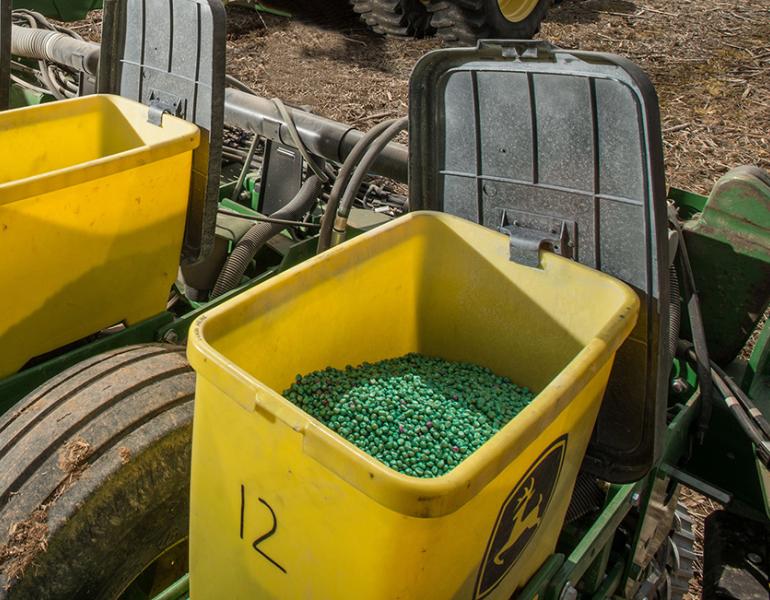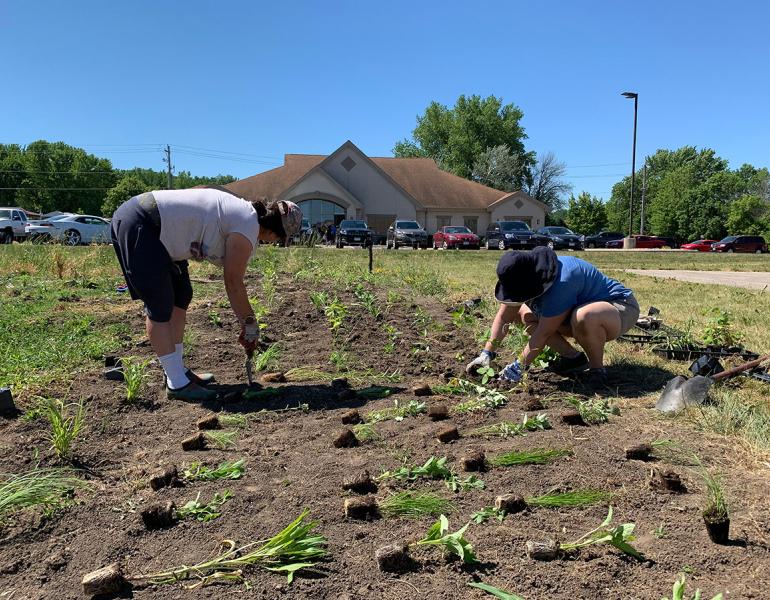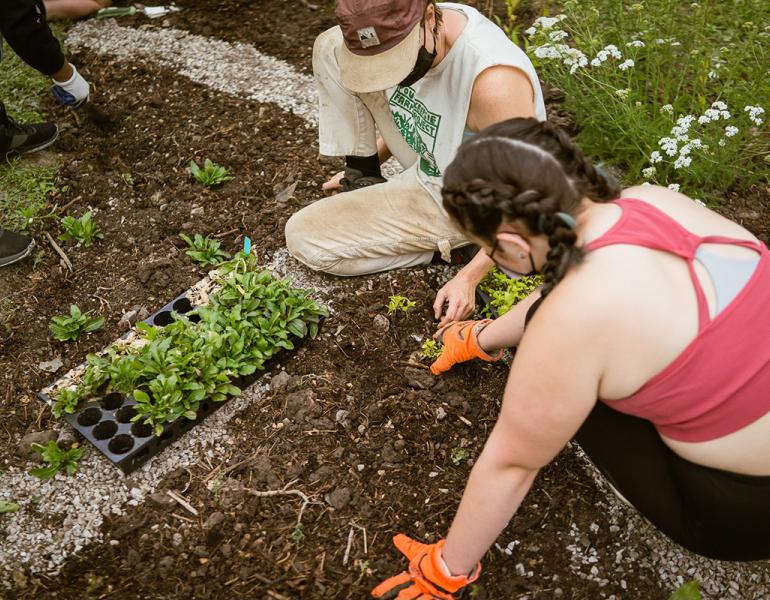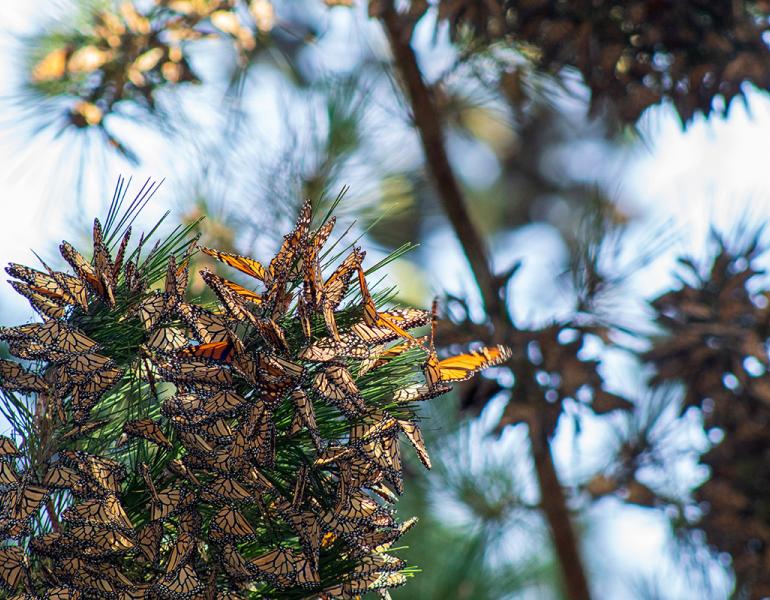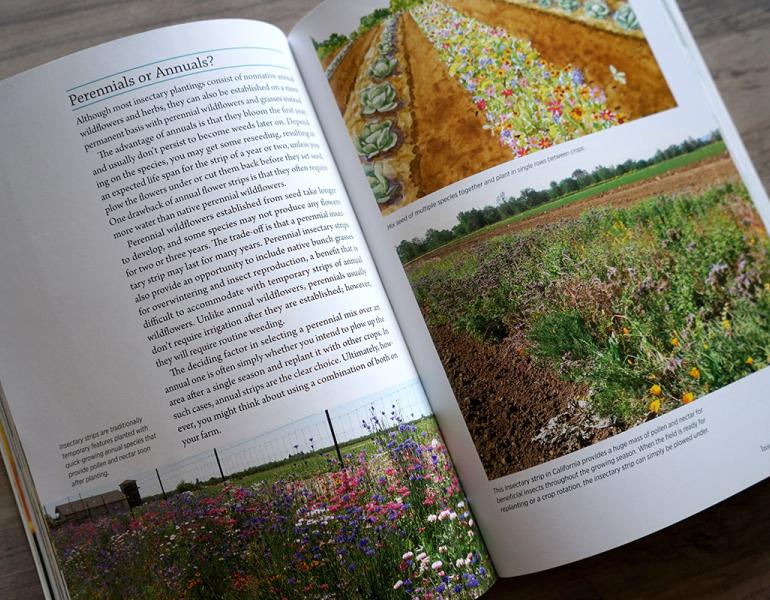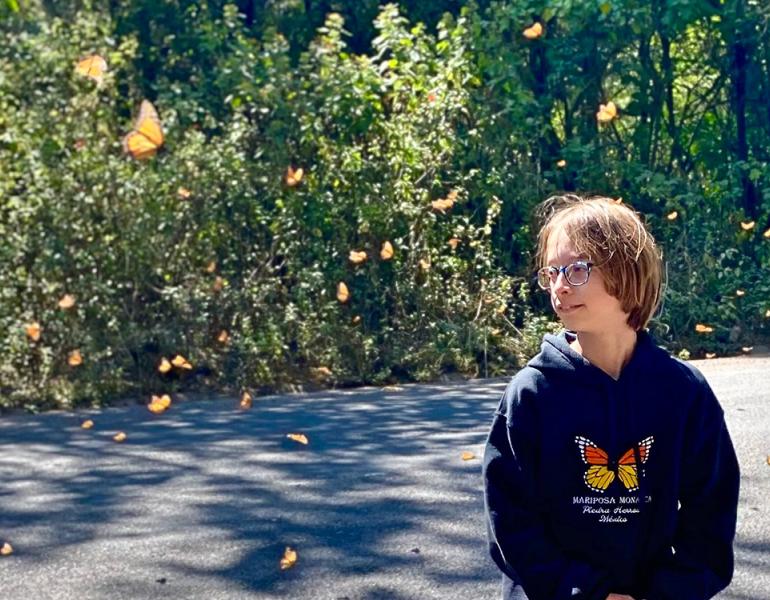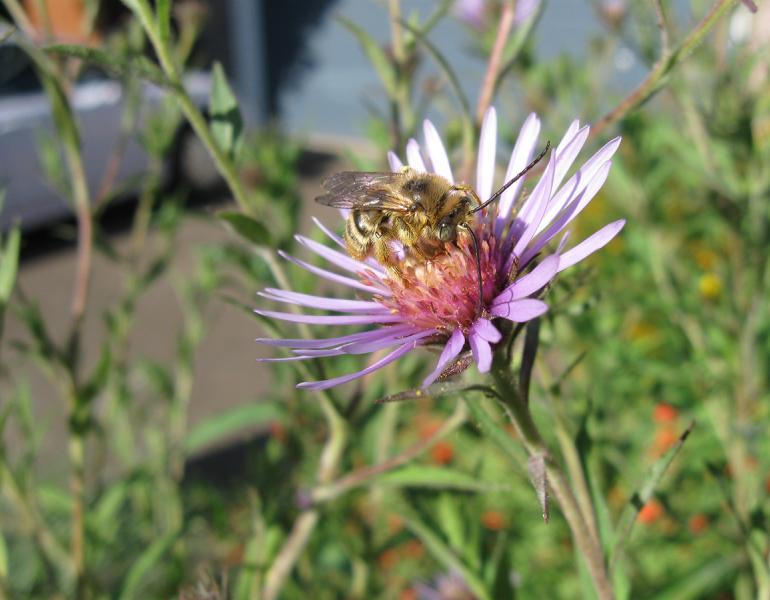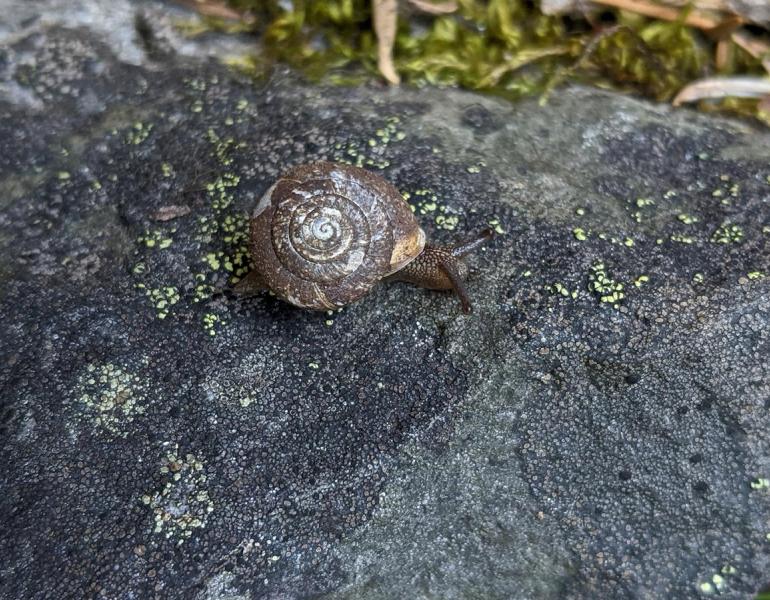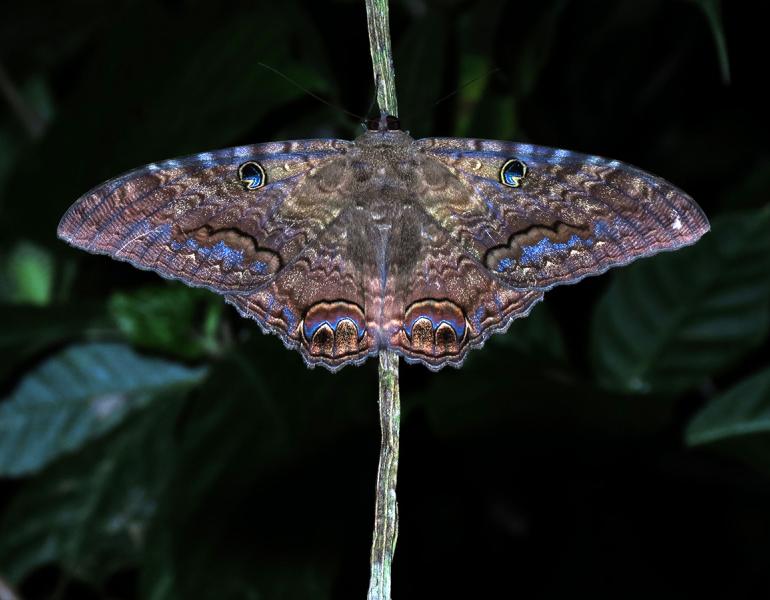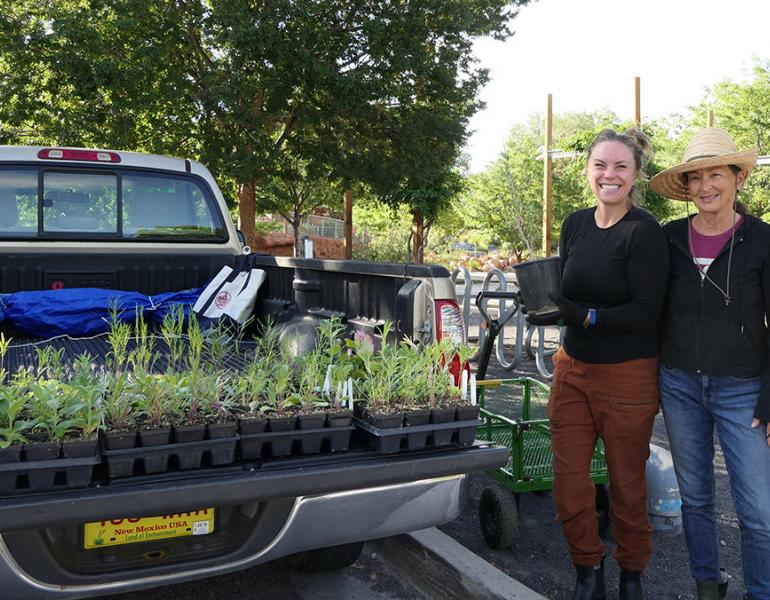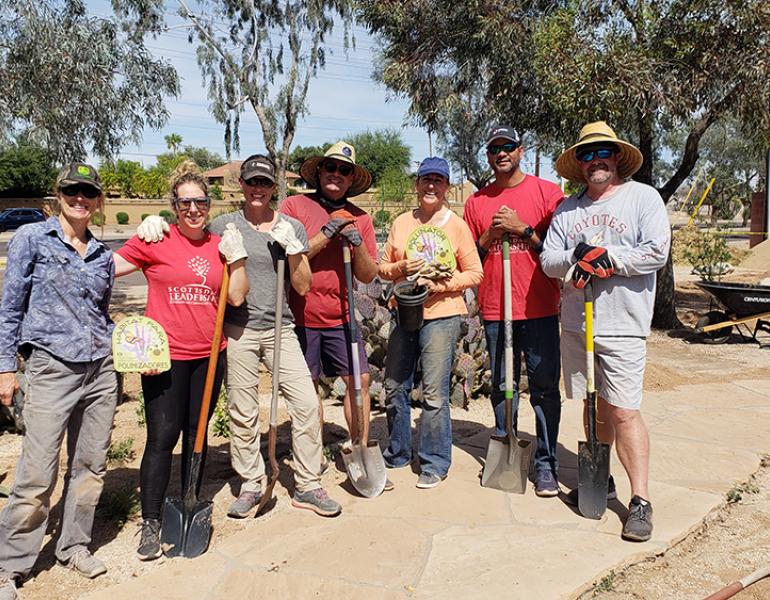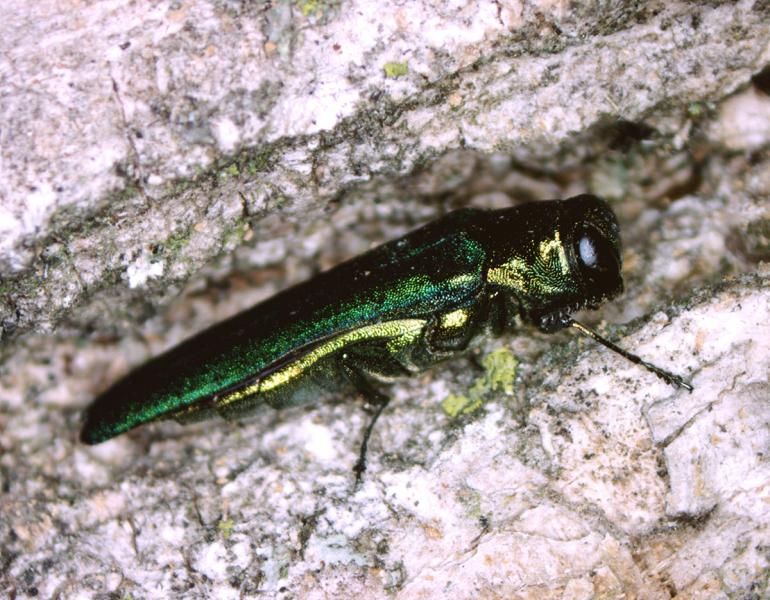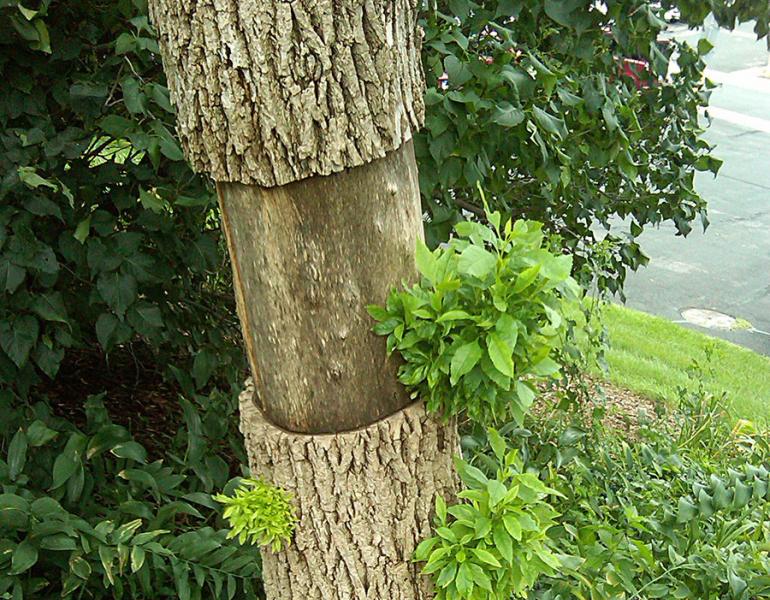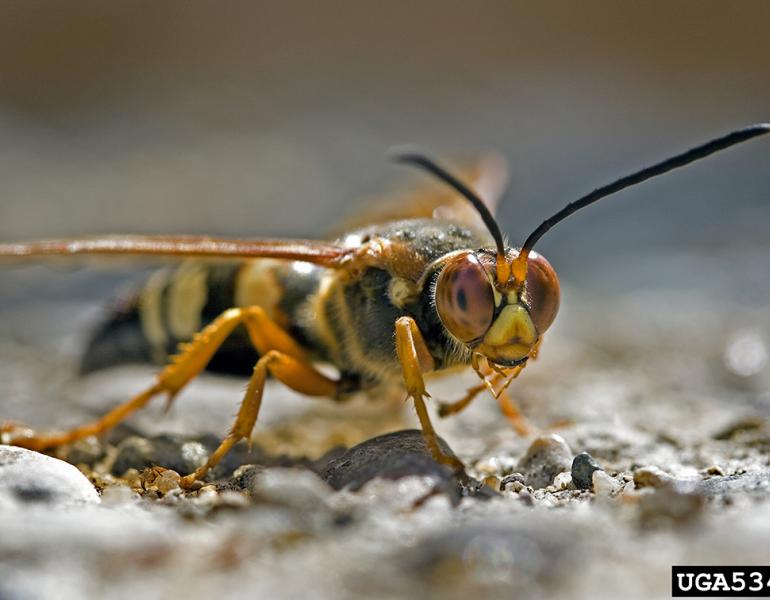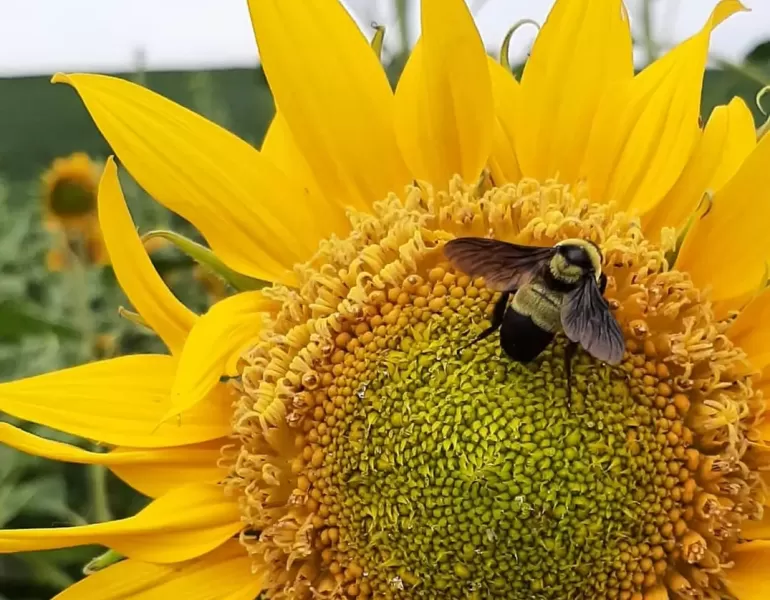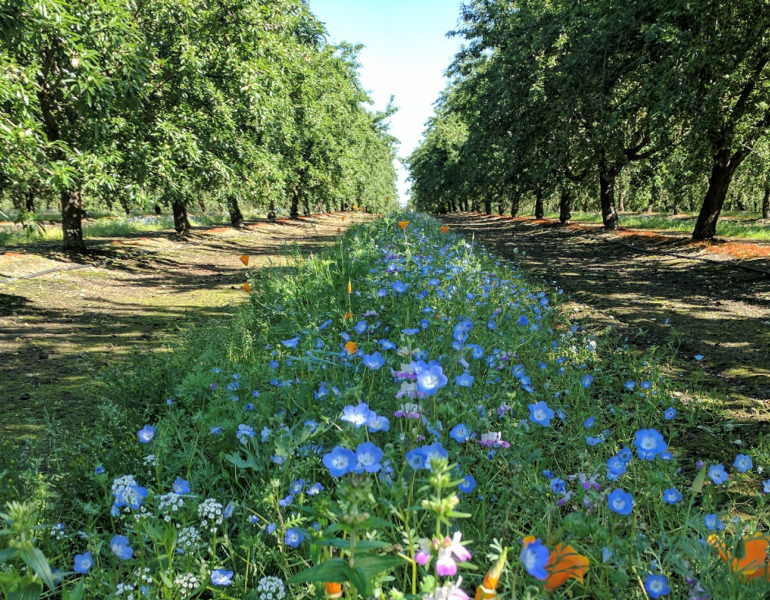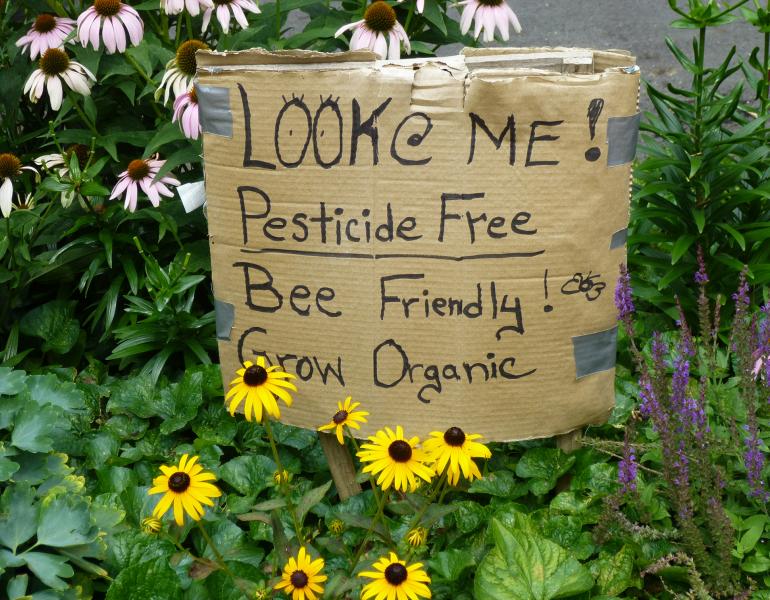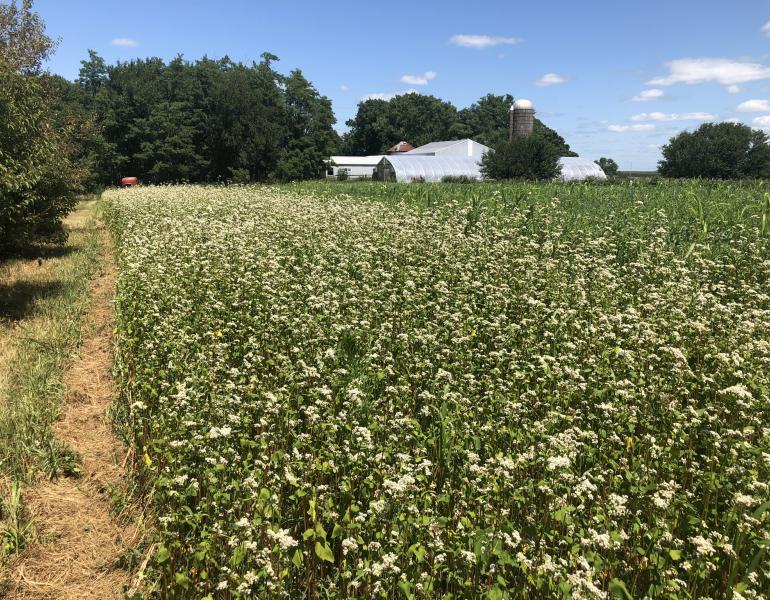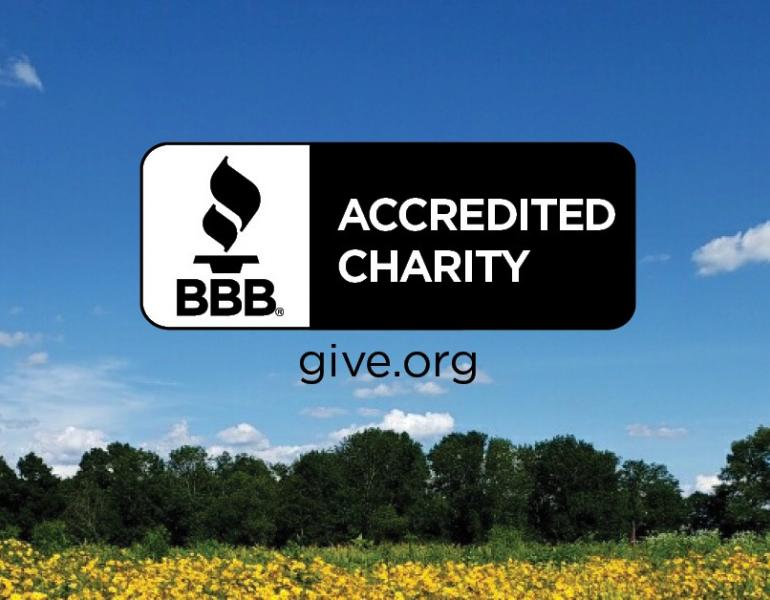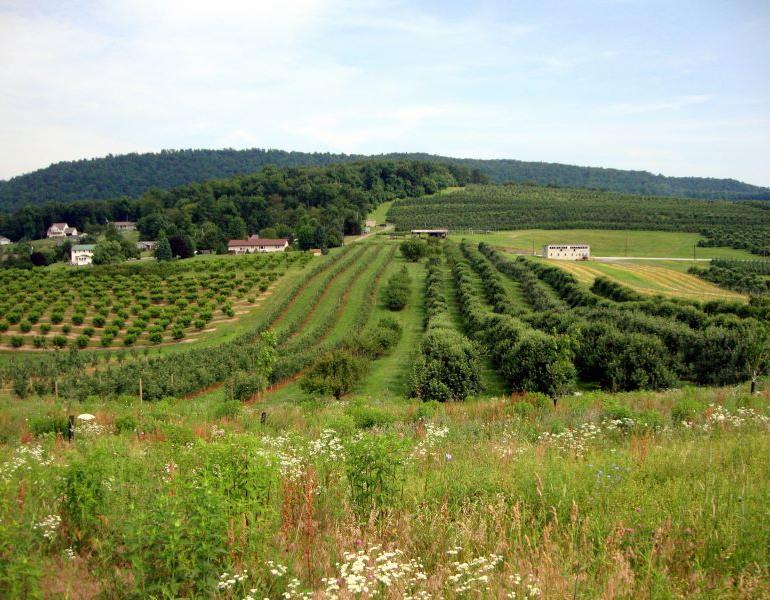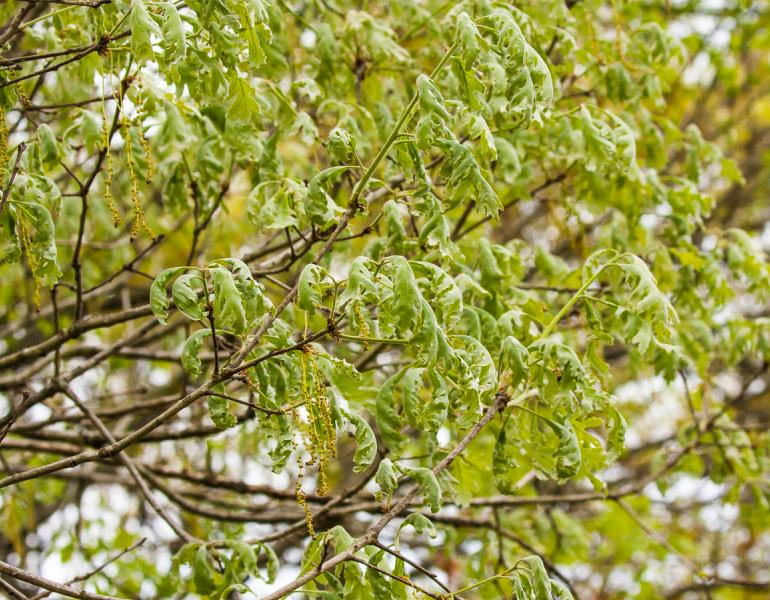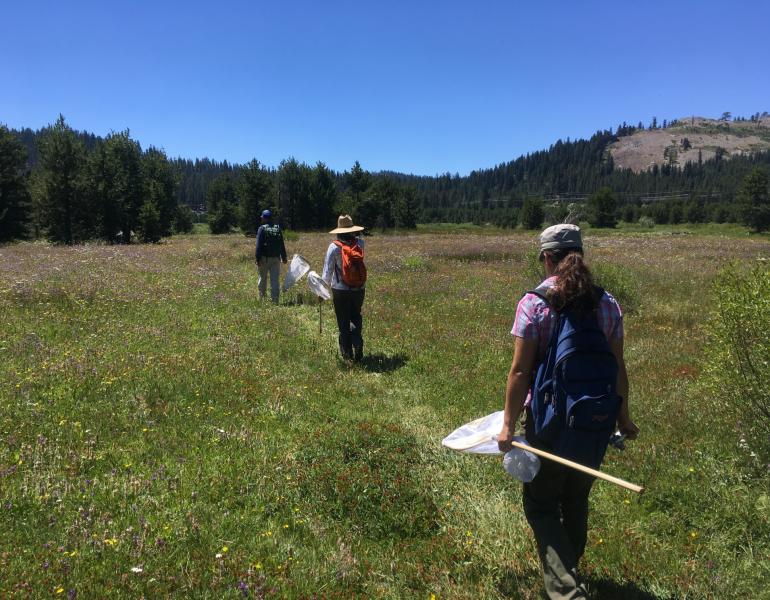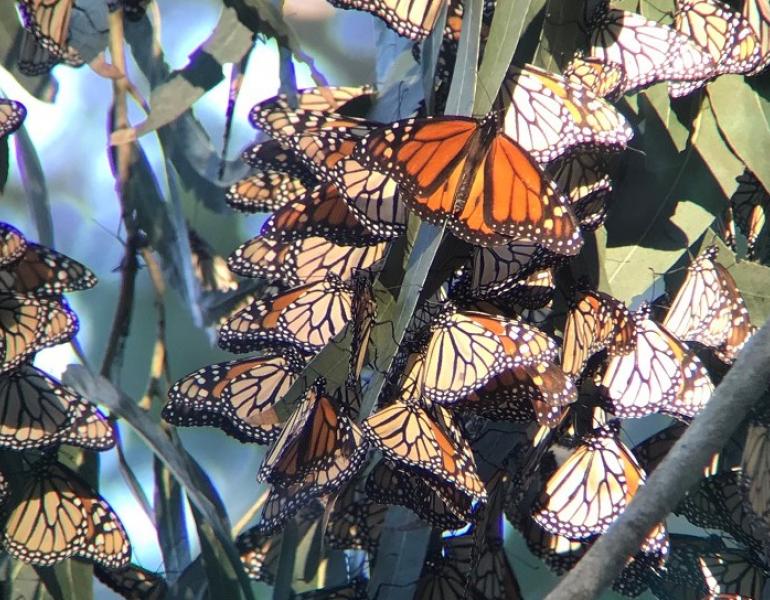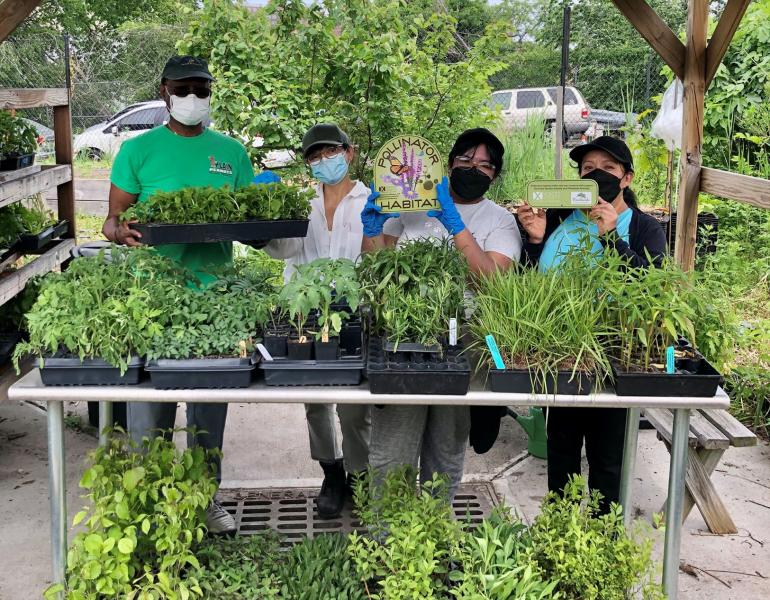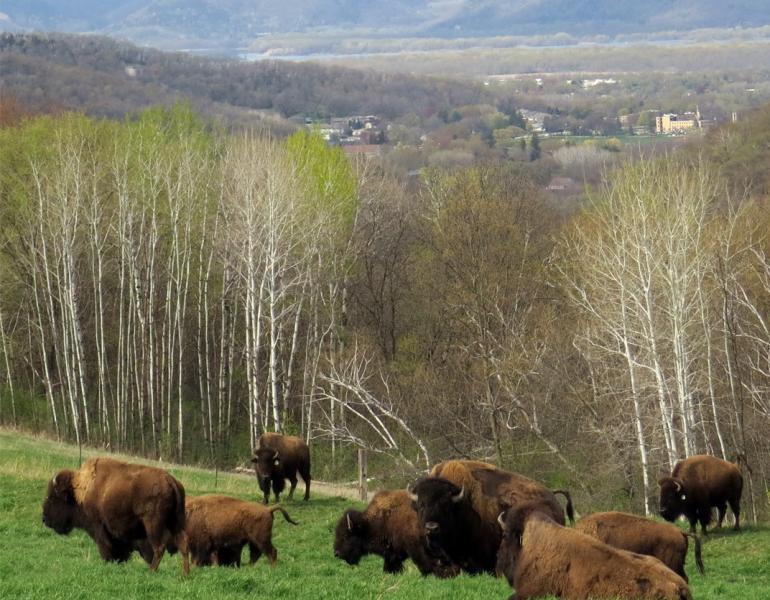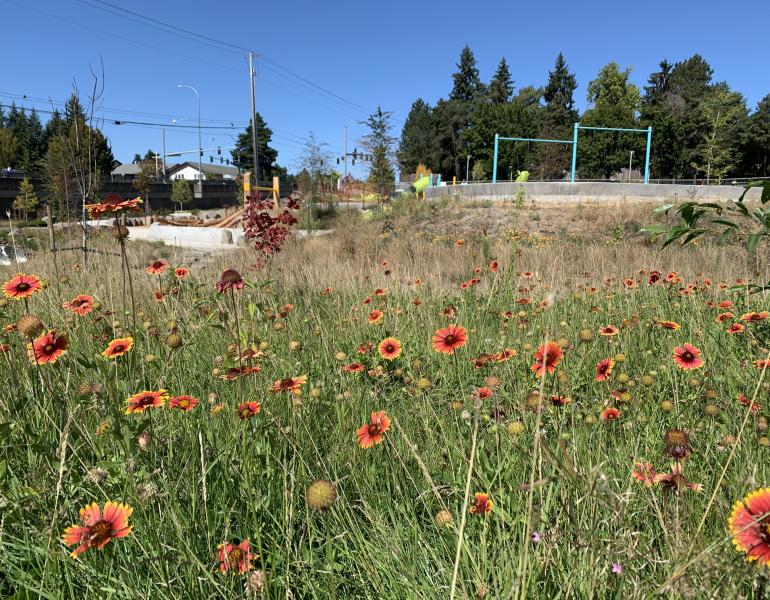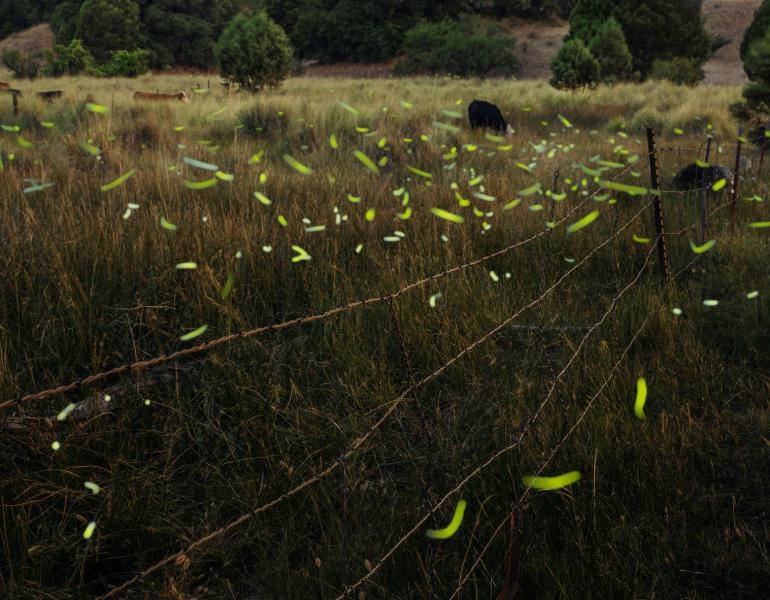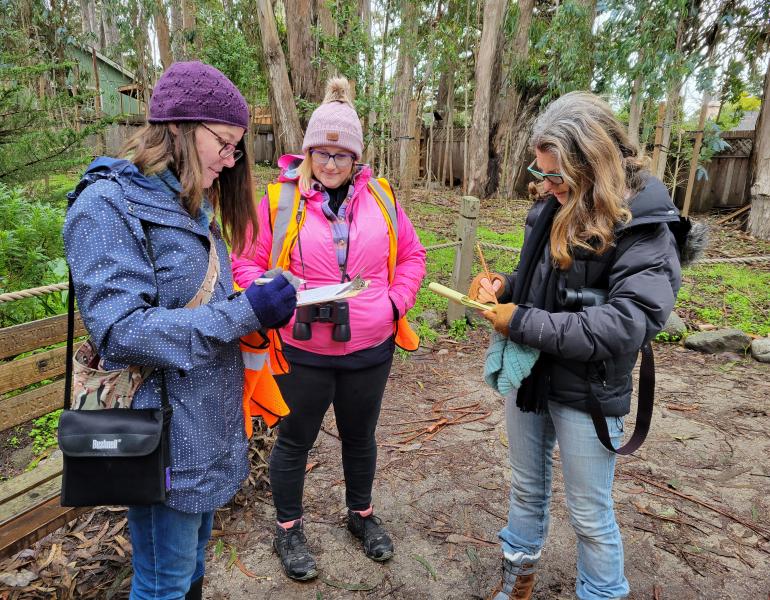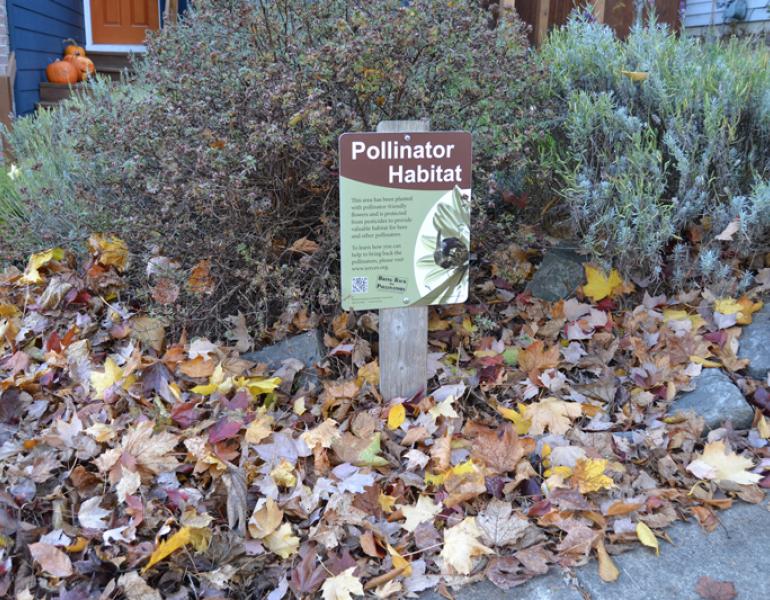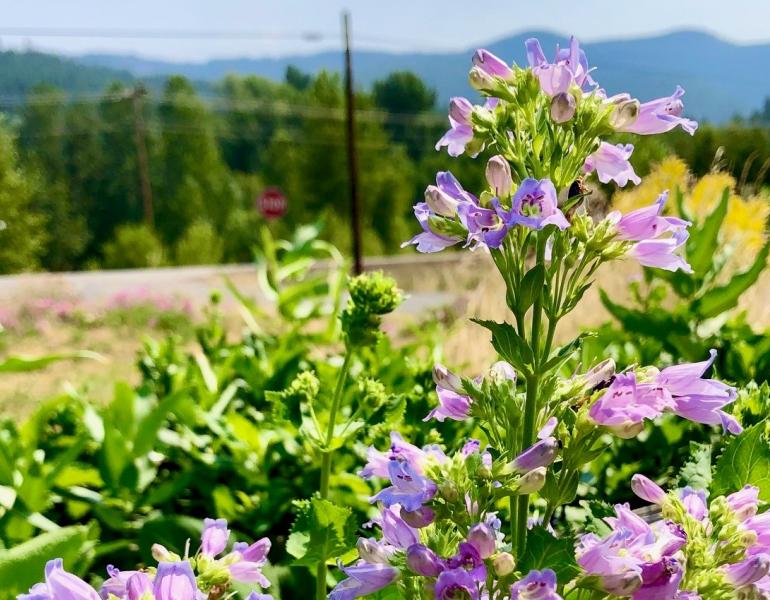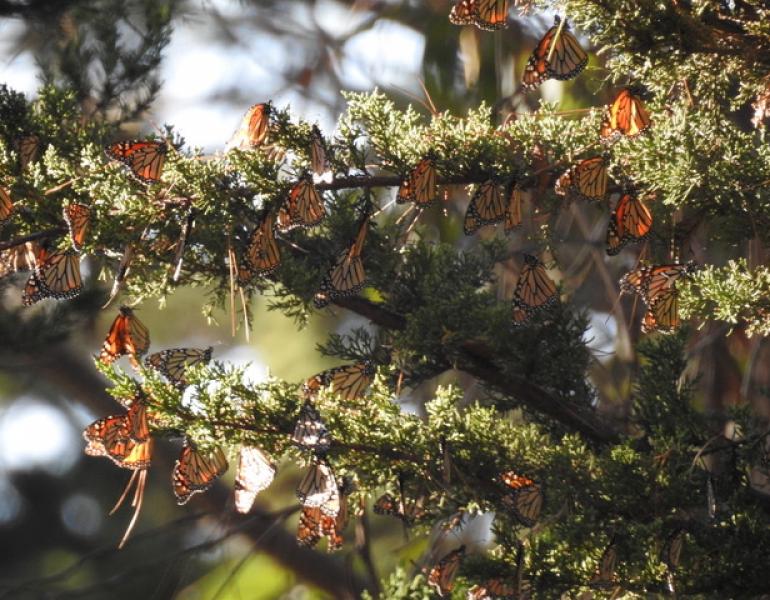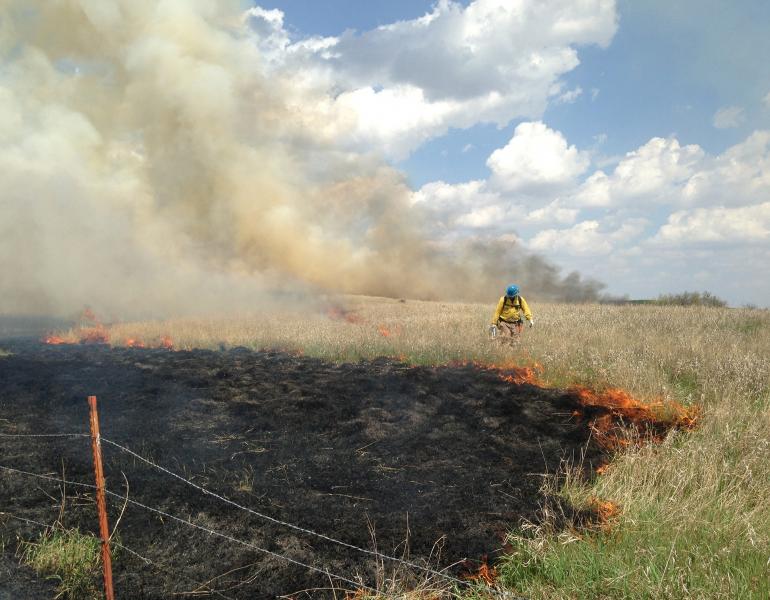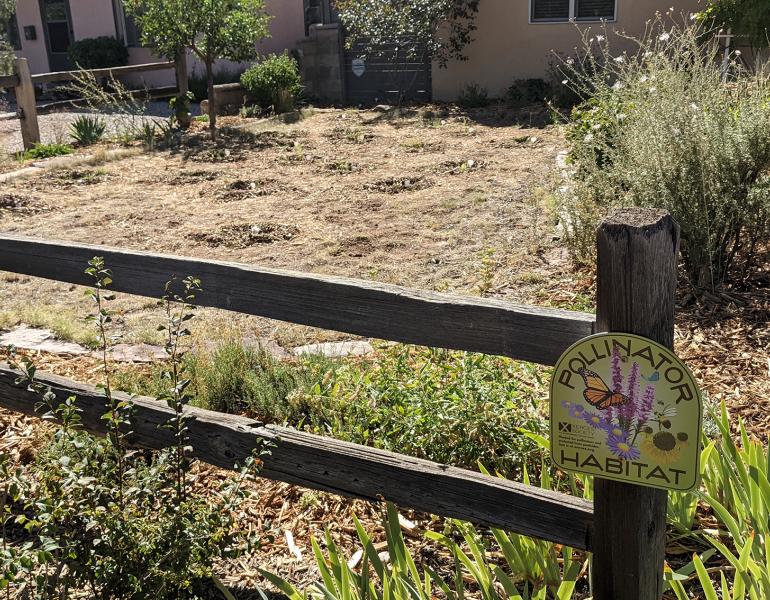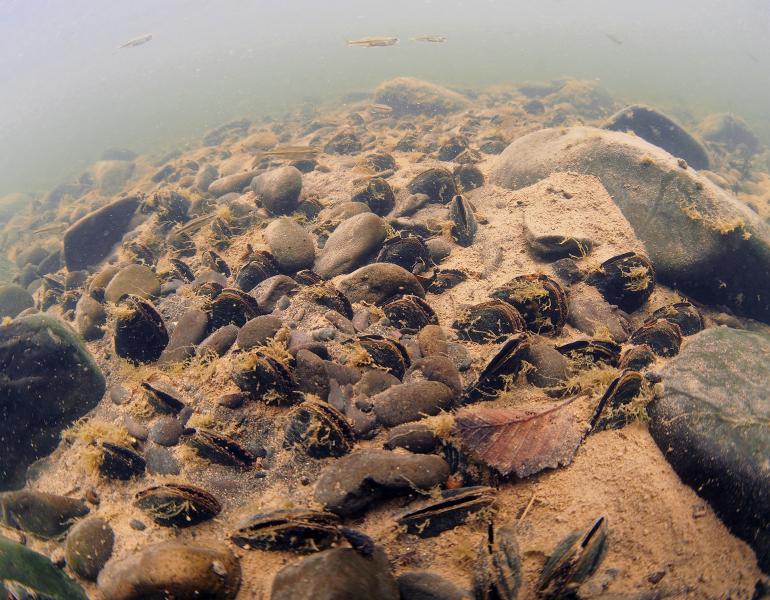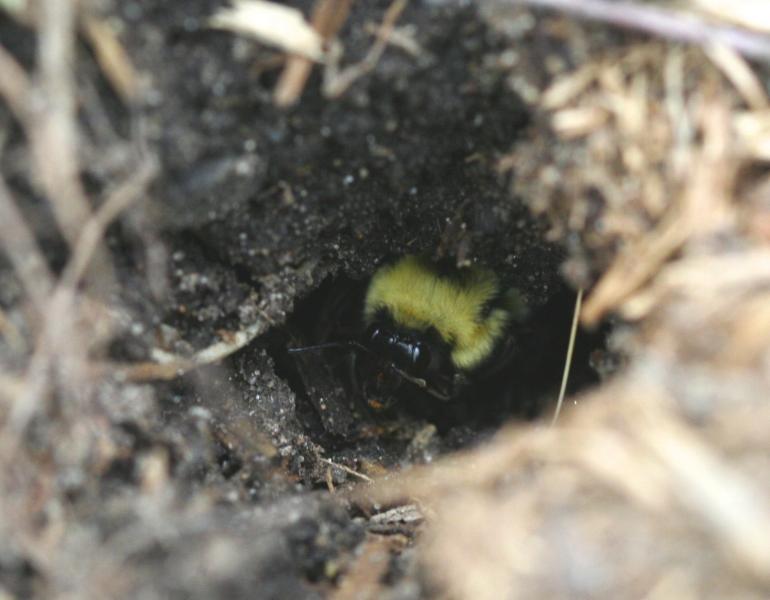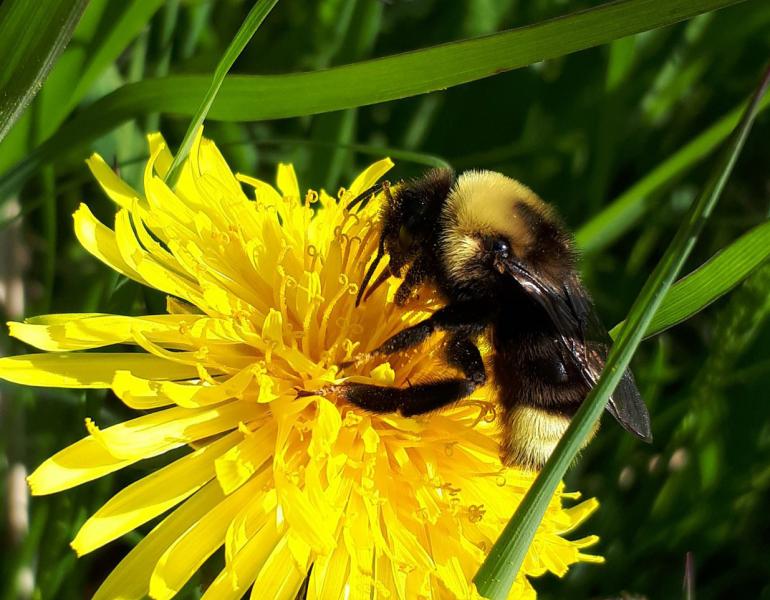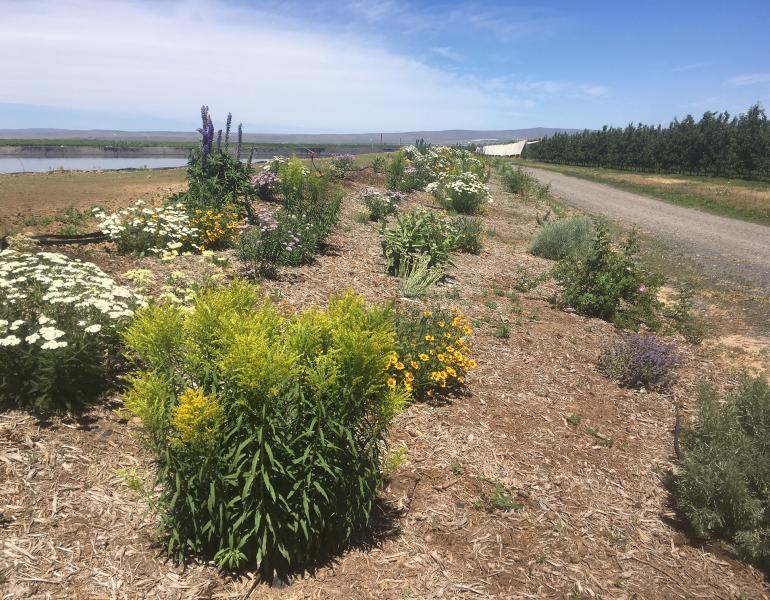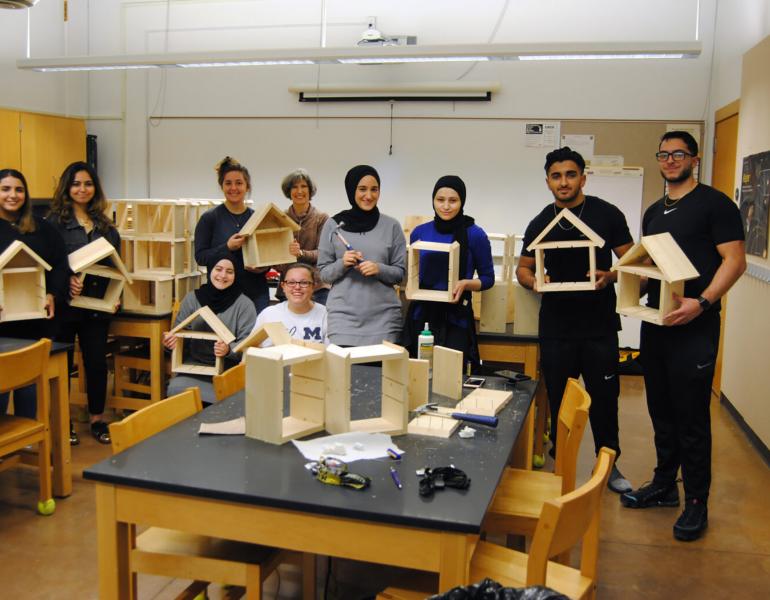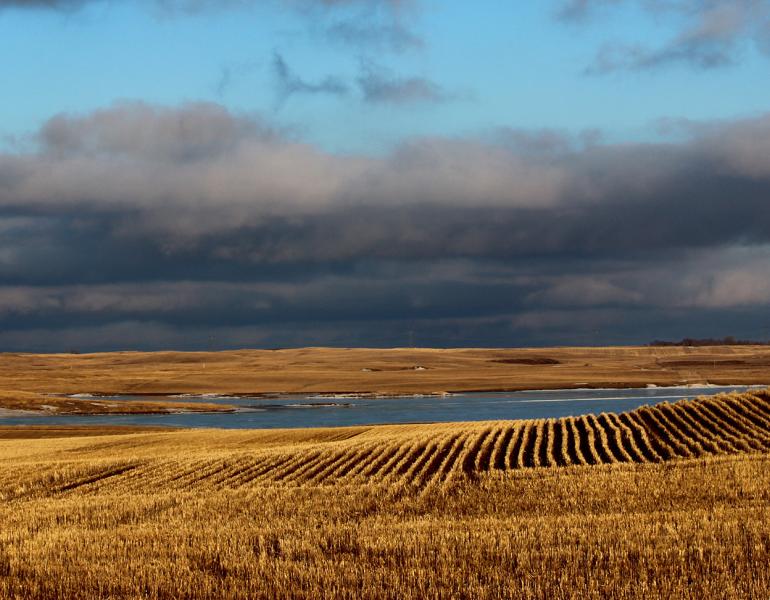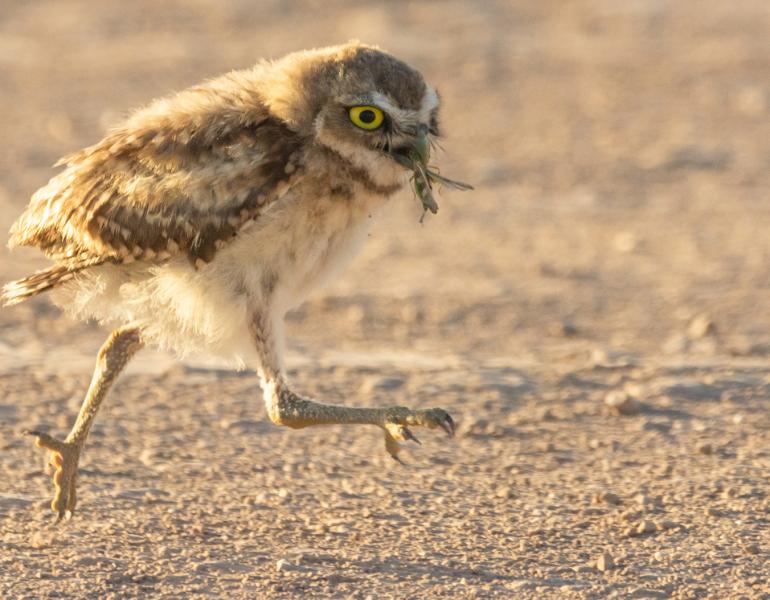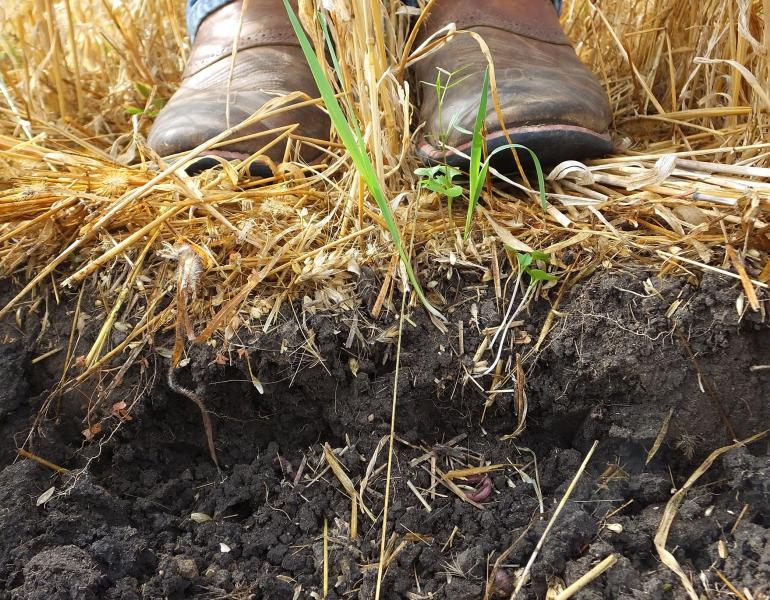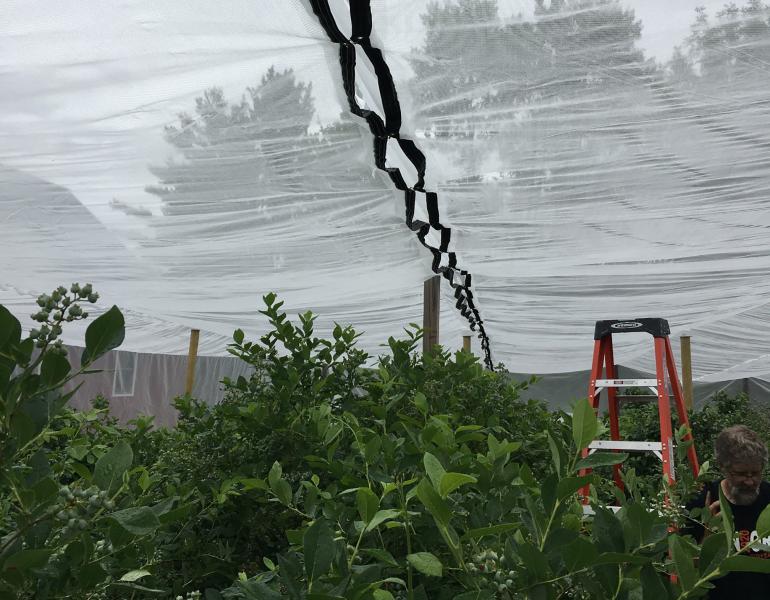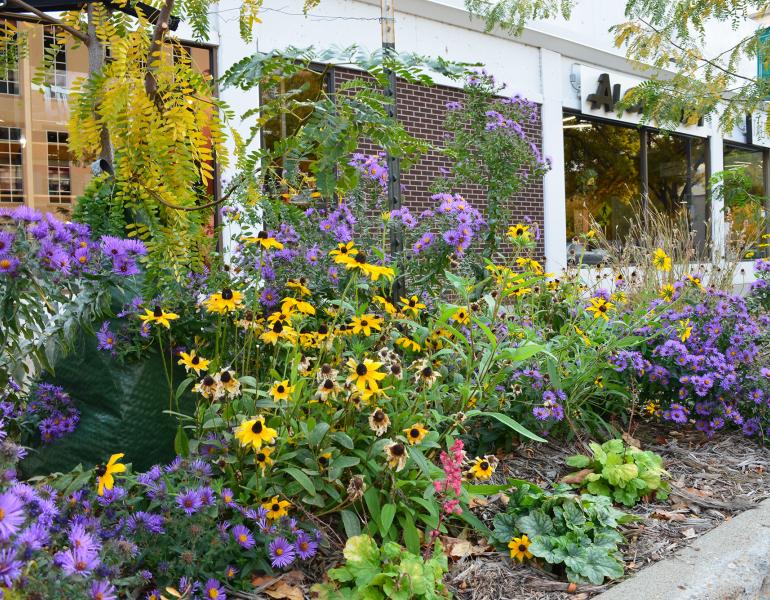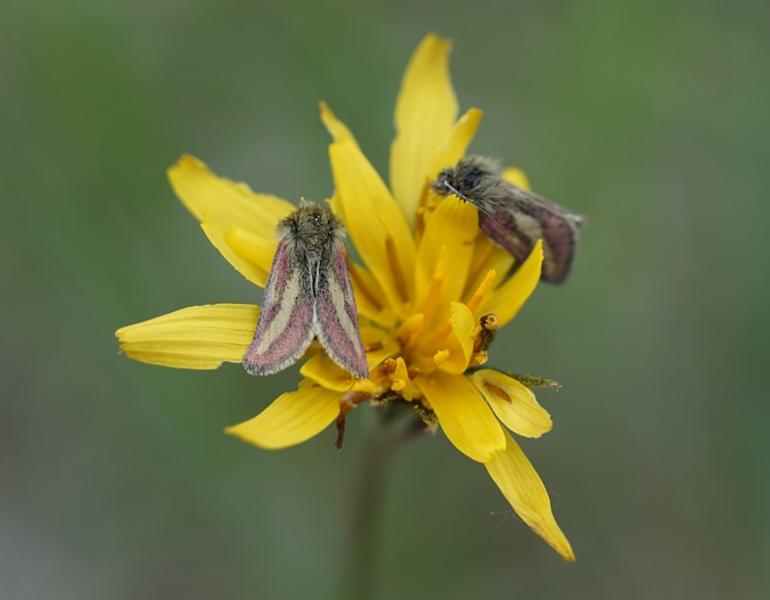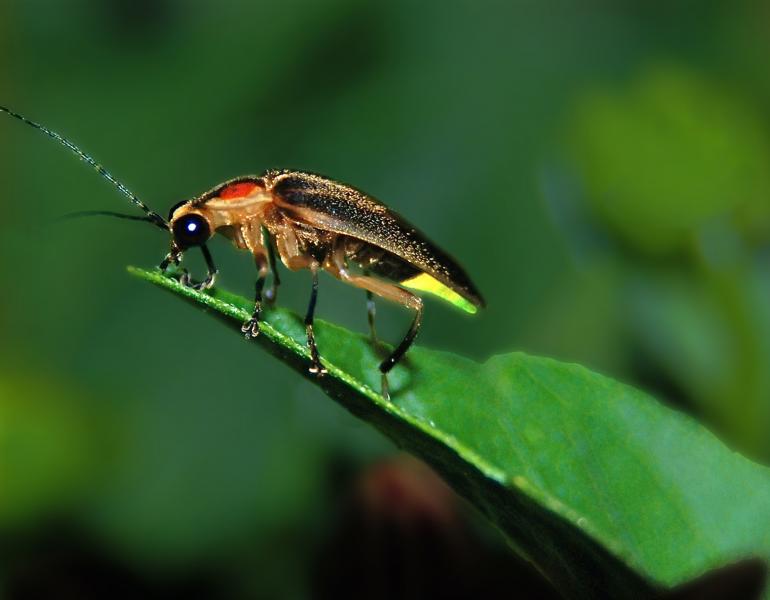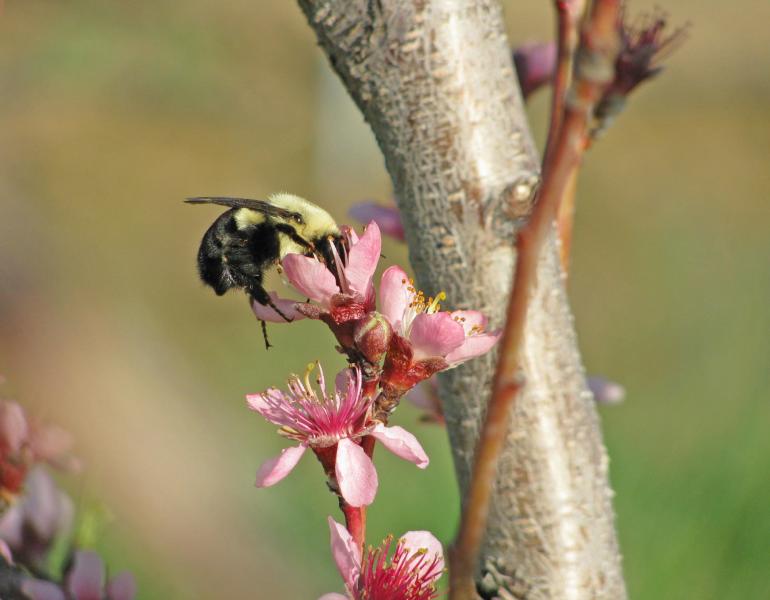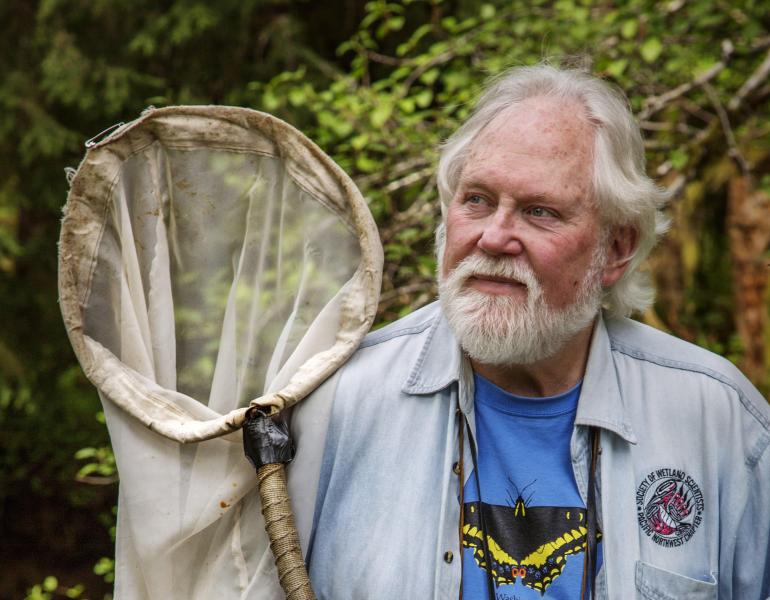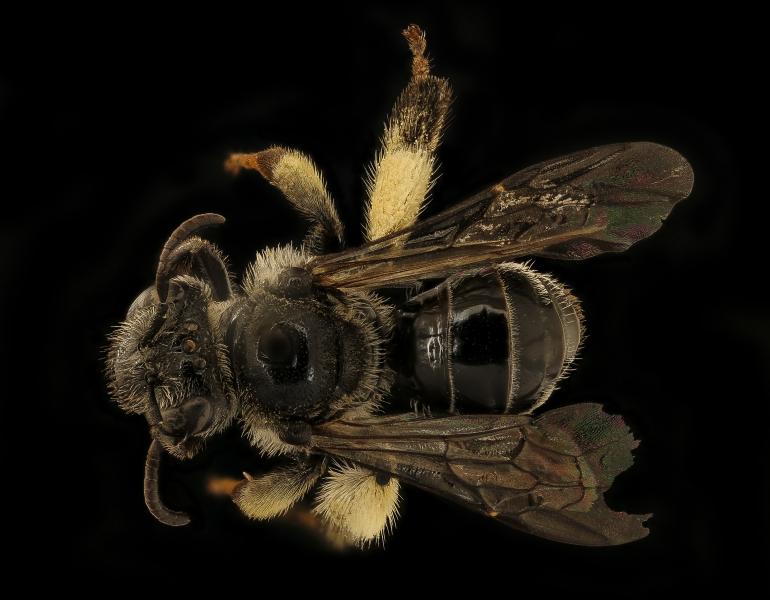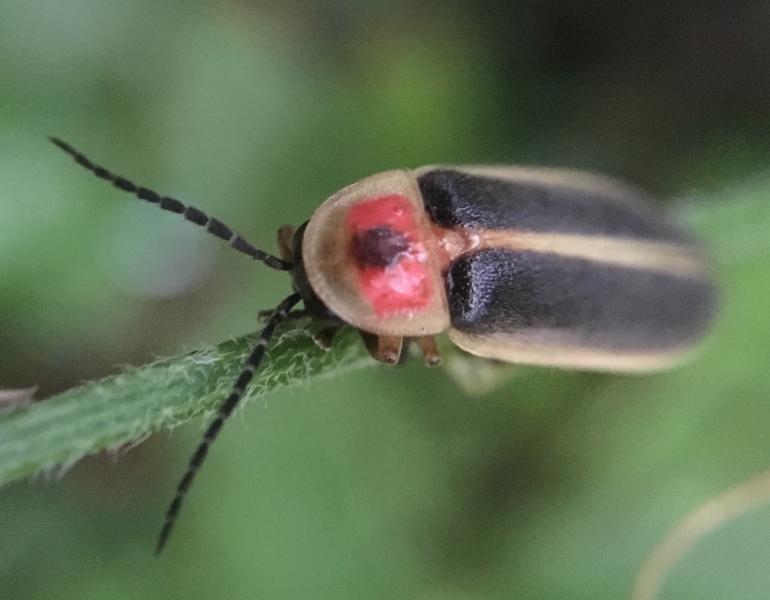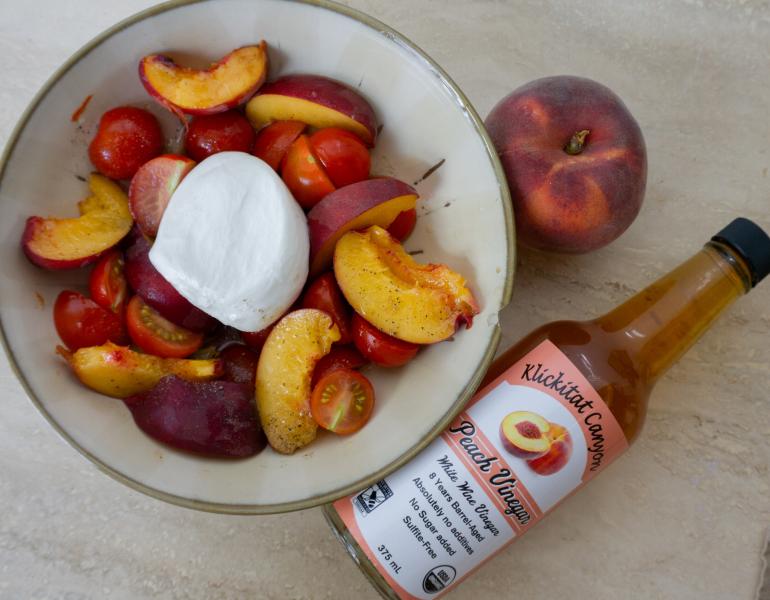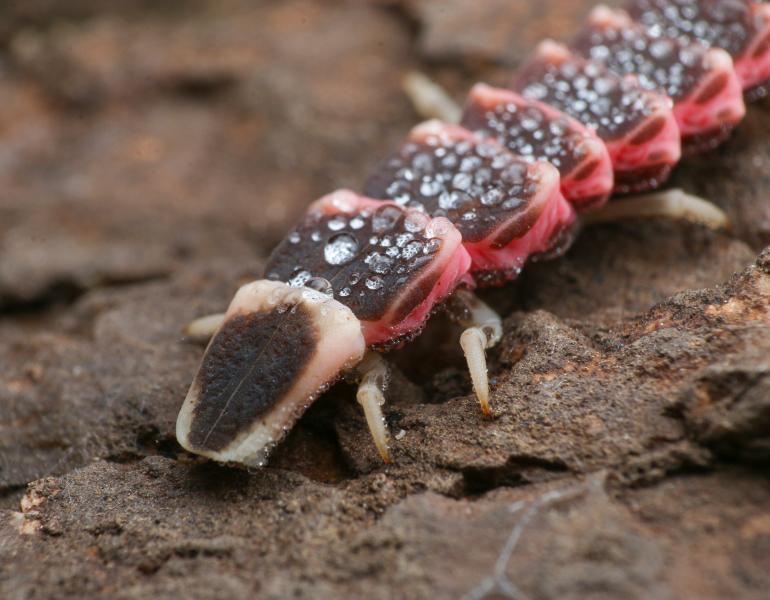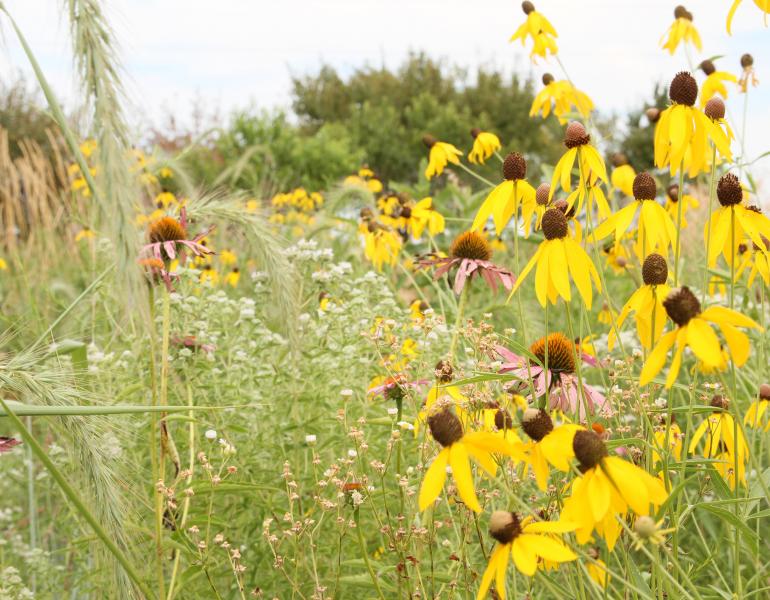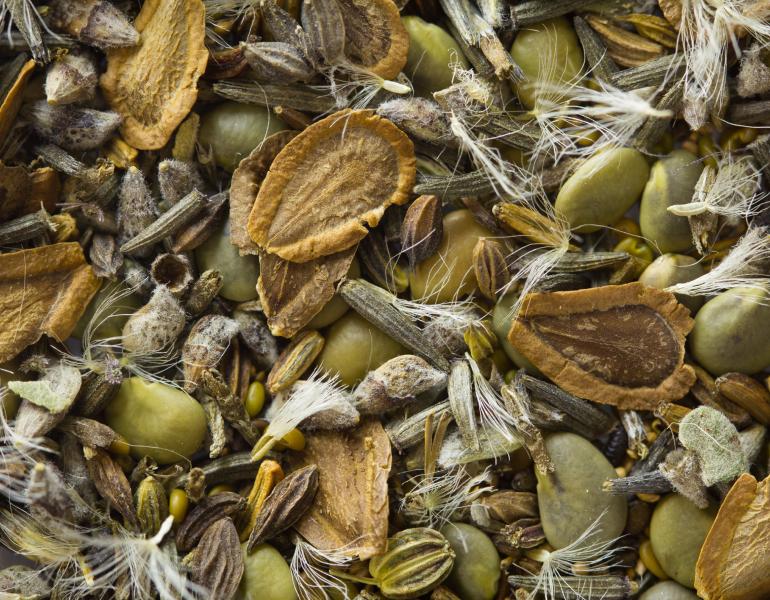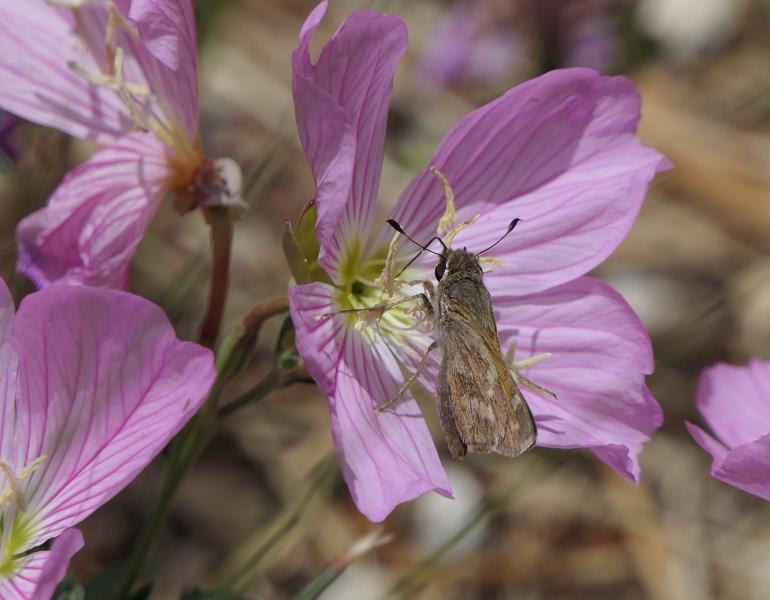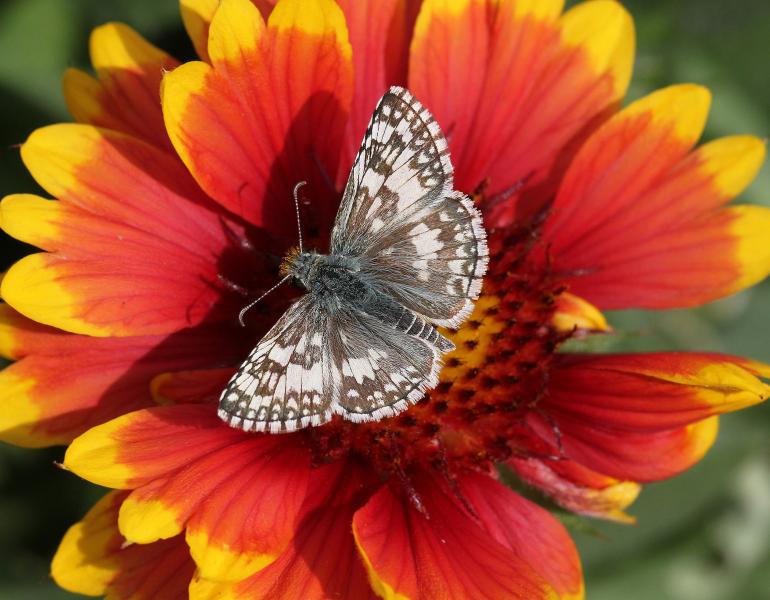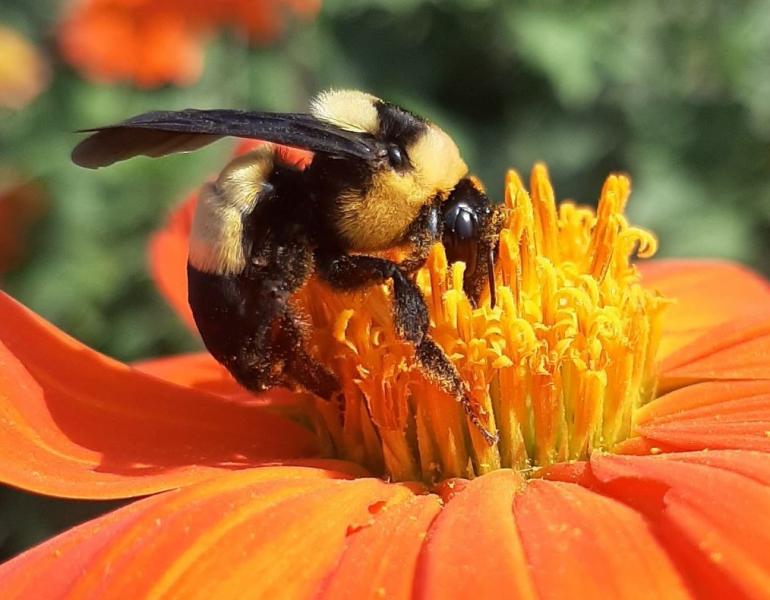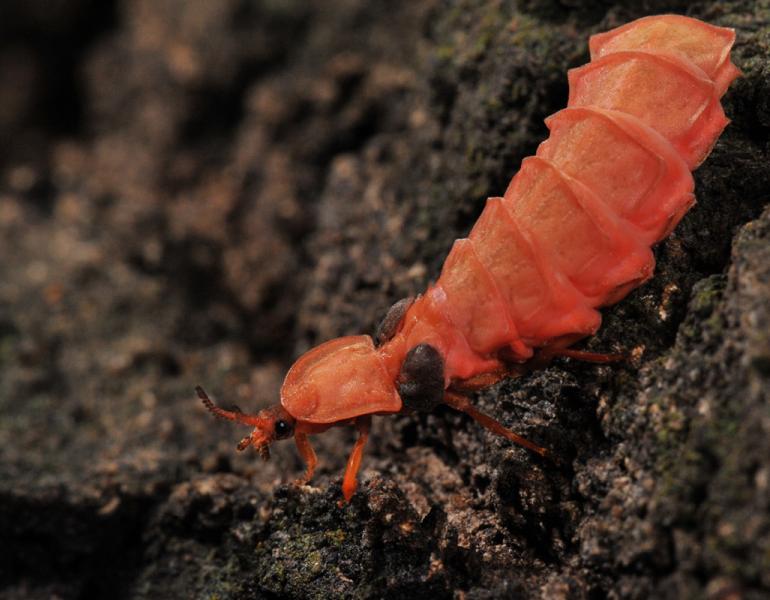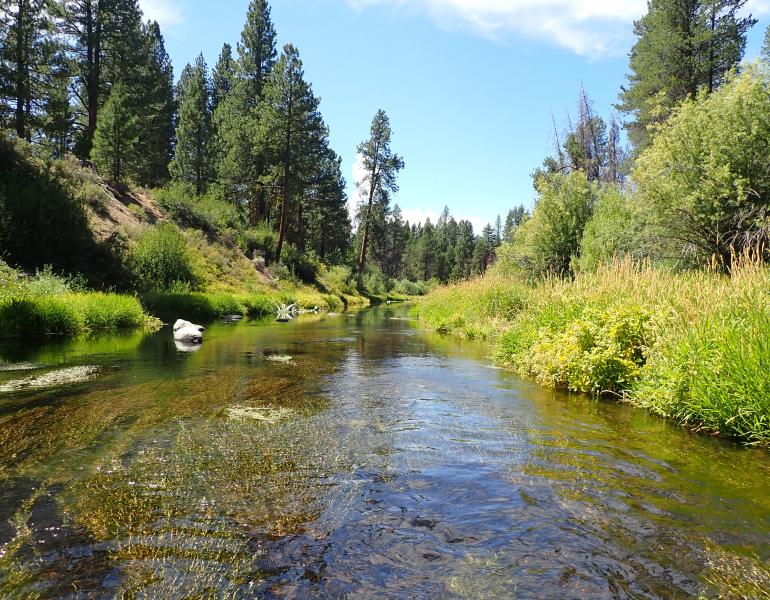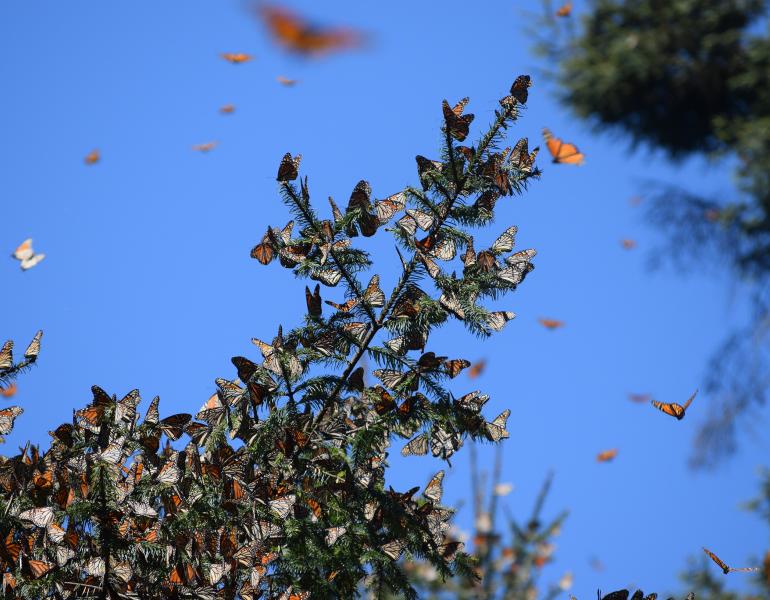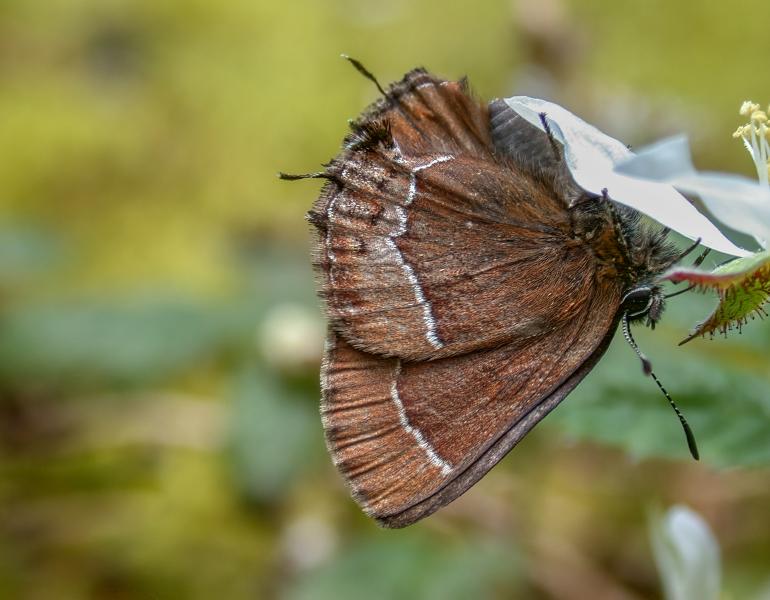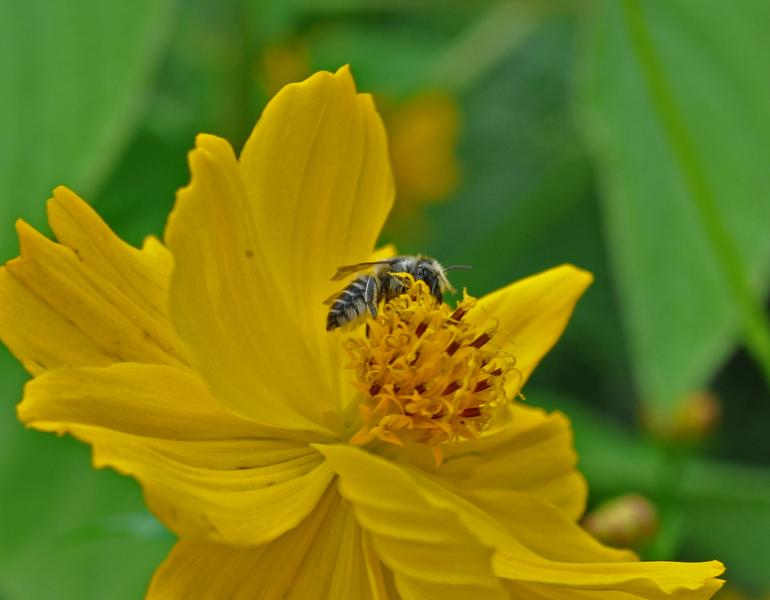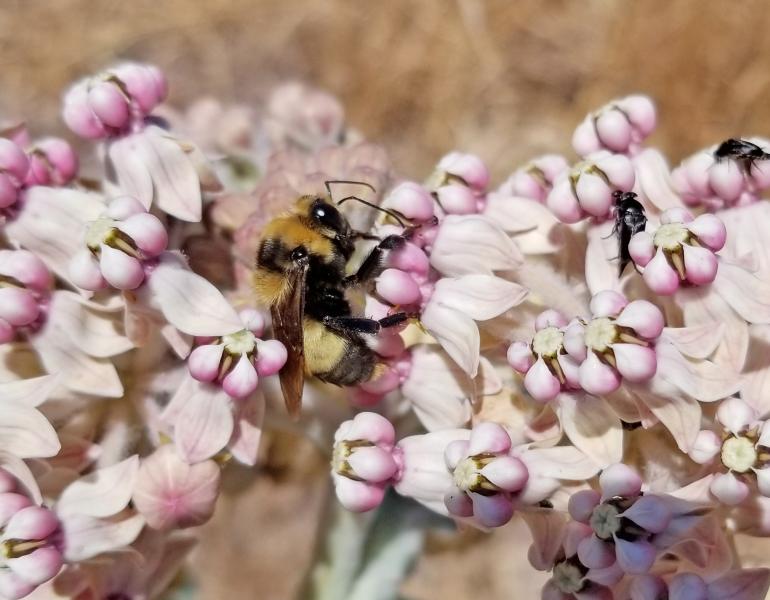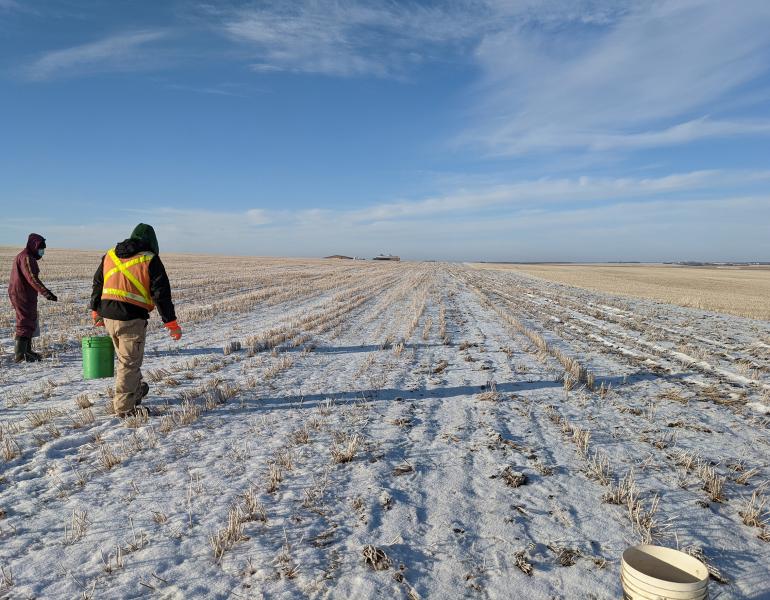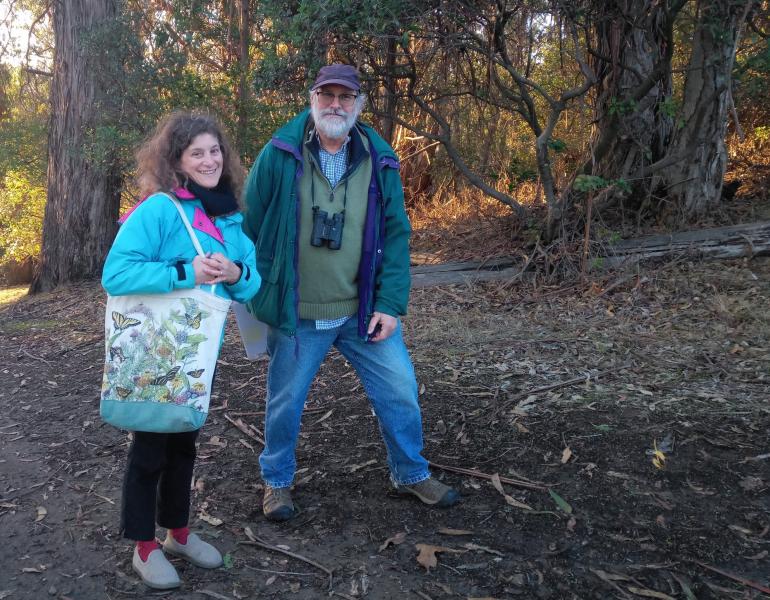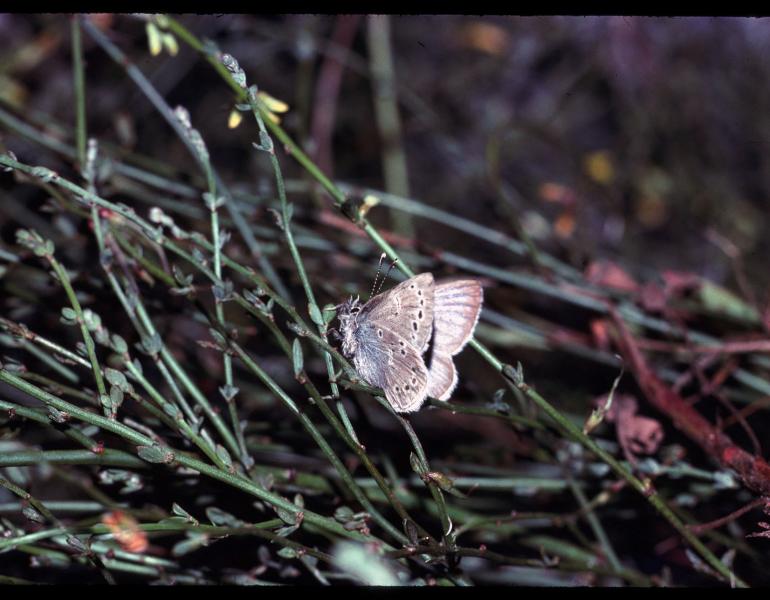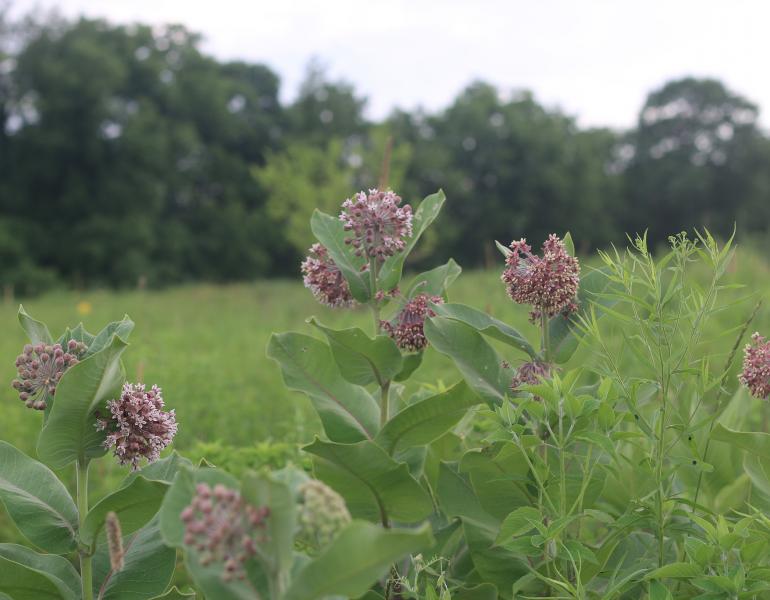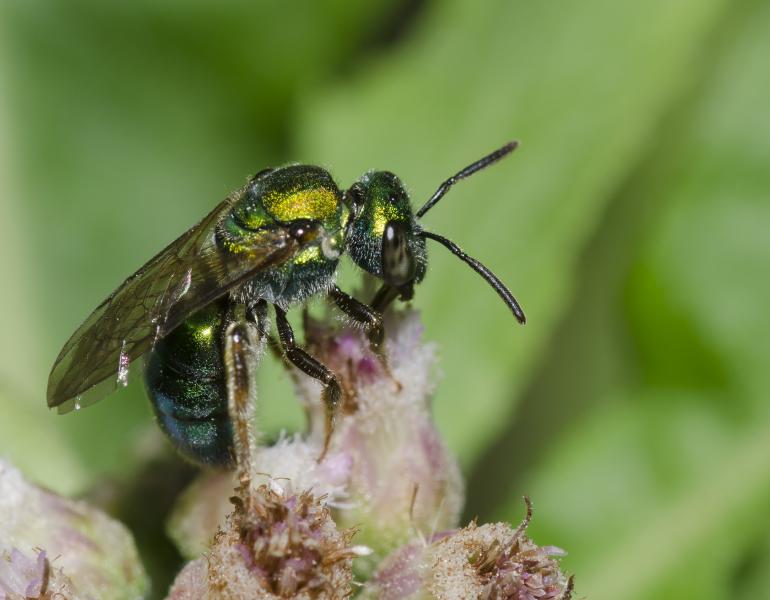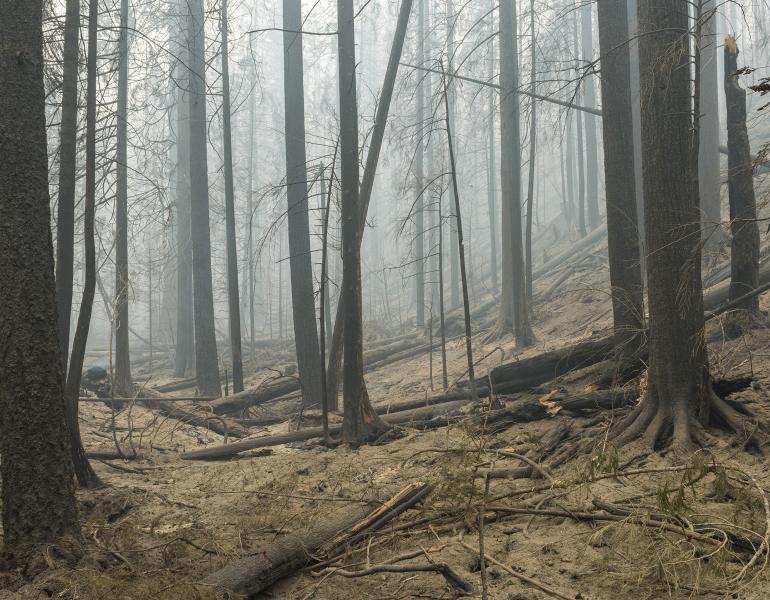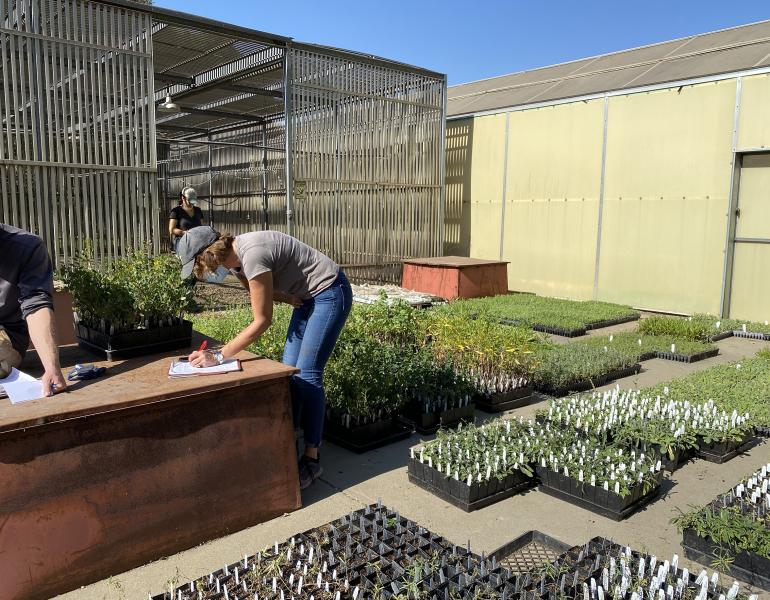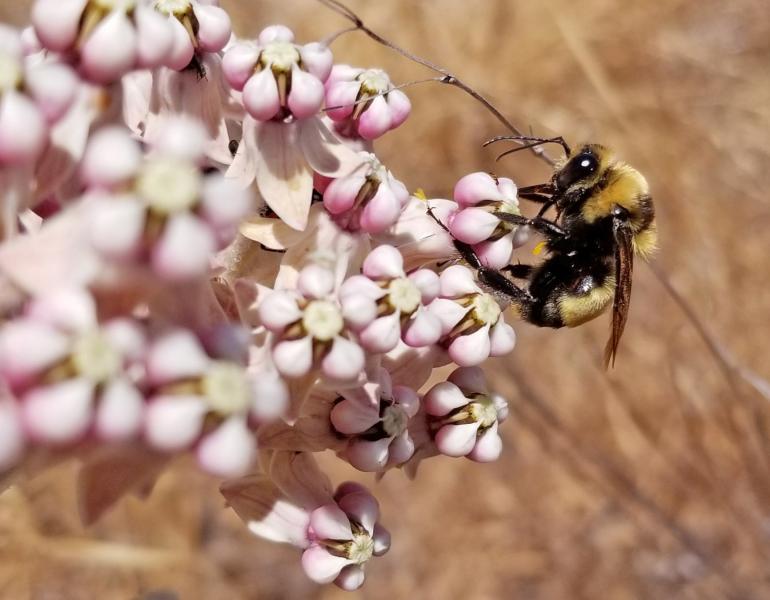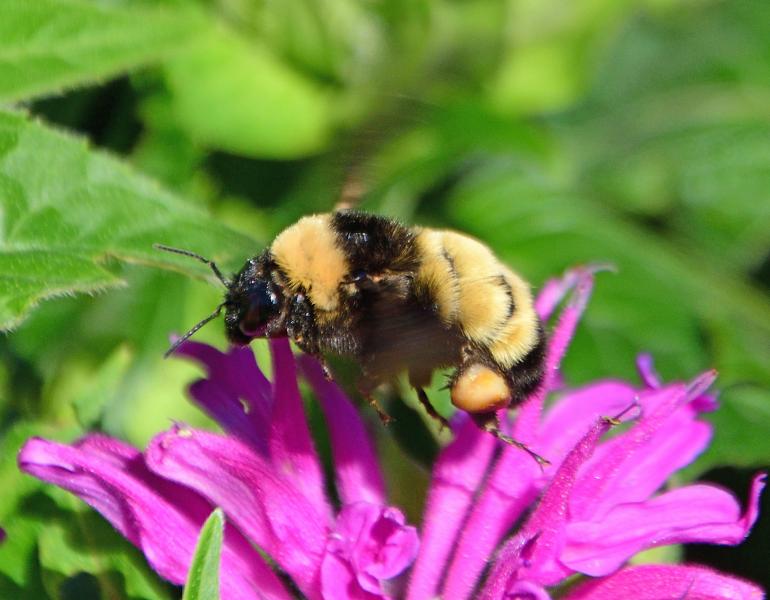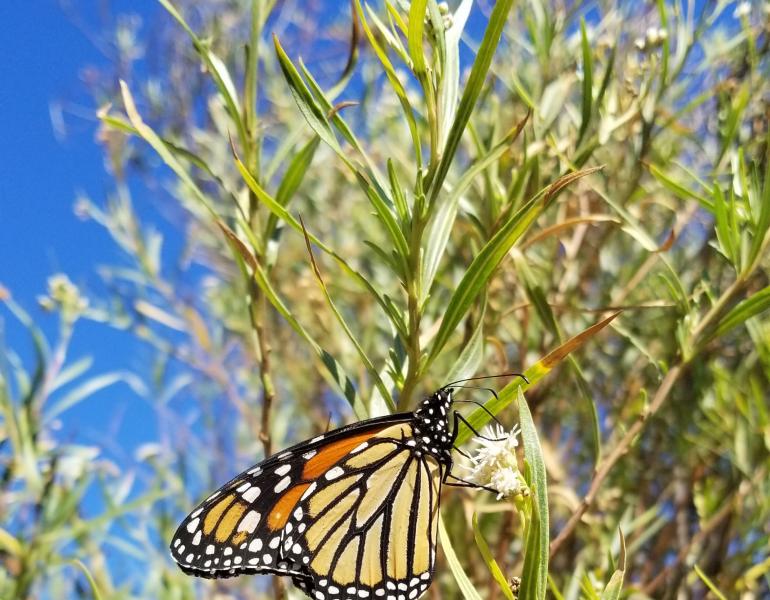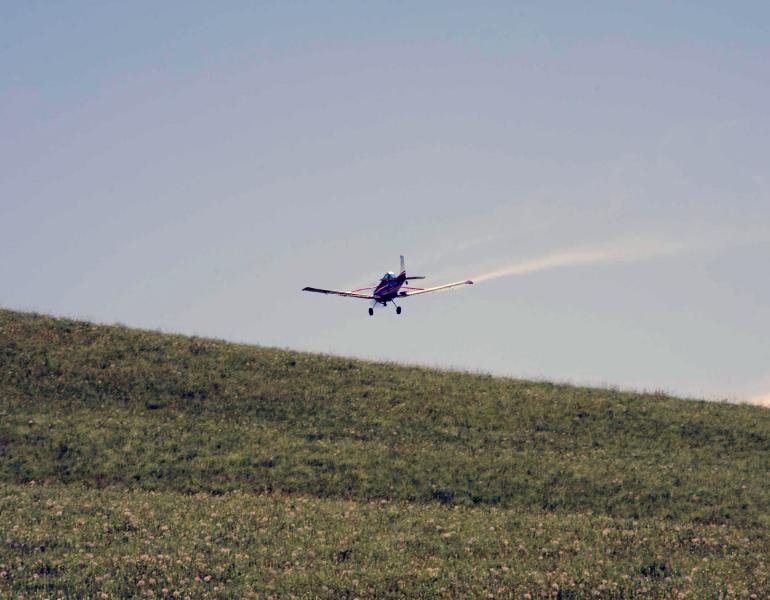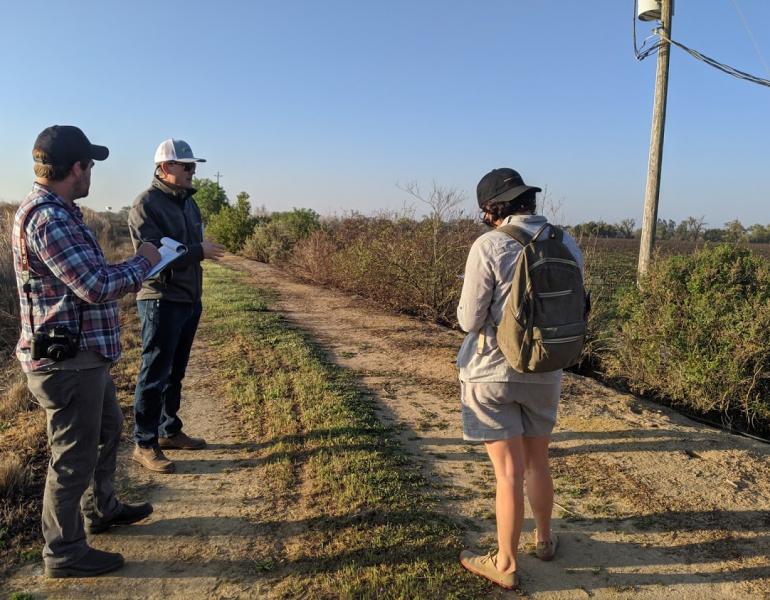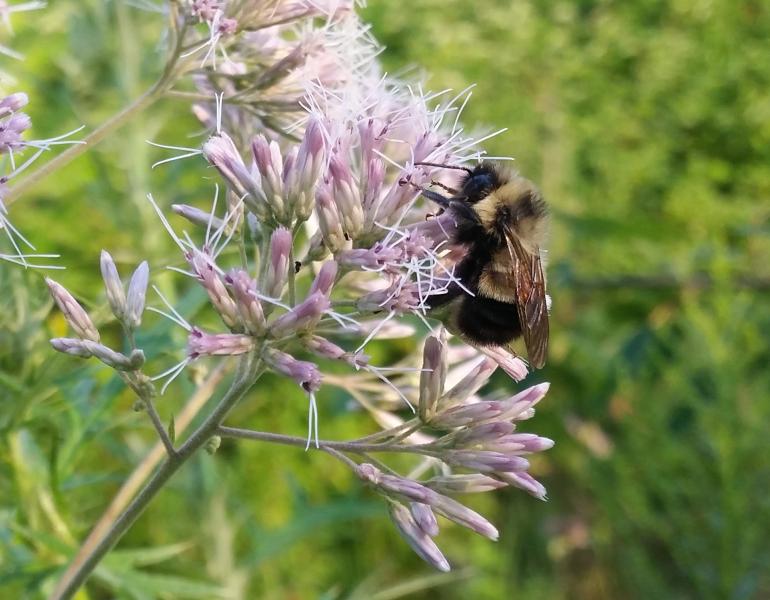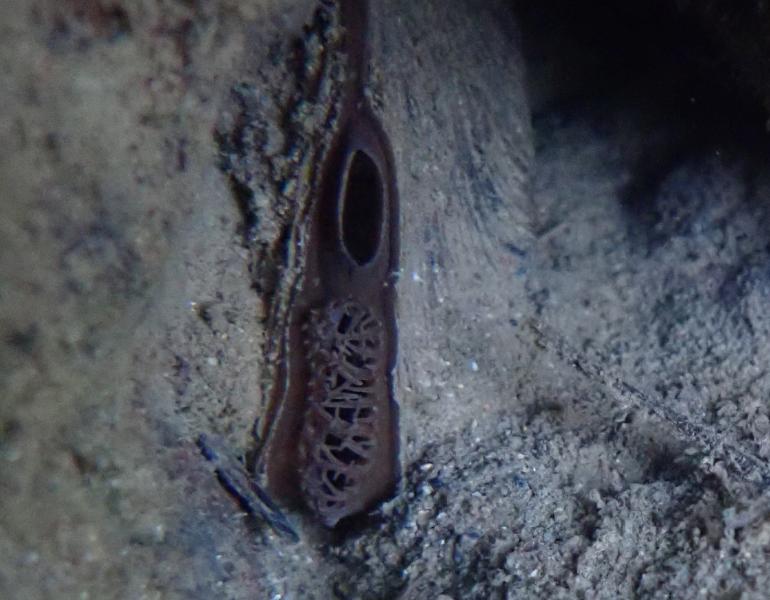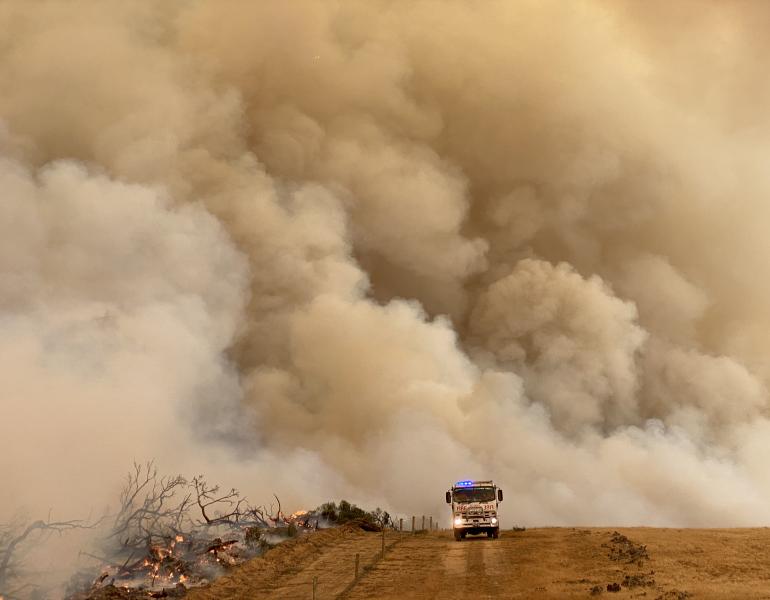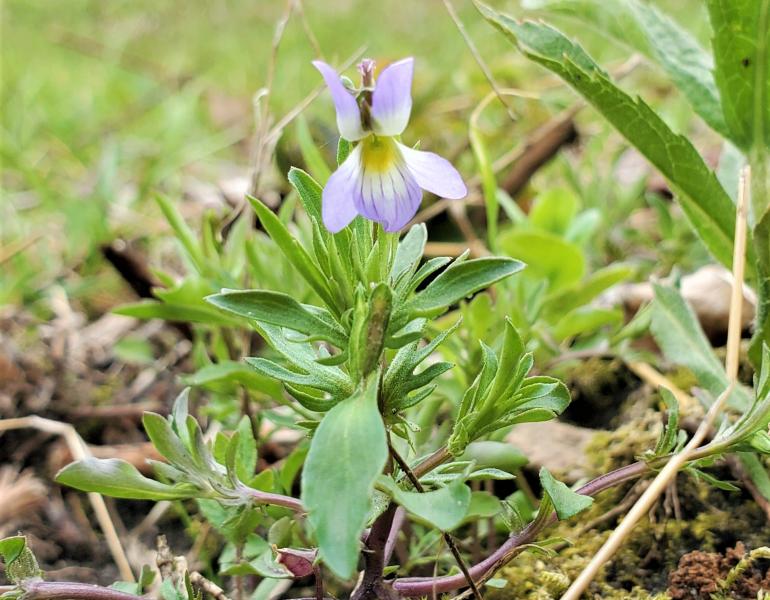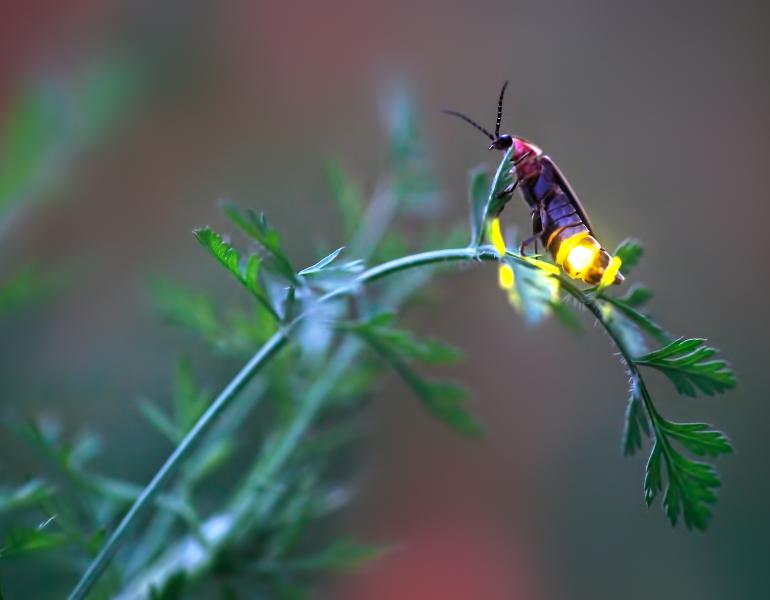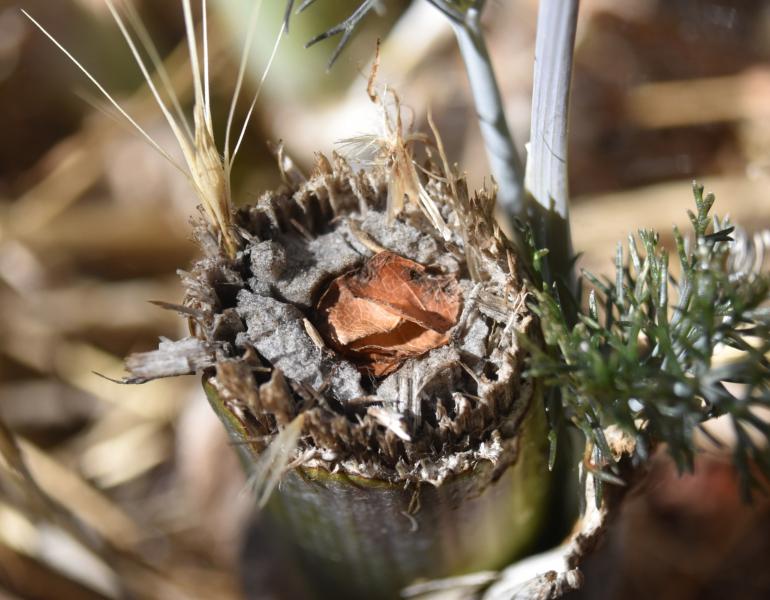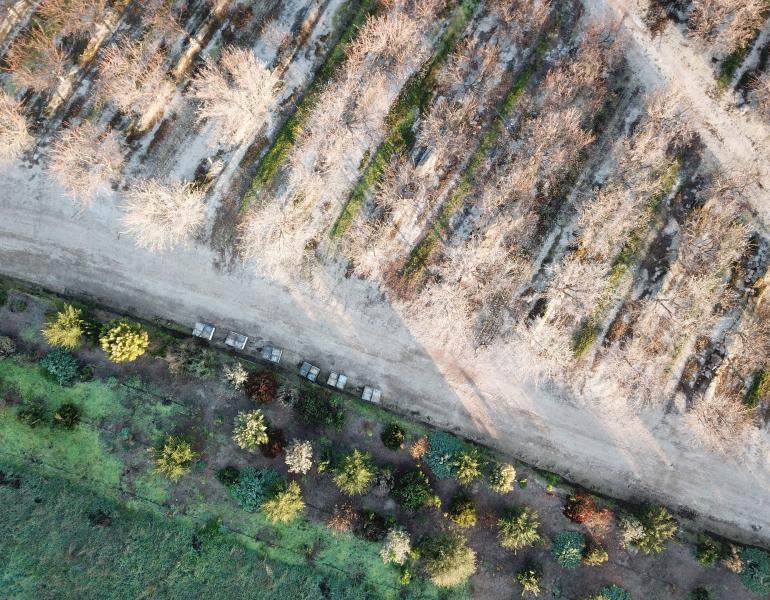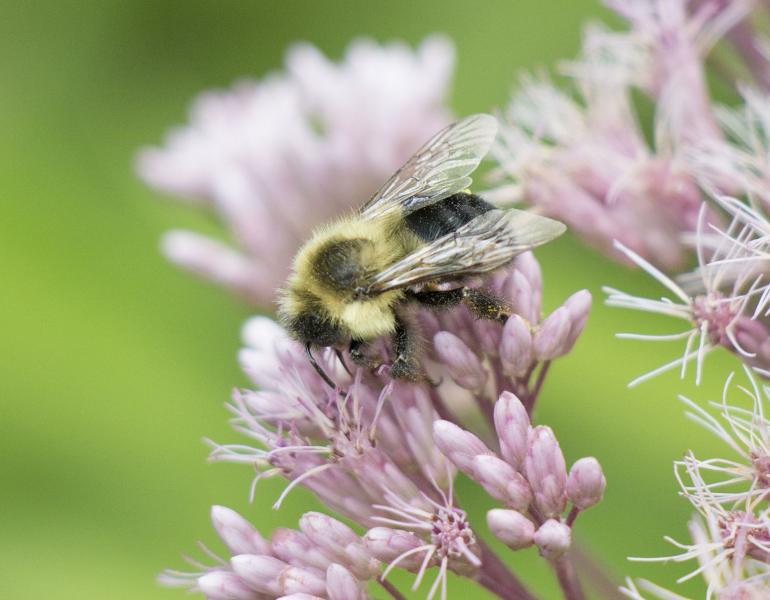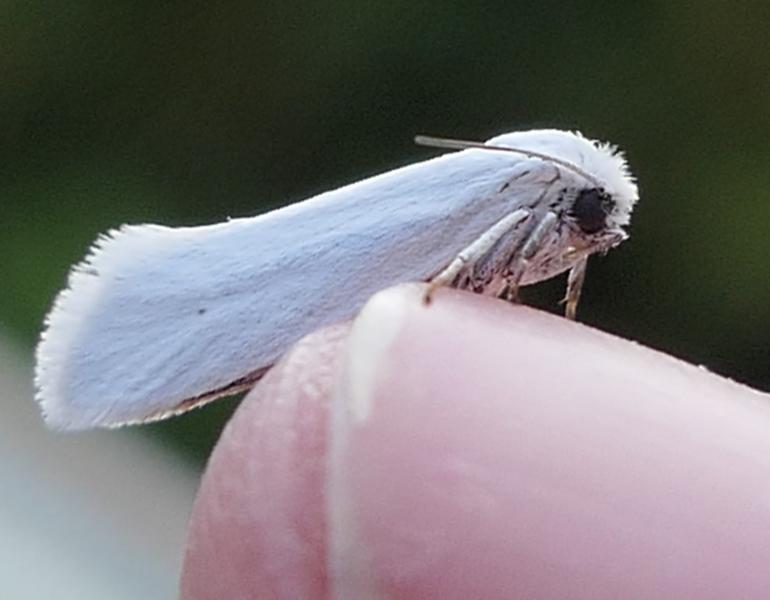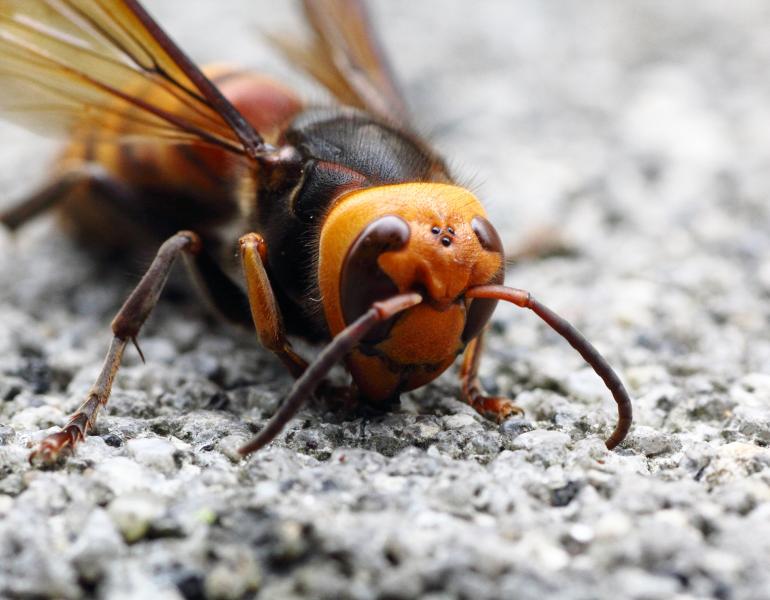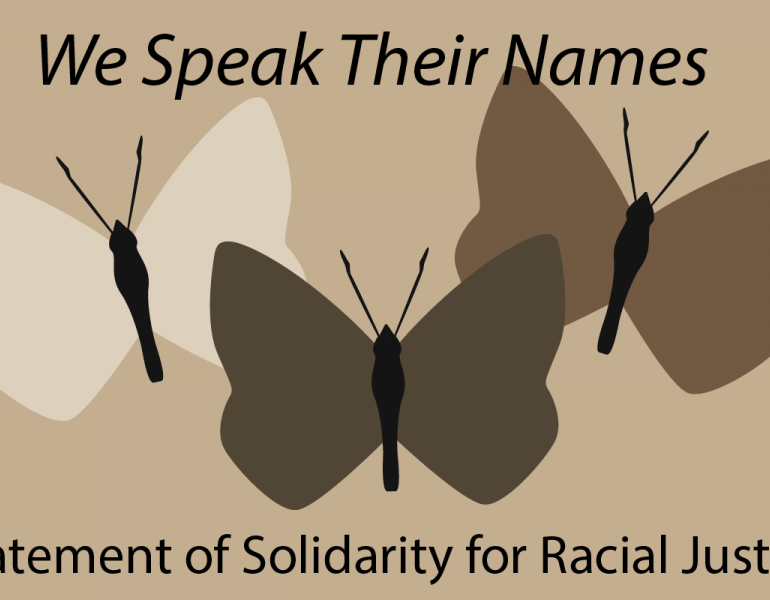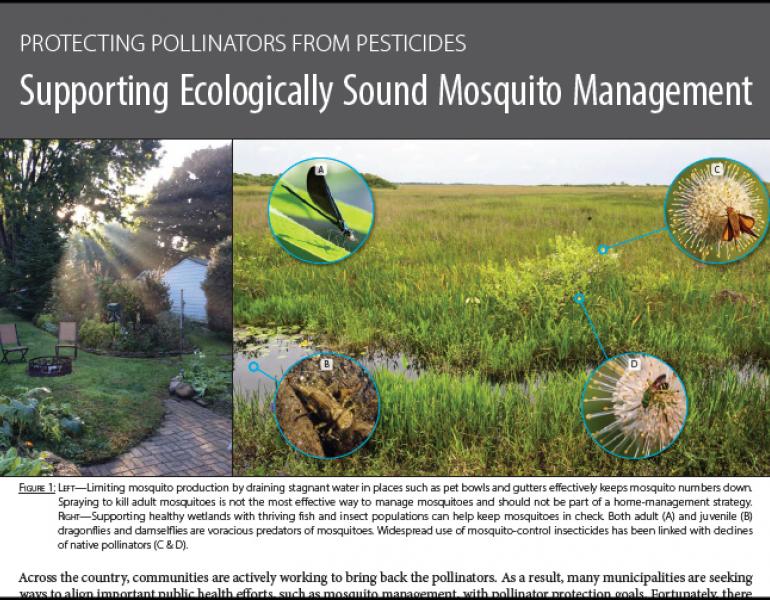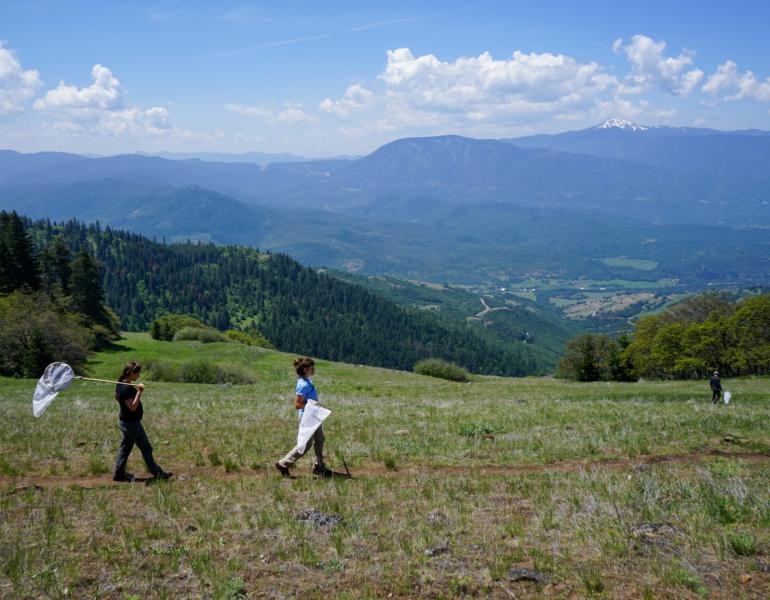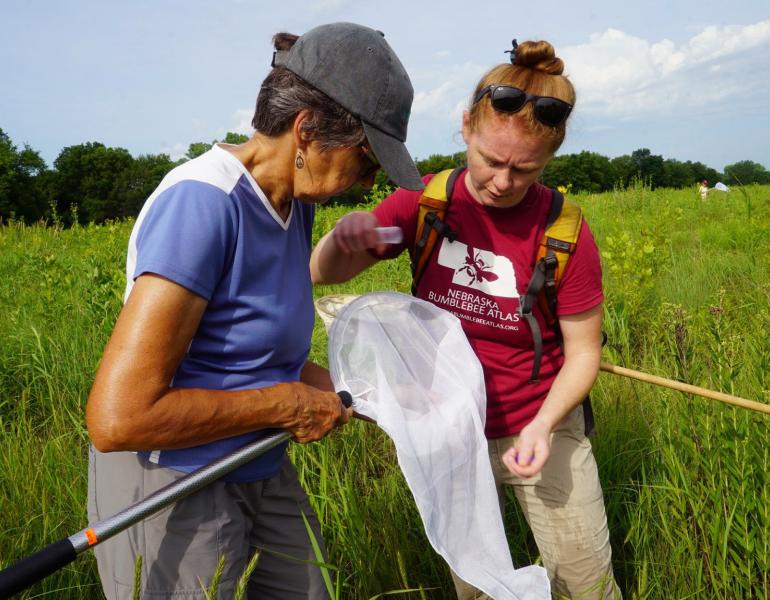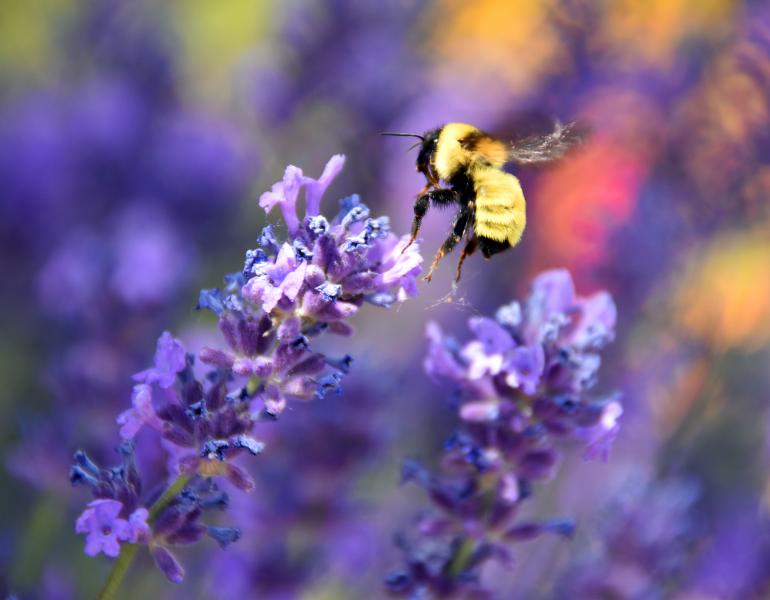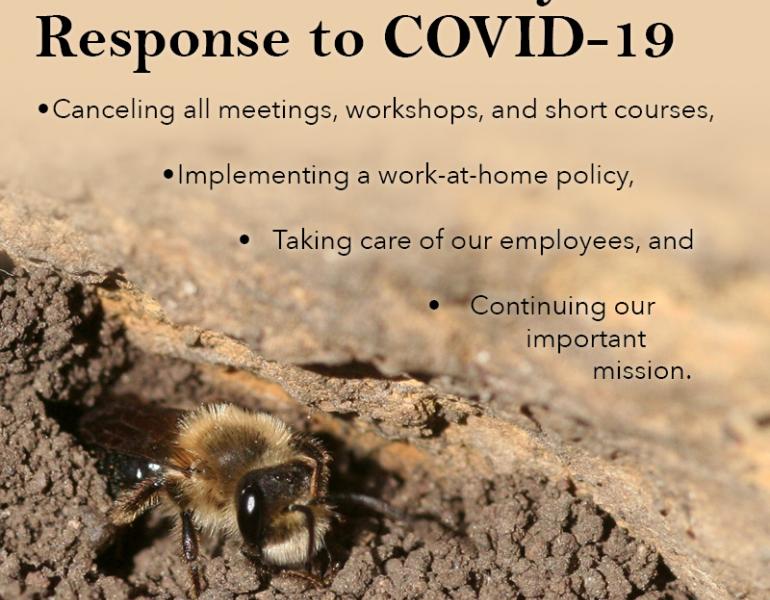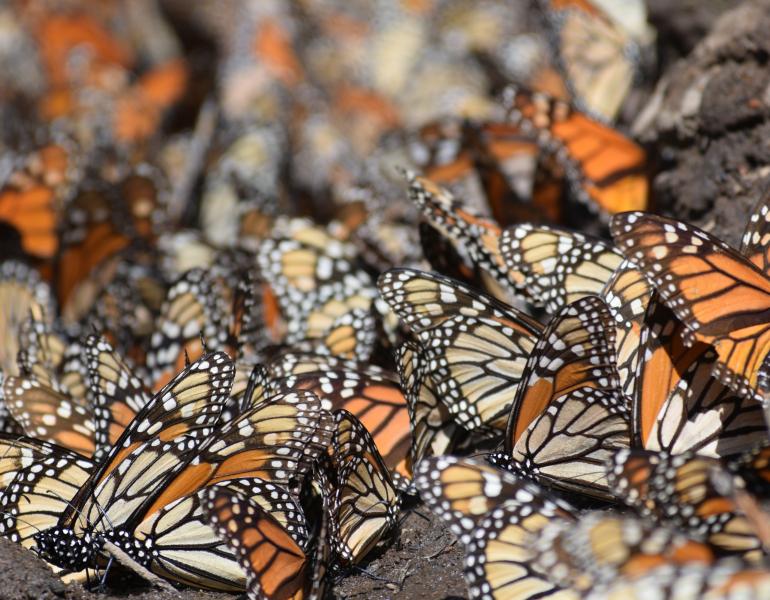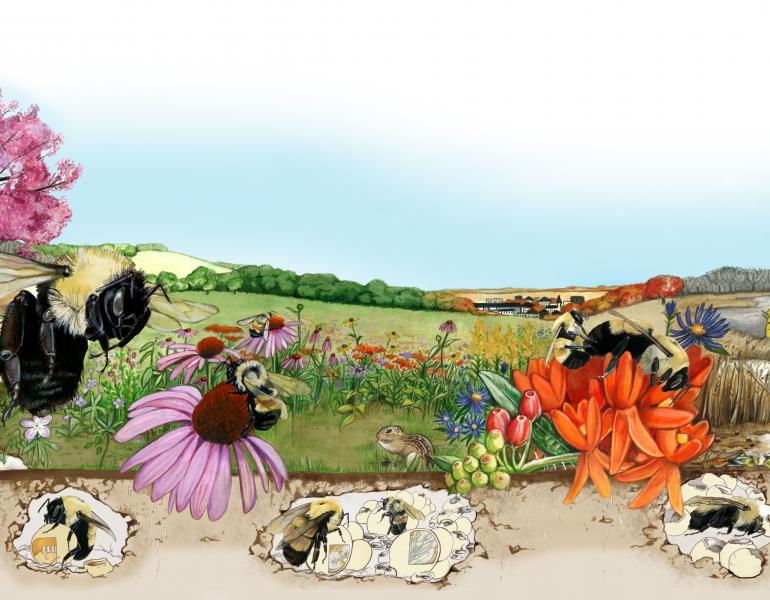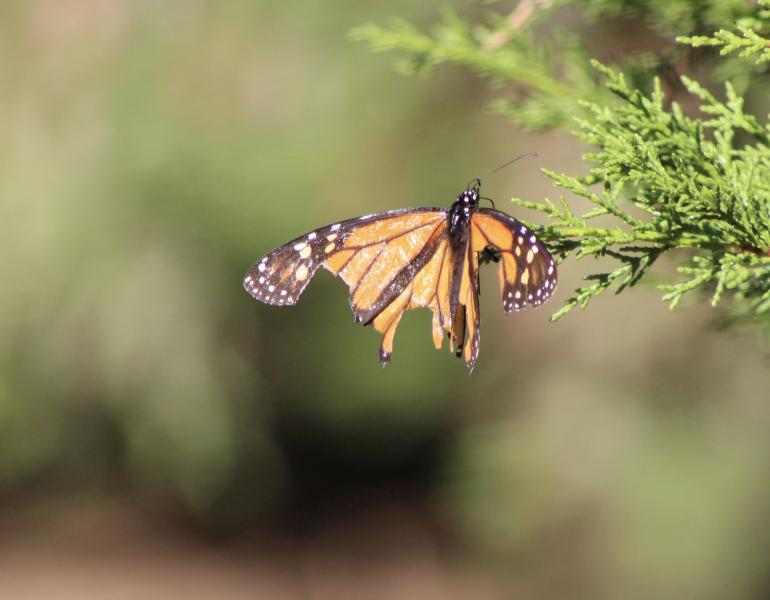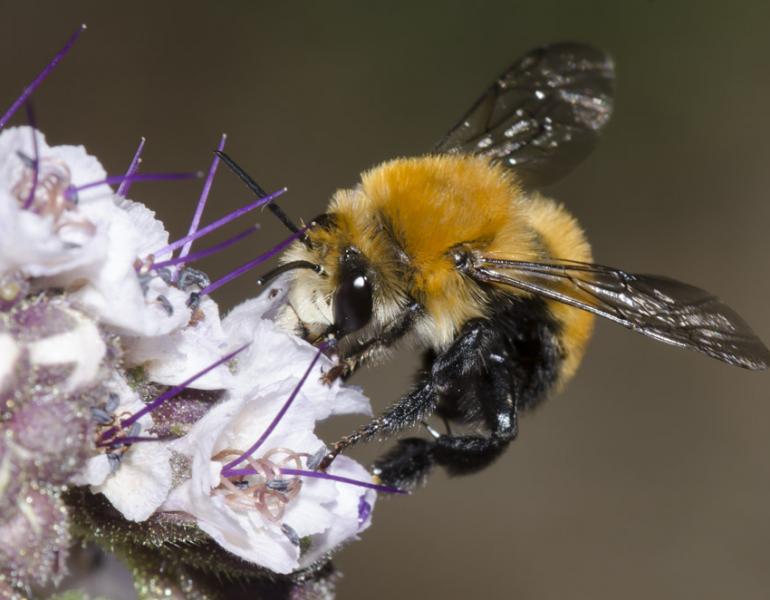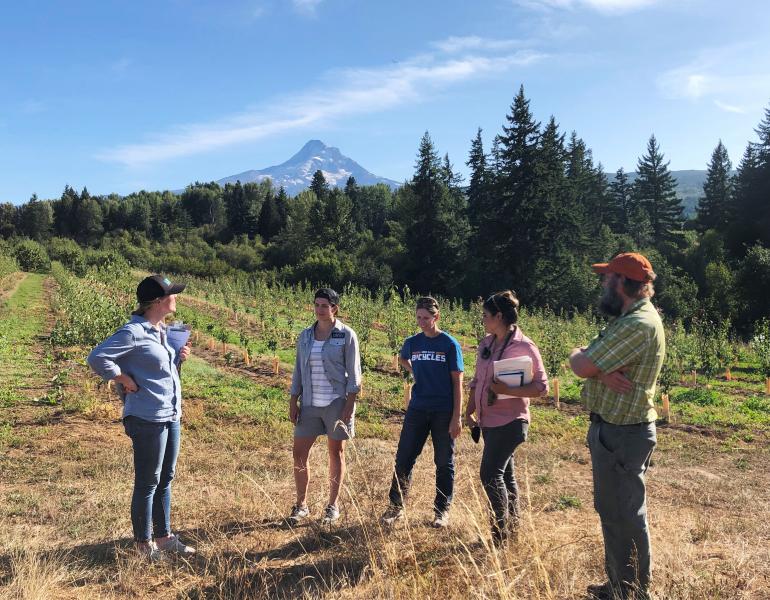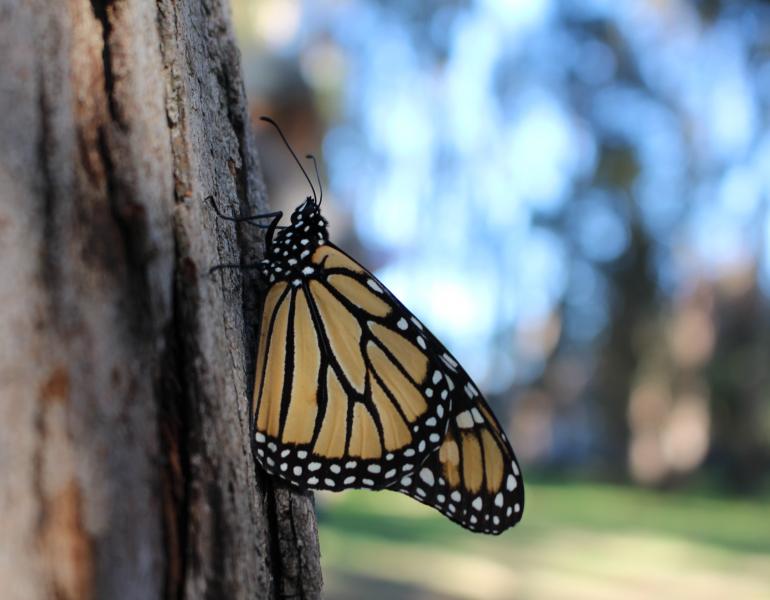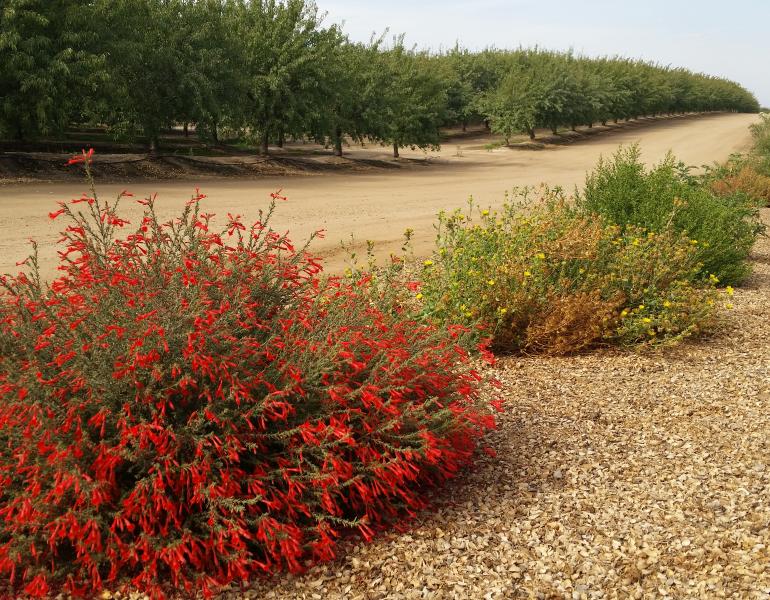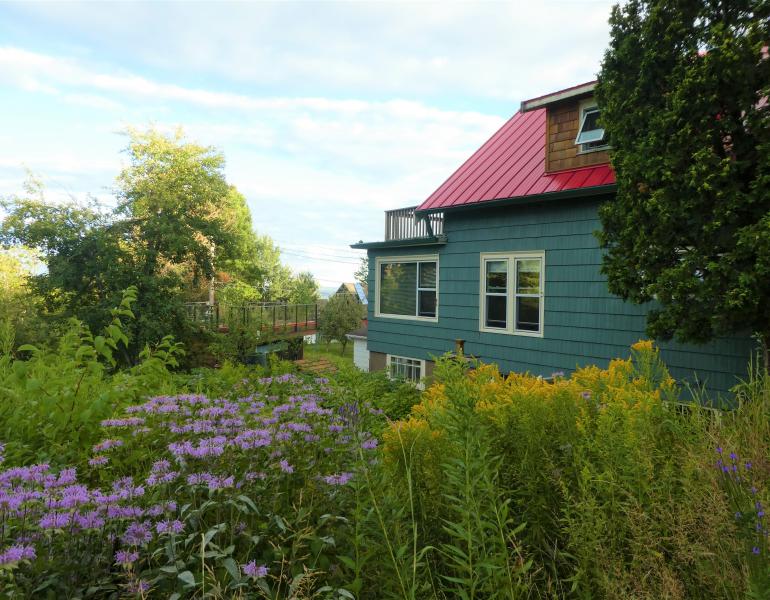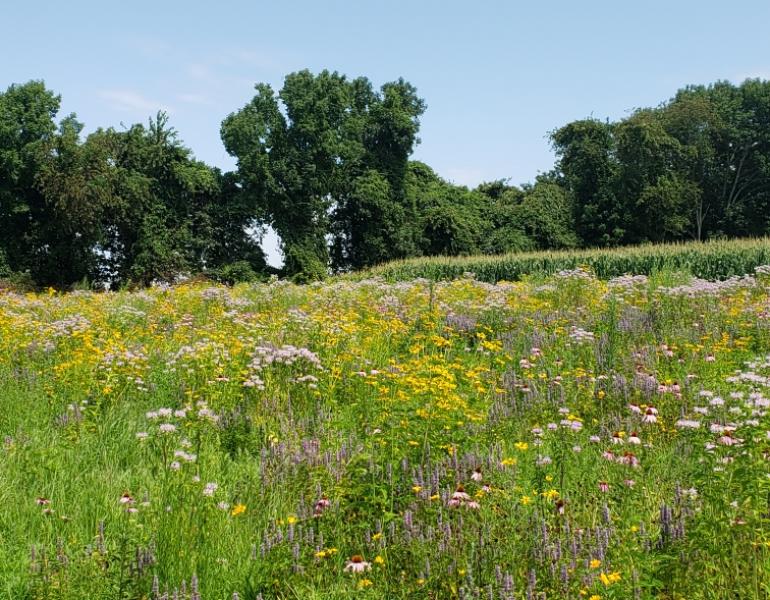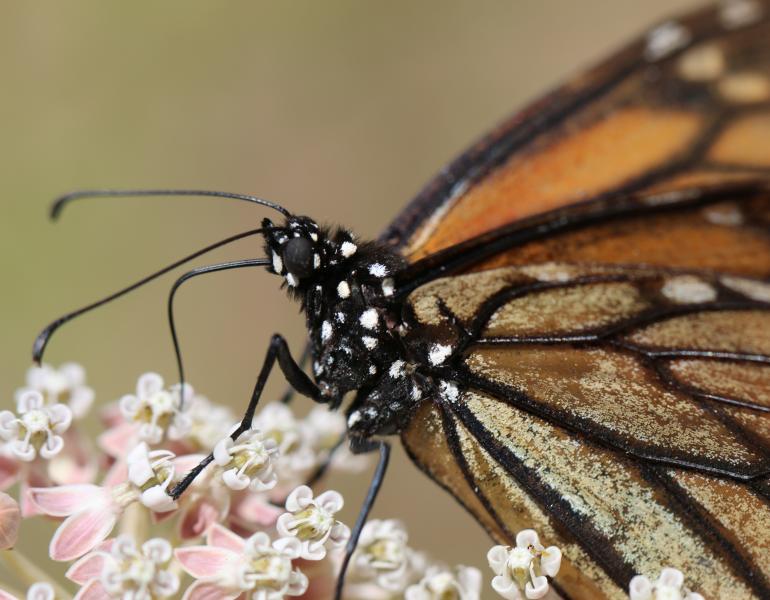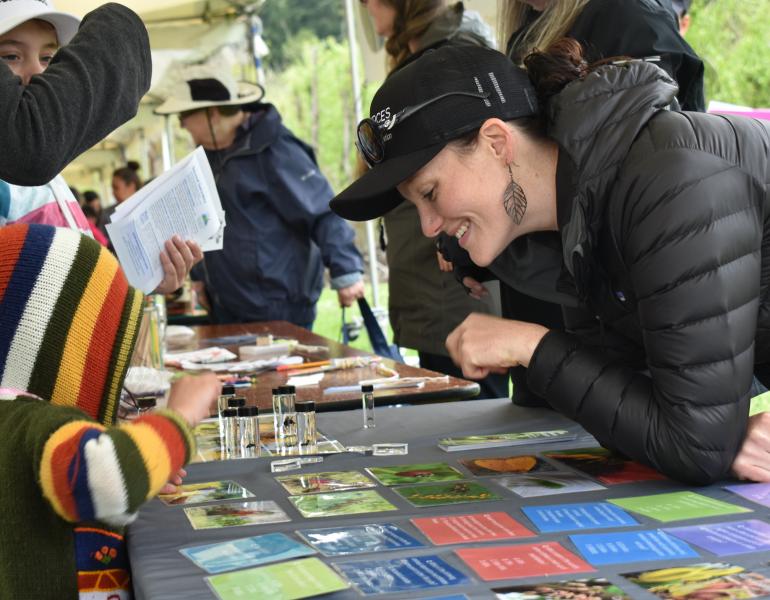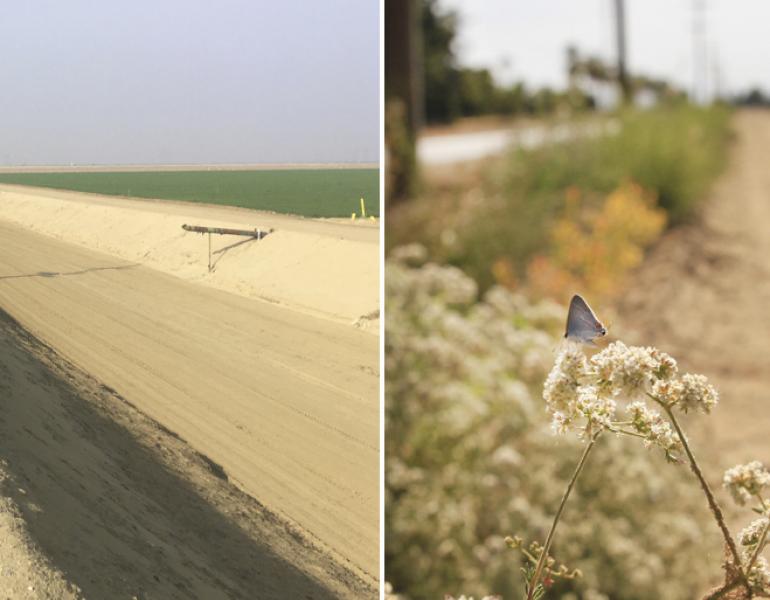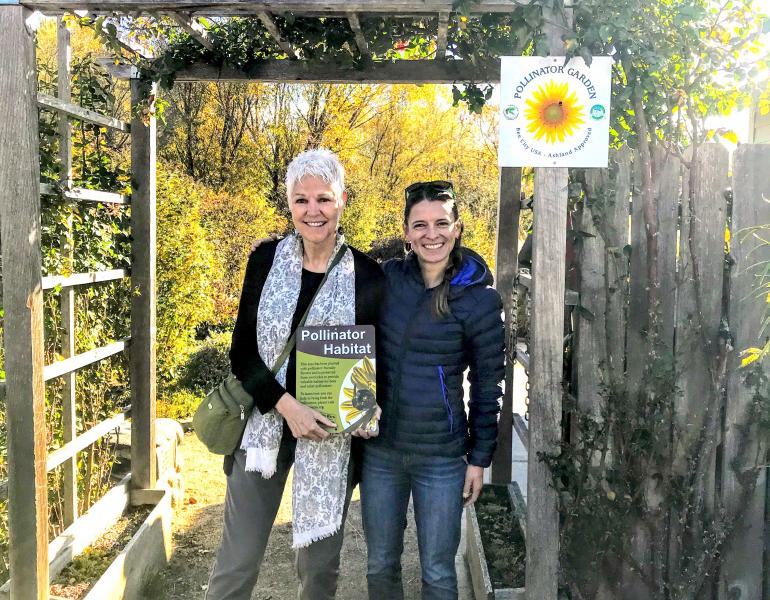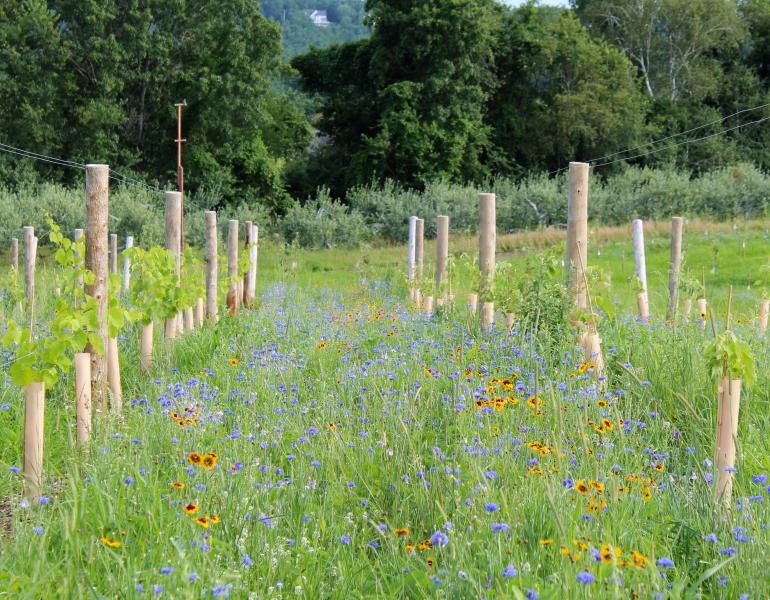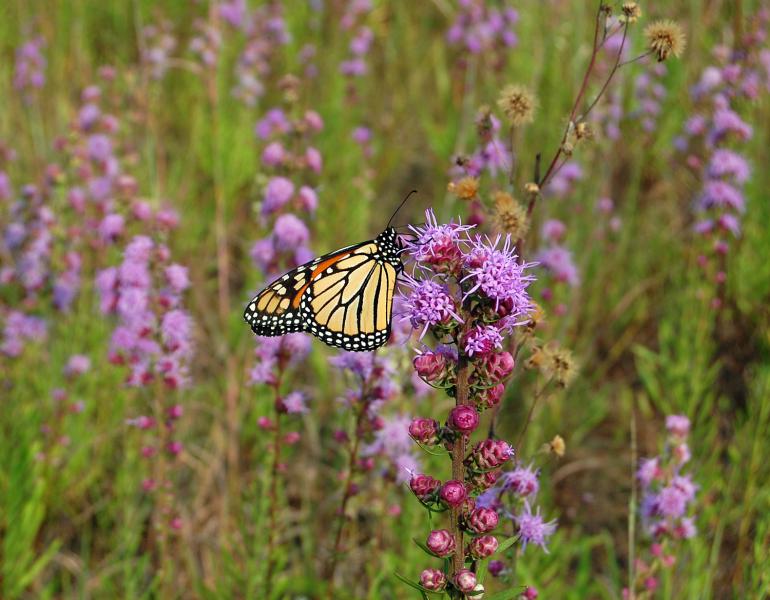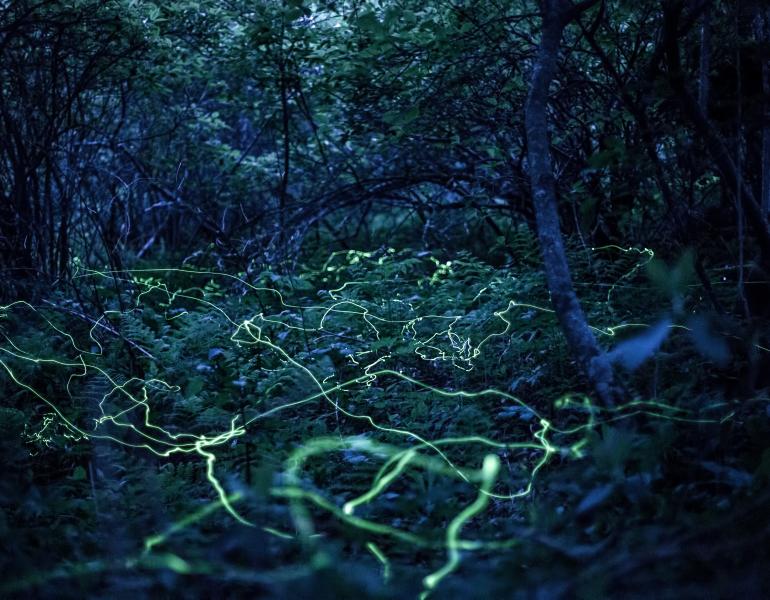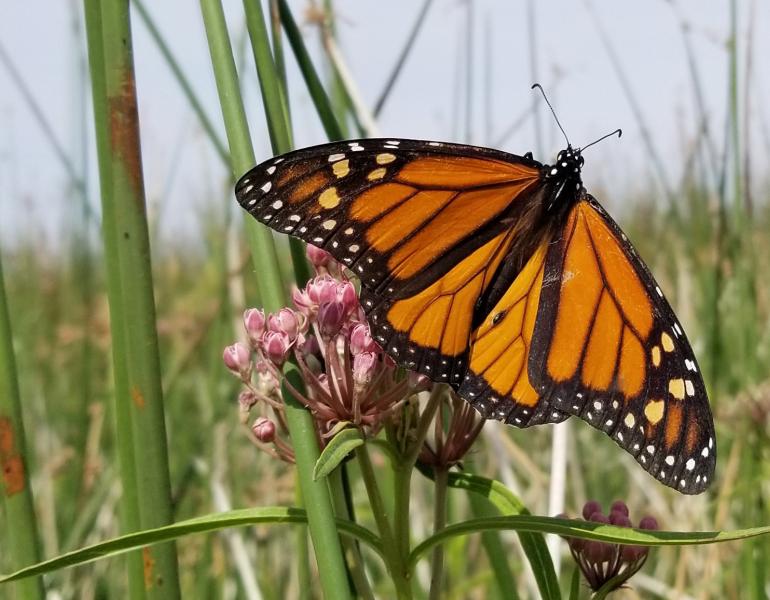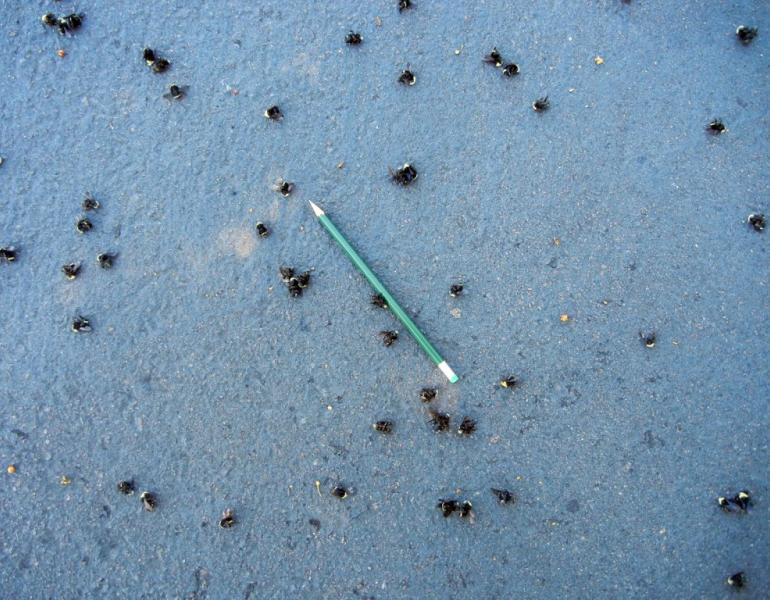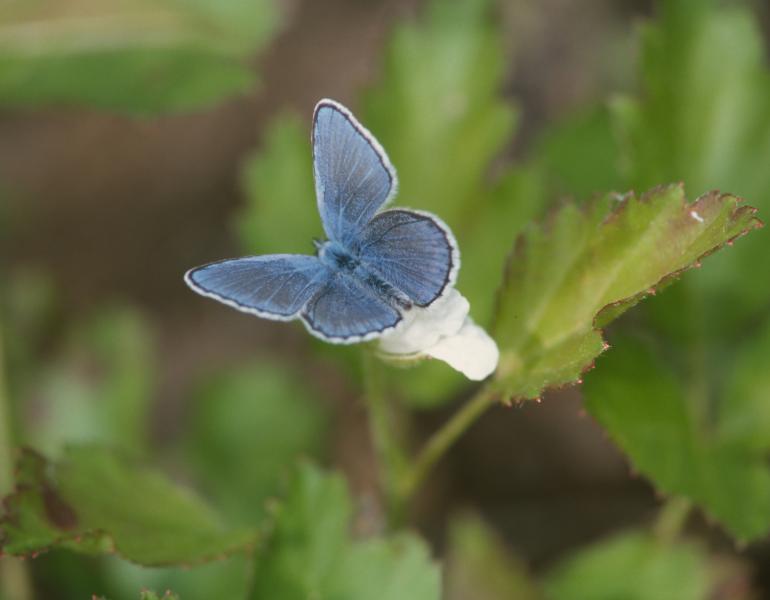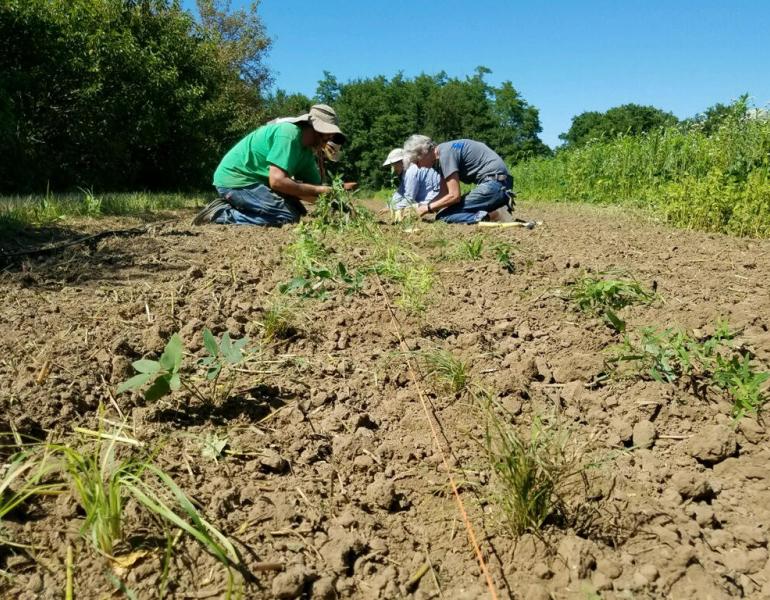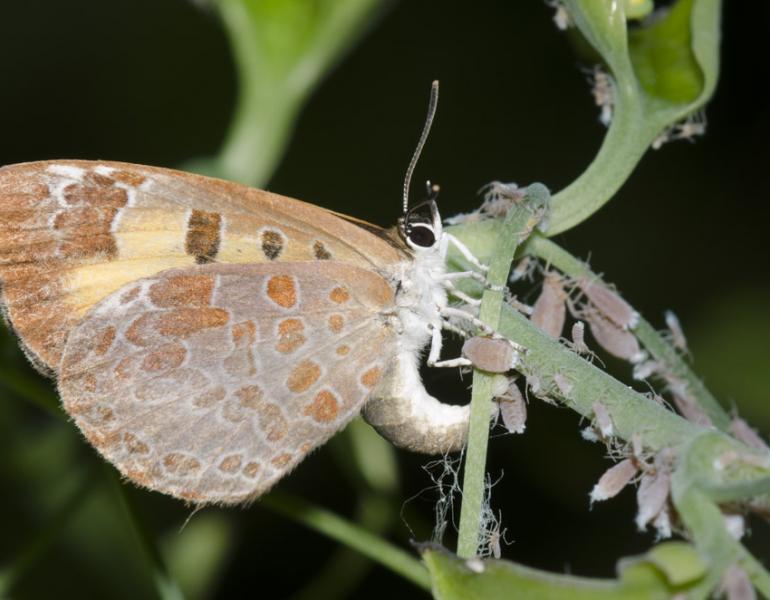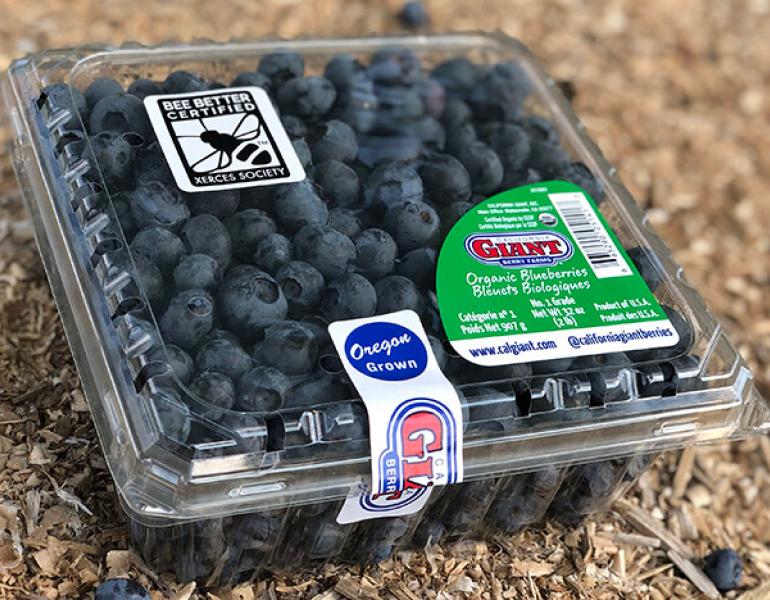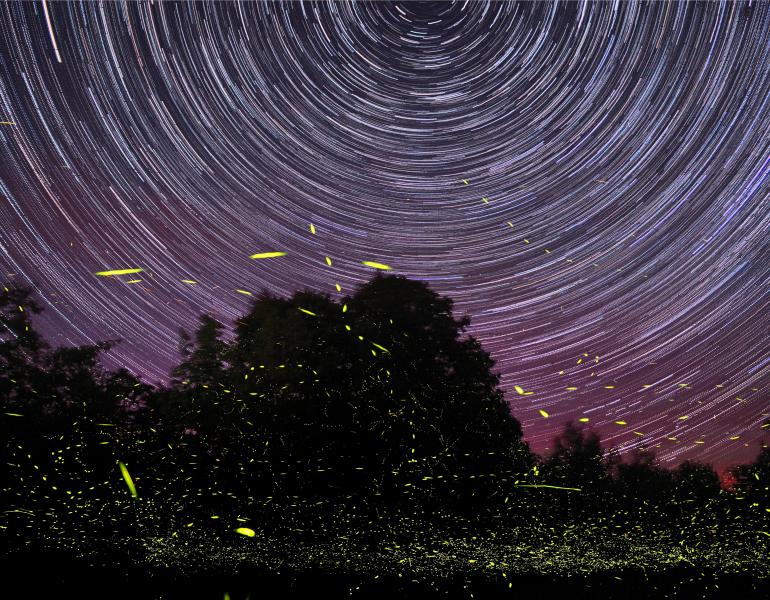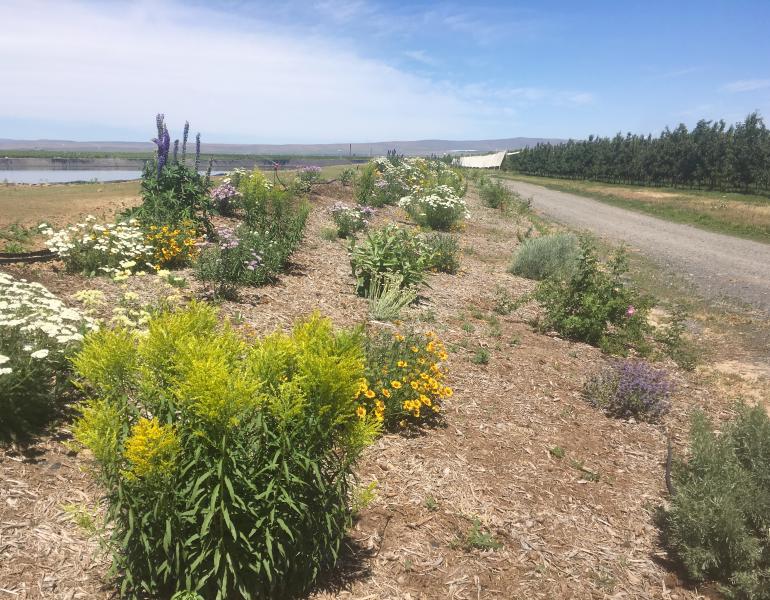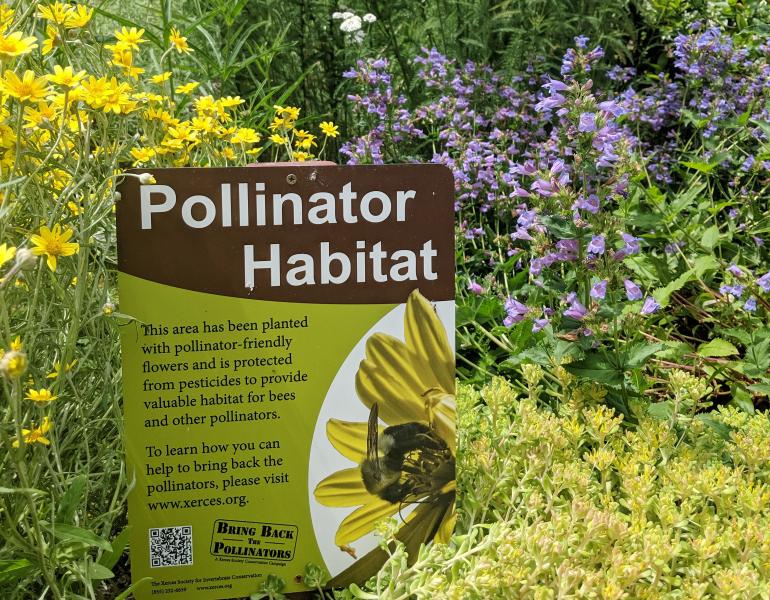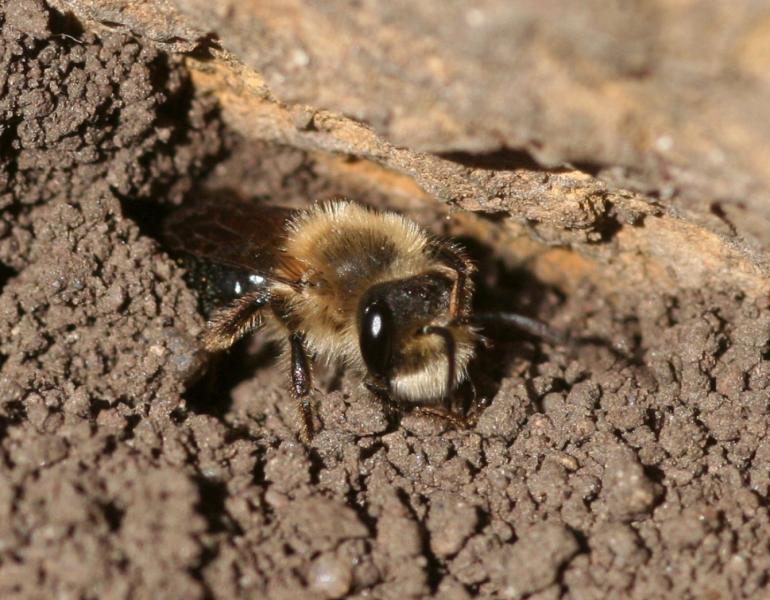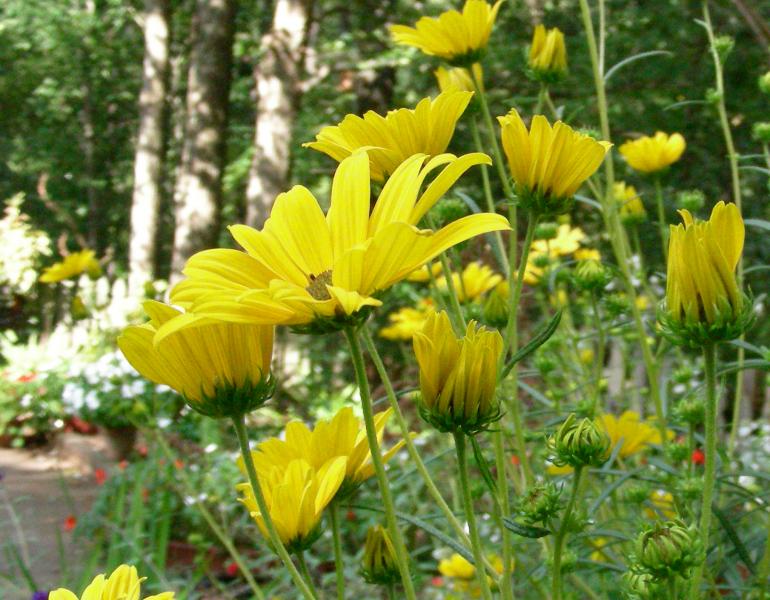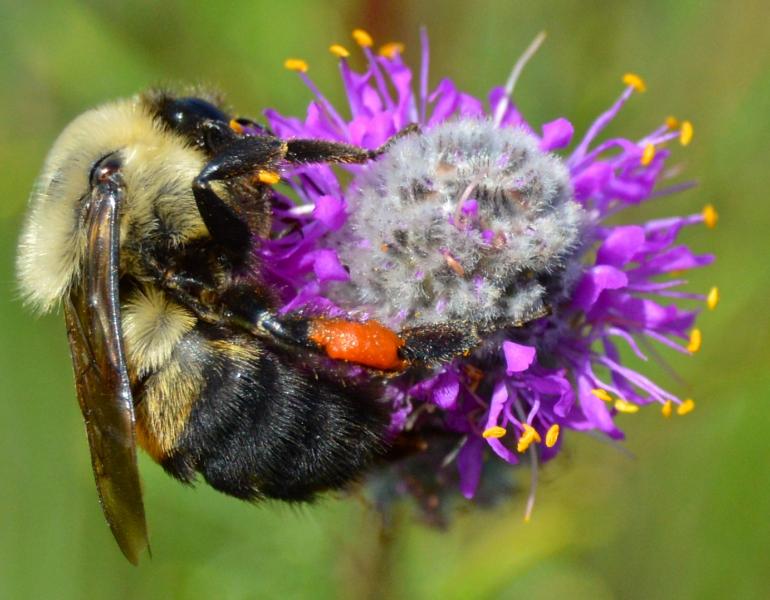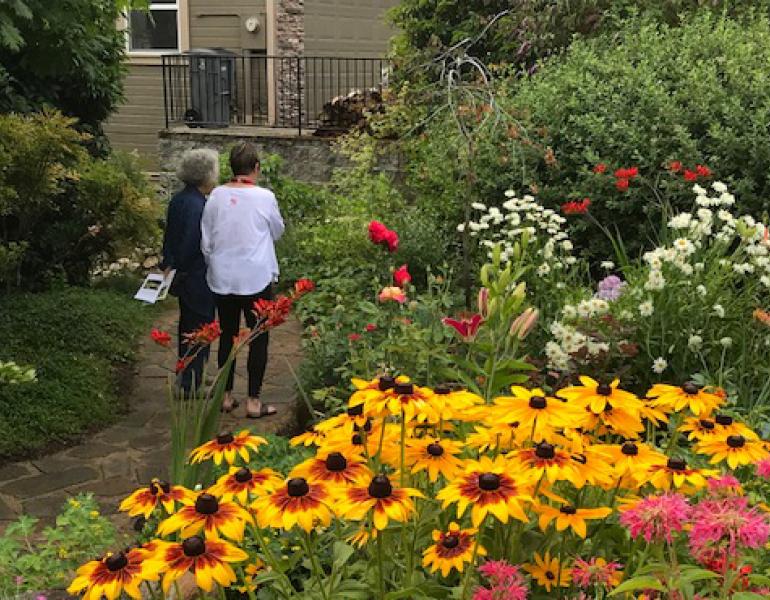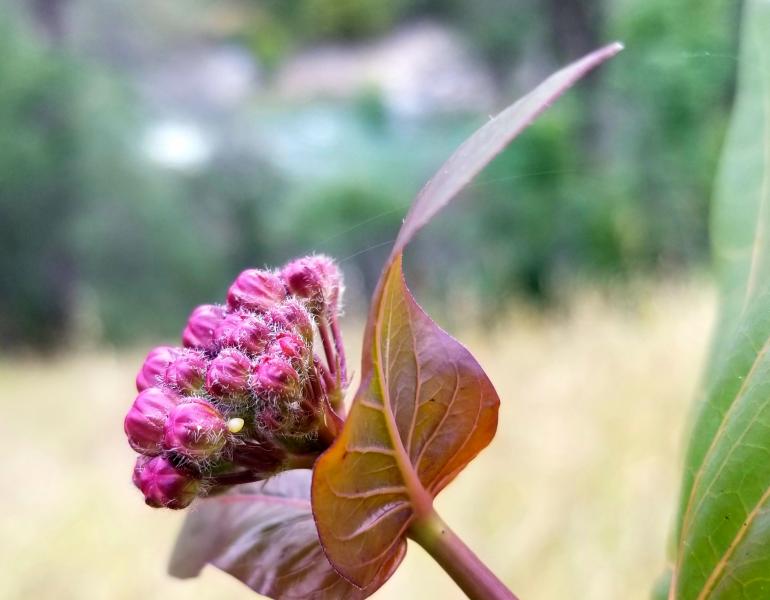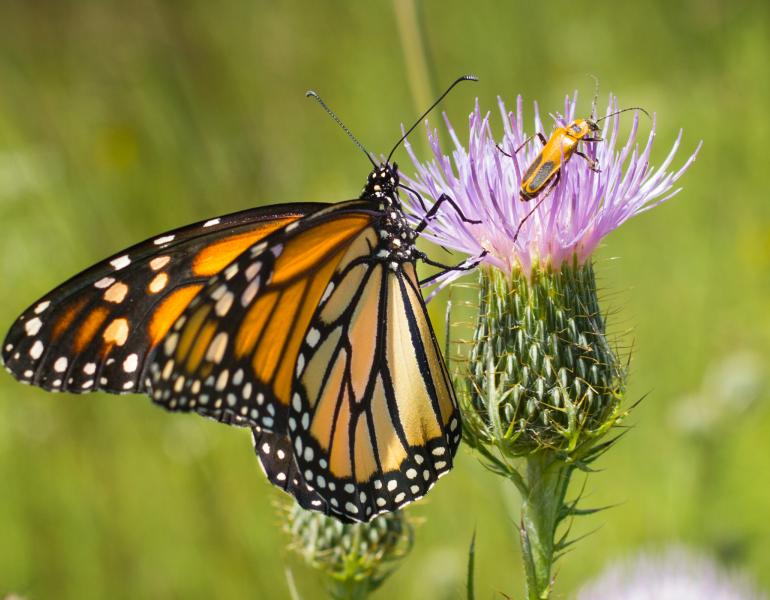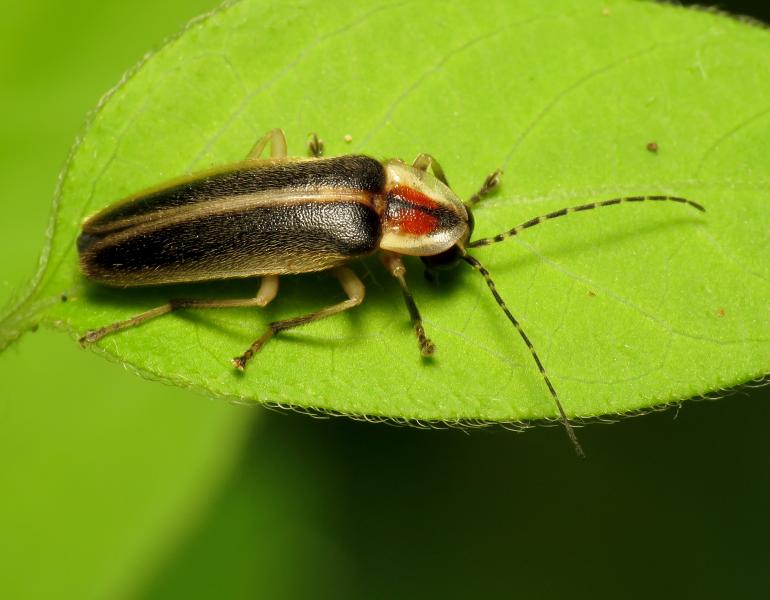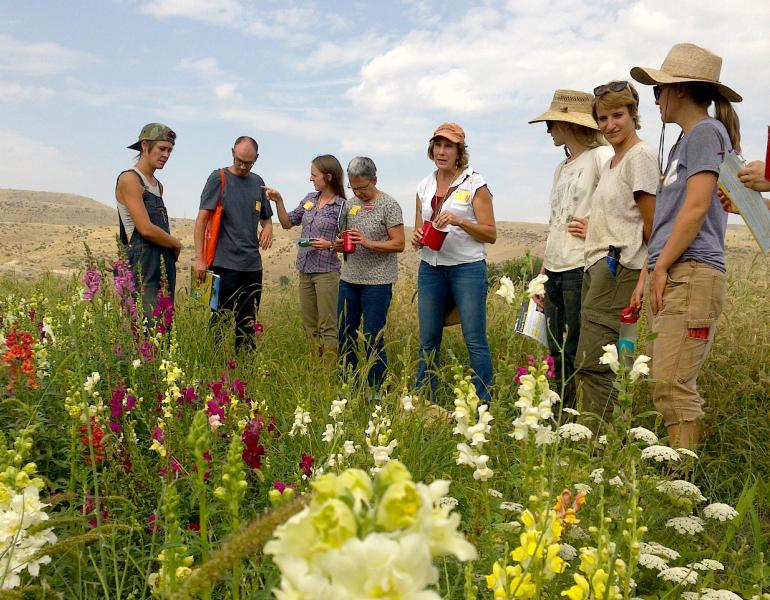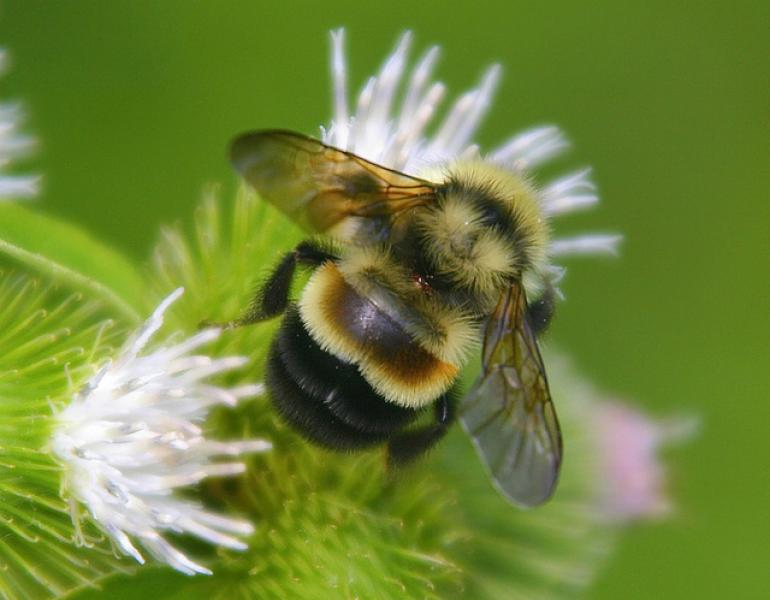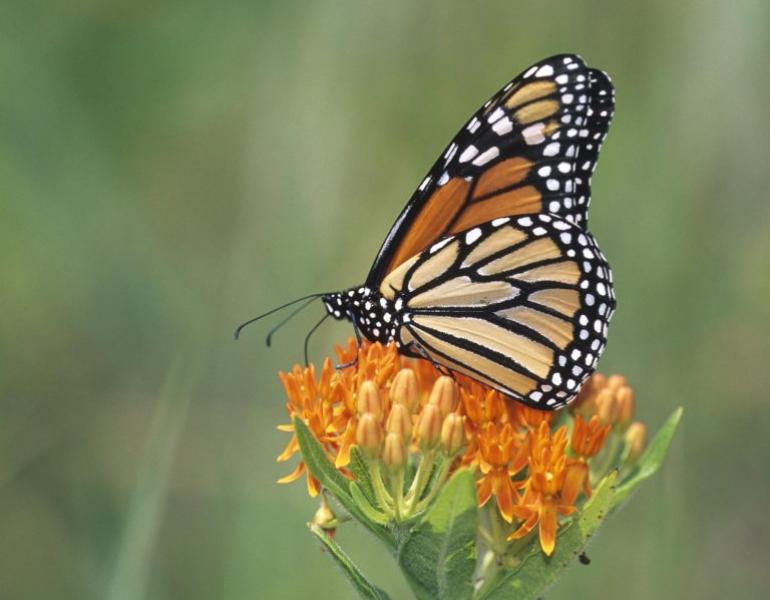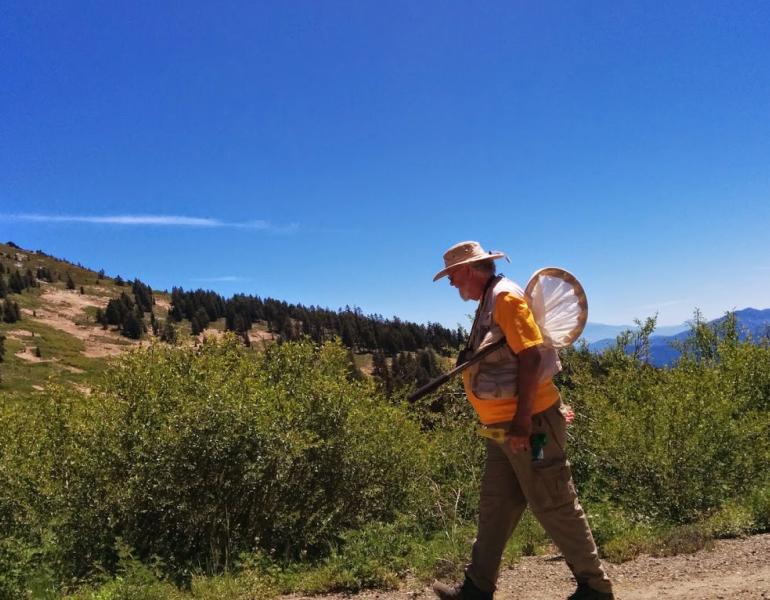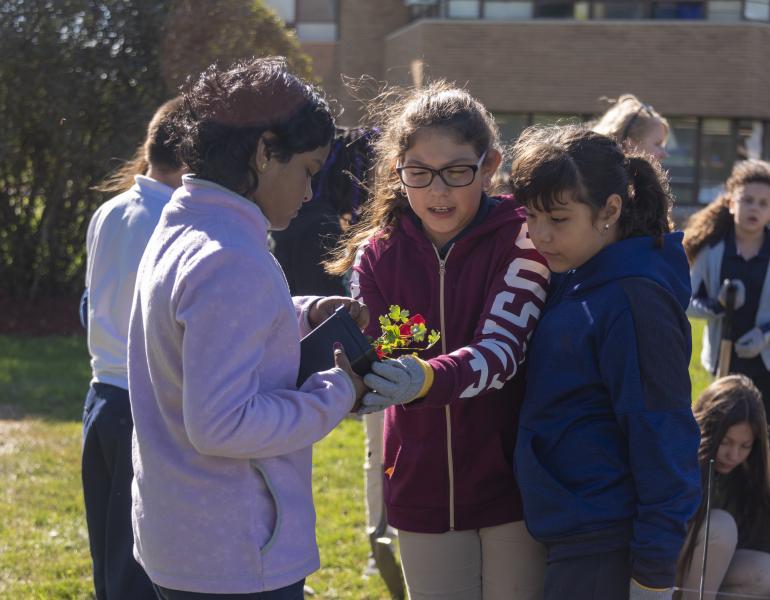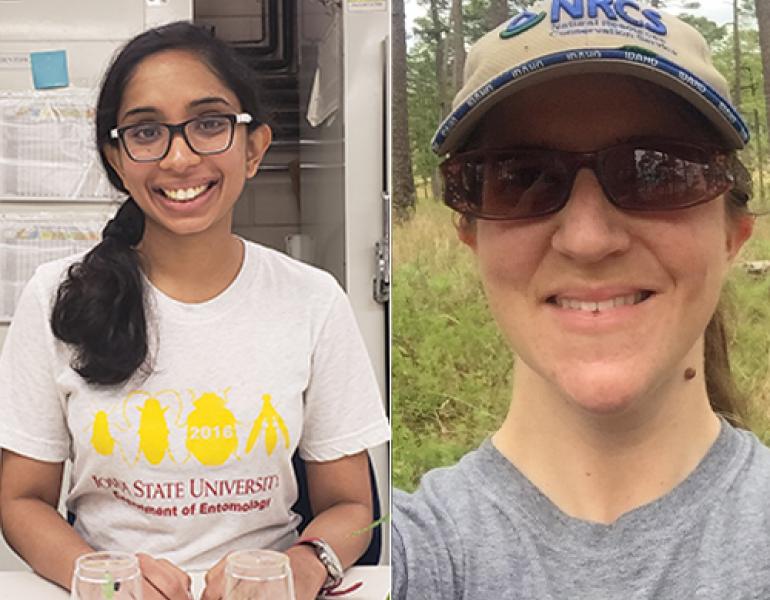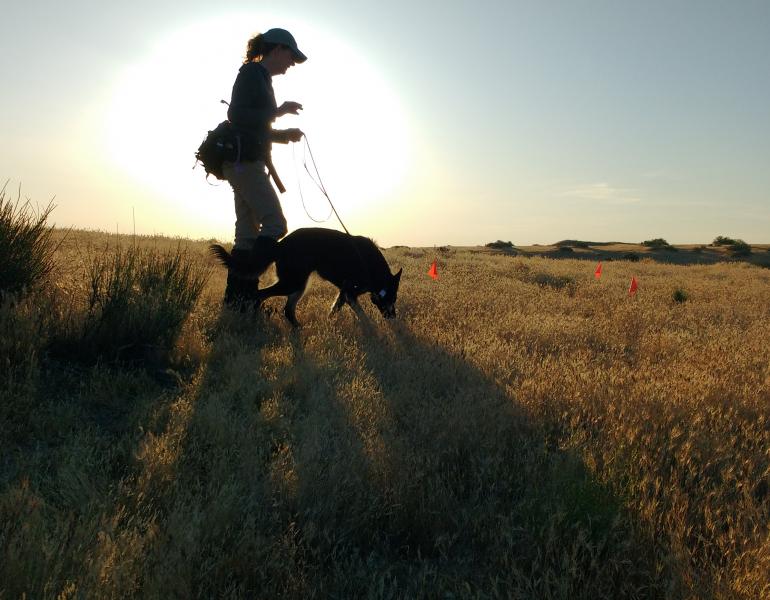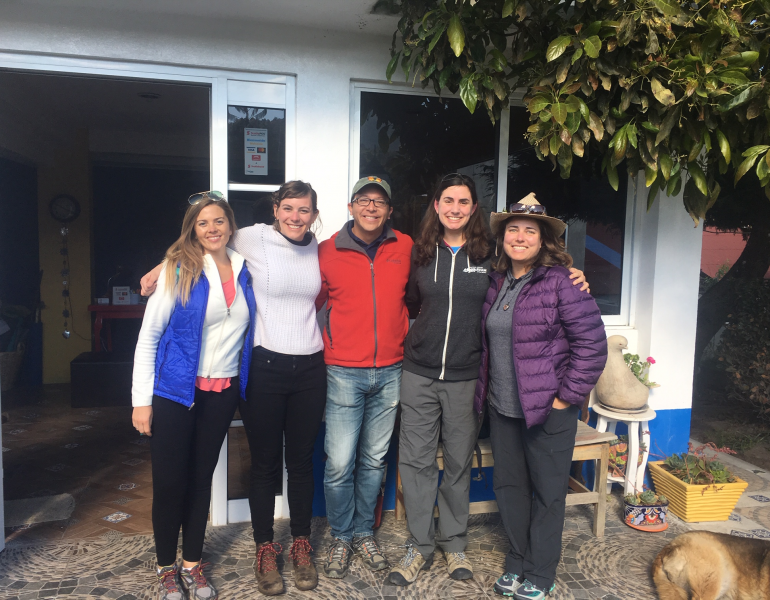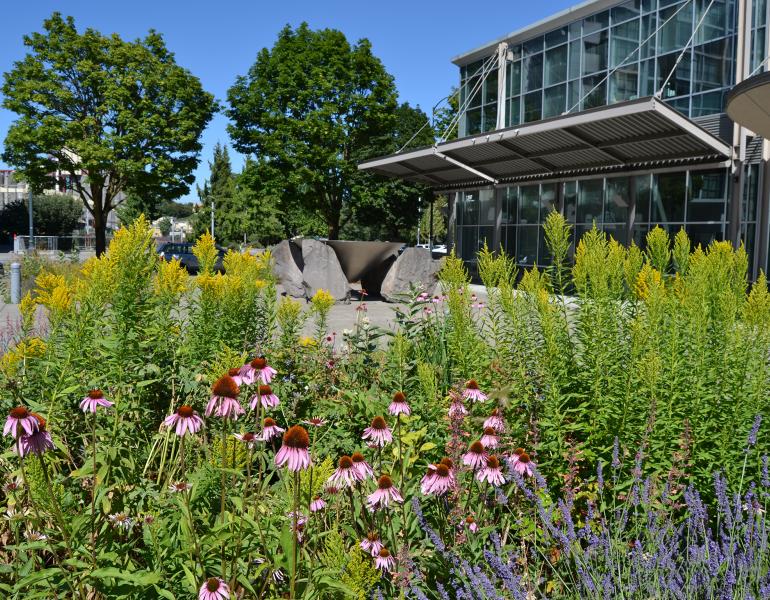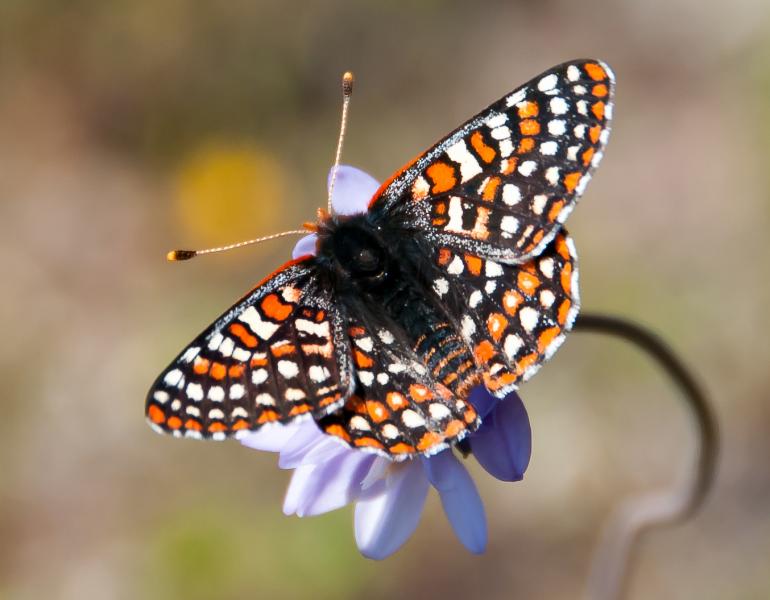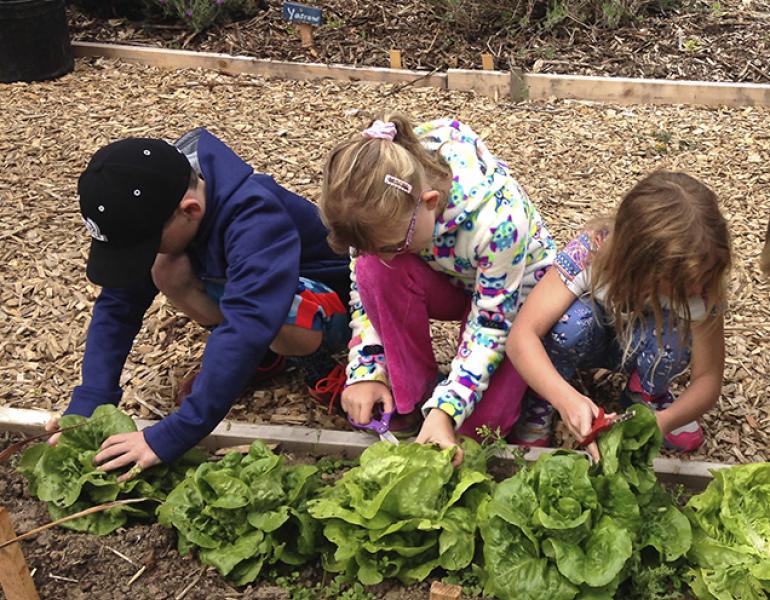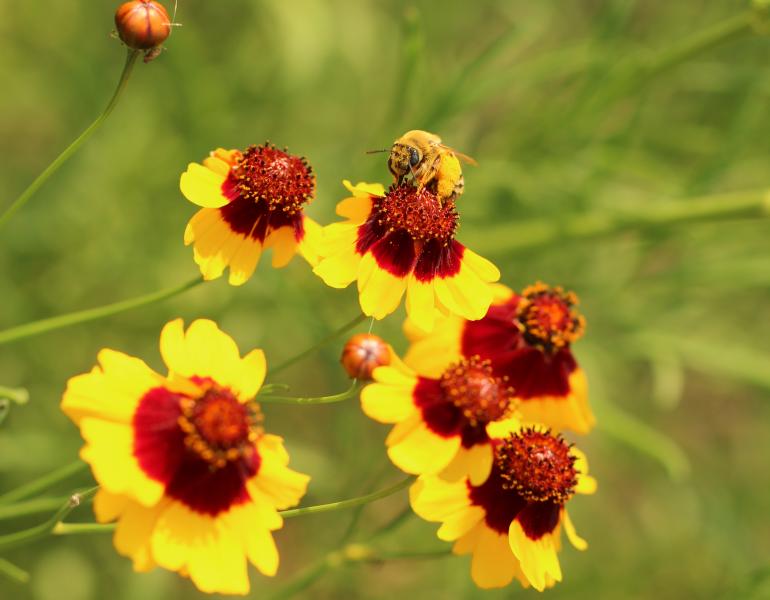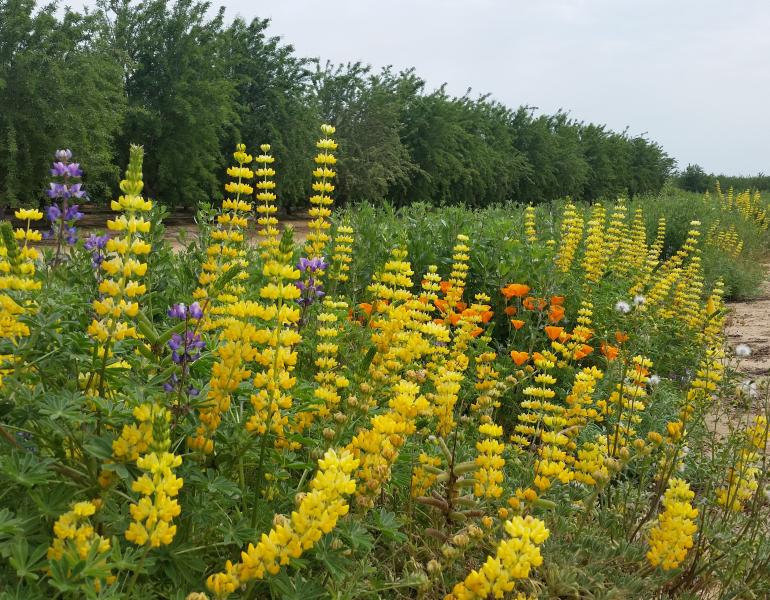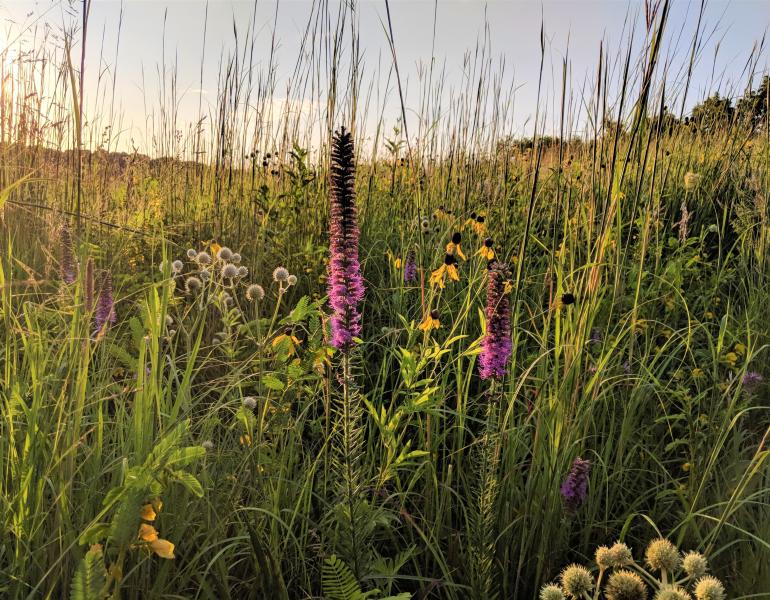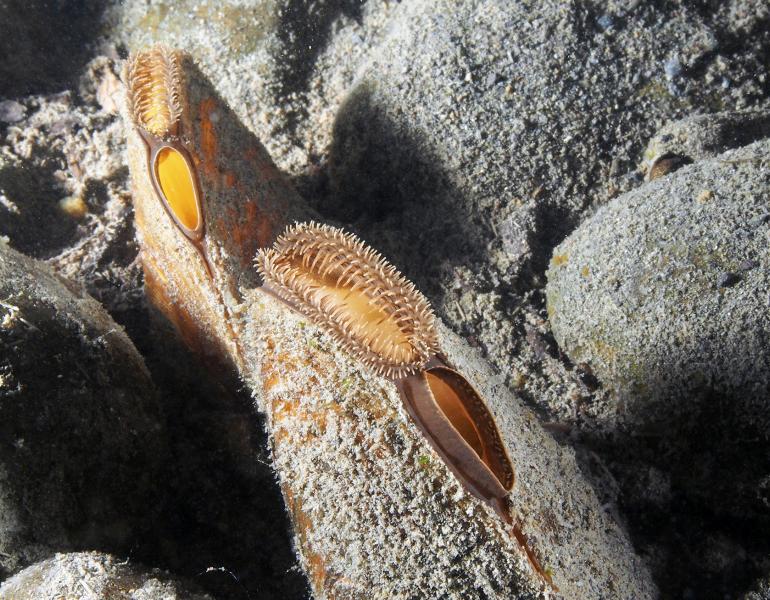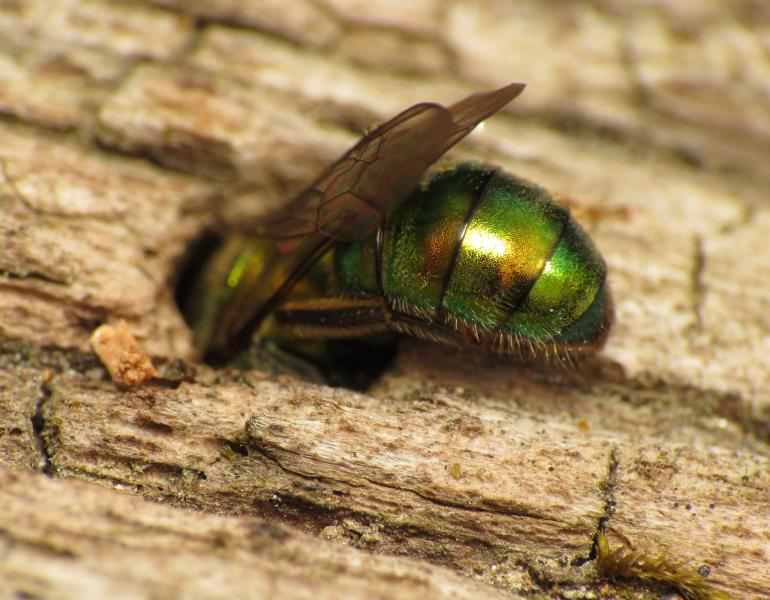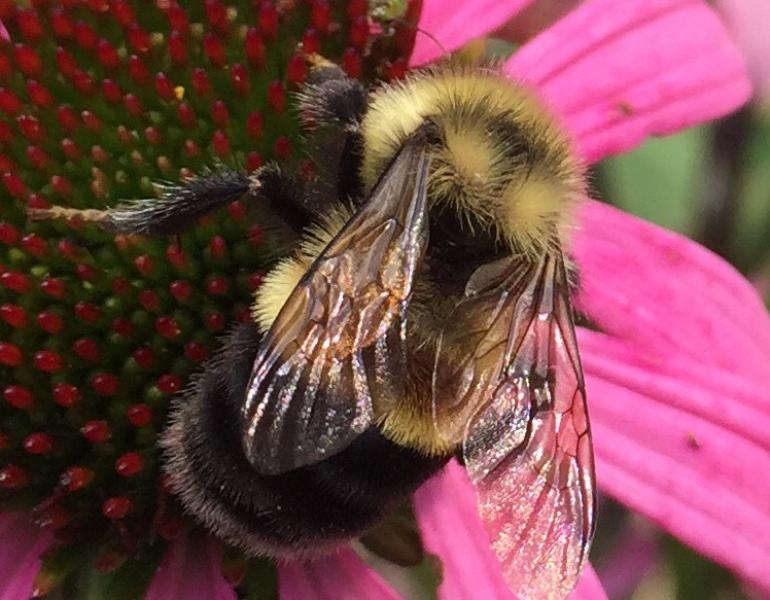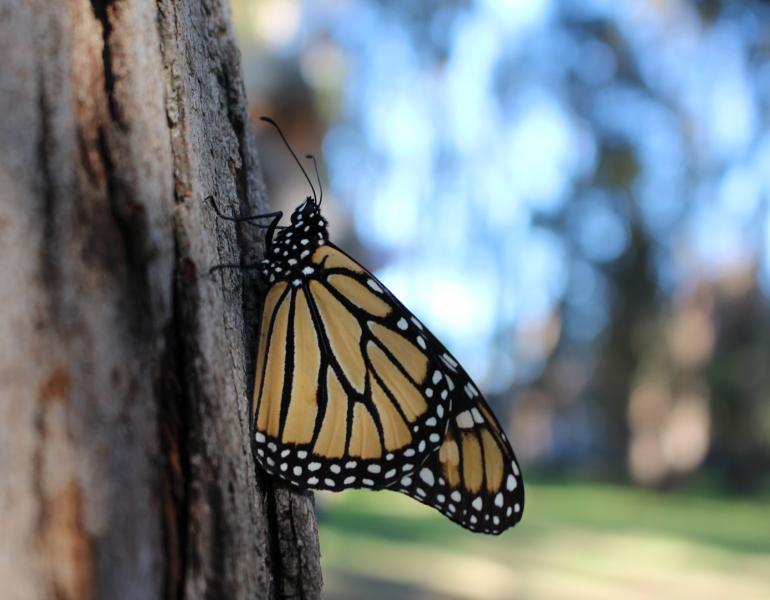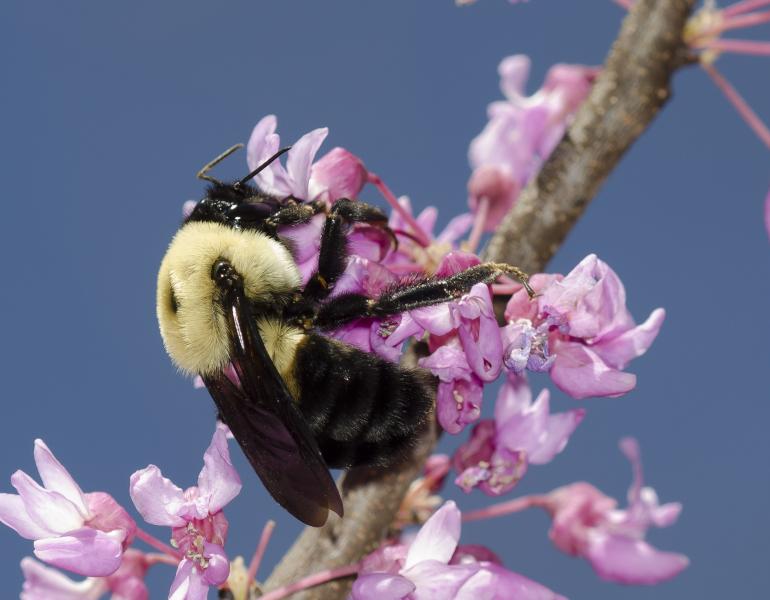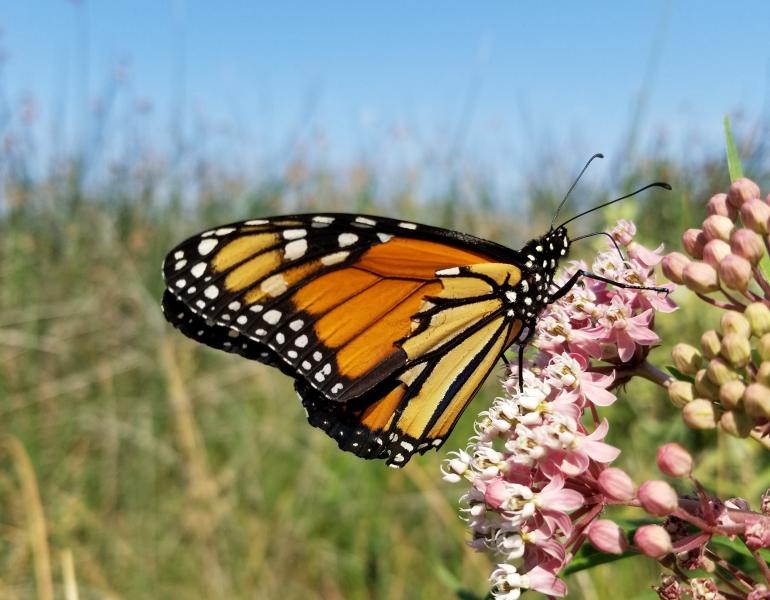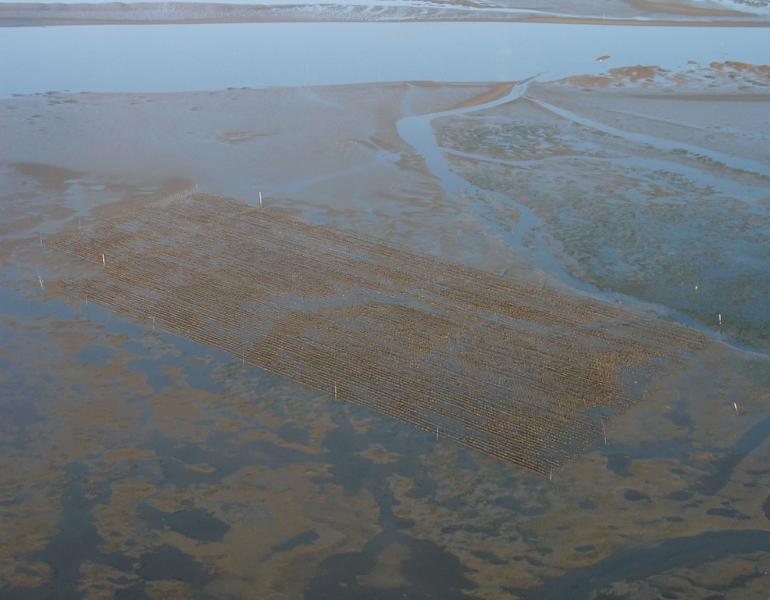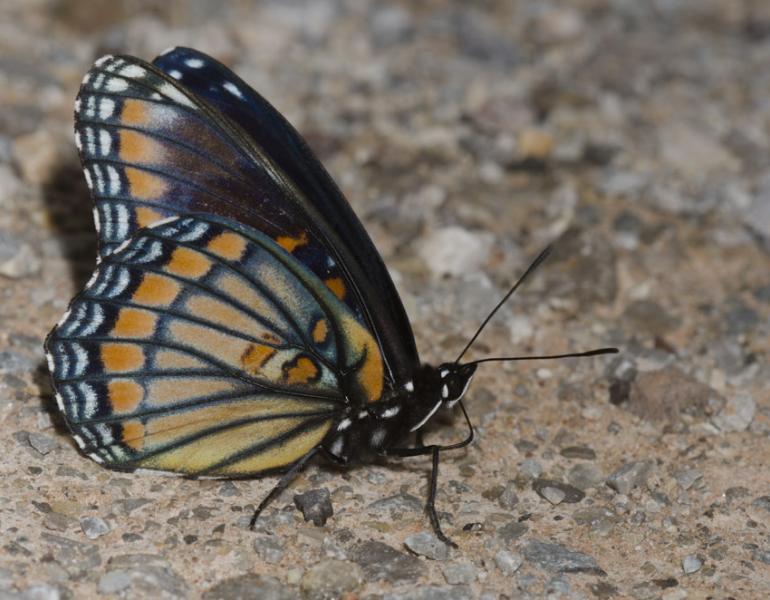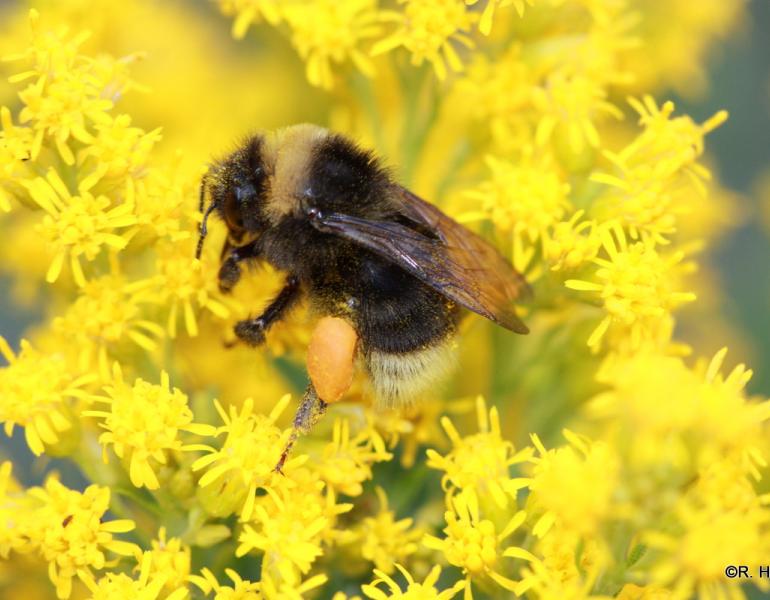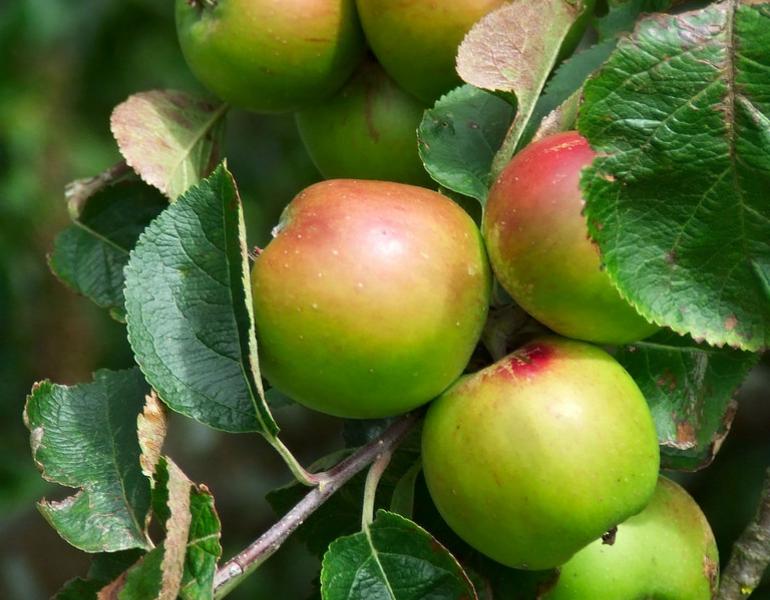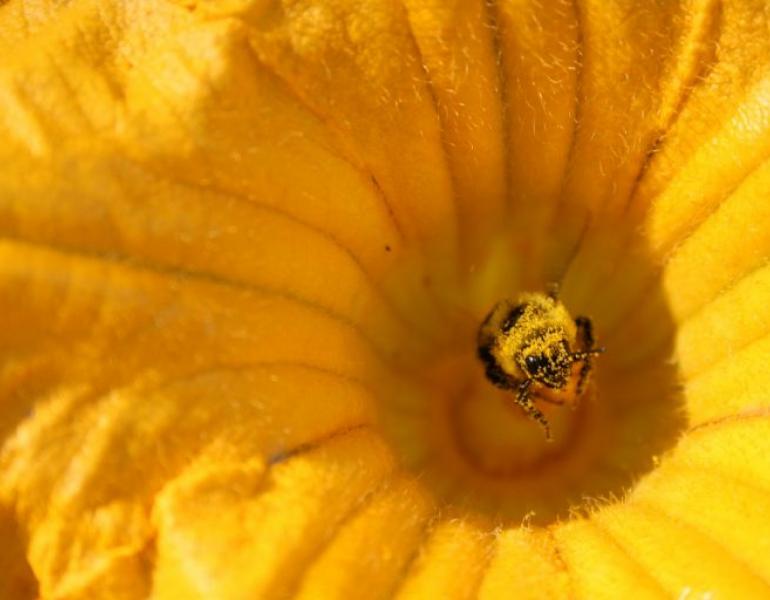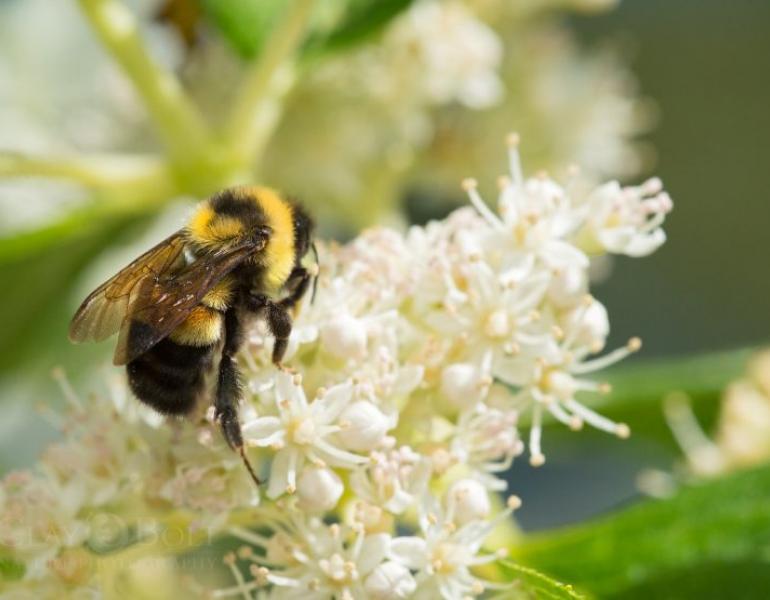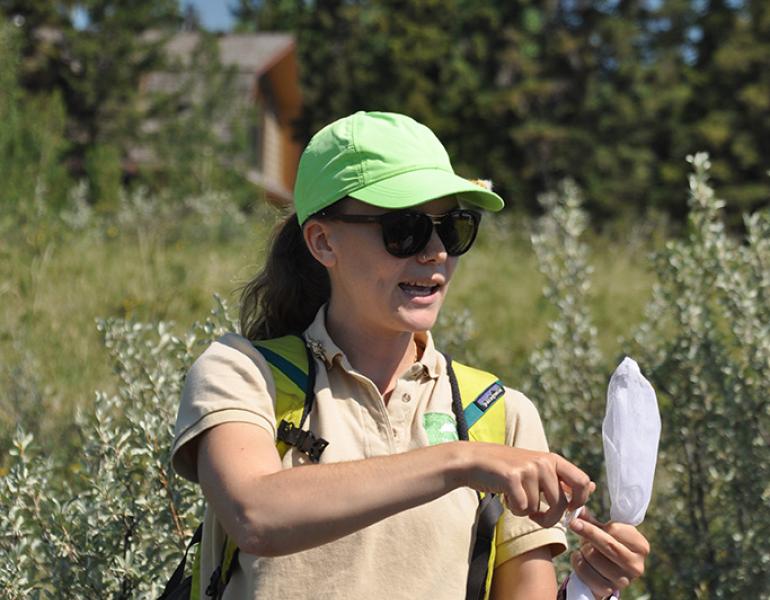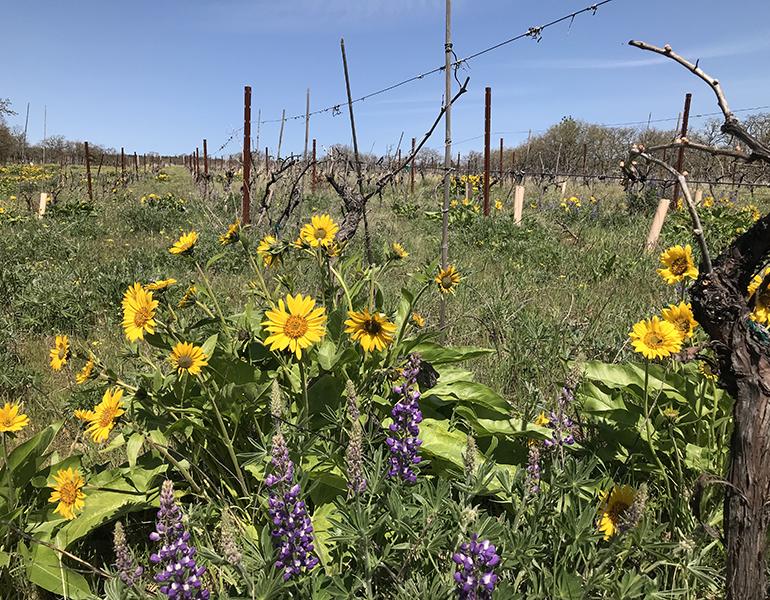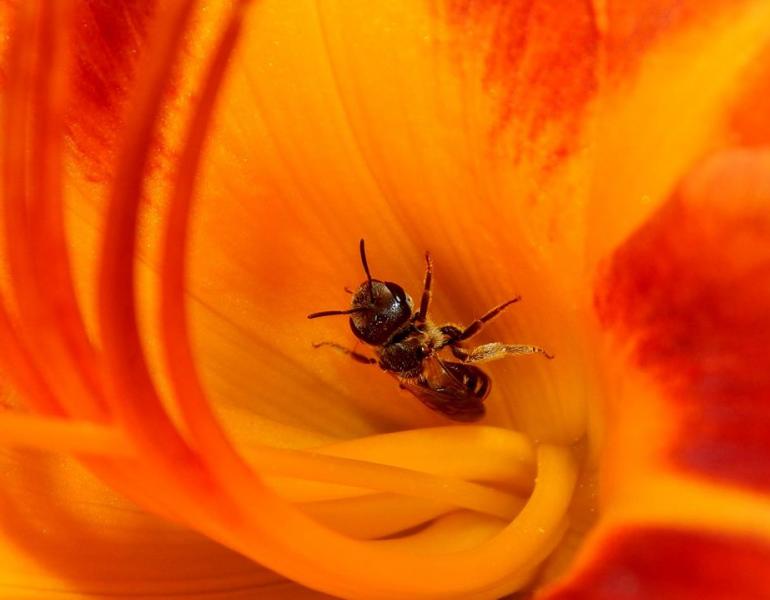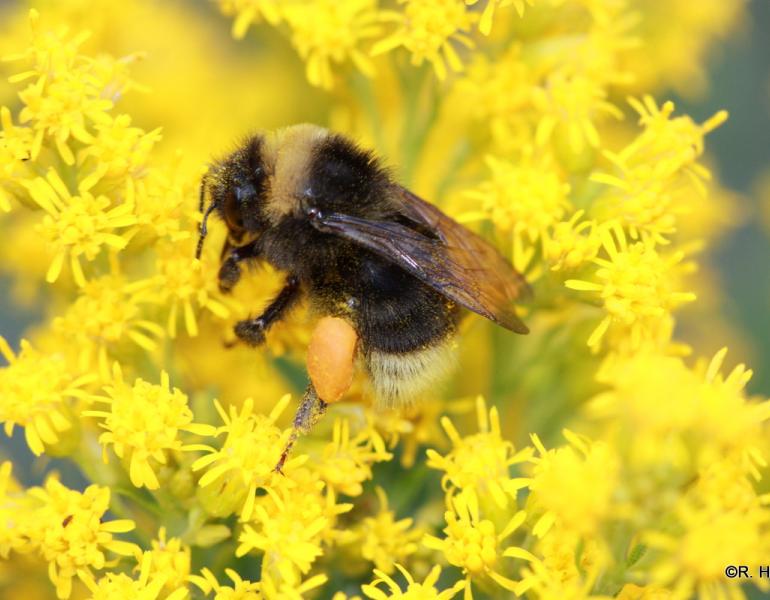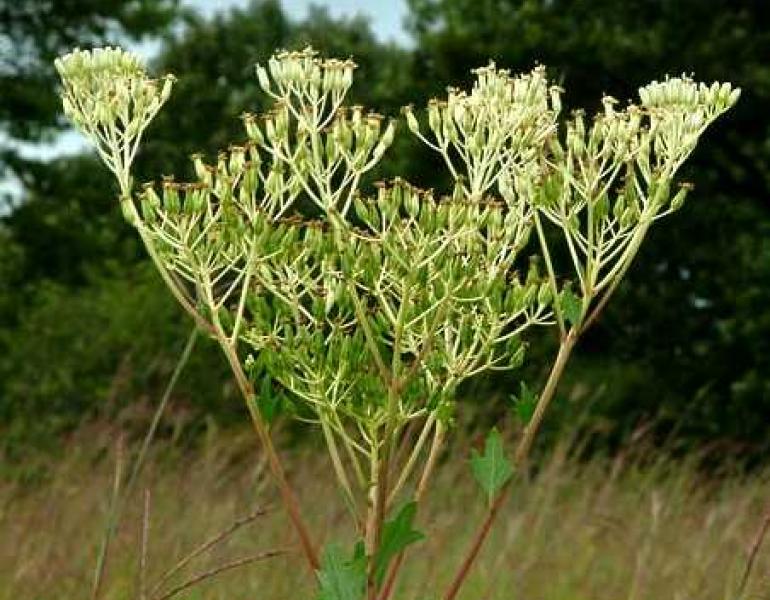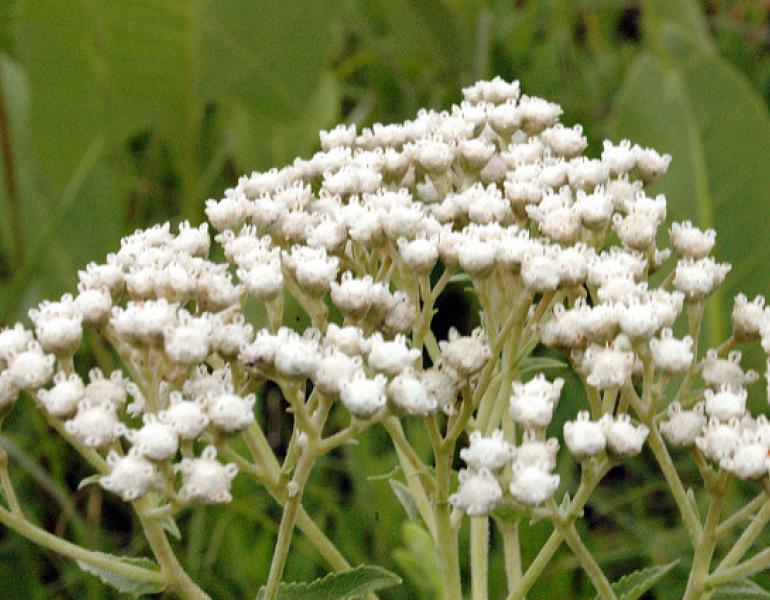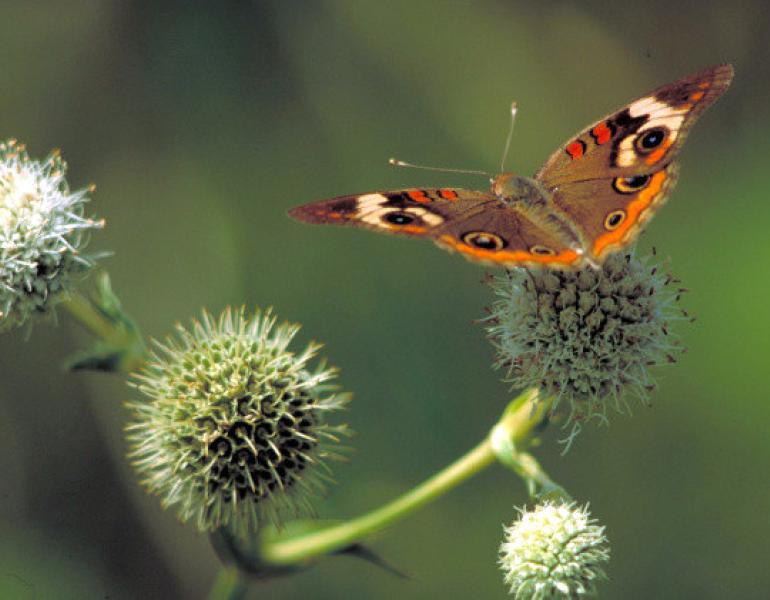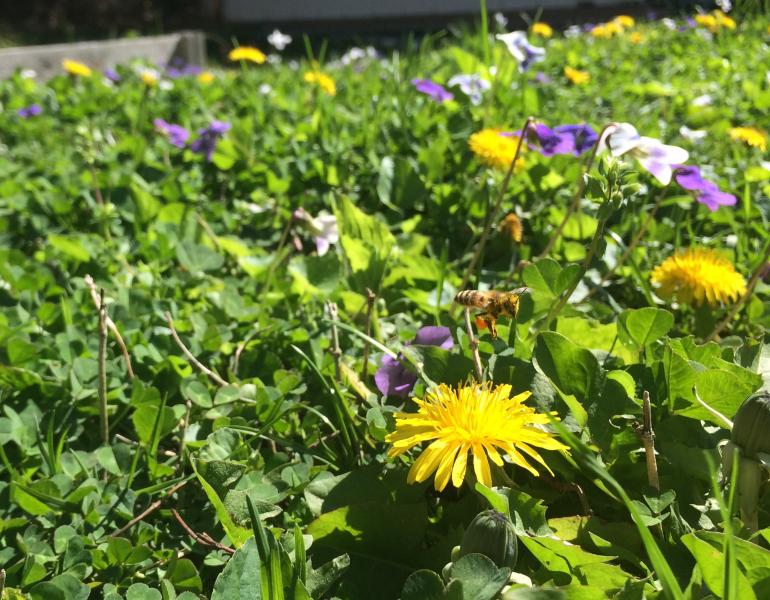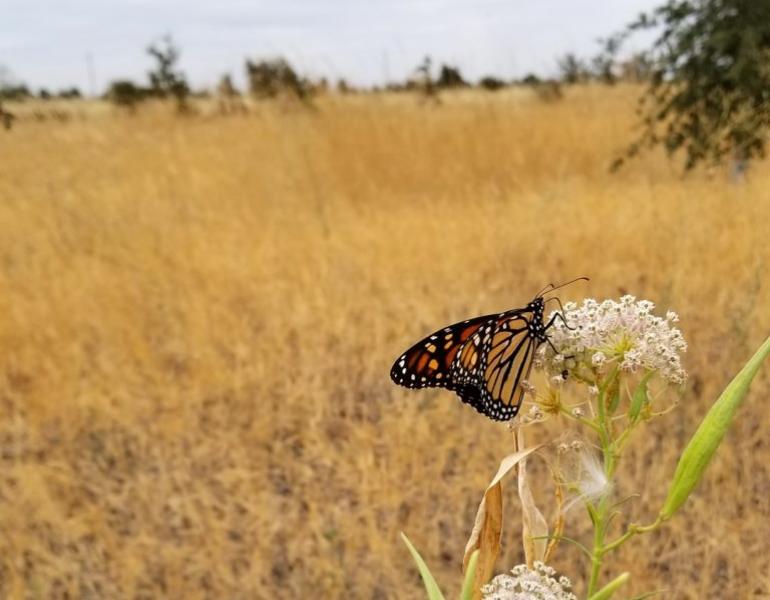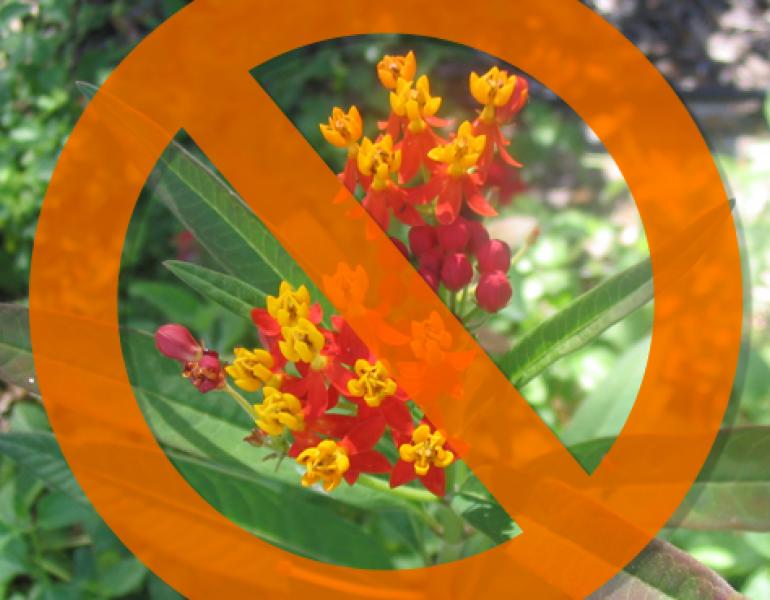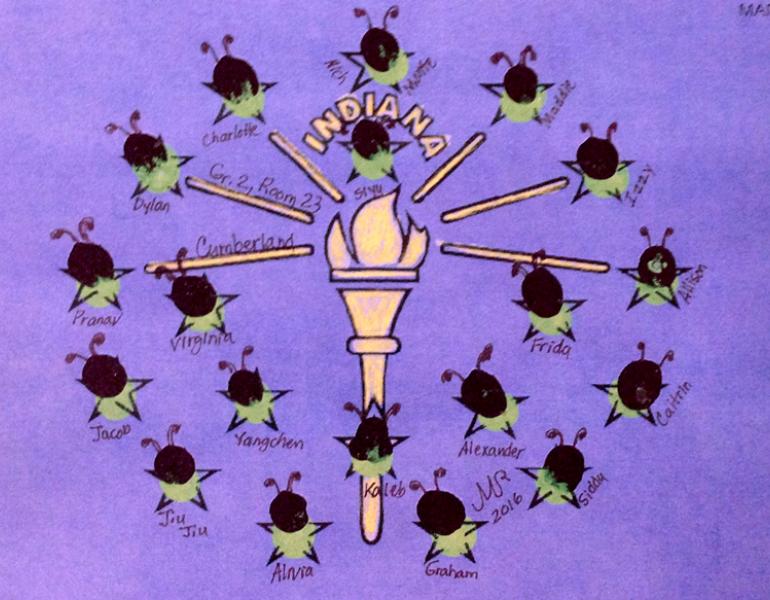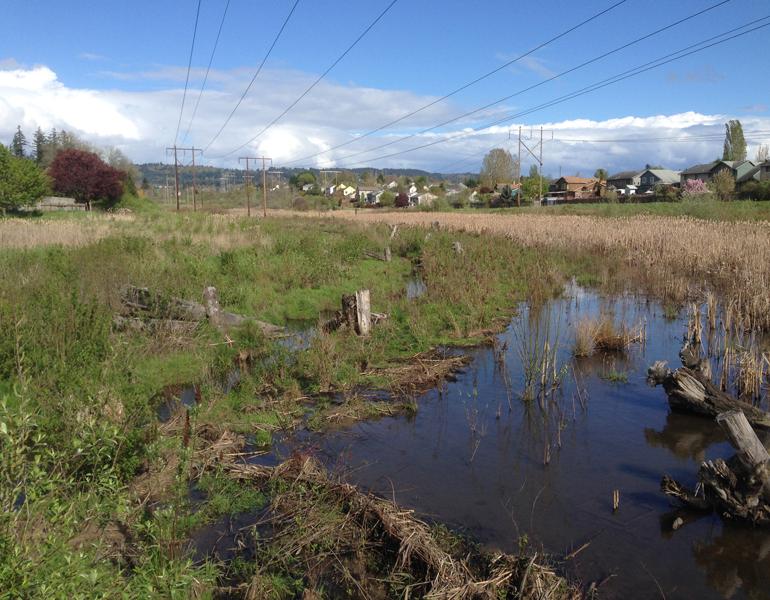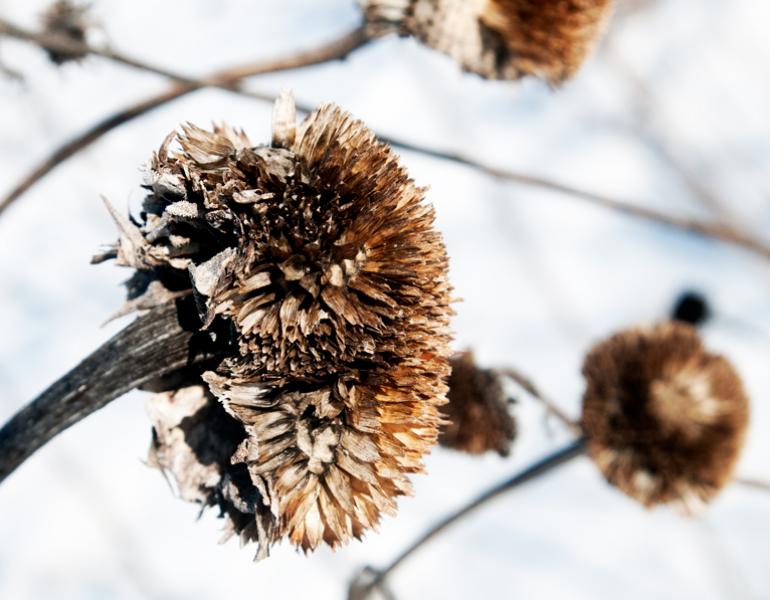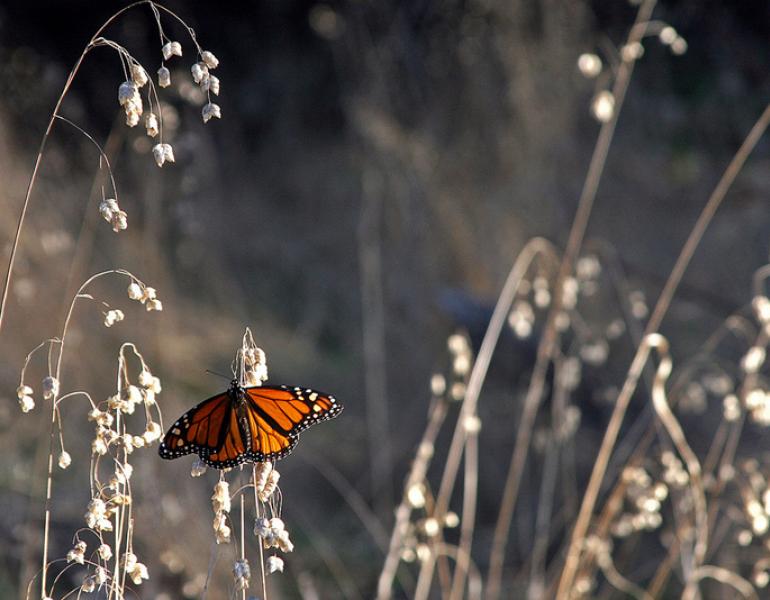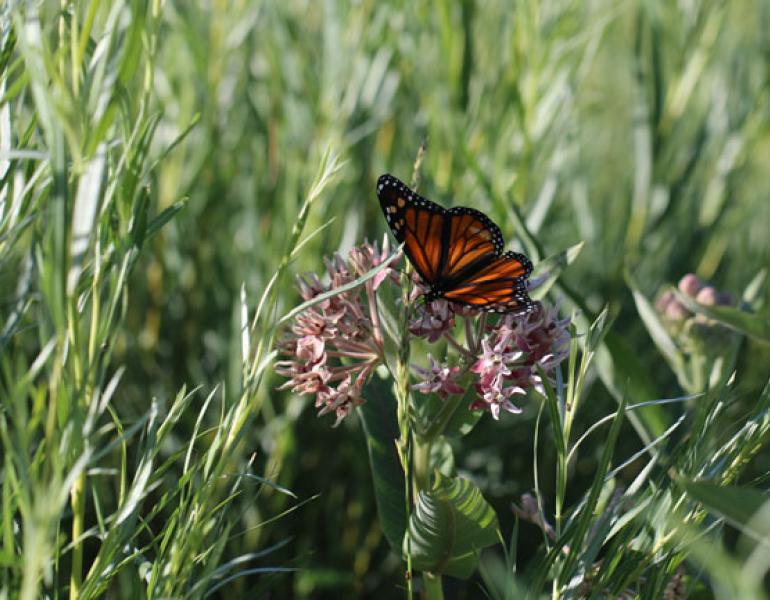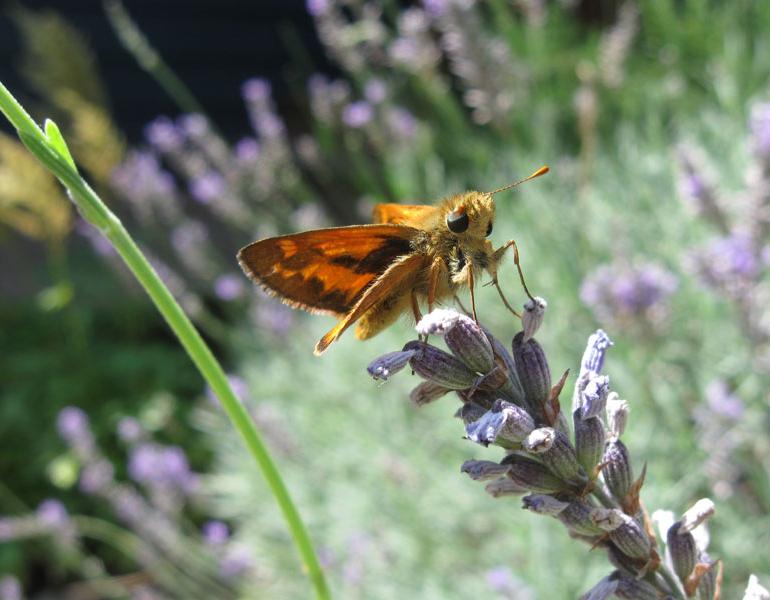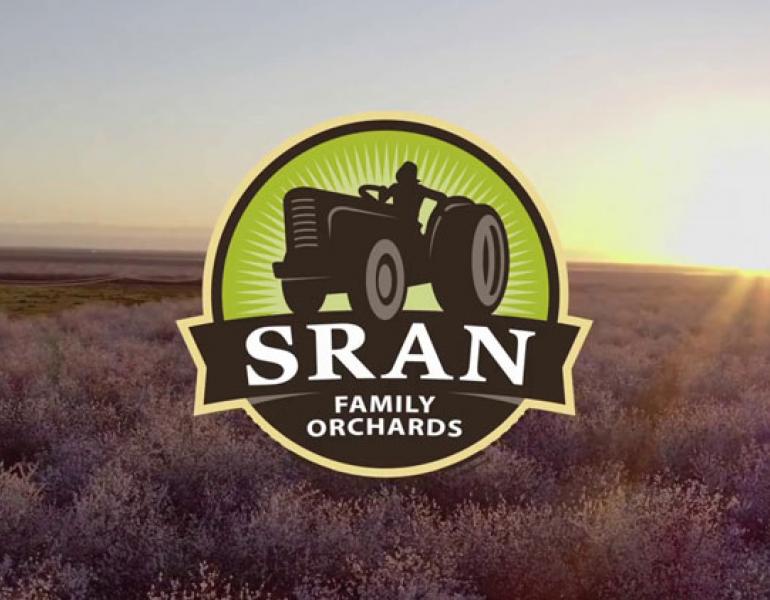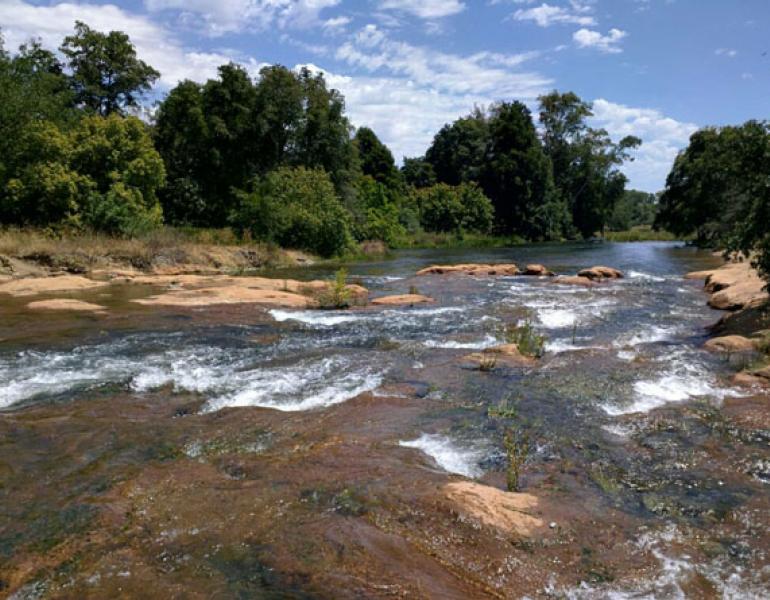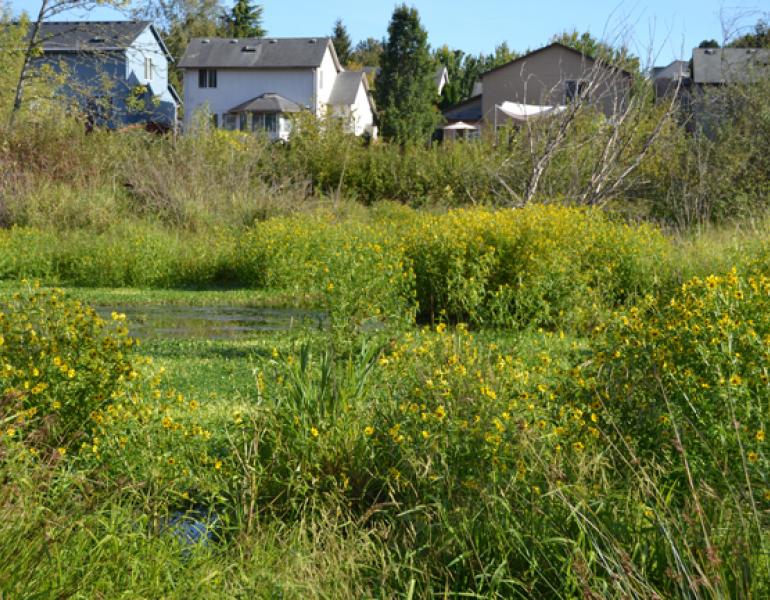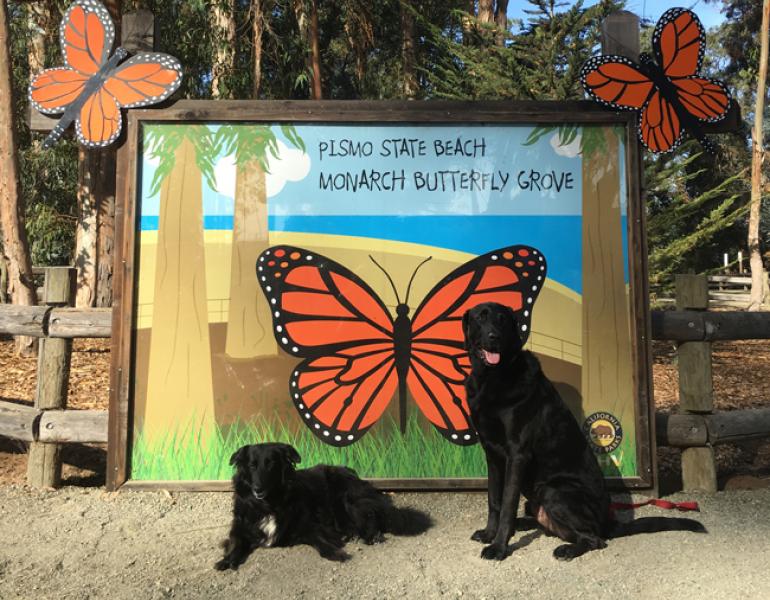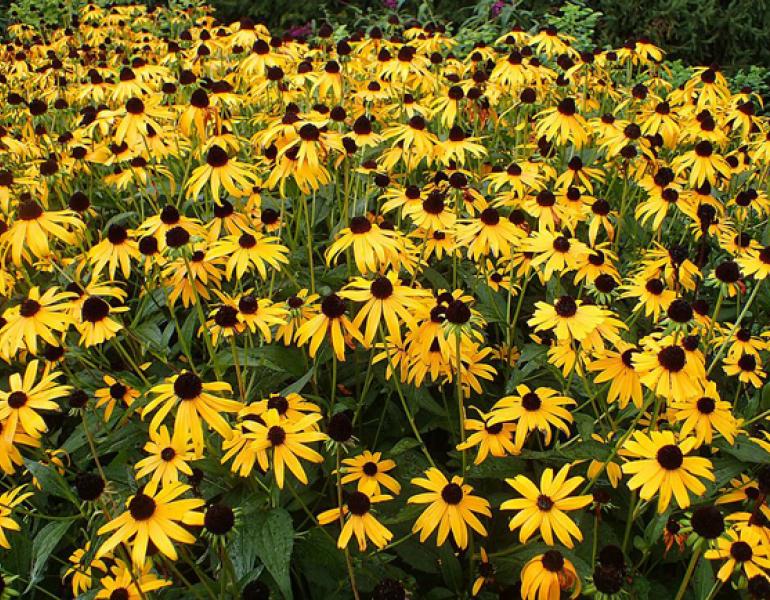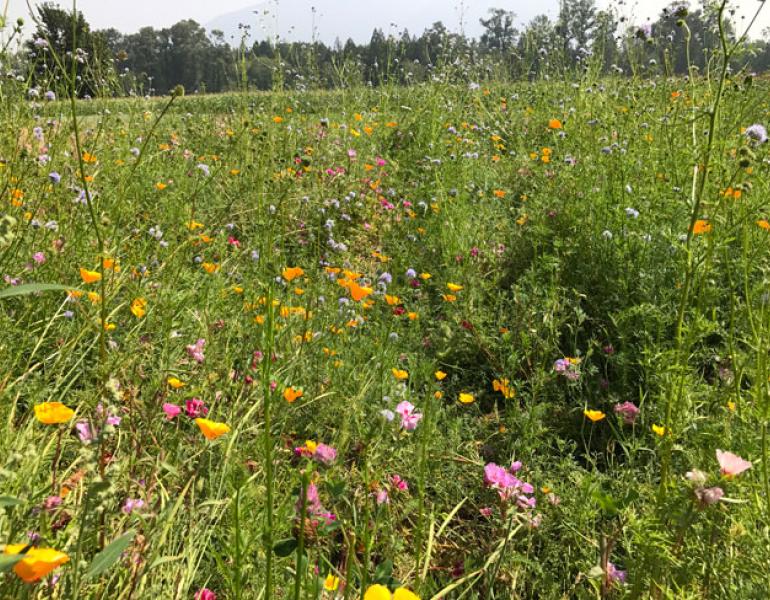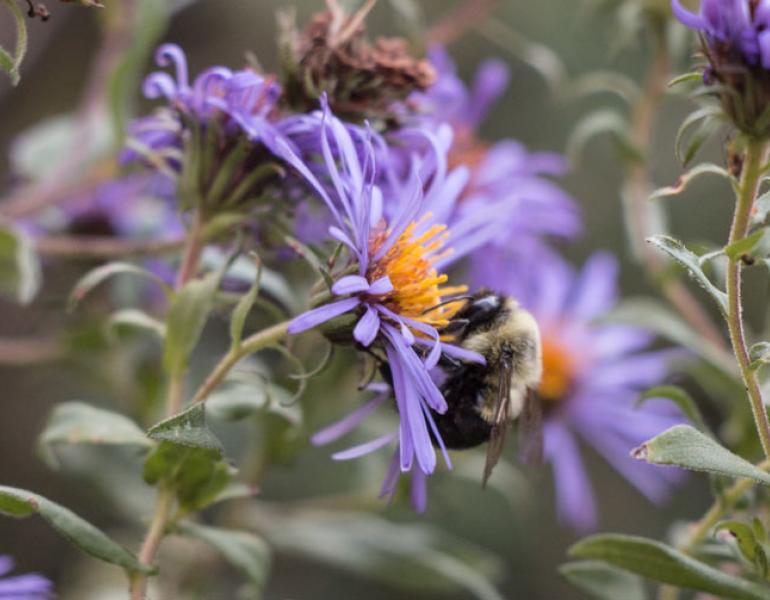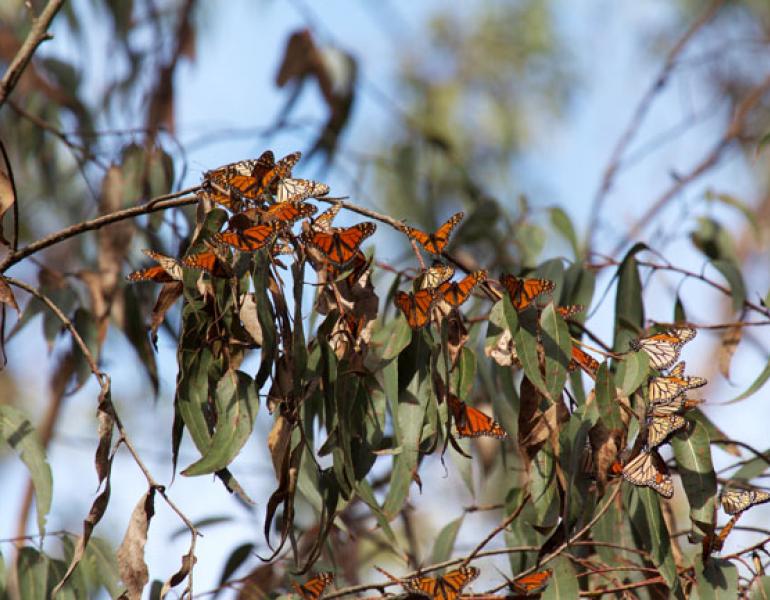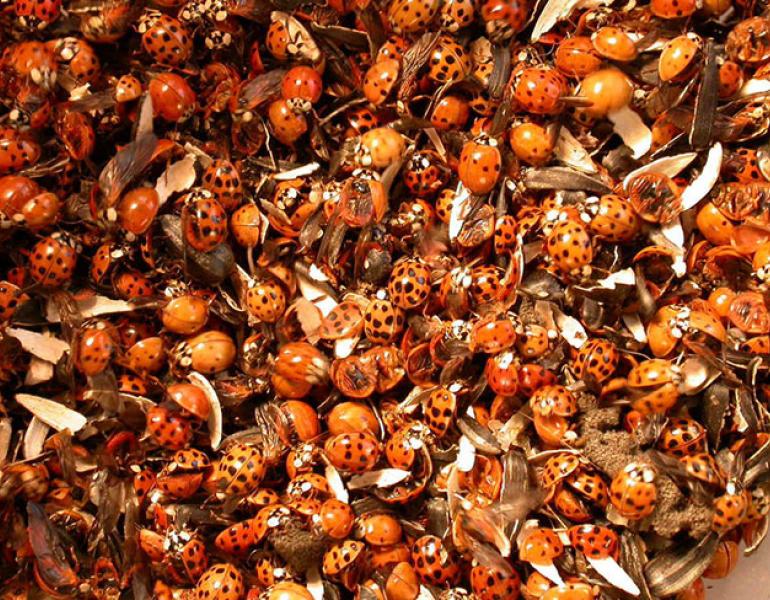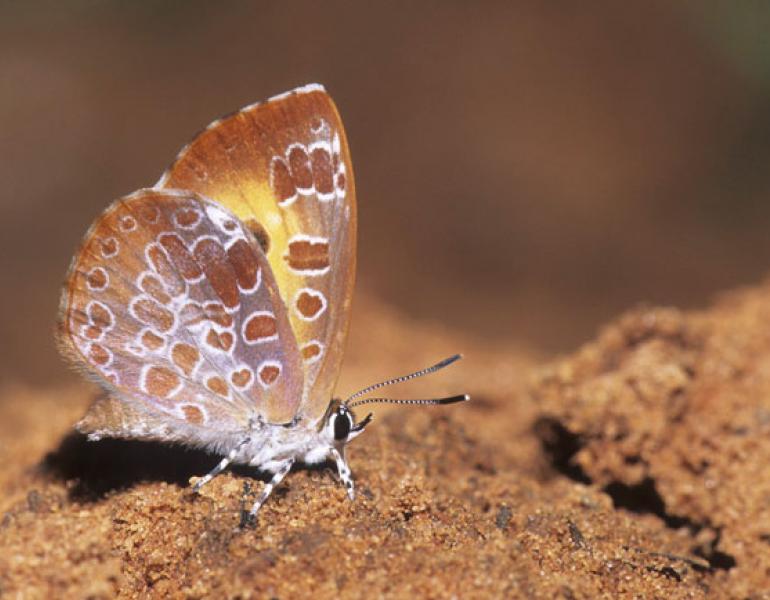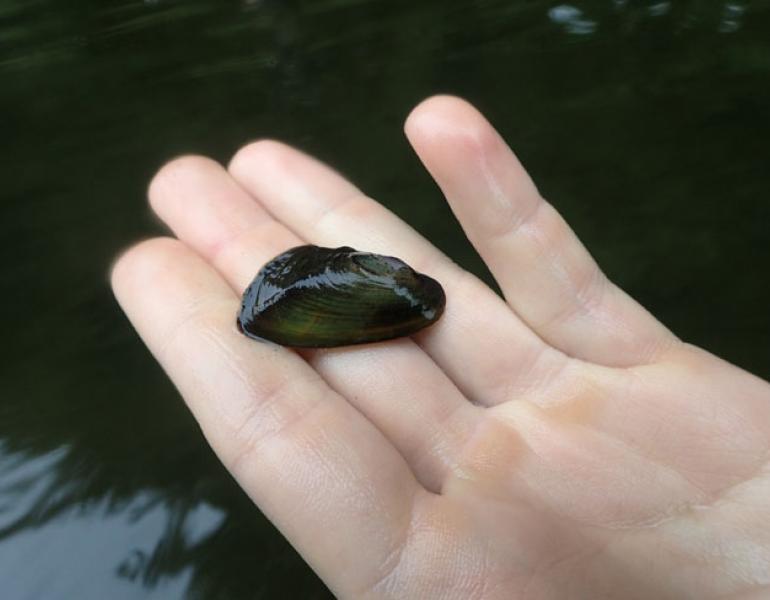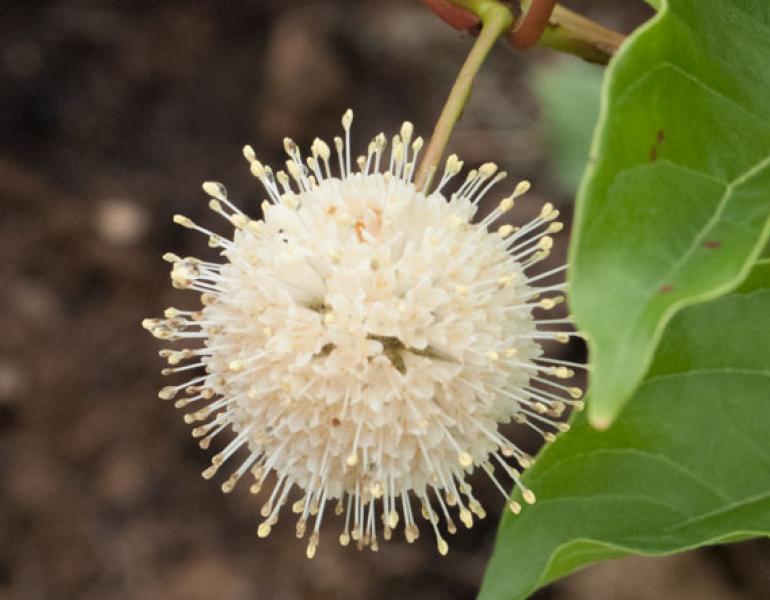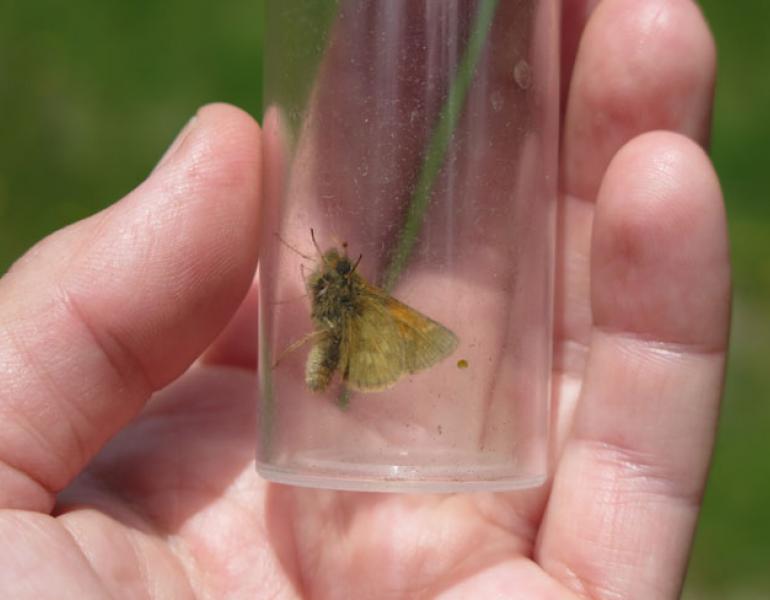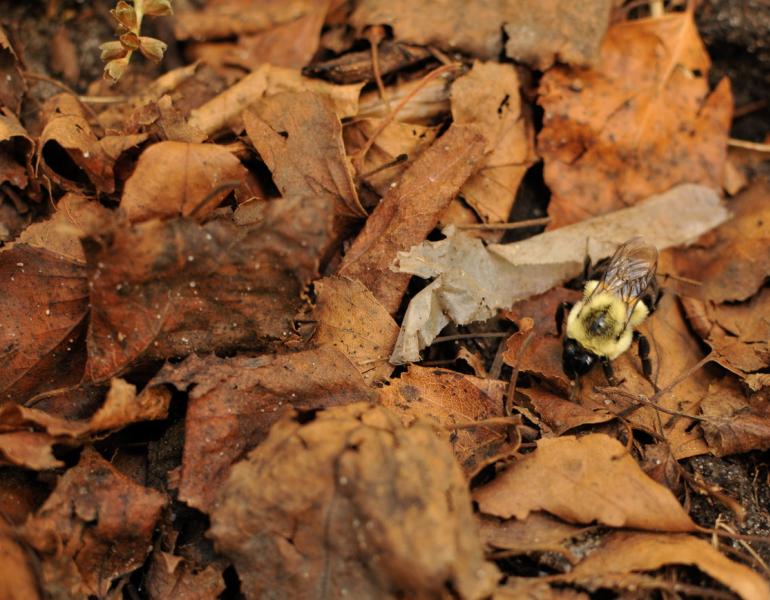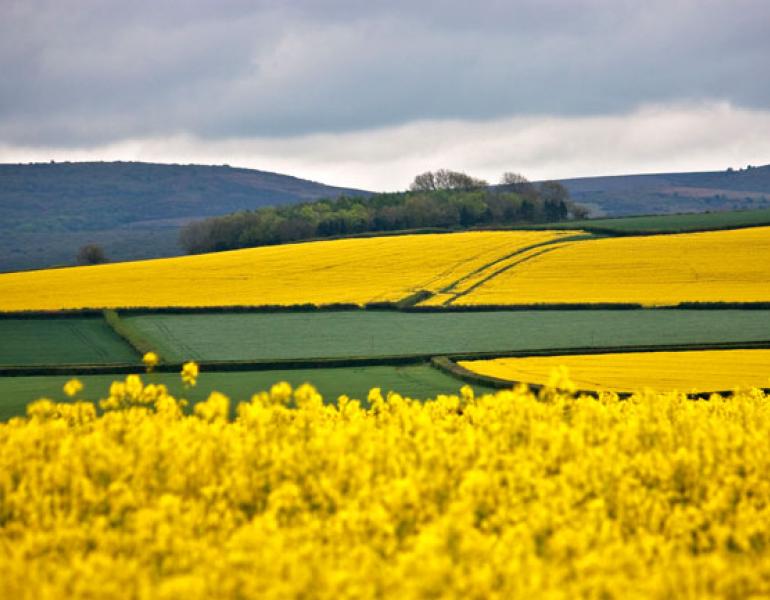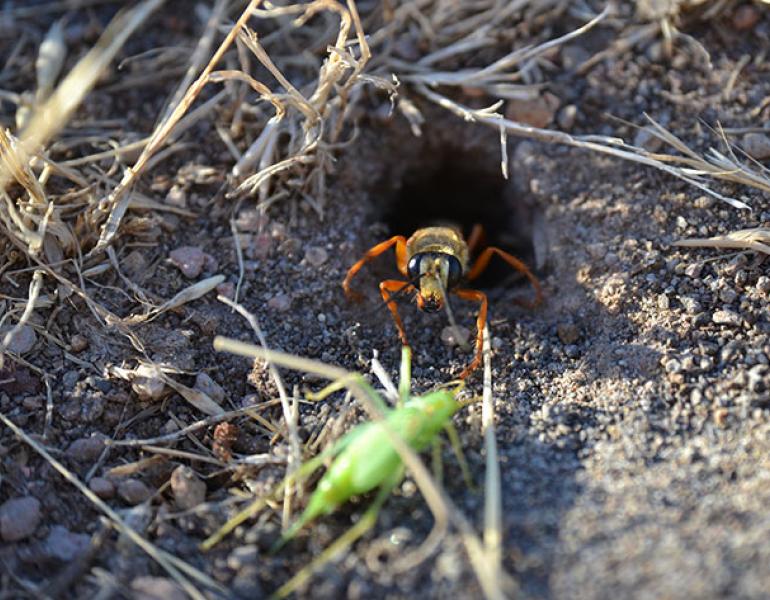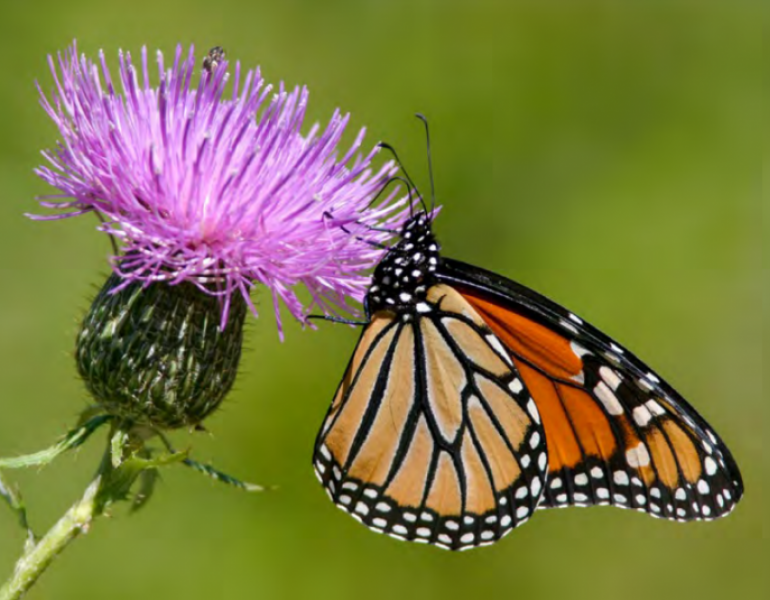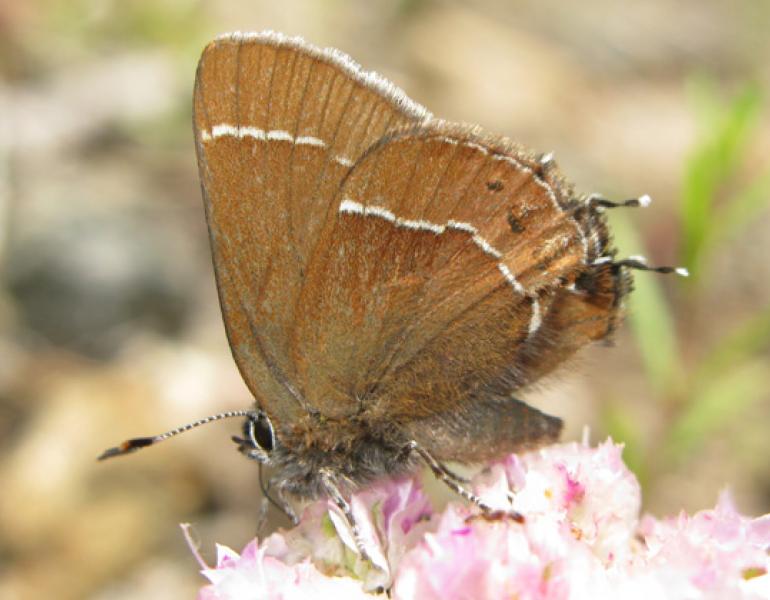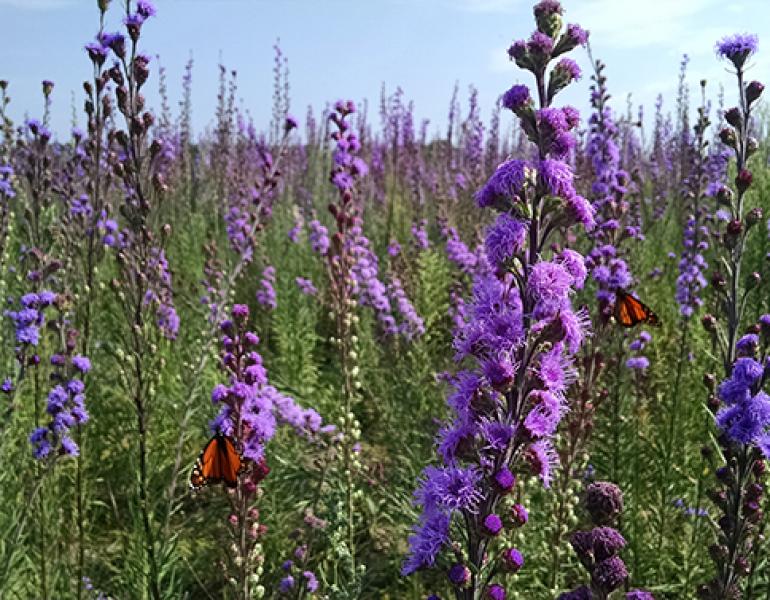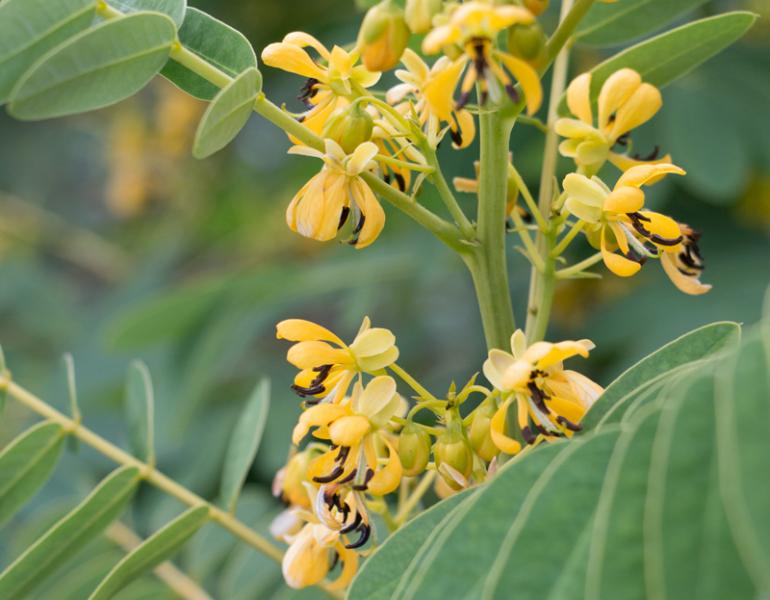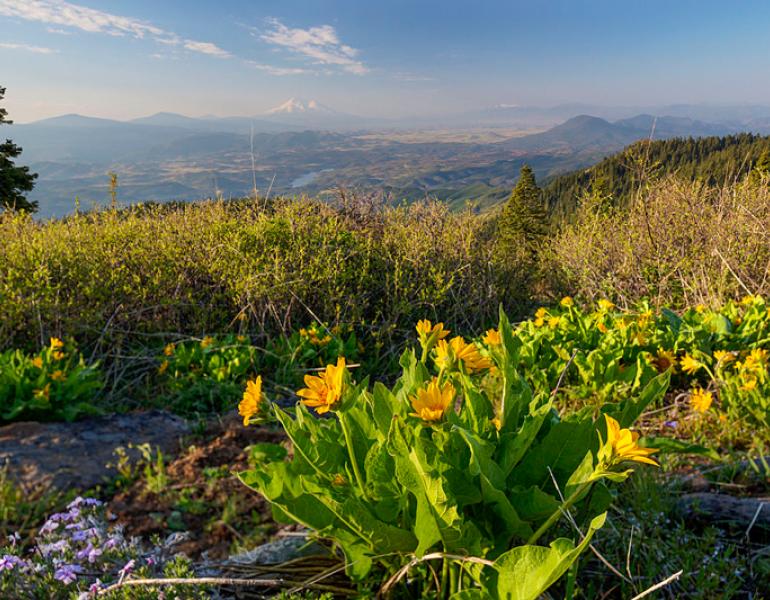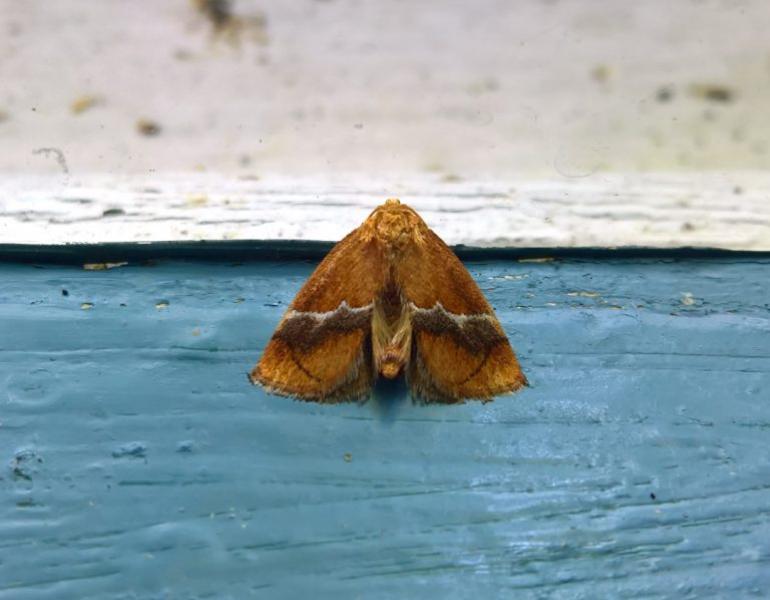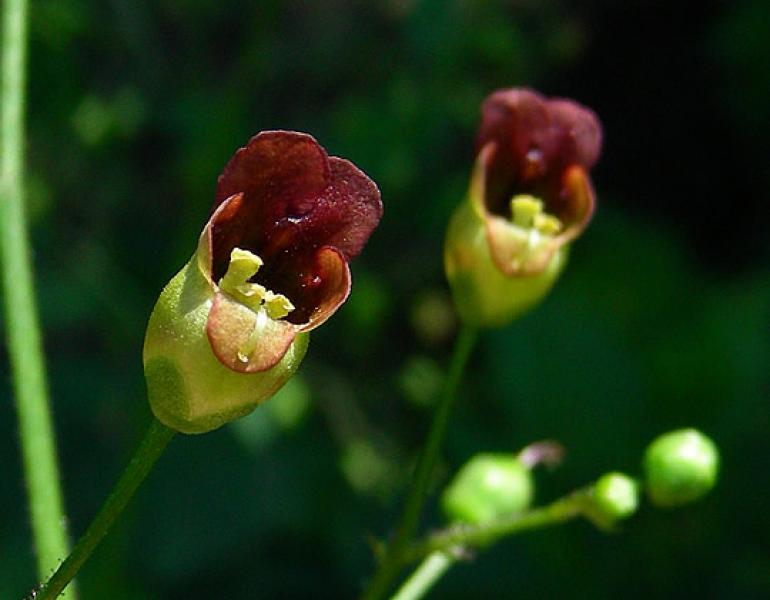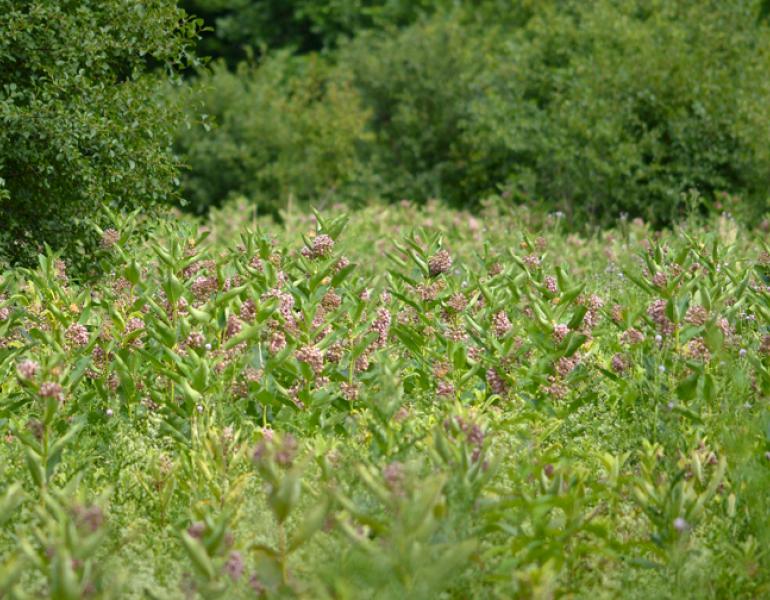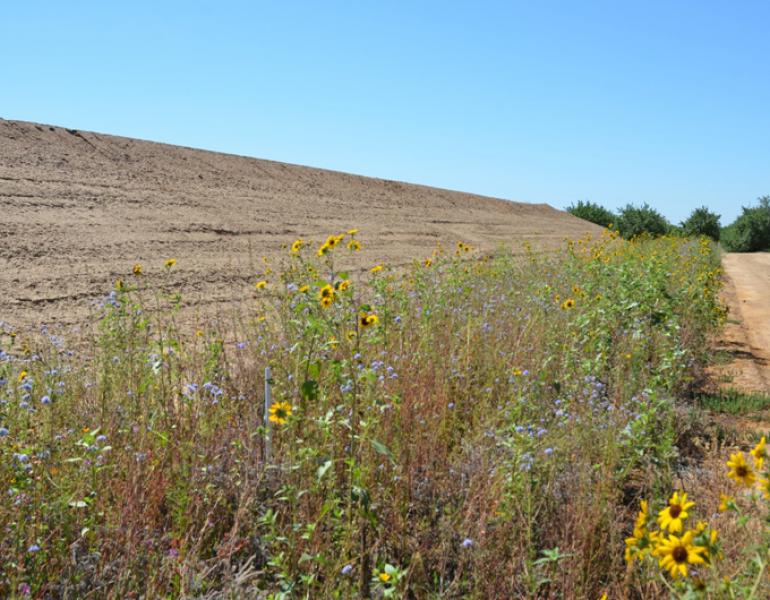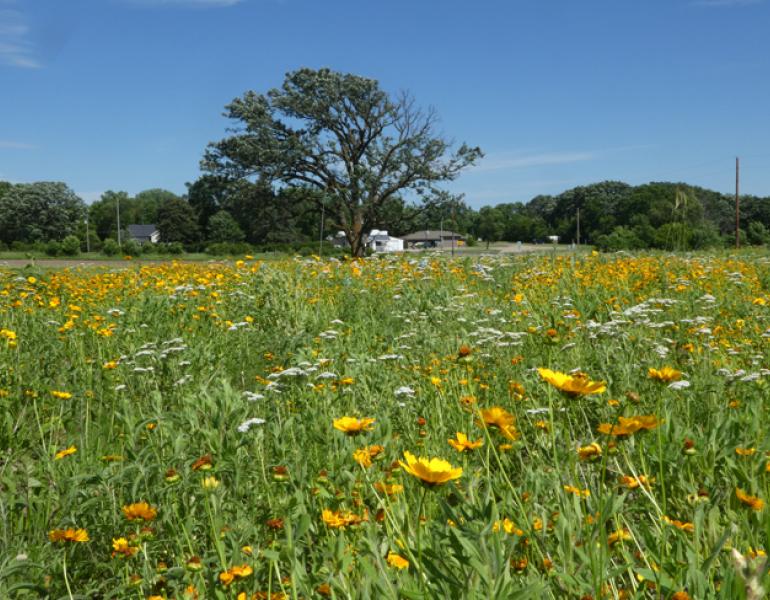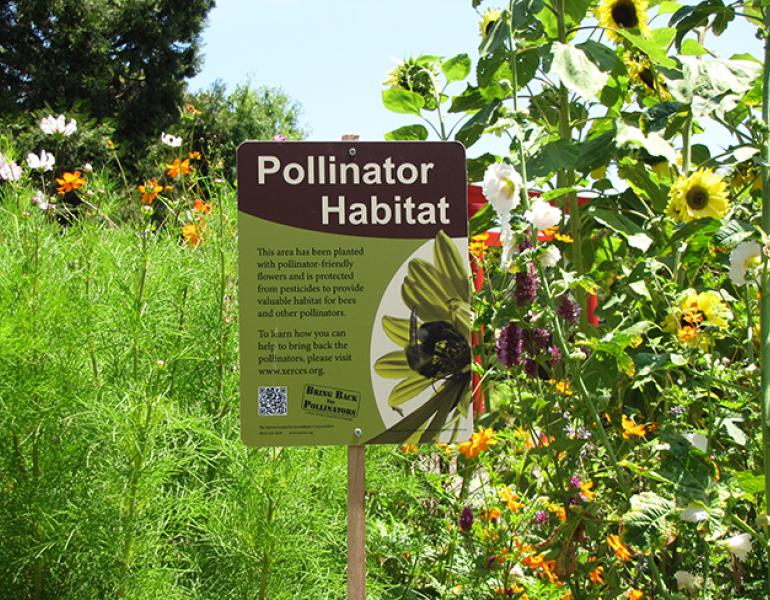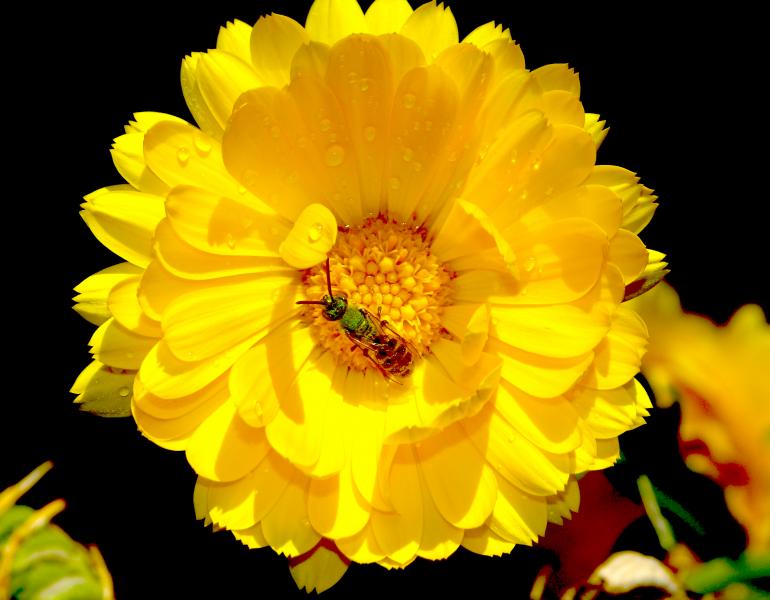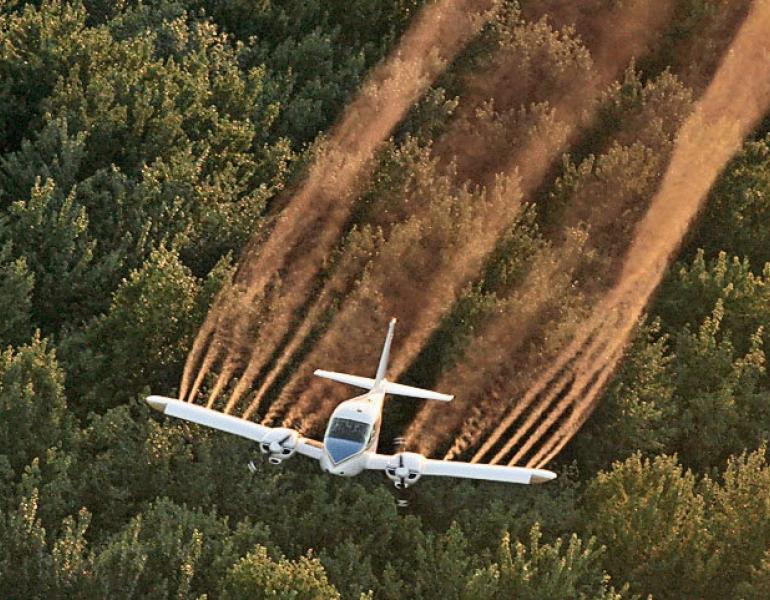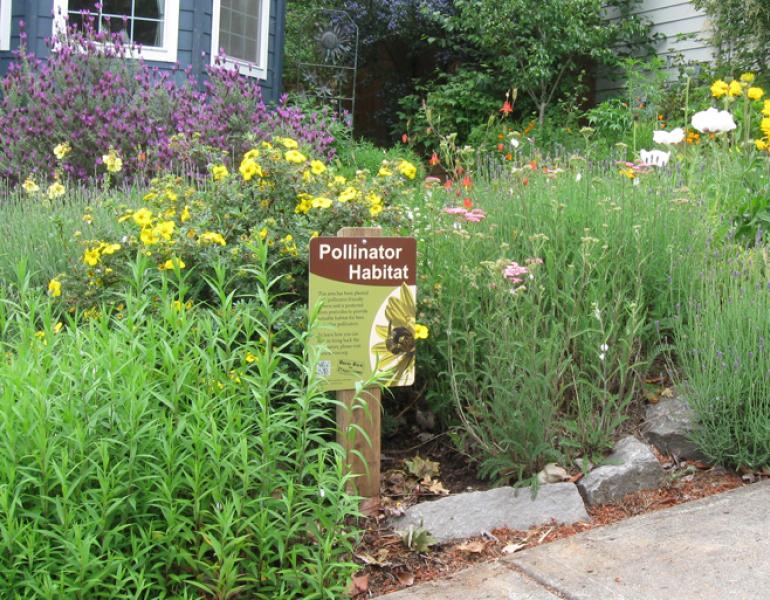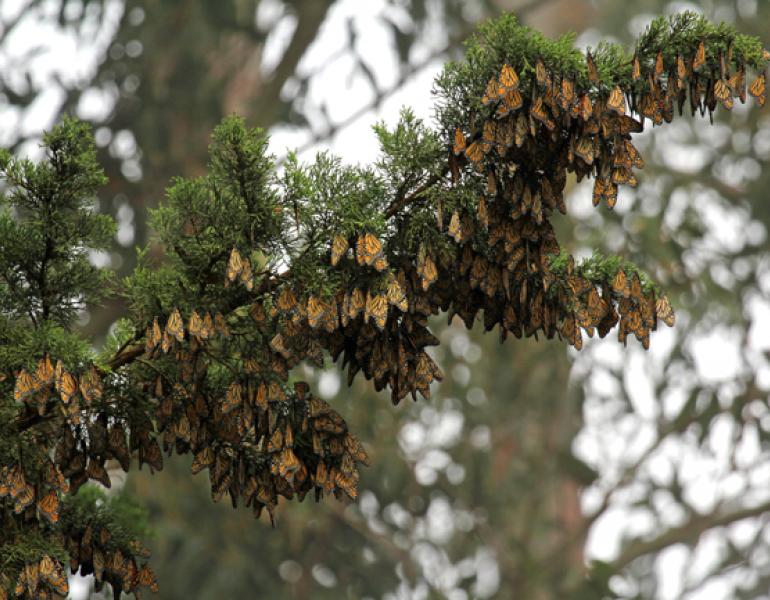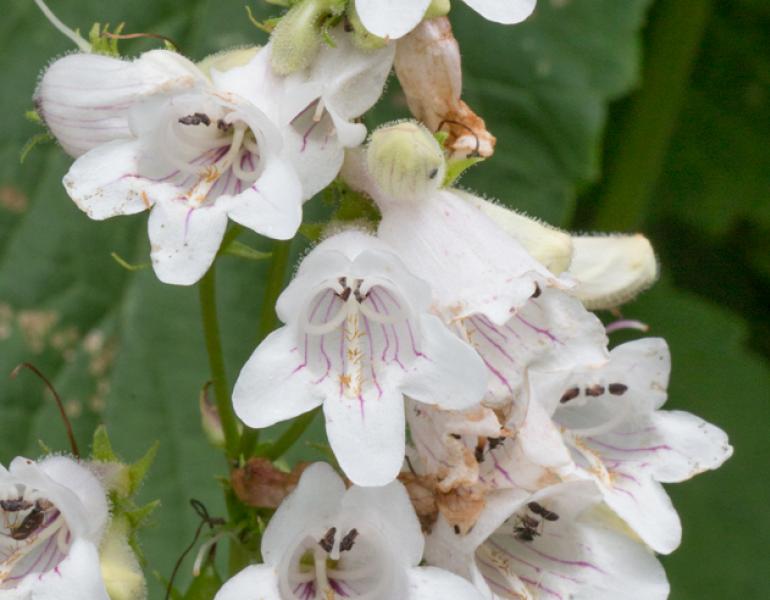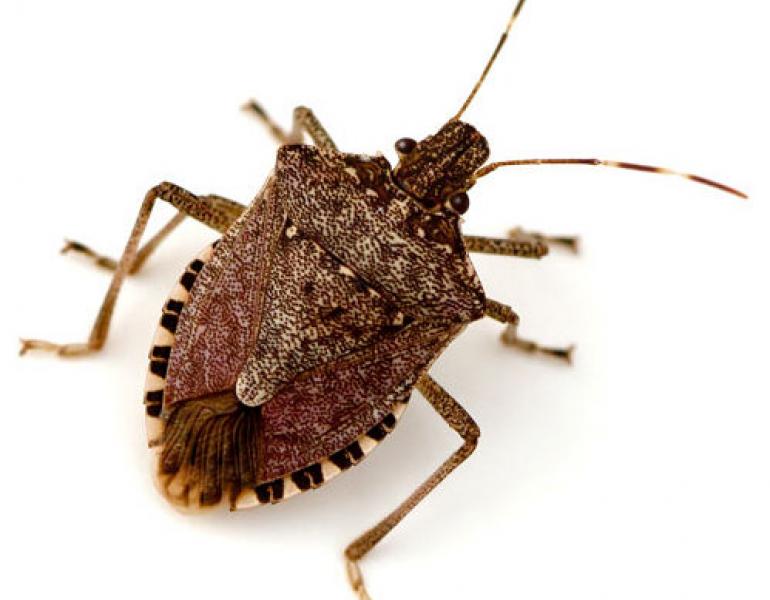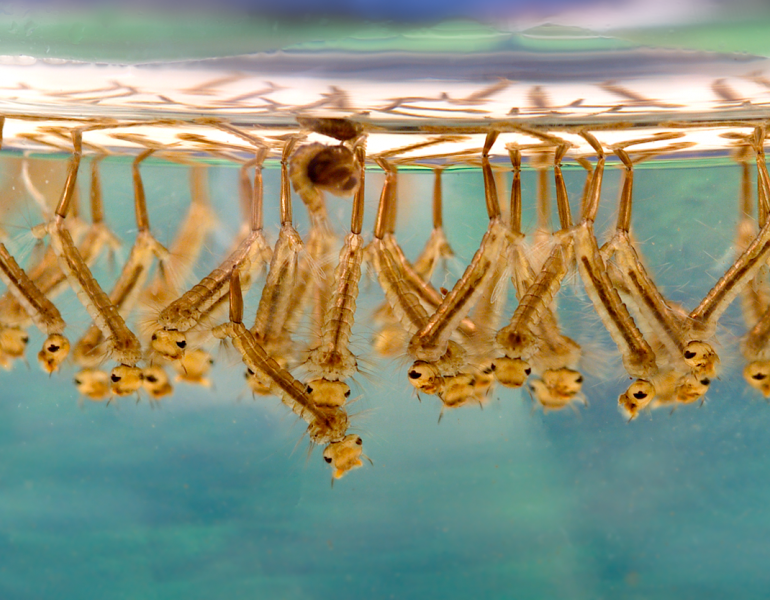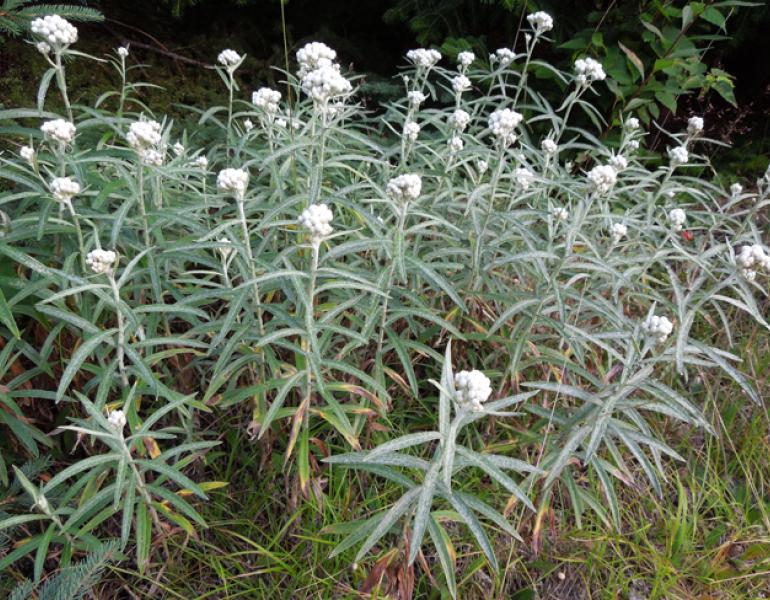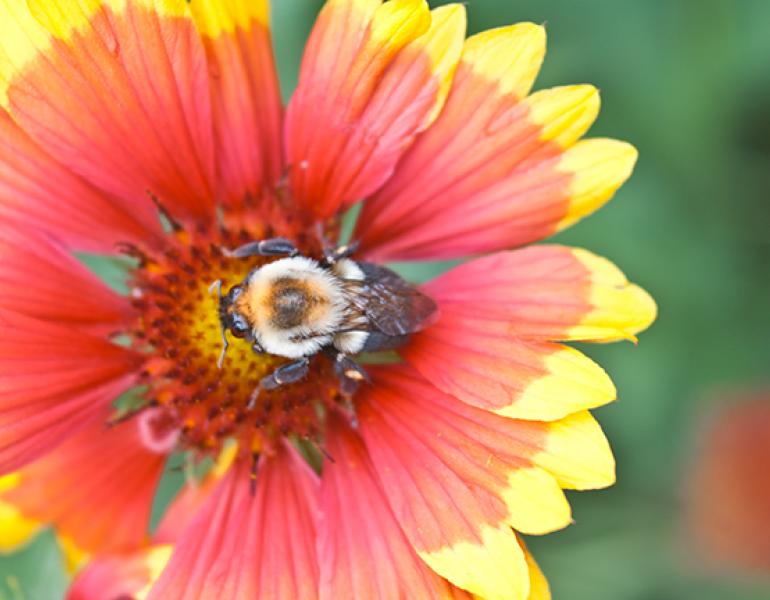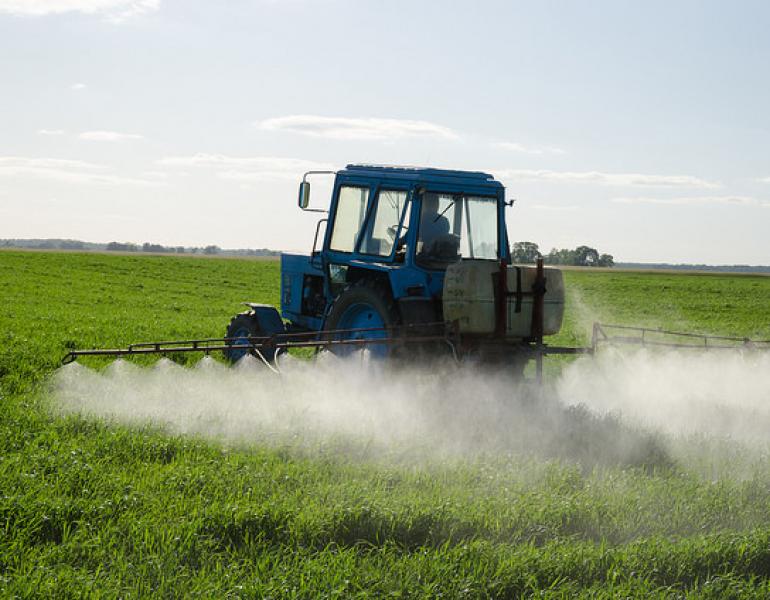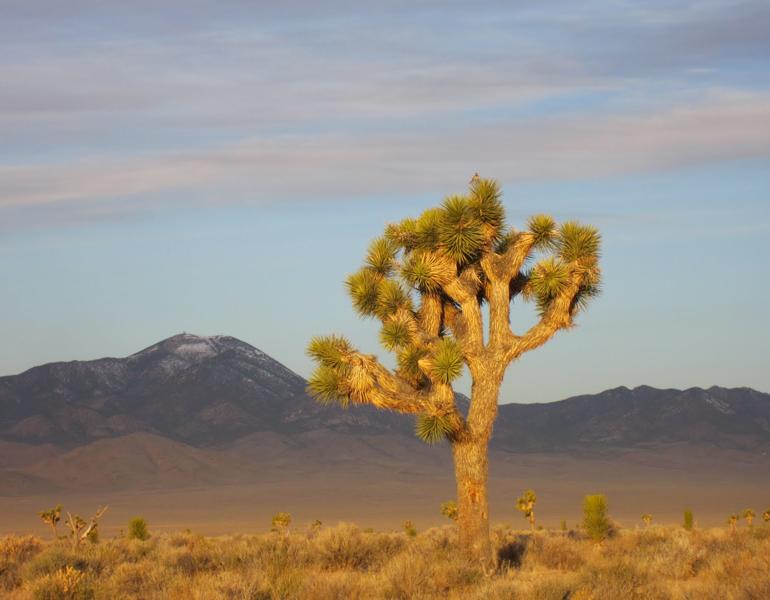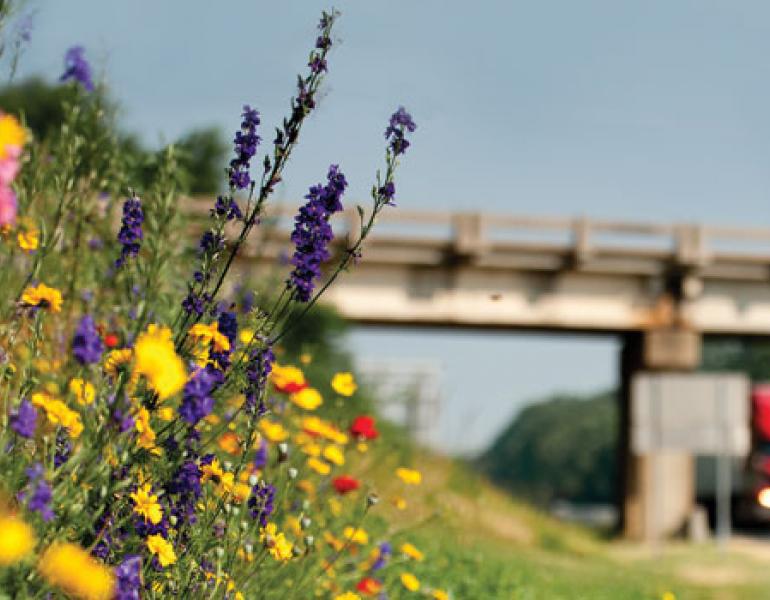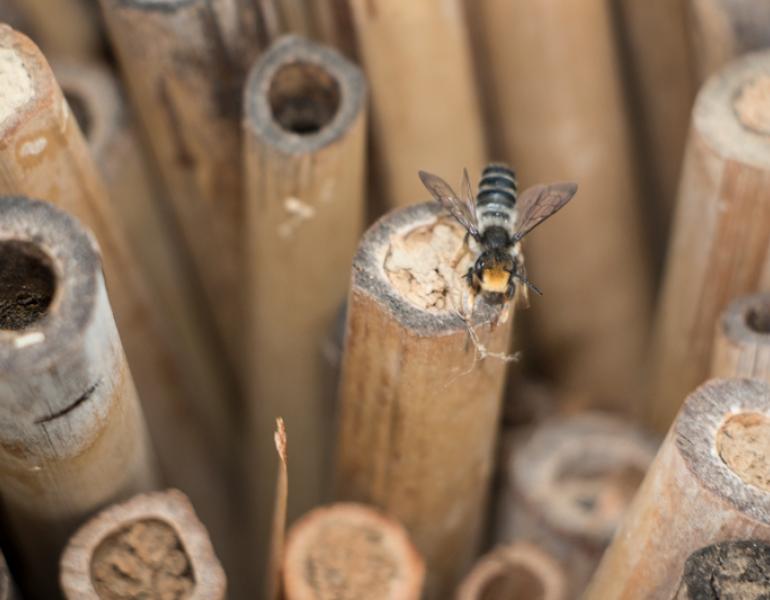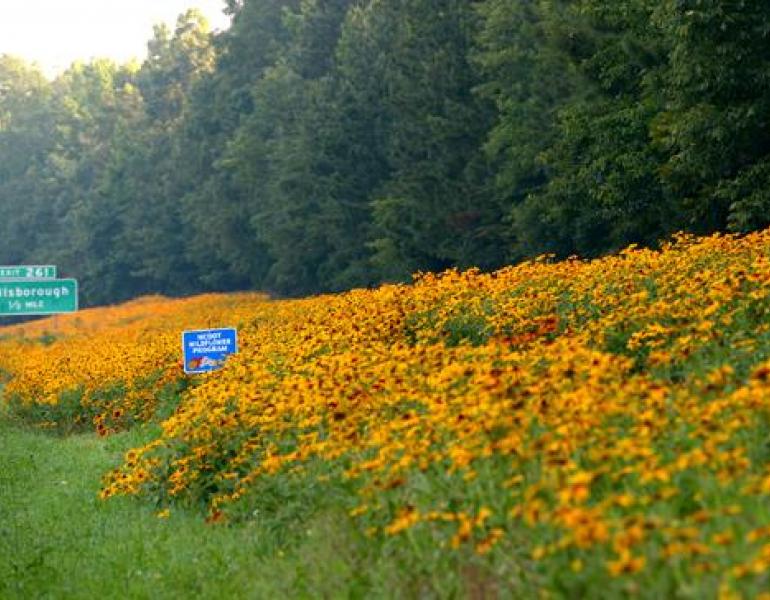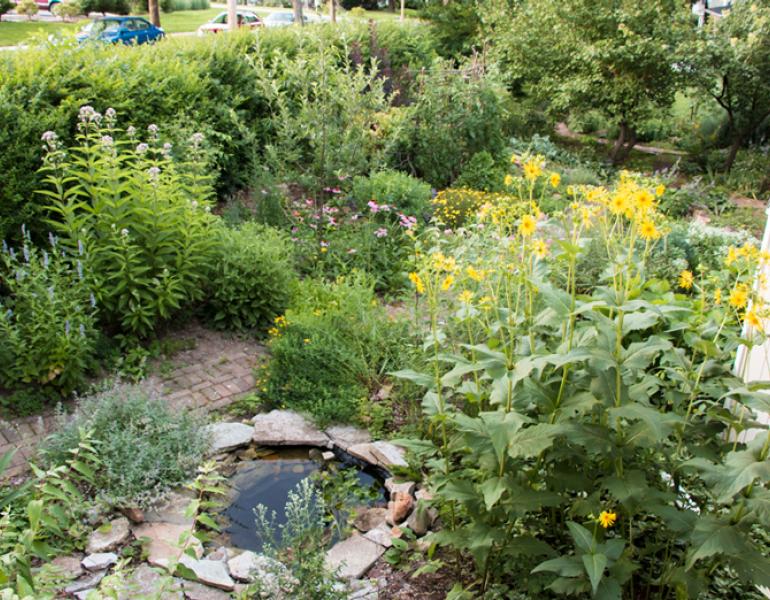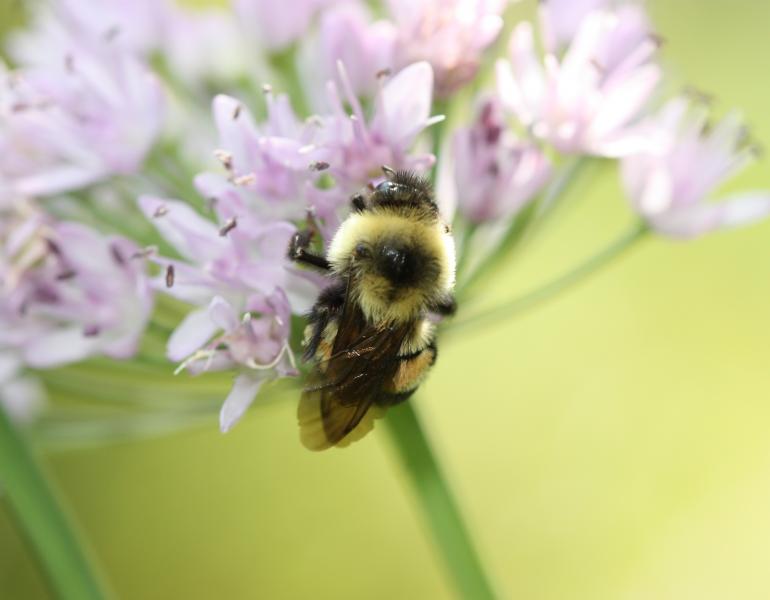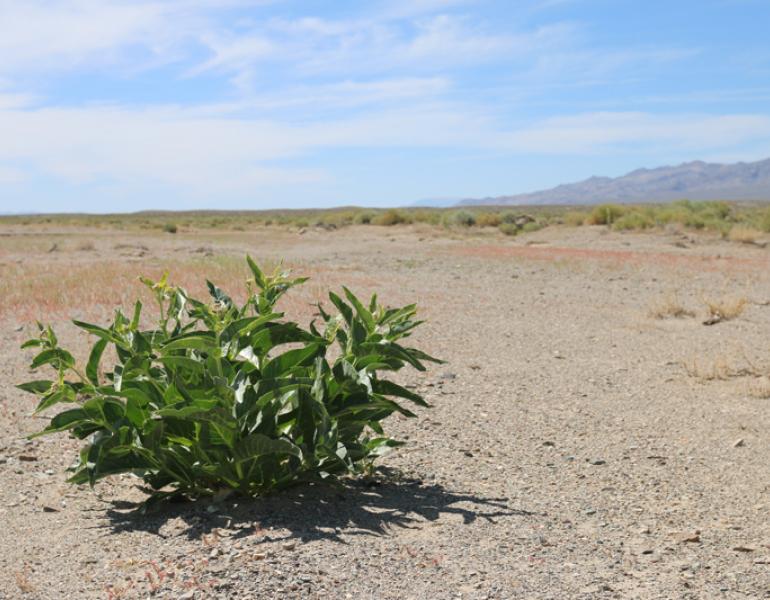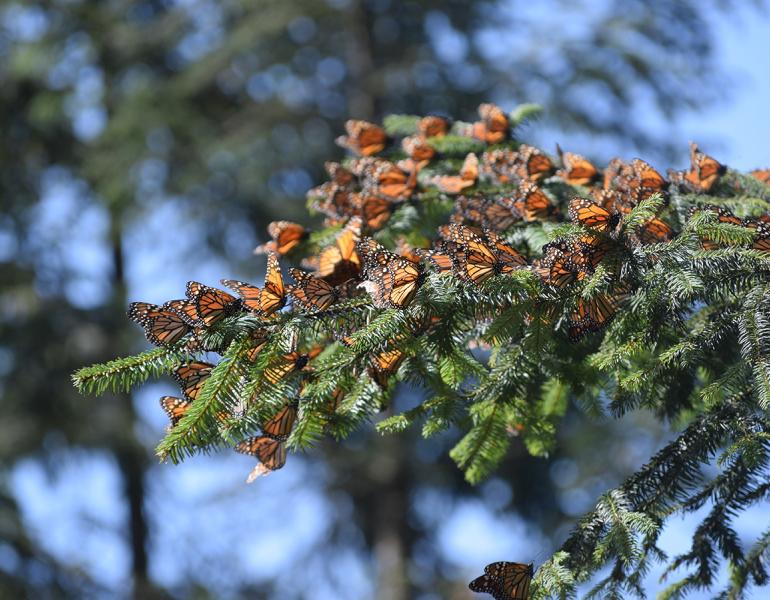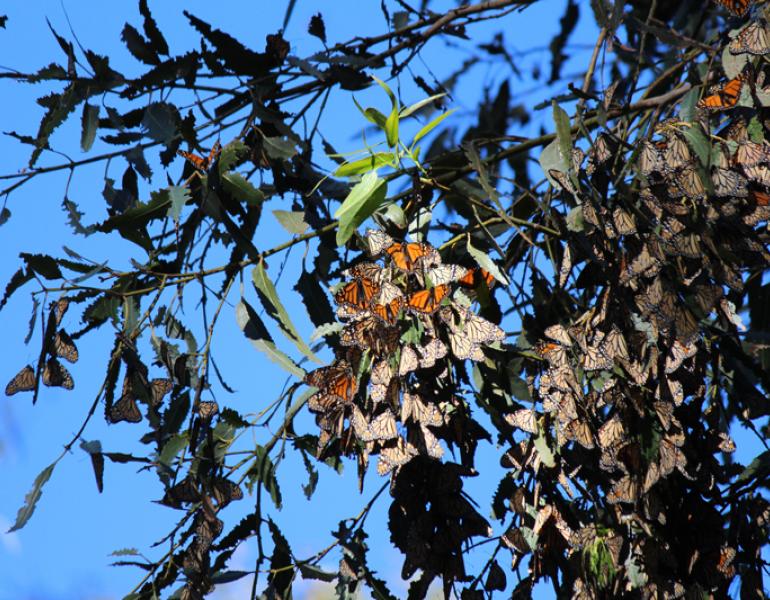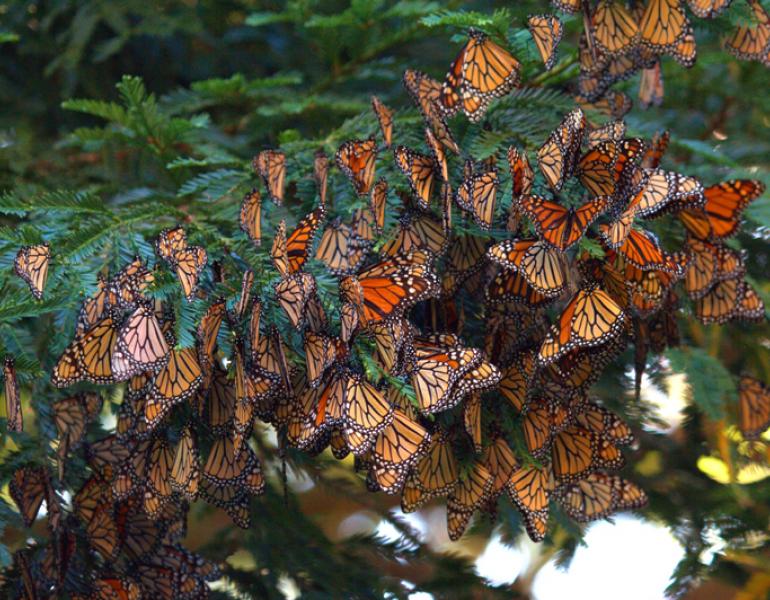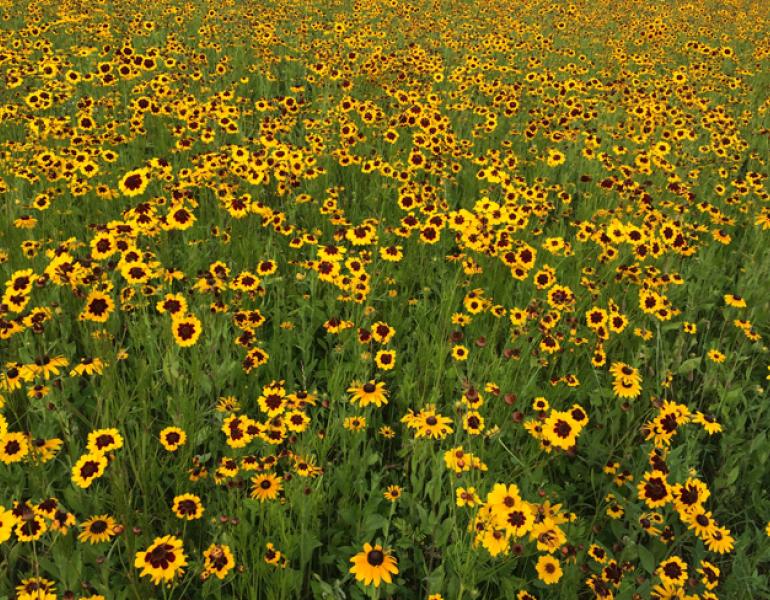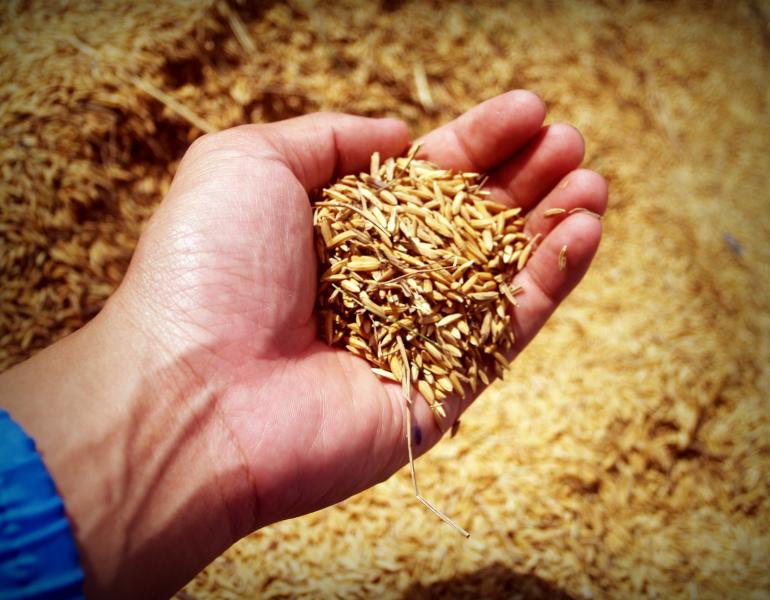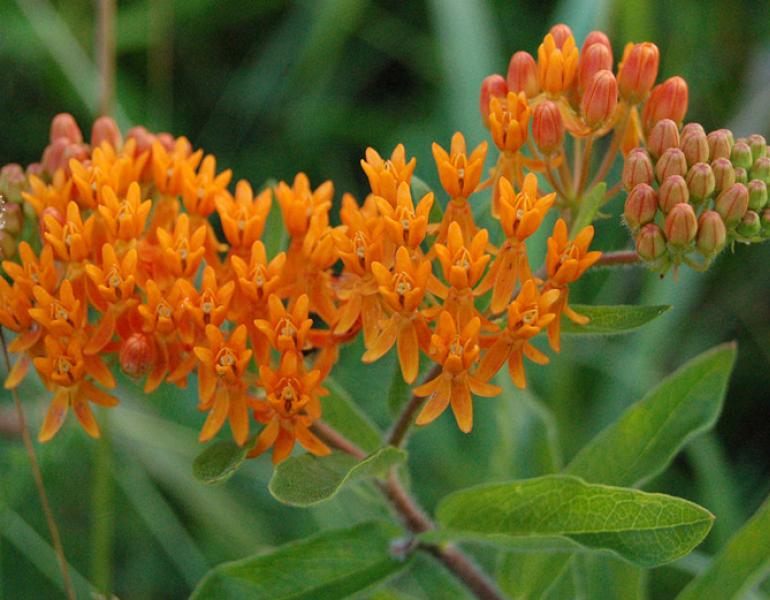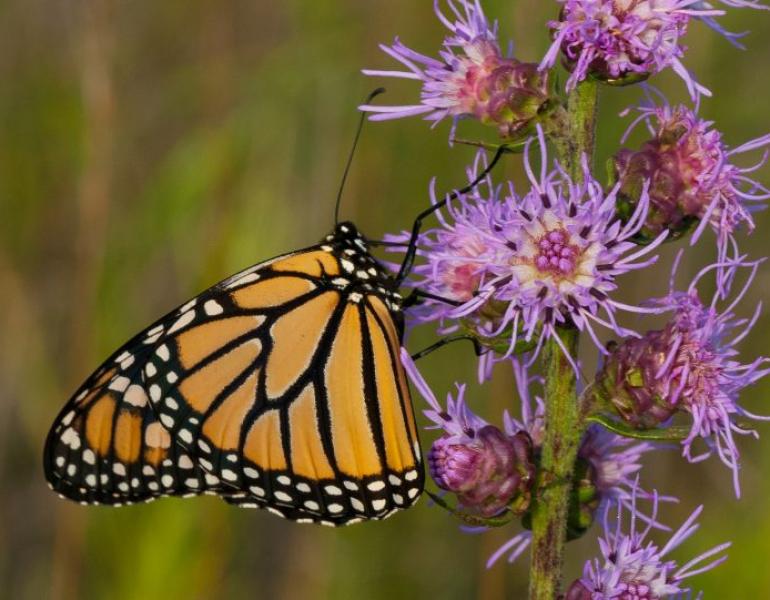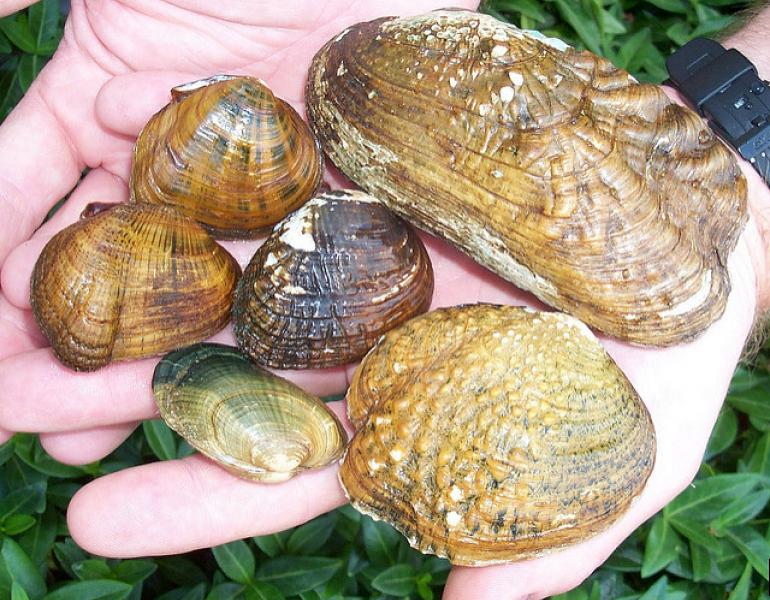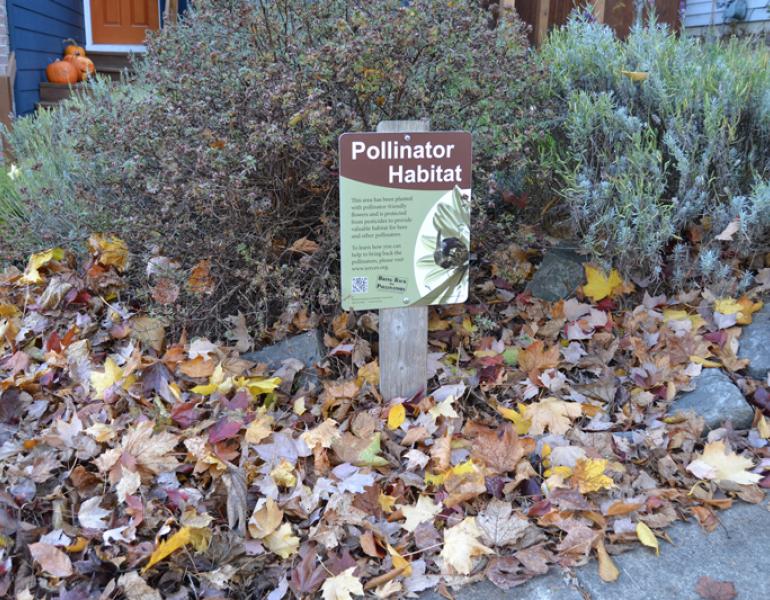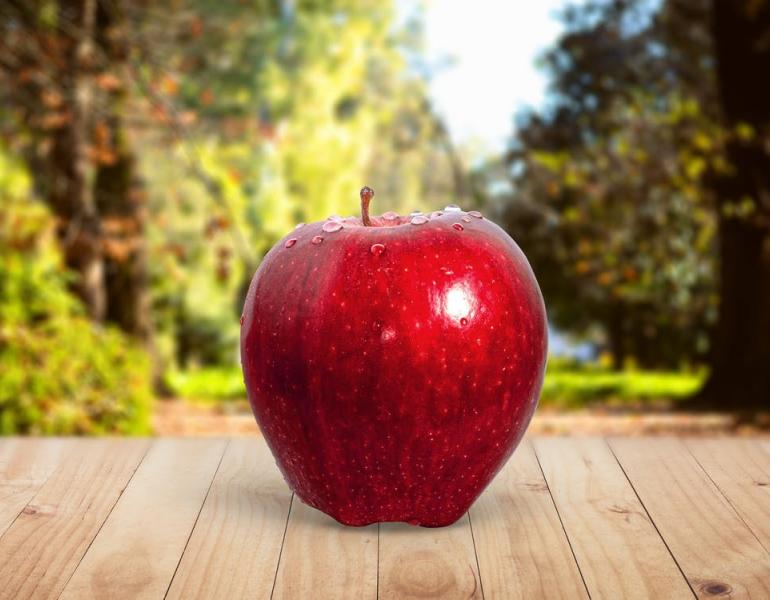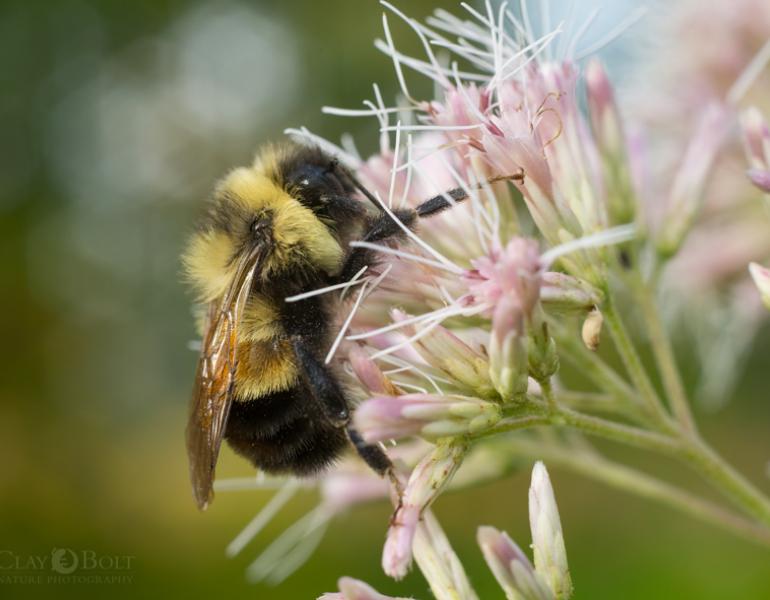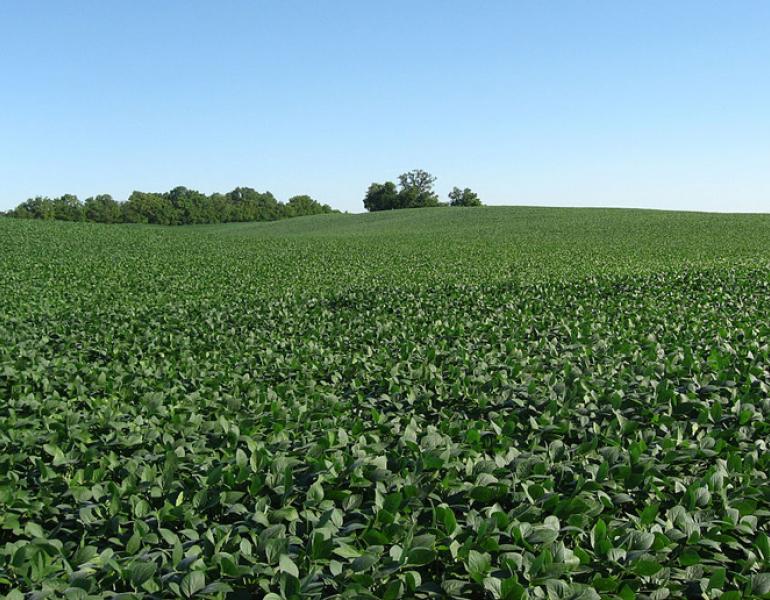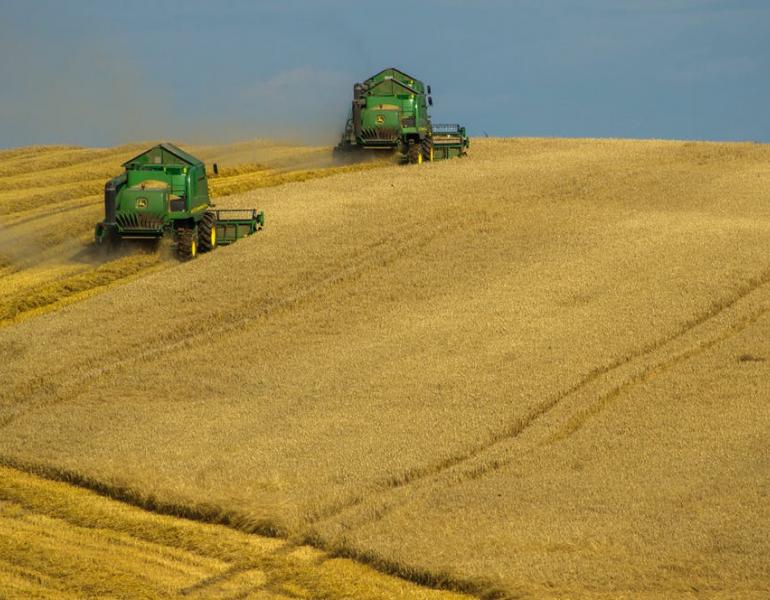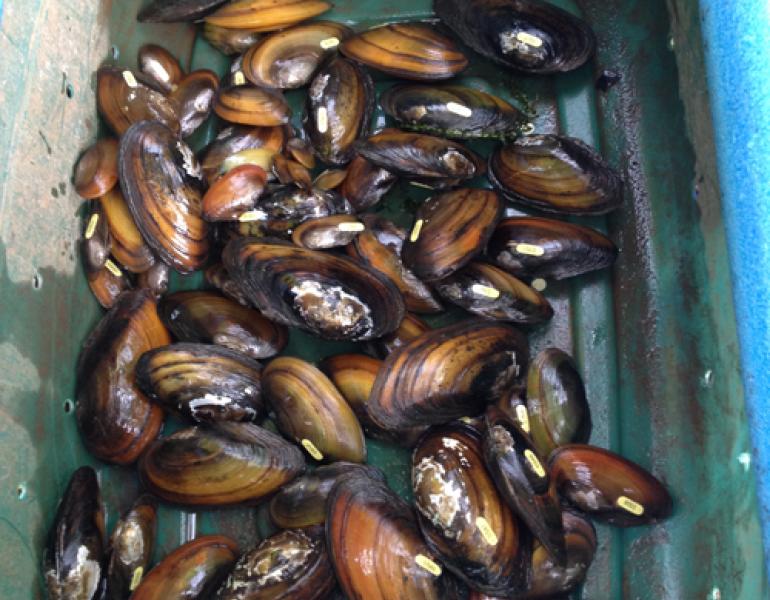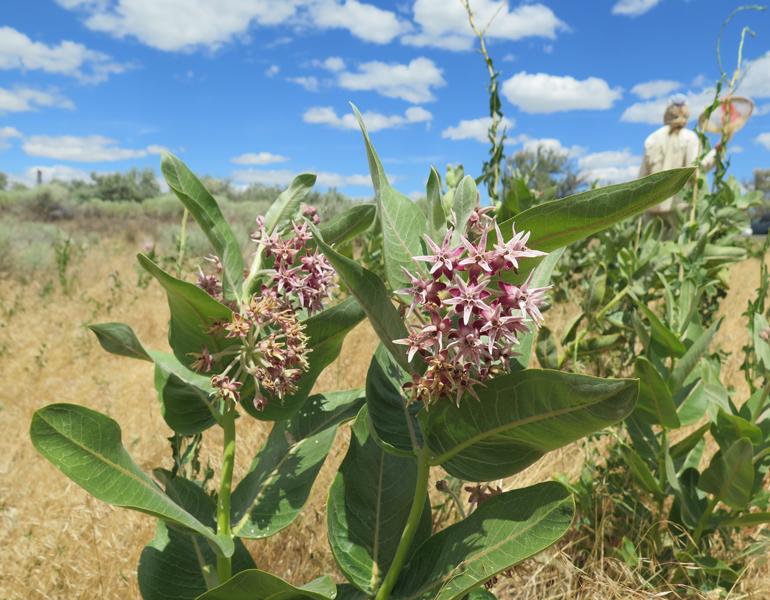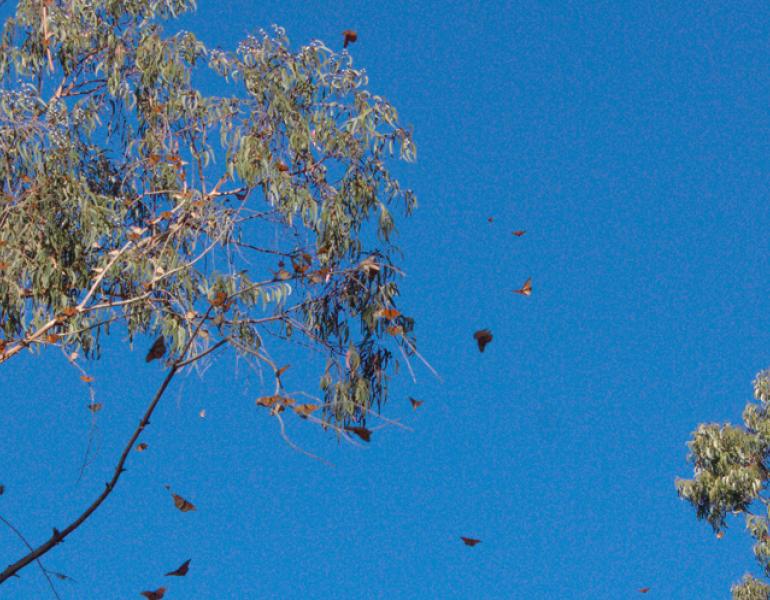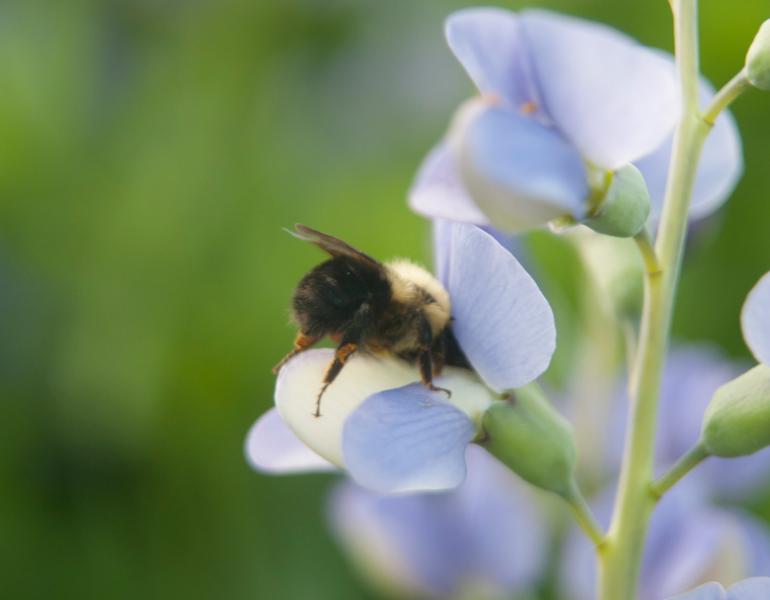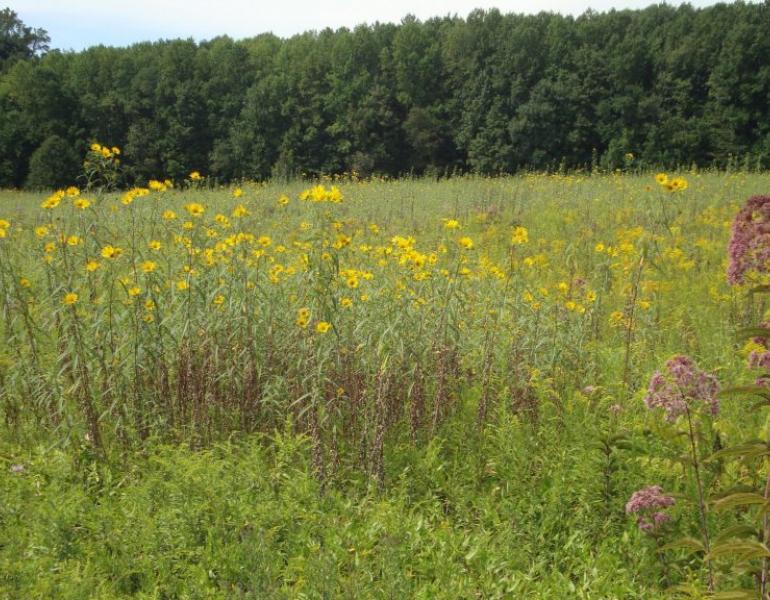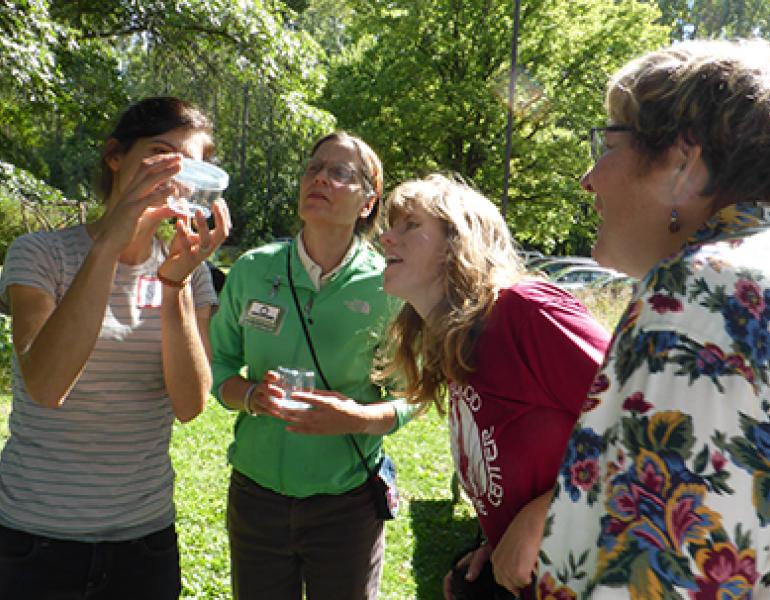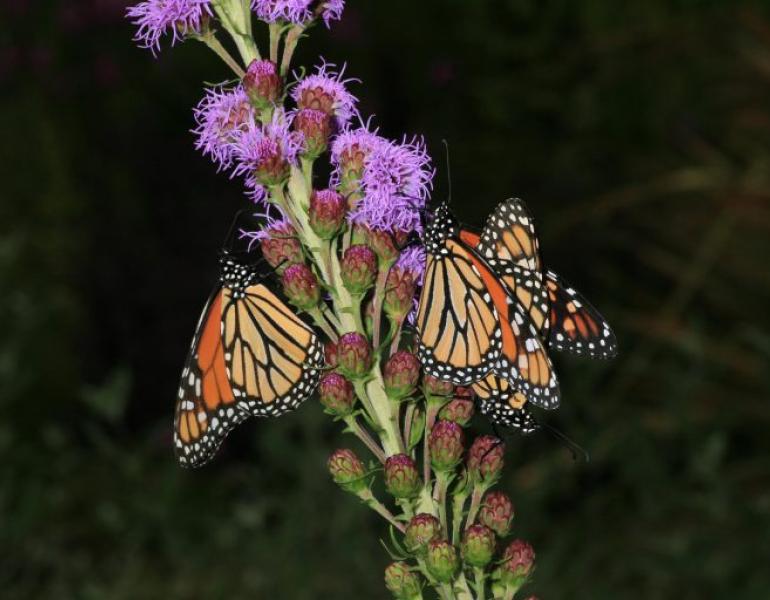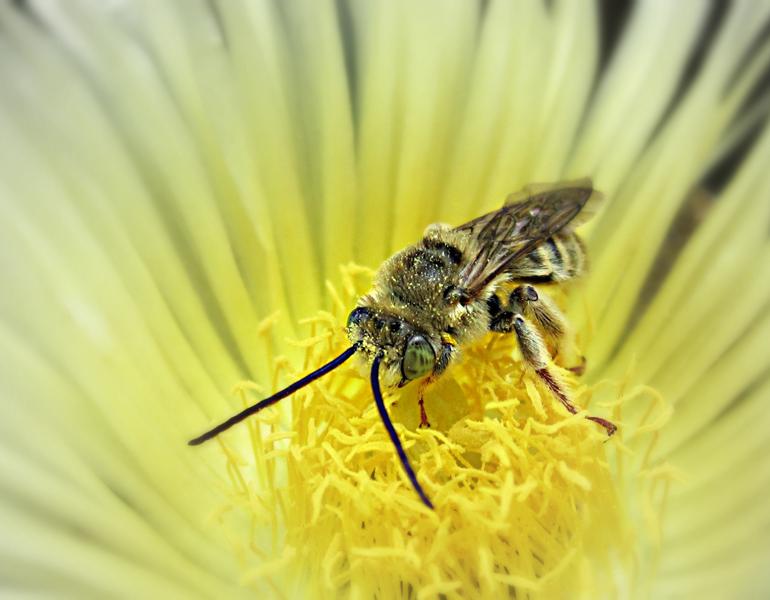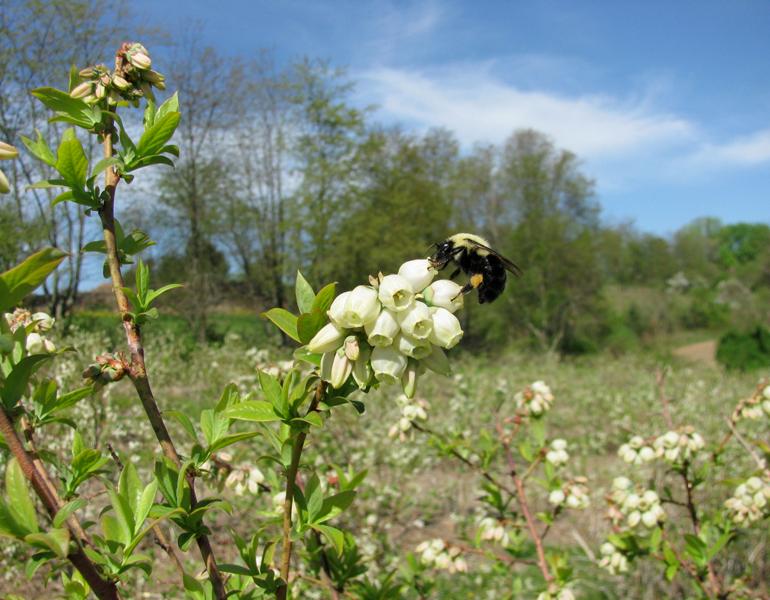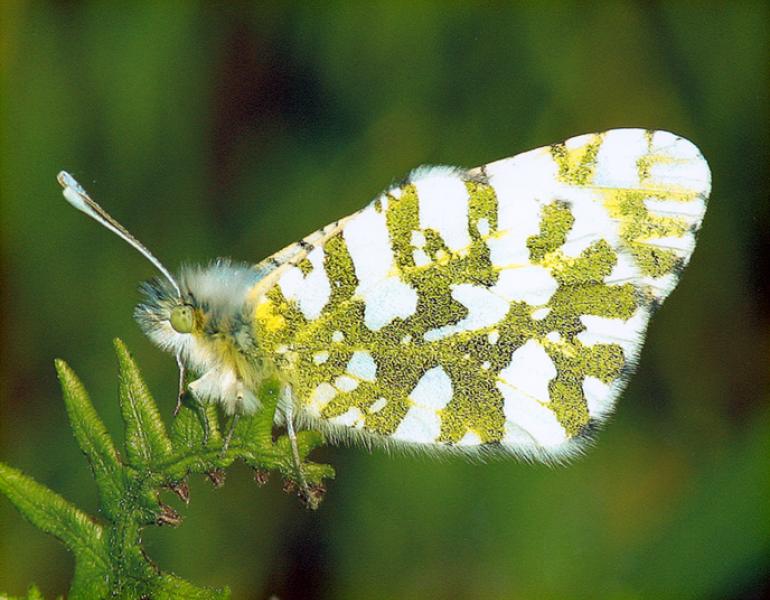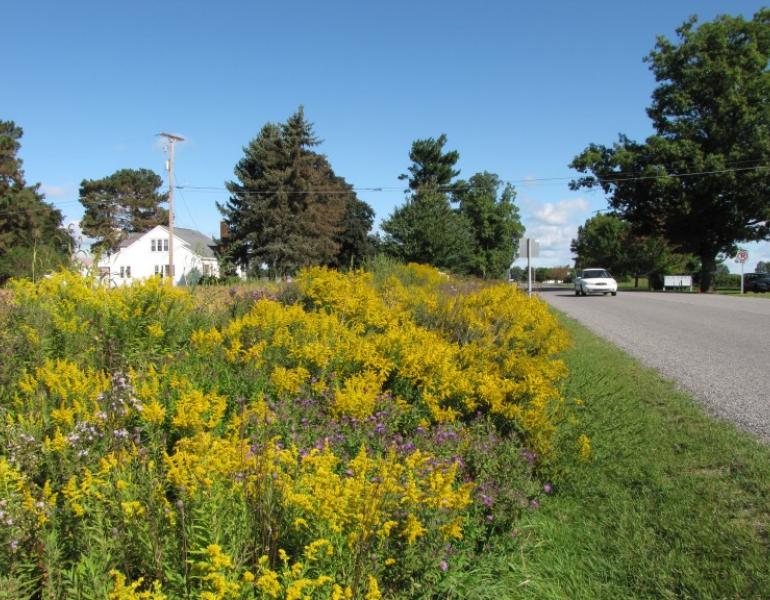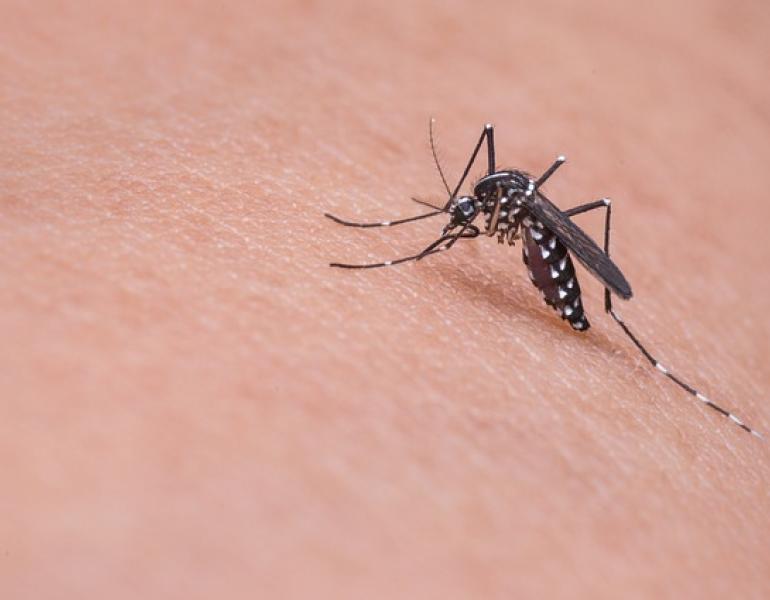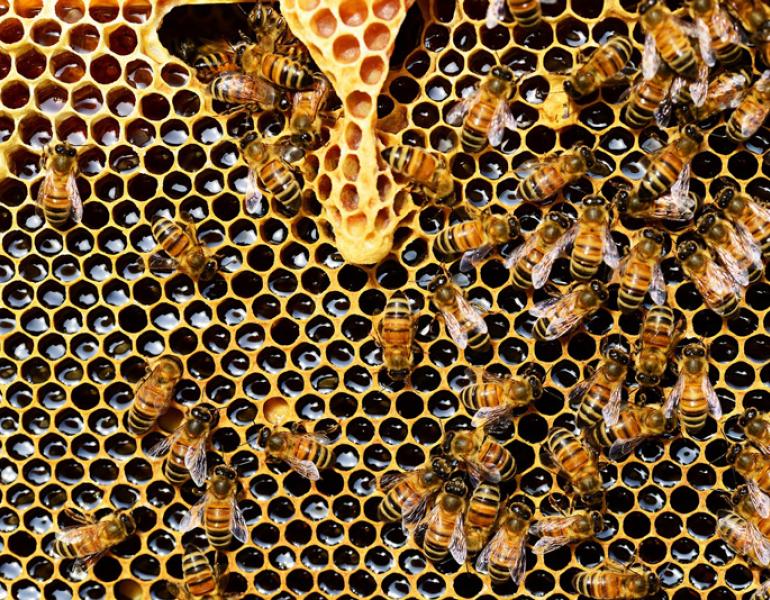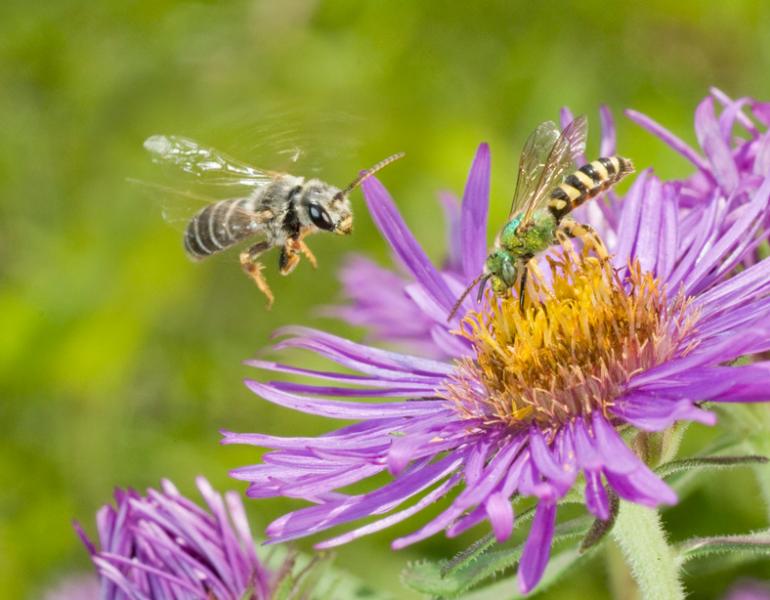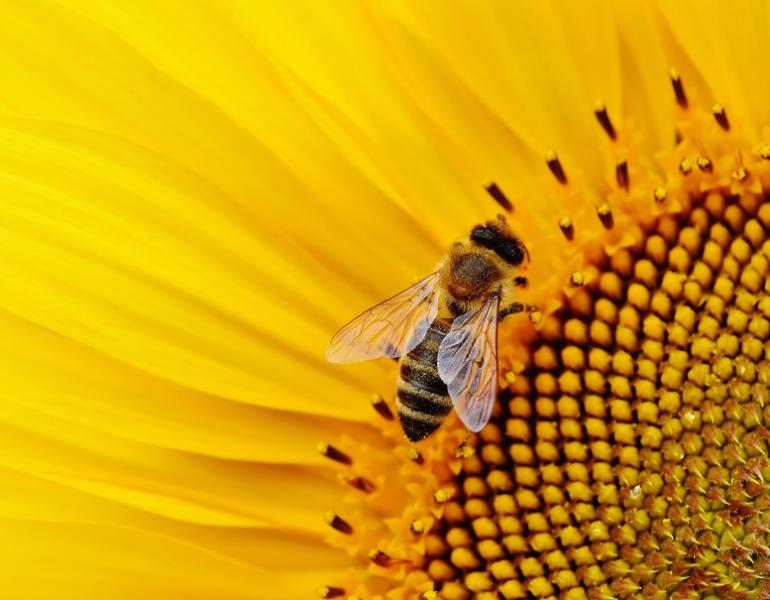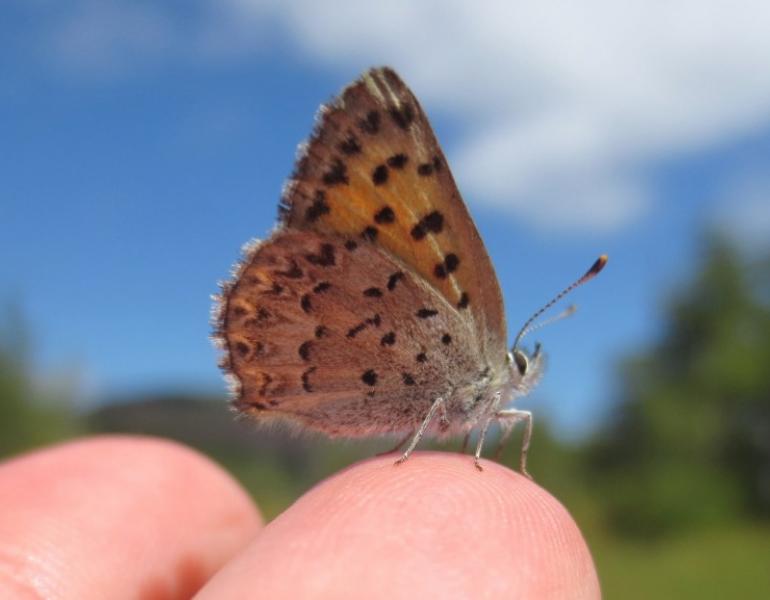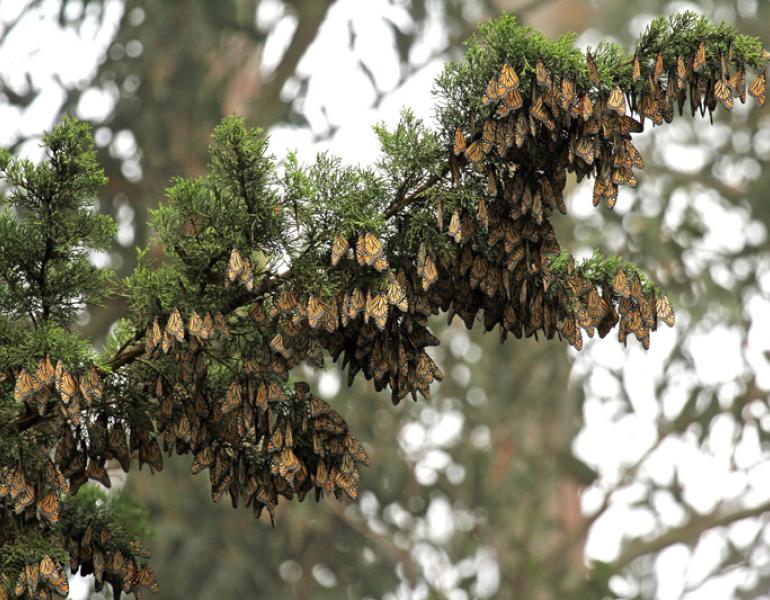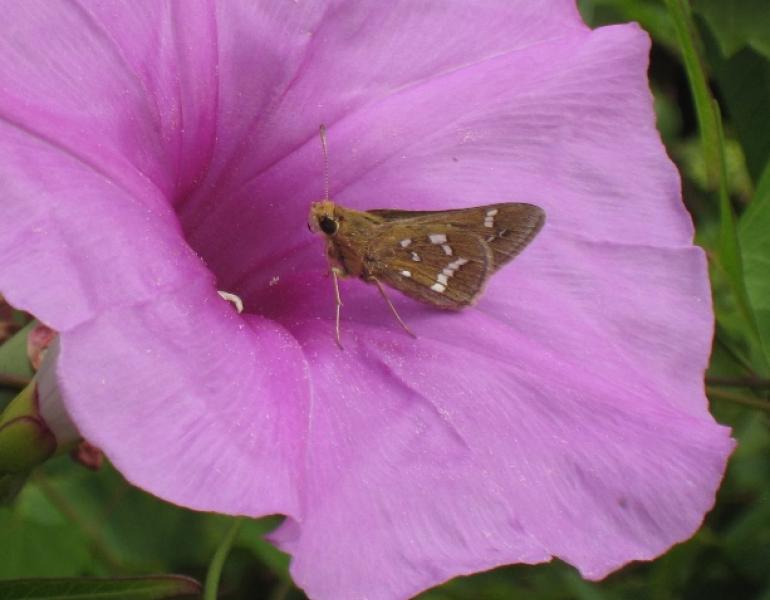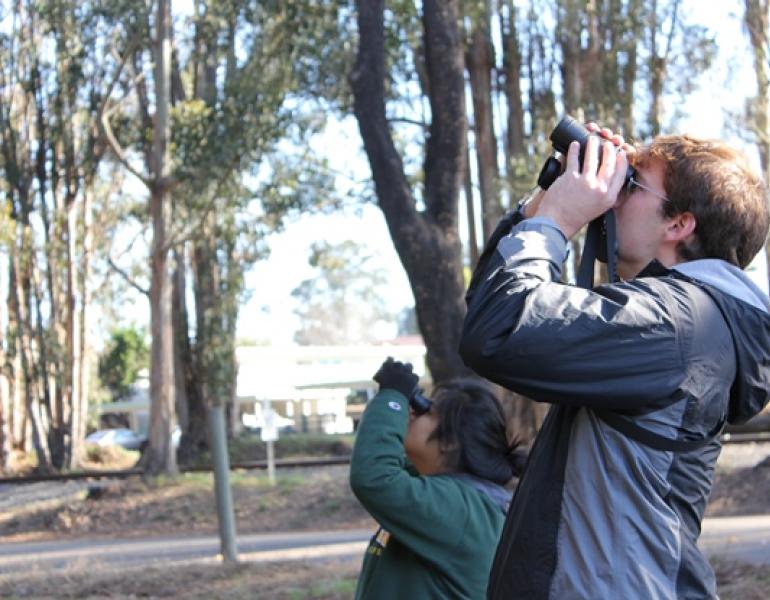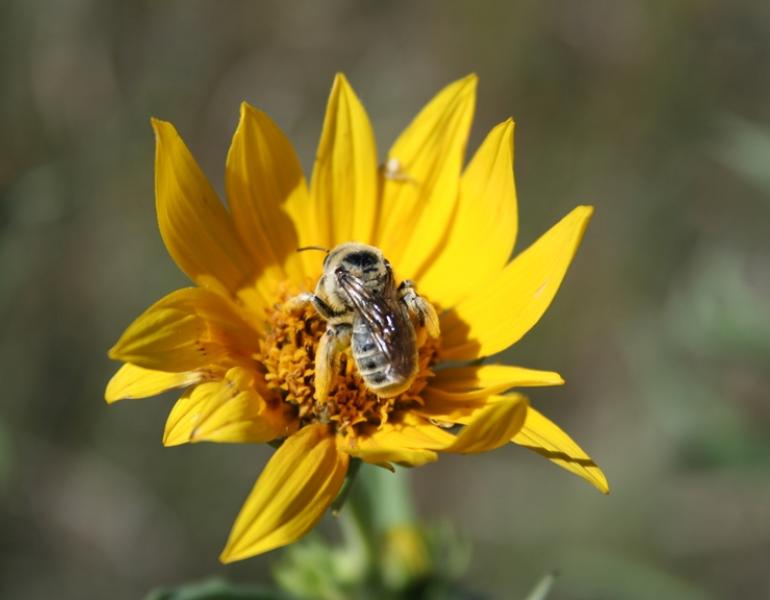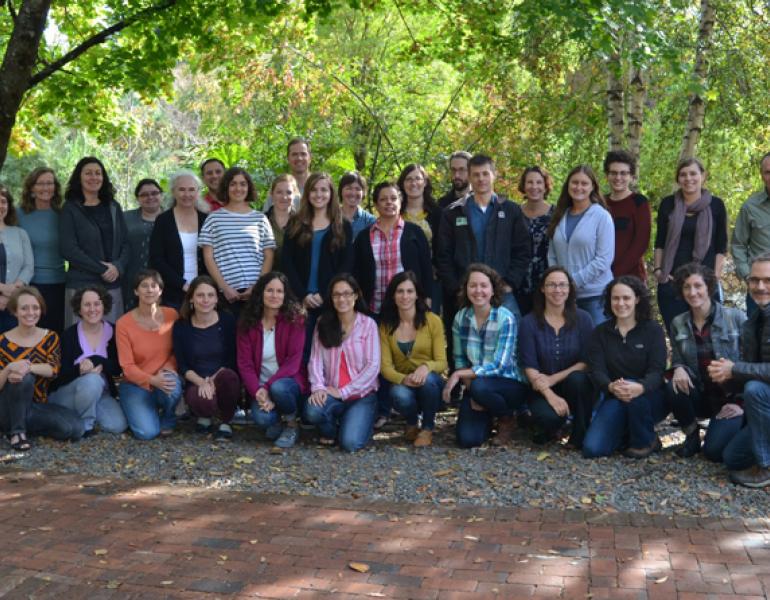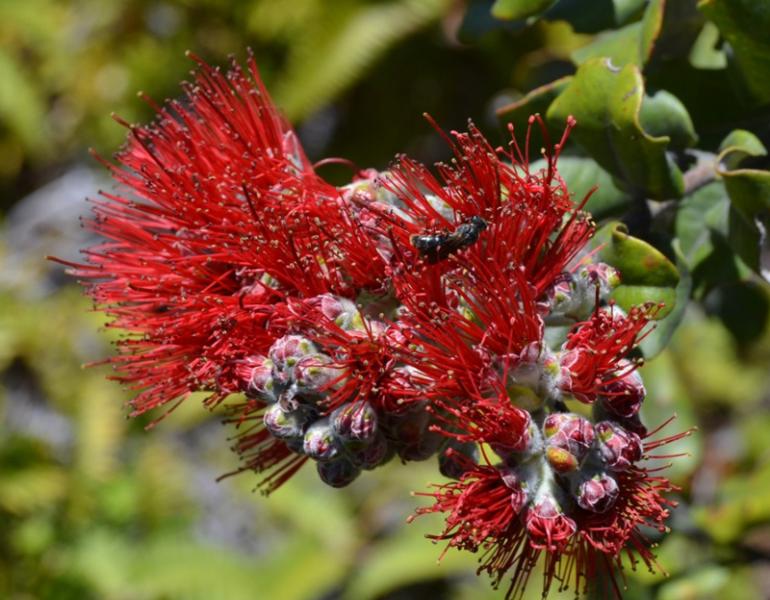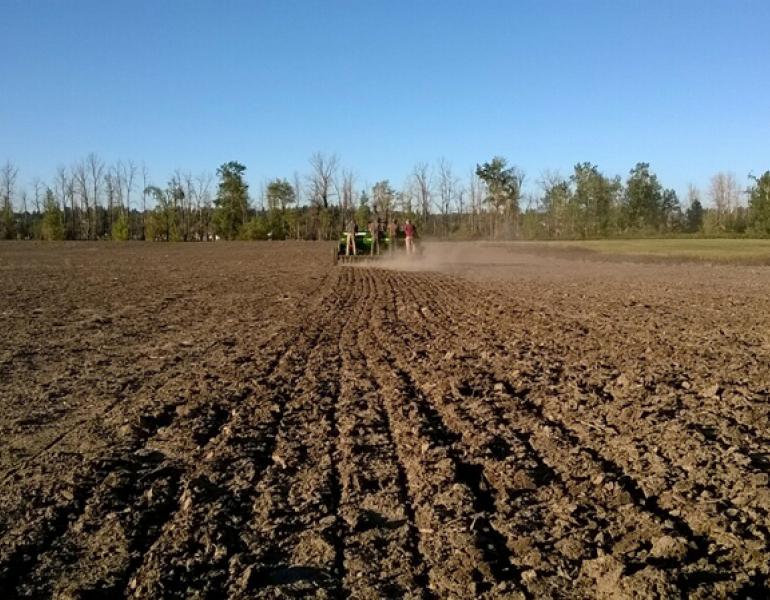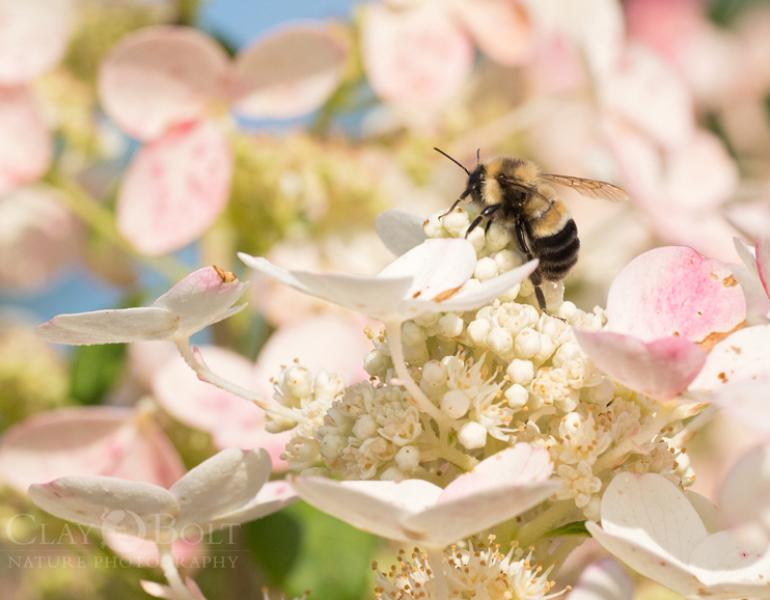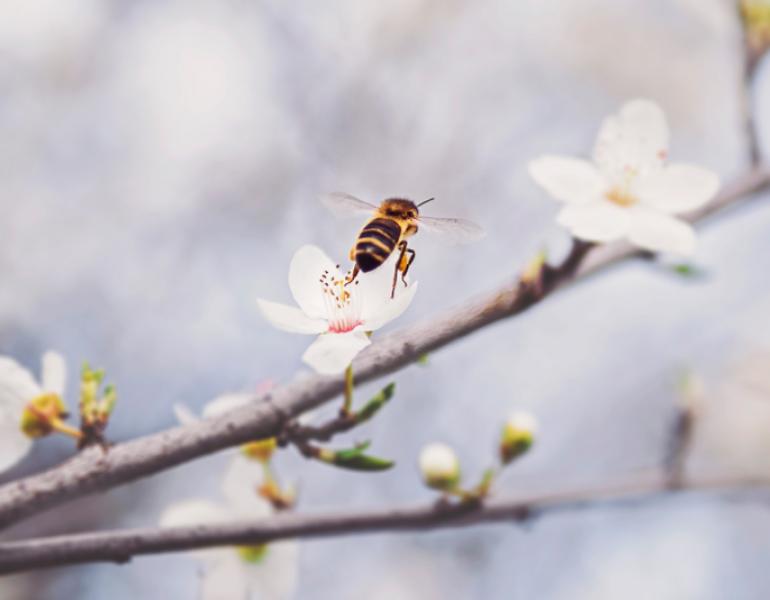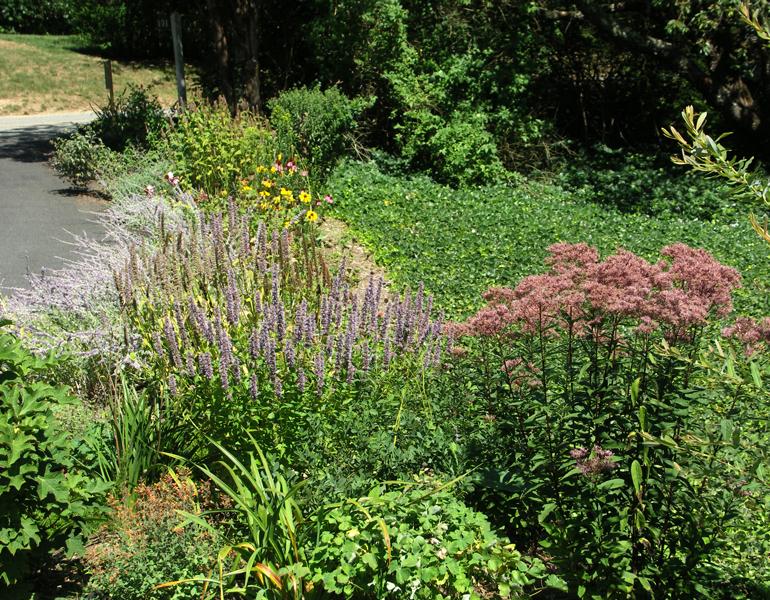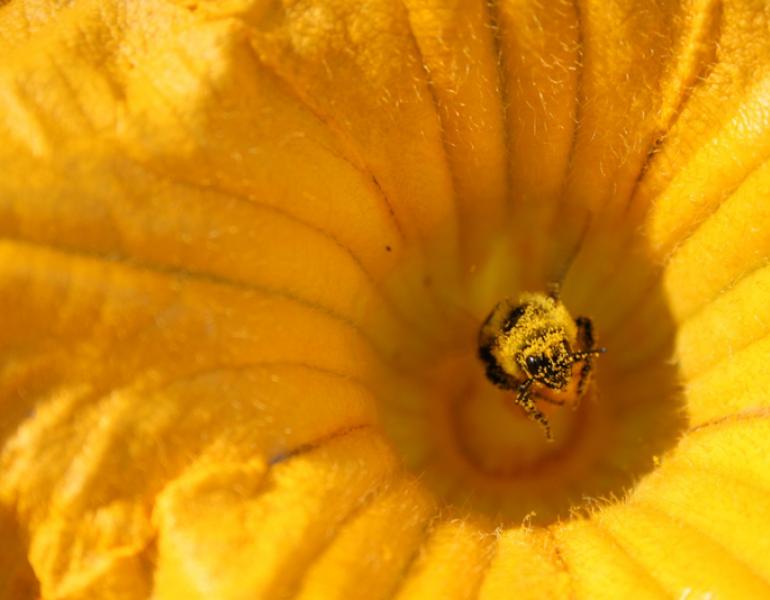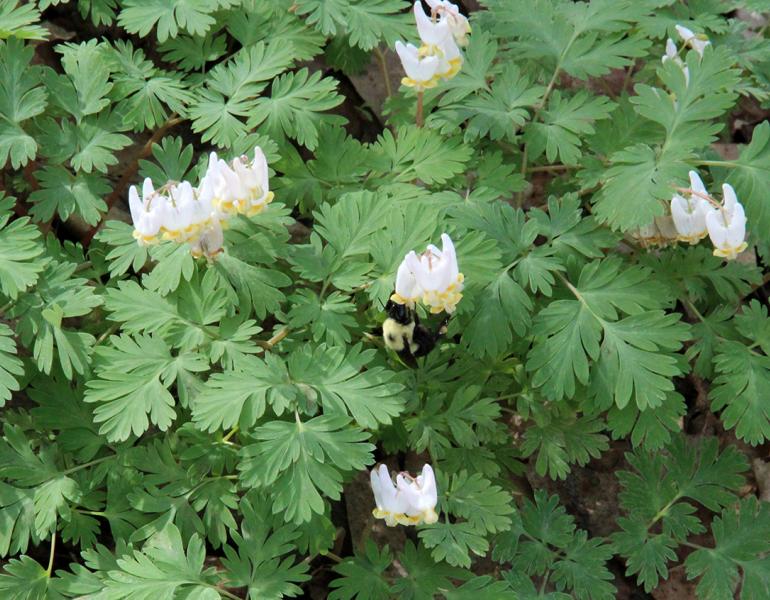Rock piles and stone walls might seem like they take yard space away from plants, but these features are crucial to support a diverse wildlife community.
Even a humble puddle can make a big impact for your backyard wildlife. Learn how to make one that fits your space.
It’s easy to add small features, like a brush pile, dead stems, or a leafy corner that can make a big difference for wildlife! Here's how.
Micah Kloppenburg shares his ruminations from a small farm in Wisconsin experimenting with conservation-forward practices
While we can wear respirators and turn on air filters to manage the impacts of air pollution, pollinators have to rely on us to protect them.
From crickets to regal fritillaries: one biologist’s fascinating career is inspiring his students to engage with insect conservation.
Aaron Anderson shares his gardening tips for supporting bugs, like lacewings and lady beetles, that protect our plants
Early spring garden cleanup can disrupt critical invertebrate habitat and leave pollinators out in the cold. Our guidelines will help you determine when cleaning up won't bug the pollinators in your space.
Migratory western monarchs underwent a 28% seasonal decrease this winter before dispersing from overwintering sites.
Kevin Burls shares his experience of discovering how even one species of caterpillar can be a vital resource for many different species of parasitoid insects.
Executive director Scott Black shares why Xerces Society doesn't accept funding from companies whose products are harming invertebrates.
First-grade students from Stratford Elementary School campaigned for the endangered Ohlone tiger beetle and raised over $5,000 for the Xerces Society.
Herbicides are designed to kill plants, but can also harm pollinators and other invertebrates. Luckily, there are other ways to remove unwanted plants.
The U.S. Fish and Wildlife Service has confirmed that the Southern Plains bumble bee is being considered for federal protection.
Last fall, Washington middle schoolers helped plant blooming hedgerows while learning about a local orchard’s connection to invertebrate conservation.
An elementary school in California became a team of inspiring advocates for monarch butterflies last fall and raised nearly $3,000 for Xerces Society.
The overwintering population of western monarchs remains at approximately 5% of its size in the 1980s.
El tamaño de la población de mariposas monarca occidentales en invernación sigue siendo de casi el 5% en comparación con la población existente en la década de 1980.
These four key gaps in pesticide regulation undermine the protection of pollinators.
Ralph Masturzo was a long-time Xerces member and dedicated supporter of invertebrate conservation.
Xerces staff visit planted habitat kits from years past to build long-term relationships with partners and appreciate long-term habitat serving invertebrates and other wildlife.
Let's look back at another exciting year for invertebrate conservation and the Xerces community!
If you’re brainstorming gift ideas for a bug lover, invertebrate admirer, environmentalist, conservationist, or entomologist, the Xerces Society has you covered. We have gift ideas for kids and adults of all ages, whether they love bees, butterflies, spiders, grasshoppers, snails, mussels or something else without a spine.
Over the last 50 years, the Endangered Species Act has enabled federal protection of invertebrates.
We’re hosting a fundraising challenge this December, and we need your support! Prizes are available.
Restored land in Massachusetts makes space for agriculture, wildlife habitat, and community.
One thing that you can do to help conserve invertebrates is to raise funds for the Xerces Society.
Xerces Society has submitted a petition to list Morrison bumble bee under the federal Endangered Species Act.
With support from USDA NRCS, Xerces, and the local community, a Philadelphia high school parking lot became a space for gardening and pollinator habitat.
Contamination from seeds treated with insecticides is a growing threat to the health of rivers, streams, and lakes. Right now, the US Environmental Protection Agency (EPA) is accepting input from the public regarding the regulation of pesticide-treated seeds.
Residents of California are uniquely positioned to help western monarchs, since monarchs are found in California all year long and in all life stages.
Mia Monroe, both a founder and dedicated volunteer of the Western Monarch Count, can trace her conservationist spirit back to her childhood.
Great Valley Seed shares the process of growing rare but important milkweed species to supply them for the first time.
Burying beetles are experts at detecting the odor of death—and putting it to good use.
Water brings life to the desert—including fireflies. Their secrets lie under the stars, until community scientists discover more.
Western monarchs need milkweed for breeding as soon as they leave their overwintering sites. That's why we partnered on a project to make early-season native milkweed more available in California.
A migrating monarch can travel over 100 miles in a single day. Learn more lesser-known yet fascinating facts about the annual North American monarch butterfly migration.
Despite its widespread distribution, recent studies using long term monitoring data have ranked the large marble as one of the western butterfly species most at risk of extinction in the next 50 years.
Calling all loyal Xerces members! We had beautiful stickers designed just for you, featuring some of our favorite invertebrates.
Pesticides are a leading threat to fireflies and other insects. Fireflies' behavior, habitat, and life cycle make them particularly vulnerable to several common home pesticide applications.
Many bee species know their way around dirt and under ground. There are several distinct reasons why they excavate the earth.
Pocket prairies at a somber site in Iowa are bursting with hope thanks to years of care in the form of techniques like prescribed burns and brush removal.
Xerces member Justine Burt is training for an epic 400 mile adventure to support invertebrate conservation.
You’ve probably encountered at least one of these eight common myths about pesticides in the garden. Let's check the facts!
2022 was another notable year for Bee City USA and Bee Campus USA!
Planting cover crops in bare agricultural fields not only improves soil health and suppresses weeds, but it can also attract beneficial insects! We're here to help navigate the complexities and nuances of the optimal cover cropping system.
At the peak of summer, you can keep crops buzzing and send pests packing in a pollinator-safe way.
Xerces is working with several state legislatures to advance policies that regulate pesticide use and availability for the benefit of pollinators and other wildlife.
Happy Moth Week! Butterflies get a lot of attention - but moths are magical both day and night.
In the hopeful early summer, Xerces conservation biologists set out on a journey down the coast, under forests, through marshes, and across sand dunes to find rare butterfly species in the wild.
Within a week of Xerces sounding the alarm about upcoming widespread toxic insecticide spraying in natural areas, New Mexico residents and organizations were collaboratively advocating for the plan to be canceled.
Keeping honey bee hives will not help the 3,600 bee species native to North America. In fact, it might do the opposite. The best solution to bee declines is to address underlying causes like habitat loss and pesticide use. Native flower gardens can support all bees.
Xerces Society member Augustin Garnier recently established a pollinator garden at his local library, attracting the same species of butterfly that originally got him interested in invertebrate conservation years ago.
What did we learn from the sudden death of 50,000 bumble bees? It is important to understand and support the ecosystems we're a part of. Honeydew is an important resource for wildlife, not a problem to solve with chemicals.
It takes a village to provide pollinator-safe spaces. These 8 communities are modeling the collaboration and creativity necessary to bring back declining pollinators.
Research suggests that even pollinator plants are often contaminated with pesticides at the store. Learn how to find plants that aren't and increase demand for pollinator-safe plants.
Gardens provide important food and shelter for pollinators. We've put together a list of tips that will help you prioritize the health and safety of these important garden inhabitants.
60 million pounds of pesticides are used in U.S. homes and gardens each year. Here are our top reasons to keep your space pesticide-free.
Every June we celebrate National Pollinator Week to give extra thanks to pollinating animals like bees and butterflies. You might be surprised to learn which other animals are pollinators too!
Instead of rearing—which is risky and unproven in helping monarchs—we should focus on more effective, science-backed ways to conserve these glorious wild animals.
What does it take to build a pollinator-friendly city? Along the Santa Fe Pollinator Trail, this question has been answered plant by plant, across dozens of organizations and hundreds of helping hands.
Each spring a beautiful ficus tree transforms into something extra special for the folks that visit Roger’s Gardens plant nursery. The Monarch Wishing Tree displays hundreds of well wishes written on little wooden butterflies that support conservation.
Two urban farms in the Bronx demonstrate a symbiotic relationship between people and pollinators. Communities at the Garden of Happiness and Tawqua Community Farm restore quality pollinator habitat and pollinators keep the gardens thriving and producing.
Traversing the vast grasslands from North Dakota to Kansas, through the glades of Missouri and wetlands of Minnesota, hundreds of community scientists roamed the Midwest last summer in search of bumble bees. And they found them!
Although we mostly think of them as aerial insects, the core realm of dragonflies is undeniably water. It is where they begin and spend most of their lives, and where as adults they return to reproduce, laying eggs within or near aquatic habitats.
"No Mow May" is a quick and catchy name for a movement that aims far beyond not mowing the yard for a month. It's more than long grass and dandelion blooms. It's a gateway to understanding how we share our lawns with many small creatures.
Nurseries and other plant vendors selling plants free from harmful pesticides are important allies in pollinator conservation. These inspirational nurseries are excelling at ecological pest management.
David Kollen's invertebrate-related accomplishments include lifelong advocate, appreciated Xerces ambassador, and dedicated community scientist. You can find him searching an unusual landscape for buzzing bumble bees amongst carnivorous pitcher plants.
Xerces' annual Dewind Awards support students researching Lepidoptera conservation. This year's awardees are studying how land use shapes butterfly connectivity and the impacts of invasive ants on monarch butterfly reproduction.
With over a million invertebrates on earth, they are exemplary specimens for biodiversity. We need your help to advocate for these creatures!
These nine valuable and vulnerable insects are living in states where state wildlife agencies can't effectively protect them because state law doesn't include insects in the formal definition of wildlife. We're working to change that and protect these incredible invertebrates for years to come.
Individual invertebrates can be easily overlooked, but if we were to lose this group of animals, our world would look and feel significantly different.
State wildlife agencies are vital to species conservation, but they can't effectively protect ecosystems when legal barriers exclude certain animals from their jurisdiction. There are several U.S. states that have little or no ability to manage and protect insects.
Earth Week only comes once a year, so let's make it count! Defend biodiversity this week with one of these high-impact actions.
Xerces scientists are seeking your observations to learn more about adult monarch nectar plant preferences. Our revised system for this community science opportunity has made it easier than ever to submit data about monarch butterflies and the flowers they are nectaring from.
The Xerces Society and New Mexico BioPark Society have submitted a petition for the listing of the Southwest spring firefly (Bicellonycha wickershamorum) as an endangered species under the federal Endangered Species Act (ESA).
The Florida intertidal firefly is a habitat specialist found only in the mangroves and salt marshes of coastal Florida and the Bahamas. Xerces has submitted a petition to list the beetle under the Endangered Species Act.
As we count down the days until mosquitoes arrive, we’re also counting down the top 5 reasons not to spray adult mosquitos at home.
The loopy five is a rare firefly currently known from fewer than ten wetland sites in middle elevations of Tennessee, South Carolina, and Georgia. The Xerces Society has submitted a federal petition to list this firefly under the Endangered Species Act.
The Xerces Society has submitted a petition for the listing of the mysterious lantern firefly (Photuris mysticalampas) as an endangered species under the federal Endangered Species Act.
Fruit trees can be vulnerable to pests on farms and in gardens. Select companion plants that won’t harbor harmful fruit pests but will still bloom for pollinators. Avoid "alternative host" pants that would help potential pests thrive.
Anyone can join a new community science opportunity, The Firefly Atlas, to study and protect the magic of fireflies. There isn't enough data to even evaluate the status of half of the firefly species in the United States and Canada. The Firefly Atlas aims to collect more and better data, especially in focal regions, to empower conservation action.
The Xerces Society’s Western Monarch New Years Count data reveals a 58% seasonal decrease in the overwintering western monarch population. While numbers are expected to decrease between Thanksgiving and New Years for various reasons, this decrease is higher than trends over the last six years.
Washington has just become the first state in the United States to develop a statewide strategy to conserve bumble bees. The strategy, focusing on eight bumble bee species, was created with leadership from the Xerces Society and informed by data collected through the Pacific Northwest Bumble Bee Atlas, a Xerces community science program.
Organizations recently challenged the California Department of Pesticide Regulation (CA DPR) through a lawsuit to close the loophole allowing for the unregulated sale and use of seeds pretreated with pesticides. This is an important step because a single pesticide-coated seed can be toxic enough to kill tens of thousands of bees.
The Driftless Area is a magical and rugged terrain in the midwest, covered in hardwood forests, oak savannas, prairies, and wetlands that provide unique habitat for wildlife of all kinds. In modern times, various factors have changed the landscape. A shared love of the land has inspired a community effort to restore these areas so that its inhabitants can all thrive together.
The family vineyard LangeTwins values sustainability and local wildlife. The launch of their 4-acre oak savannah restoration project brought the community together for a field day of support for native pollinator habitat. The group's hard work demonstrates the process of sheet mulching to prepare a site for new plantings.
As it turns out, growing a beard can indeed support invertebrate conservation — with peer-to-peer fundraisers supporting the Xerces Society. Help us raise money and awareness while having fun and flexing your creativity. Use our ideas as inspiration and let your imagination shine!
The numbers are in for the Xerces Society’s 26th annual Western Monarch Thanksgiving Count! Volunteers reported a final tally of 335,479 monarch butterflies. These numbers inspire hope but species recovery remains vulnerable to pressures like habitat loss, pesticide use and climate change. Already, severe storms have taken a toll since the count.
Volunteers reported another relatively high number of overwintering western monarch butterflies this year, but we don't have enough steady information yet to confirm a statistically significant trend.
More cranberries are produced in Wisconsin than in any other state in the U.S. Most of those cranberry farms use imported honey bees and purchased bumble bees along with toxic pesticides to get the job done. The Stauner family of James Lake Farms is standing up for invertebrates and going against the grain. Farmer John Stauner and his crew are using organic practices and actively supporting native bees for pollination because they value the ecological and entomological significance of their farm in the broader web of life.
Winter is perfect time of year to read, study, and plan for the spring and summer seasons. Our pesticide prevention team put together a reading list for all ages, including topics like alterative pest control, invertebrate conservation, and the natural world.
The forested areas of Branch Hill Farm provided the perfect setting for a recent gathering of conservation professionals to discuss and explore the native trees, shrubs, and understory that feed and house the pollinators of the woods. From the tall oak tree to the delicate lady slipper orchid to the fallen log, a well-managed forest can be just as important to pollinators as a wildflower meadow.
At 12 years old, Noah Raven is a Xerces member doing incredible work to engage others to help protect monarch butterflies. This young man is the founder of Monarch Defenders, a non-profit with the mission “to save the monarchs from extinction, one garden at a time.”
The U.S. Department of Agriculture recognizes small-scale agricultural projects that benefit their communities as “People’s Gardens.” When the Portland People’s Garden became official this past summer, the Xerces Society worked with partners to establish pollinator and beneficial insect habitat around the garden and orchard.
A quarter century ago, pollinator conservation was a seldom-discussed topic. The Xerces Society has been at the forefront of the movement that has made it a commonplace activity in communities everywhere.
Sometimes the risks we face are so widespread and entrenched that policy change needs to be part of the solution. That is definitely the case with pesticide-coated seeds. Here are the top seven reasons to regulate them.
The Cascade-Siskiyou National Monument holds both mysteries and answers about several rare and imperiled snail species. Xerces scientists discover data in the field that will guide conservation for mollusks, which have highest number of documented extinctions of any major taxonomic group in the world.
Spooky season is here! In anticipation of Halloween, we’re featuring a set of wonderful, weird, and sometimes witchy invertebrates. Whether they skitter, dig, slurp, or click, each of these incredible creatures plays an important role in our ecosystems.
Pollinator habitat is making a comeback in Santa Fe. The Xerces Santa Fe Pollinator Habitat Kit Program provides native, drought-tolerant pollinator plants at no cost to residents and organizations in the city. Participants share how a newfound connection to nature has transformed their outlook on their environment and community.
Member Alley Yerger is involved in the revitalization of a neighborhood pocket park that is now full of native nectar and habitat for invertebrates. The beautiful new park design includes over 60 pollinator-friendly plants suited for the desert landscape, including desert milkweed, prickly pear and desert marigold.
A discussion of ways for slowing the spread and minimizing the harm of invasive emerald ash borer insects. From learning to identify the species and using prevention tactics, to handling a new infestation and deciding on a course of action, this is a guide for giving your local ash trees and wildlife their best shot at resiliency.
Emerald ash borer is an invasive and pervasive serial killer of ash trees that is spreading across the United States. Recent research is exploring more targeted methods like the trap tree for slowing spread, protecting trees, and limiting insecticides.
Anna Murray, pollinator habitat specialist, understandably plants a lot of plants. Here she breaks down a list of favorite natives for habitat restoration in California. These plants get the job done even in the most challenging situations — and they will keep you from groaning, “Buckwheat, again?”
As the end of summer approaches, people often observe an uptick in visitors to backyards and parks — wasps! Despite their reputation for stinging people while sneaking sips of soda, only a few wasp species create conflict with people. As a group, wasps have incredibly diverse life histories. They are predators or parasitoids of a variety of pest insects, pollinate flowers, and play an essential role in home yards and broader ecosystems.
Leaving the leaves, stems, brush and soil alone during the colder months provides homes, nests and resources for invertebrates and pollinators. By just doing less autumn chores, you can provide a safe space for these six creatures, and many more.
Dr. Ray Moranz reflects on summer trips to Arkansas prairie, where he co-delivered courses on pollinator conservation to folks uniquely positioned to relay that information to agricultural producers. Ray shares some of the sights and critters he saw along the way.
Winter Street Farm is an organic vegetable farm in New Hampshire where owner-operators Abigail Clarke and Jonathan Hayden are setting an excellent example for farming with invertebrates in mind.
Neonicotinoid insecticides have gained notoriety for their impacts on invertebrates and the broader ecosystem. The science has been clear for quite some time, but federal regulators in the U.S. have been slow to make decisions. Some states are taking action.
In a race against climate change as it warms high alpine streams, Senior Endangered Species Conservation Biologist Candace Fallon describes the ongoing hunt for an elusive stonefly, the northern forestfly. Cold-adapted alpine species like the northern forestfly are particularly threatened by extinction due to their patchy distributions, limited dispersal abilities, and reliance on cold water habitats. Fortunately, the increased survey efforts that Xerces and our partners have undertaken over the last few years have resulted in a larger than previously known range and distribution of this species.
Like us, insects are parents, siblings, homemakers, farmers, community members, and innovators. Like us, they can be resourceful, insightful, decisive, and prone to copy their peers. As we continue to energize more people to act on behalf of insects, these similarities matter. The stories and struggles of insects can help us to recognize their inherent value, regardless of their relationship to us.
Over the past decade, Xerces has worked with thousands of farmers and land managers to build over a million acres of habitat. Each of these projects, no matter how small, is meaningful and important to us. Our staff spend hours on the details, fine-tuning the mix of plants to suit the local conditions and support as many species as possible, determining how the site will be prepared and installed, and finding ways to protect the resulting habitat from pesticides. Last week, I shared a review of the latest research on how agricultural pesticides may impact nearby pollinator habitat. Today, I’ll talk about how we apply this research to our work at Xerces.
Recently, we have been wrestling with questions about the costs and benefits to pollinators of installing habitat in areas that are likely to be occasionally or continuously exposed to pesticides. In this two-part blog, we’ll first dive into recent field studies on pesticide contamination of pollinator food and shelter in agricultural landscapes. This type of applied research helps to inform our conservation efforts.
Last week, myself, Sarina Jepsen, and Sarah Hoyle of Xerces joined a two-day Monarch Butterfly Summit at the U.S. Capitol Visitor Center in Washington, DC. Hosted by Oregon Senator Jeff Merkley in collaboration with the Department of the Interior, the event brought together key stakeholders to discuss solutions to reverse the declining monarch butterfly, particularly the western monarch population.
This weekend marks World Firefly Day, an annual celebration organized by the Fireflyers International Network. I love fireflies for how they transform places, making them feel both safe and mysterious. As a child, I was comforted by their blinking lights as I walked in the dark, and their seasonal return was always a source of delight and awe. Even as I learned about the chemistry behind their bioluminescence, the sense of wonder remained.
At Xerces, our love for pollinators is a year-round affair. In honor of Pollinator Week 2022, we’ve asked our staff to share some of their very favorite flower-buzzers and why they love them. We hope you find a new friend or a familiar face on this list, and we’d love to hear which pollinator you carry a torch for, too.
There is a lot to celebrate in New Mexico during Pollinator Week, literally: it is home to some of the greatest diversity of bees and butterflies in the United States. New Mexico hosts about 40% of all butterfly species and a quarter of all of the bee species found in the US (approximately 300 and 1,000 species, respectively). Emily Ruth Spindler shares how Xerces' work is expanding to protect the state's priceless invertebrate biodiversity.
Home grown insect enthusiasts have always provided valuable information to scientists about the ecology and health of invertebrate populations. It is often “amateur” lepidopterists who track rare subspecies, discover new populations, keep local natural history notes, or raise the alarm when butterfly populations are threatened. Today more than ever before, grassroots science and conservation are the key to saving our imperiled western butterflies.
Xerces’ conservation efforts span across many different types of landscapes, including cities. With the addition of Stefanie Steele, Xerces new Pollinator Conservation Specialist for Urban and Small Farms in Historically Underserved Communities, we are striving to bridge the gap between pollinator conservation efforts in urban and rural agricultural areas.
In recent years, invertebrates on farms have received a little more mainstream attention, often under the broader umbrella of “regenerative agriculture,” a loosely defined philosophy that proposes farms should improve rather than diminish natural resources. With supporting investments from the USDA National Resources Conservation Service (NRCS), the Xerces Society recently inaugurated a five-year, multi-state research and development project focused on evaluating conservation practices that simultaneously maximize climate resilience, biodiversity, and market incentives.
There was a teacher at my high school who started every class with the key take-home message he wanted to be sure we all heard. Following his example, here is a message I hope you’ll take to heart: If we are to bring back pollinators and restore the biodiversity that our world needs to survive, we must curtail the excessive use of pesticides—at home, on the farm, and everywhere in between. Fortunately, people are definitely getting creative in managing the places where we live, work, and play to make them safer for everyone.
Organic site preparation is simply using methods and materials outside of the conventional options of chemical herbicides to prepare seedbeds prior to planting. Methods of organic site prep can be solarization, smother cropping, repeated cultivation, sheet mulching, and more. There are many ways to achieve good results without breaking the bank.
Spring is quickly turning into summer, and with the warming temperatures comes the drone of mosquitoes in our parks and yards. Unfortunately, the insecticide sprays used by pest control companies can be harmful to a wide variety of other insects. Fortunately, there’s a much more effective way to reduce your itchy bites this summer and protect pollinators in your yard: focus on eliminating areas where mosquitoes breed.
By meeting key standards of board oversight, finances, results reporting and fundraising appeals, The Xerces Society has achieved accreditation by the BBB Wise Giving Alliance. This accreditation signifies that The Xerces Society is a well-run organization deserving of donor trust.
Agriculture is the single largest land use on the planet, with more than 40% of the Earth’s surface devoted to crops or grazing. In order to fully address climate change and sustain agriculture in an unstable climate, we must also address the biodiversity crisis. By making biodiversity conservation a part of regenerative farming and including it in funding options like the USDA Partnerships for Climate-Smart Commodities program, the agricultural sector can tackle both the climate crisis and the biodiversity crisis simultaneously.
In our work, we regularly put an emphasis on the importance of using native plants when creating habitat, whether it’s a new prairie, a farm hedgerow, a meadow in a park, or a flower border in your own backyard. Pollinators are often the principal interest for these types of projects, but the benefits of using native plants go far beyond, including, potentially, into a more climate-resilient future for people and wildlife.
One of the most immediate and tangible ways we can prepare for climate change as individuals is to restore native habitat. This not only builds a greater buffer for plants and animals to survive changing conditions, but makes our own gardens and landscapes more prepared to withstand drier or wetter, hotter or colder weather. While it will take everyone to stop rising temperatures at a global scale, I find hope in the cultivation of little patches of earth throughout Santa Fe hosting pollinator habitat kits.
The week leading up to Earth Day, now in its 52nd year, is always a great time for reflection for conservationists. For challenges that feel unwieldy, like climate change, taking action helps us to feel less hopeless and more empowered. As we talk with others about what we’re doing and why, we can inspire them to join us.
Firefly tourism is on the rise in the United States. While it can benefit local economies and help more people to experience the wonder of nature, it also presents challenges. Xerces and partners have created a set of guidelines for site managers and an etiquette guide for visitors to help everyone enjoy fireflies in a way that protects them and their habitats.
Every spring, the Xerces Society gives out at least two awards for students engaged in research related to Lepidoptera conservation, made possible through the Joan Mosenthal DeWind Awards program. This year, we are thrilled to announce our two awardees, both of whom are PhD candidates: Chris Cosma of University of California-Riverside and Brendan Carson of Tufts University.
Bees and other pollinators are clearly facing challenges from habitat loss and pesticide use, even climate change. By managing our gardens, parks, and other greenspaces with pollinators in mind, we can transform our towns and cities to support the insects that are essential for a healthy environment—and if we all do something, together we can have a big impact. Xerces' Bring Back the Pollinators campaign provides one way to achieve this change.
Over the past three years, Xerces’ California Habitat Kit program has given away over 105,000 plants to partners all across California who are interested in creating habitat for monarchs and other pollinators. We’ve been able to work with some really great people as part of this program who have helped to create habitat in a variety of landscapes.
Pre-planting herbicide applications start early in spring to control winter annual weeds in row crops like corn and soybean. Herbicide drift damage can occur hundreds of yards outside of the crop fields where these chemicals are applied, threatening the health of vulnerable crops and wild plants, as well as the pollinators and other wildlife that depend on those plants for food and shelter.
Xerces is the largest invertebrate conservation organization in the world and has the largest pollinator conservation team of any nonprofit. Thanks to continued support from our donors and partners, we have been able to expand our conservation portfolio by adding new staff, focusing on new geographic areas.
The Western Monarch New Year’s Count serves as a follow-up to the annual Thanksgiving Count to help scientists better understand how the western monarch population changes throughout the overwintering season. Monitoring revealed an average decrease of 38% between the Thanksgiving and New Year’s Counts, within the range of a 36-49% seasonal decline observed over the previous six winters. The overall western monarch population remains higher than in previous years.
Since 2019, the Xerces Society Habitat Kit Program has united Xerces, local residents, and native-plant nurseries to offer regionally appropriate plant materials grown to order by nurseries and supplied to our community partners. In return community members provide sweat equity: the time, the labor, and land. The habitat kits not only help people plant and nurture habitats that support monarchs and other pollinators, but they also remove financial barriers for groups and individuals who want to help.
While designing a unique seed mix for restoration takes time, it can be well worth the extra effort. The right mix of plants can boost the long-term ecology and function of a landscape and can be particularly important for working lands – those with multiple uses like agroforestry, grazing and silvopasture. In this article, Farm Bill Pollinator Conservation Planner Karin Jokela describes making the perfect mix to balance the needs of bison and pollinators.
To support the work being done by park managers across the country, the Xerces Society has recently released Pollinator-Friendly Parks: Enhancing Our Communities by Supporting Native Pollinators in Our Parks and Other Public Spaces. This is an updated and greatly expanded version of the 2008 release of Pollinator-Friendly Parks, chock full of information to help park managers plan and care for properties with pollinators and other insects in mind.
Last November, Xerces and partners released an assessment demonstrating that nearly a third of North American firefly species may be at risk of extinction. To help protect these species, Xerces has developed a new firefly conservation guide for wildlife agencies, the first of its kind in the U.S.
The Xerces Society’s Western Monarch Thanksgiving Count celebrates its 25th year of community science with a surprising and remarkable outcome: 247,237 monarch butterflies observed across western overwintering sites, an over 100-fold increase from last year.
Even in January there are small actions you can take to support pollinators. Xerces' Pesticide Program Director Aimée Code shares what's on her winter chore list for her Pacific Northwest pollinator garden.
The Xerces Society's new Searchable Systemic Insecticides List allows anyone to understand the dozens of insecticides currently registered in the U.S. that are designed to permeate plants from within. Systemic insecticides can render some or all of a plant toxic to insects that feed on plant tissue and are commonly used to suppress herbivorous sucking or chewing insects like aphids, caterpillars, and root nematodes. Unfortunately, systemic insecticides also harm beneficial insects.
Despite its challenges, 2021 brought a fortunate period of growth and Xerces was pleased to welcome several new staff this past season. Meet the newest Xerces team members.
Rae Powers shares her no-fuss, low-stress approach to seed saving and Corin Pease tells how pollinator demonstration gardens can spark inspiration.
Update on projects undertaken by Xerces' team of restoration ecologists, entomologists, plant ecologists, and researchers. Sarah Nizzi shares the lessons she learned from private landowners restoring habitat with native seed in Iowa, and Anna Murray recounts progress on farm habitat installations on the west coast.
The western monarch migration is having a better year, but this isn’t population recovery.
When someone asks for help to increase pollinators in their landscape, many times the initial request is to start a pollinator meadow from seed. We love successful wildflower meadows started from scratch—but they can take several years of work. In the right place, just reducing mowing can result in improved conditions for pollinators.
The Bee City USA and Bee Campus USA network includes more than 270 communities. The Decatur, GA, affiliate has made mosquito spraying by individual homeowners a central part of its advocacy efforts to protect pollinators.
Fire has been used to manage prairies for centuries, and remains an important tool for grassland managers to reduce woody plant encroachment and increase flower production of key nectar and pollen sources. However, burning entire landscapes is problematic for pollinators, and fire must be used carefully.
In Santa Fe, NM, Xerces is working with local partners to develop a city-wide Pollinator Trail focused on creating connected habitat through neighborhoods that lack greenspaces. In September, after months of planning and preparation, 350 habitat kits were distributed to residents and organizations. When many people come together around a common goal, small efforts can quickly add up to large-scale conservation.
Freshwater mussels share our rivers and enrich our natural and cultural connections. They keep streams clean, provide habitat for other invertebrates, and support fish populations. Despite their importance, they are among the most threatened groups of wildlife and eight species were recently declared extinct.
While we know a lot about what types of flowers bumble bees like, we know very little about where these new queens go to overwinter. Queen Quest returns this fall in an effort to gain information about where bumble bee queens overwinter. The official blitz date is Saturday, October 16, 2021, but you can search before or after this date.
Victoria MacPhail of York University recently interviewed Daniel Potvin-Leduc, a Bumble Bee Watch star from Quebec, about his experience participating with Bumble Bee Watch.
Businesses are a vital part of achieving the necessary change to avert insect declines. We are lucky to work with dozens of them, from independent artists to some of the world’s largest food companies. No matter the size, we work with businesses that share our commitment to protecting biodiversity in all its forms.
Land owners and managers across the state of California have taken up the call to get more habitat in the ground for monarchs. But there’s one important process that comes into play prior to on-the-ground restoration: before we can plant, we plan.
Pollinators are in decline, but what can a small or medium-sized university or college do to help? As it turns out, plenty. The University of Michigan-Dearborn has an outsized, long, and rich tradition of promoting environmental education and sustainability, especially in regards to pollinators—and in autumn 2019, was certified as a Bee Campus USA affiliate.
The next generation is something Ruth Rabinowitz spends a lot of time thinking about. As an Iowa farmer with a deep commitment to conservation, she feels it’s important for her to remember to look beyond her own lifetime.
Midwestern waterways are alive with beneficial invertebrates, but these essential species are threatened by a wide variety of contaminants. Xerces has just released a fact sheet that explores how the ubiquitous use of seed treatments affects water quality throughout the Midwest, and the findings are sobering for our aquatic ecosystems.
Grasshoppers play a central role in rangeland ecosystems and food webs. Herbivory by grasshoppers speeds up the recycling of nutrients from plants, and they are a vital part of the diet of dozens of other rangeland animals. Aerial spraying campaigns to control grasshoppers have wide impacts on rangeland ecology. Xerces staff are working to reduce spraying and protect rangeland wildlife.
Habitat restoration can contribute to countering climate change. Native trees, shrubs, flowers, and grasses increase carbon sequestration, while also providing habitat for butterflies and bees.
In this month's Pollinator Team Digest, Jessa Kay Cruz recounts the hard work needed to track down sources of native plant seeds in the hills of California’s East Bay region and Stephanie Frischie describes the work done on our Soil Life initiative.
Farmers in New Hampshire face challenges with pest management, made worse for berry growers by the arrival of a non-native fruit fly. Xerces' Alina Harris is working with growers, agencies, and university extension staff to find solutions that minimize pesticide use.
In Iowa, volunteers are working hard to restore an area of old prairie. They are seeing signs that the grassland is recovering, including the regrowth of pale coneflowers and wild pansies.
As we mark Xerces' 50th year, we look at the ongoing effort to protect bumble bees. Xerces has adopted a multi-pronged approach: outreach and education to raise awareness, technical assistance with habitat restoration, advocacy to gain legal protection, and, the focus of this article, community science to gather data that informs our work.
In July's Pollinator Team Digest, Sarah Hamilton Buxton describes a multi-organization collaboration bringing pollinator plantings to the heart of Bismarck, ND, and Jennifer Hopwood introduces the amazing life beneath our feet that is at the center of a new conservation initiative focused on soil life.
Moths get a bad reputation as pest insects or being overly drab, which couldn’t be further from the truth. Even the dullest moth from afar is actually quite beautiful when you get up close and day-active species are so large and colorful that they’re often confused for butterflies..
Consumer demand ultimately pulls along our entire food supply. Demand for a particular product will trickle all the way back to the farms where it comes from. Bee Better Certified allows consumers to change the food system to help bees through the power of their wallets.
World Firefly Day will take place over the weekend of July 3 and 4. In addition to celebrating these magical insects, it also draws attention to conservation issues, particularly the threat from tourism.
State Departments of Transportation manage millions of acres of land and have an opportunity to make a significant difference for pollinators. Roadsides provide pollinator habitat, as well as connectivity across otherwise inhospitable landscapes -- and may be home to native plant communities that can no longer be found in surrounding lands.
Rangelands of the Great Plains are a highly diverse—and endangered—ecosystem filled with subtle beauty that is often underappreciated. These landscapes evolved with natural disturbances, such as grazing and wildfire. Maintaining disturbance through active management is essential for healthy rangelands and pollinators.
Something as simple as observing the bees and other pollinators in your garden is a wonderful way to celebrate Pollinator Week. Late June is a time when, across the county, bees and butterflies are emerging and making themselves known. It is also a great time to pledge to do more for all these amazing creatures.
A chance meeting 17 years ago between a Xerces staffer and an NRCS biologist has blossomed into a nationwide partnership and resulted in the creation of more than 1,000,000 acres of habitat on the ground across the U.S.
The accomplishments of Bee City USA and Bee Campus USA communities during the last year are a textbook example of resilience. Rather than canceling projects and activities, the committees adapted to the new conditions, finding ways to continue creating spaces for our ecological communities to do the same.
Going bumble bee watching is not only fun, but also a great way to contribute to real conservation science. Why not try it this summer?
The Xerces Society was one of the first organizations to focus on protecting pollinators. Over the last two decades, it has been at the forefront of the pollinator conservation movement and is recognized as a trusted source of science-based advice and information.
In this month's update from our pollinator conservation team, Kelly Gill reports on the successful distribution of habitat kits across a nine-state region of the Mid-Atlantic and Northeast, and Sarah Foltz Jordan describes a multi-farm project to expand pollinator habitat in Wisconsin.
As part of marking our 50th anniversary, this blog celebrates two individuals whose work had—continues to have—a profound influence on the Xerces Society, helping shape it into the world-class organization it is today.
A bee that collects floral oils rather than nectar? Yes! The nude yellow loosestrife bee relies on a single species of wetland plant, fringed loosestrife, to supply its nest, demonstrating the importance of protecting, restoring, and managing wetland habitats.
Rangelands of the western United States are home to many amazing species of wildlife from sage-grouse to butterflies, and frequently used for cattle grazing. A significant proportion of rangelands are publicly owned, so how they are managed, especially when it comes to grasshopper control, is a topic of great concern.
Gathering habitat and distribution information about lesser-known species is a mammoth task, made easier by the observations submitted by individuals participating in community science projects. You can help, too!
When we launched Bee Better Certified® in 2017, our sights were set high on a large long-term goal: to move the agricultural industry towards being a safer landscape for bees and other pollinators. Large-scale change happens little by little over an extended period of time, and with each year that passes we continue to see increased interest and adoption of the program throughout the food industry.
Xerces is a science-based conservation organization and our work on monarchs is no different. Whether it is restoring overwintering sites in California, creating breeding habitat in New York State, or protecting monarchs from pesticides, science informs our actions and maximizes our conservation return.
Late spring and early summer are synonymous with fireflies. Females perch on vegetation or sit on the ground while males take flight, flashing their abdomens and awaiting a response from below. For humans, it could just as well be a magic show, a glimmering peek at one of the great wonders of the natural world.
Do you want a more bee-friendly community or a different way to control mosquitoes? Change can start with a simple ask. Asking, if done respectfully and with curiosity, can bring empowerment and strengthen community.
Soils support the most biologically rich animal communities on earth, outside of our oceans. A single cubic foot of tallgrass prairie soil may contain billions of organisms, and more species diversity than the entire above-ground Amazon rainforest. Yet we think little of this life.
Walmart has committed to help address the pollinator crisis by asking its fresh produce suppliers around the world who supply its U.S. stores to phase out use of highly toxic and long-lived insecticides. By 2025, all fresh produce suppliers to Walmart must be certified in one of ten different third party-verified sustainable farming standards, a list that includes Bee Better Certified.
In this edition, Hannah Mullally describes a project to create a pollinator habitat demonstration site in the unique conditions of northern Maine, Karin Jokela shares her experience and suggestions for designing conservation seed mixes in Minnesota, and Anna Murray gives a glimpse into habitat planning and monitoring in California.
Santa Fe, New Mexico, is the home of our pilot Pollinator Trail program, which aims to address habitat loss in urban areas. The project will create connected, climate-resilient pollinator habitat in an urban landscape through the distribution of habitat kits and development of partnerships with local organizations to conduct pollinator conservation outreach.
The DeWind Awards are given annually to students engaged in research related to butterfly or moth conservation. The 2021 winners are Wendy Valencia-Montoya and Chris Halsch.
During the month of April, there is a focus on community science projects that can be done right from home. So, the next time you find yourself in an impromptu photoshoot appreciating that magnificent monarch, fuzzy bumble bee, or fabulous milkweed, consider taking it a step further by adding your find to a community science project.
Biologists from the Xerces Society and the ABQ BioPark began assessing species for the Red List in early 2020. This Red List update includes assessments for 128 species (77% of the described U.S. and Canadian firefly fauna). Fourteen species are Threatened, but the majority of species (55%) are Data Deficient, highlighting a critical need for increased surveys, population monitoring, and basic life history research.
From the comfort of home, I engage in conservation efforts from Maine to California and from Tennessee to Washington. I can click “Join” knowing that no matter where that video link takes me, I’ll be met by dedicated people working to create a better world.
In our March 2021 Pollinator Team Digest, Alina Harris describes a community-based habitat project in New Hampshire to help monarch butterflies and other pollinators and Kaitlyn Haase shows the varied audiences and range of topics covered in recent webinars in the Southwest.
Many people have been seeing and reporting fairly large numbers of monarchs, both adults and caterpillars, all winter long in gardens on the California Coast this year. Since there haven’t been any formal studies of the number of monarchs breeding during the winter in California in prior years, it is difficult to know if there is in fact an increase this year, or if people are paying more attention and reporting them more often.
Now in its fifth year, the New Year’s Count has given us a better understanding of: 1) how monarch numbers may decline at overwintering sites as the winter progresses; 2) how monarchs move between and within sites; 3) when they leave sites; and 4) the level of mortality that adult monarchs may be experiencing during the winter.
Surveys of monarch butterflies overwintering in central Mexico by World Wildlife Fund–Mexico found that the butterflies occupied an estimated 2.1 hectares of forest during the winter of 2020–21, approximately 26% less than the previous winter. Scientists estimate that 6 hectares are necessary to sustain the population.
To many people, the roar of a chainsaw is a sound of alarm, not conservation. But for England’s surviving ancient woodlands, the chainsaw has become a valuable tool.
Old-growth forests are not exactly the habitat that comes to mind when you think of butterflies, but Johnson’s hairstreak calls these habitats home. It lives in the treetops, its larvae munching away at sprigs of mistletoe.
Creating a welcoming home for local pollinators in your backyard or city park is reason enough to choose plants free from harmful pesticide residues. But how do you figure out if the plant you want is free of pesticides that can harm pollinators?
The Xerces Society and our conservation partners at Defenders of Wildlife and Center for Food Safety, represented by the Stanford Environmental Law Clinic, appealed a recent court decision that determined that the California Fish and Game Commission lacks authority to list four bumble bee species under the California Endangered Species Act.
Our pollinator team members provide regular digests on their work. In this bumper edition, three of our staff provide updates. Stephanie Frischie discusses planting seeds, Nancy Lee Adamson highlights monarch conservation in the Southeast, and Emily May introduces a newly released video.
Bill Shepard dedicated his life to helping butterflies. He participated in many annual counts across California as well as the Western monarch Thanksgiving Count. An educator by profession, he also fostered future generations of butterfly enthusiasts.
This is a landmark year for the Xerces Society: 2021 is our 50th anniversary! The Xerces Society was founded in 1971 by Robert Michael Pyle and has grown from a volunteer-run group to an internationally respected organization and a trusted source of science-based information and advice.
Héctor Ávila Villegas is working to promote pollinator conservation in Central Mexico. He has planned and implemented habitat projects and is engaged in public outreach. This blog is part two of his story.
During the 24th Western Monarch Thanksgiving Count, nearly 100 volunteers carefully surveyed groves of trees on the California and Northern Baja coast for monarch butterflies. Despite the challenges of conducting field work during a pandemic, volunteers surveyed 246 sites, three more than last year. Unfortunately, to the surprise and dismay of many, only 1,914 monarchs were counted at all the sites. This is a shocking 99.9% decline since the 1980s.
The majority of seed corn planted in the United States is coated with insecticides. Unsold seed corn is given to an ethanol plant for processing into biofuel—cheap disposal for the seed company and free raw material for the ethanol plant. But because this toxic material is not regulated as a pesticide, it has a significant impact on the environment and local communities.
Bees are generally thought of as creatures of open habitats, frequenting places with sunlight and plenty of flowers. But, given how much of the Eastern US was once blanketed in forests, shouldn’t there be some bee species that specialize on forest habitat? Research in New Jersey has shown that, indeed, many bees are forest associated, and that they are unlikely to persist in places where forests have been cleared.
Fire has always been part of the ecosystems of the western United States, but the fires we are experiencing now are bigger and hotter than they used to be. This is partly because of years of fire suppression, but is also a result of the changing climate. Invertebrates from caddisflies to slugs to bees and butterflies are likely negatively affected, but we still have much to learn about the effects on these populations.
This edition focuses on work done across the country to support monarch butterflies and other pollinators. Jessa Kay Cruz describes how Xerces supports groups in California undertaking habitat creation projects, and Jennifer Hopwood presents a series of fact sheets about milkweeds, part of a nationwide project to provide information to roadside managers.
Pinery Provincial Park, near the southern tip of Lake Huron in Ontario, has been the site of Wildlife Preservation Canada’s Native Pollinator Initiative since 2015. Volunteers participating in this community science survey program have created a robust long-term dataset by contributing nearly two thousand species-specific bumble bee observations to Bumble Bee Watch.
Pismo State Beach is one of the most important overwintering sites for monarchs in California. It has regularly hosted over 10% of the entire western monarch population each winter. Xerces Society has partnered with California State Parks, Creekside Center for Earth Observation, and others to develop and implement a plan to restore and enhance the site’s ability to host monarchs.
Early count numbers from Xerces’ Western Monarch Thanksgiving Count suggest that the western migratory population is headed for an all-time low. If early data reflects monitoring at the rest of the sites, we may see fewer than 10,000 monarchs overwintering in California this year.
The Superior Court of Sacramento County recently sided with agricultural groups and determined that the State of California does not have the legal authority to protect insects under the California Endangered Species Act, effectively excluding a huge proportion of animal diversity from a law that was enacted to broadly protect the state’s wildlife.
Over the last couple of years, Xerces Society staff have had the pleasure of supporting Héctor Ávila Villegas with his efforts to promote naturalized spaces that function as pollinator habitat and outreach in the state of Aguascalientes, Mexico.
For many people fall cleanup means cutting all the seed heads and stems off the flowers and raking up all of the leaves. This tidiness may look nice to us, but it is not good for all of the small creatures that live in and around your property. #leavetheleaves
New Mexico boasts an impressive diversity of pollinators, driven by the variety of landscapes and plant communities within the state. Fortunately for pollinators, the Xerces Society expanded their pollinator conservation efforts this year by adding a new regional position, the Southwest Pollinator Conservation Specialist, based in Santa Fe, New Mexico.
In this edition of our monthly pollinator team digest, Kelly Gill offers an update on the New England Pollinator Partnership, and Jennifer Hopwood shares her experience of creating a backyard pond—not our usual fare for pollinator updates, but a great addition to any wildlife garden.
California is poised to restrict the use of neonicotinoids—some of the most pollinator-toxic insecticides in use. Yet, a closer look at the narrow proposal, which focuses solely on managed pollinators, casts doubt on the value of the proposed regulations. In response, the Xerces Society is asking the state to take into account the significant risks these chemicals also pose to bumble bees, monarch butterflies, and other beneficial insects at risk of extinction.
Xerces Society work to involve community scientists in tracking bumble bees have resulted in many thousands of people submitting nearly 75,000 observations. Together, this sheds light on bumble bee populations, where they are thriving, and on which plants they are foraging -- and informs conservation and protection efforts.
In this pollinator team digest, Sarah Nizzi offers an account of how habitat work has continued on an urban farm in Iowa despite the pandemic, and Nancy Lee Adamson reports on events held last year in Georgia that supported both gardeners and farmers.
Grasslands provide important habitat for a range of butterflies, some of which rely on these open sunny habitats for survival. Climate change adds an extra layer of threat and concern.
The western monarch breeding season is coming to a close for 2020 and we are in the midst of the fall migration—the time when monarch butterflies are making the long journey back to their overwintering grounds. Following two years during which the western monarch butterfly population hit the lowest levels ever recorded, researchers were looking for signs of a successful breeding season.
Usually considered competitors with livestock for forage, grasshoppers can actually be beneficial to rangelands by affecting plant composition, and even influence the soil microbial communities. They also play a critical role in the grassland food web. Despite the inability to tie grasshopper densities to the potential for damage, planes and ground crews are deployed every summer to spray against grasshoppers.
Native thistles are beautiful, important wildflowers and yet, are frequently treated as weeds. In late 2018, we had an opportunity to give native thistles a boost in Iowa by urging changes to state noxious weeds code. Six months later we heard that the weed laws had been rewritten.
In this edition of our regular updates from the Pollinator Conservation Program, Jessa Kay Cruz gives a view into work being done with vineyards in California, and Nancy Lee Adamson shares her experience of how community science creates connections between people and nature.
The U.S. Fish & Wildlife Service decided to not designate critical habitat for the rusty patched bumble bee, despite its previous finding that habitat loss threatens the bee. Failing to designate critical habitat may hinder recovery of the rusty patched bumble bee, which has already been lost from more than three quarters of its historic range.
Creating habitat in California is an essential step in recovering the monarch -- as well as to support the many other species of butterflies and bees in that state. Xerces worked with local native plant nurseries to create and distribute monarch and pollinator “habitat kits”, each with more than a thousand climate-smart, locally native plants -- enough to make a lasting impact for monarchs.
The western ridged mussel is one of just a few species of freshwater mussels native to North America west of the Continental Divide. This mussel can live for many decades in our rivers and streams, and is the only living member of its genus, making it unique among North America’s freshwater mussel fauna. Sadly, the western ridged mussel has declined over much of its range and faces numerous threats where it still occurs, bringing it to the point where it is at risk of extinction.
To help reverse insect declines, the Xerces Society has been working with farmers across Iowa to create a network of on-farm demonstration sites that showcase a wide variety of pollinator habitat options and installation methods. This project, supported by CIG funding from the Iowa NRCS, seeks to not only boost local insect populations on each individual farm, but also to design projects and test ideas that other farmers in the community and across the Midwest can learn from.
Since 2016, more than five million acres of crops—an area roughly the size of New Jersey—have been injured by dicamba drifting off site. Concerned landowners and volunteer monitoring efforts also have raised the alarm about extensive drift damage to wild plant communities across the Midwest and mid-South.
This edition of our Pollinator Conservation Program Digest focuses on work being done by some of our farming partners: Stephanie Frischie reports on habitat projects done by farmers growing crops for Cheerios and Cameron Newell describes ways in which his work has changed due to the coronavirus.
Problems arise in even the most well-planned gardens, and it can be frustrating to see your plants suffering from an insect pest or disease. Learn how you can identify and respond to pests in your home garden and yard in ways that maintain the health and resilience of your local ecosystem.
In late 2019, wildfires burned across Australia on an unimaginable scale, devastating towns and forests and pushing a rare bee closer to extinction.
Less than one-tenth of a percent of Iowa's native tallgrass prairie remains. The scraps that survive are valuable refuges for less-common plants and deserve thoughtful management.
Natural areas support wildlife during a time of shifting weather patterns, and they also help with carbon sequestration. Protecting and creating habitat should be an integral part of our response to climate change.
World Firefly Day takes place from July 4–5 this year. Launched by the Fireflyers International Network, this year’s theme is Hope Rising. Quite literally, a light in the darkness, fireflies have inspired hope and given a sense of magic for centuries.
When landscaping for pollinators, there’s a (very understandable) tendency to focus on flowers to provide pollen and nectar for bees and other insects. However, flowers, alone, aren’t enough. We also need to provide nesting and overwintering habitat.
Four years ago, we began to hear the same question from a number of food companies that wanted to do more for pollinators: Could Xerces develop a certification program to verify pollinator conservation practices on farms and provide a transparent way for consumers to recognize and differentiate food products produced in ways that are better for bees? The answer was Bee Better Certified.
Addressing climate change and conserving biodiversity go hand-in-hand. Our ability to mitigate and adapt to climate change while retaining important ecosystem services such as pollination will depend on our ability to protect biodiversity. Meanwhile, because climate change accelerates biodiversity loss, our ability to protect biodiversity will also depend on how quickly and decisively we act on climate change.
When we think about pollinators, the first species to pop into mind are usually bees, butterflies, and maybe, hummingbirds. But pollinators are a much broader group of animals that encompasses species from several groups of insects, including beetles such as like soldier beetles, scarabs, long-horned beetles, sap beetles, and checkered beetles.
National Pollinator Week offers an opportunity to celebrate the importance of bees, butterflies, moths, flies, beetles, and the many other pollinators. It is also a time to celebrate the individuals and organizations that make up the affiliates of Bee City USA and Bee Campus USA for the amazing work they did during the last year to conserve our essential, and increasingly declining pollinators.
The work of pollination is never over—even after dark! While some flowers close when the sun goes down (the technical term for this is floral nyctinasty), most flowers are still accessible at night. When our day-active (diurnal) pollinators turn in for the evening, nocturnal pollinators such as moths, bats, beetles, and even some species of bees take on the night shift to feast on nectar.
The giant hornet (Vespa mandarinia) has been in the media recently, where it was called the "murder hornet", an overly dramatic description for a generally unthreatening insect.
California’s Central Valley is critical breeding habitat for migrating western monarchs. In partnership with the University of Nevada, Reno, Xerces scientists tested milkweeds growing in the valley for pesticides. Sixty-four different pesticides were found across the samples, with an average of nine pesticides per sample.
The senseless, violent deaths of George Floyd, Ahmaud Arbery, Breonna Taylor, and the many other Black and Brown people of this country are merely the most recent, visible examples of systemic inequality and racial injustice in our country. Conservation organizations, including our own, have an obligation to unequivocally condemn racism in all its forms and to work towards an equitable, livable future for all.
Ink Dwell studio launched the Migrating Mural project in 2012 to celebrate animals that migrate, creating impossible-to-ignore artworks as monuments to the wonders of the natural world.
Pollinators are one of the easiest groups of declining animals to support in a residential landscape, since even small spaces have the potential to meet the most basic needs of the entire insect life cycle—and even simple changes to our landscaping can make a huge difference to these animals. Here at the Xerces Society, we recently created an Urban Habitat Assessment tool, designed to help you see your yard through the eyes of a pollinator, identify areas for improvement, and prioritize actions you can take to promote these insects in your yard and community.
The Xerces Society’s new fact sheet, Smarter Pest Management: Responding to Mosquito-Borne Disease and Protecting Pollinators, highlights ways for everyone to prevent mosquito-borne disease, with recommendations that are backed by the Centers for Disease Control and Prevention (CDC).
Last year, the Xerces Society partnered with the Cascade-Siskiyou National Monument to launchthe Cascade-Siskiyou Butterfly Monitoring Network. Though the 2020 field season is facing uncertainty, there are still ways for you to get involved with butterfly research where you live.
The 2020 survey season begins this June. We hope you’ll join us in our quest to learn more about bumble bees and restore Nebraska’s natural habitats.
Bee City USA provides a framework for communities to work together to conserve native pollinators by providing them with healthy habitat, rich in a variety of native plants, and free to nearly free of pesticides.
Rich Hatfield, Senior Endangered Species Conservation Biologist, writes in this book review, "I was expecting The Garden Jungle: or Gardening to Save the Planet to be a great read, but for me it was more than that."
Some good news (amidst all the bad lately) is that even with physical distancing and shelter-in-place requirements, there are still a lot of actions many of us can take to help in the fight against climate change. Focusing on one or any combination of these actions can help.
In the midst of so much uncertainty, Xerces is heartened to continue our annual grant program—the Joan Mosenthal DeWind Award for student research into Lepidoptera (butterfly and moth) conservation. This year, we are thrilled to award three students research grants: Douglas Boyes, Jayme Lewthwaite, and Max Ferlauto.
The lack of data on pesticide-coated seed compromises our ability to make informed decisions about pesticide risk.
The science is clear: We all need to take immediate, bold action to ensure that we are doing our part to slow the spread of this virus and minimize impacts. Here are some of the steps Xerces is taking.
This decline makes it clear that monarchs are not recovering and still urgently need Endangered Species Act protection in the United States and extraordinary conservation efforts throughout North America. Learn how to help here.
This is a critical time of year because the queen needs sufficient food herself, as well as enough to nourish her first batch of developing offspring. Adding early blooming shrubs and trees to your yard or garden can provide essential resources that will help springboard the colony to health.
Monitoring revealed an average decrease of 46% between the Thanksgiving and New Year’s counts. While the decline is alarming, the silver lining is that this data has provided a concrete list of priority sites to target for conservation efforts.
For February, we are welcoming Alina Harris, who has filled our brand-new role of Integrated Pest and Pollinator Management Specialist and NRCS Partner Biologist in New Hampshire, and looking ahead to our expanding role in New Mexico.
Twenty years ago, being referred to as the “bee guy” wasn’t always positive. In contrast, today many people are keen to learn about what they can do to protect pollinators. We are proud to be part of the reason that the public has become more aware of, and engaged in, pollinator conservation.
Our new fact sheet, Smarter Pest Management: Pollinator Protection for Cities and Campuses, outlines key steps to reduce or eliminate pesticide use in municipal parks, campuses, and other urban greenspaces.
This ancient tradition fits into modern life—and invertebrate conservation efforts—perfectly. Modern festivities frequently focus on planting ecologically important trees and shrubs—such as pollinator-friendly or butterfly and moth host plants.
January's featured staff members have been working with growers in one of Oregon's major fruit-producing regions, and training conservation professionals to assess and improve habitat in Wisconsin.
The latest research suggests that the damage and loss of overwintering habitat is one of the primary drivers of the decline of western monarchs. Together, we can make overwintering site protection and management a reality.
The western monarch population remains at a critical level. With some luck and a lot of hard work, we have hope that we can save this incredible migration.
We at the Xerces Society view our work as an interconnected whole rather than as separate parts. To achieve conservation success, we must understand both science and policy. We need to inspire people and at the same time empower them with the tools they require.
When most people think about climate change, they likely think of CO2 emissions from cars or factories. But the way land is used and managed has a significant impact on the climate.
Studies from across the world show that insects are declining. There is much we do not know, but we do know enough to take action now.
December's featured staff offer a long-range view of habitat projects, from the planning and seeding stages, to current successes. In each of these stories, the ongoing work and great partnerships required to achieve positive conservation outcomes is apparent. Thank you to everyone who has been a part of these efforts!
These specially designed kits, geared towards large-scale projects, incorporate native milkweeds, nectar plants, and climate considerations.
Rachel Dunham, Xerces Society Community Engagement Coordinator, reflects on the pilot year of l Xerces Ambassador program and looks ahead to the program's expansion to new cities.
As both a Pollinator Conservation Specialist and our Bee Better Certified Program Coordinator, Cameron Newell works to transform agricultural landscapes by providing pollinator habitat and support for beneficial insects.
Ann is among the top ten Bumble Bee Watch submitters in North America. She has also given presentations on bumble bees to community groups, conducted her own independent bumble bee surveys, and advised local groups in creating pollinator habitat.
Did you beat the odds this year and spot a bumble bee nest? If so, we really want to hear from you for York University’s #Quest4BeeNests research project!
We're celebrating the achievements of Bee City USA founder Phyllis Stiles as she moves on to a well-deserved retirement and passes the torch to Bee City USA Coordinator Molly Martin.
This positive case study demonstrates the possibilities for farmers interested in supporting native pollinators and reducing or eliminating pesticide use.
Together, these publications contribute to our growing understanding of how human actions can hurt—or help—monarchs.
Introducing the Xerces Society’s firefly conservation campaign: Conserving the Jewels of the Night.
October's featured staff members recently attended a carbon farm planning training in California, and spoke at an event that paired art and conservation in Iowa.
Staff from the Xerces Society and our partners have been keeping close eyes on the imperiled western monarch population at study sites in California, Nevada, Oregon, Washington, and Idaho as part of a multi-year collaborative research project.
Recent media coverage of a study on Tilia trees could lead to a dangerous misinterpretation of existing science—incorrectly exonerating neonicotinoid insecticides, which are known to harm pollinators.
September’s featured staff members have been providing Monarch and Pollinator Habitat Kits to select organizations in California, training Colorado Department of Transportation staff on roadside pollinator habitat, and attending the America’s Grasslands Conference, held this year in North Dakota.
Scott Hoffman Black, executive director of the Xerces Society, encourages gardeners to increase the diversity of native plants, ensure that there are places for insects to nest, and avoid using pesticides.
Rich Hatfield, senior endangered species conservation biologist and bumble bee lead for the Xerces Society, trekked into Washington state’s Pasayten Wilderness to find the elusive high country bumble bee (Bombus kirbiellus).
Sarah Nizzi, Farm Bill Pollinator Conservation Planner and NRCS Partner Biologist, writes about a recent workshop in Iowa and a sighting of the endangered rusty patched bumble bee.
These new regulations will make it much harder to protect and recover the animals that are struggling to survive and need our help the most.
August’s featured staff members conducted a successful pollinator habitat workshop in Nebraska, and have been busy building beetle banks in Iowa.
Recently, photographer and Xerces Society member Bryan E. Reynolds earned a long-sought set of photos of the elusive harvester butterfly, North America’s only carnivorous butterfly.
Carbon sequestration is a key component to mitigating the climate crisis. Trees are efficient, effective, and they can be deployed on a large scale. So plant a native tree today!
Introducing Protecting Pollinators from Pesticides: Fungicide Impacts on Pollinators.
Western monarch researchers and community scientists have been busy, contributing information vital to understanding the situation facing this imperiled population.
In partnership with AC Foods and Oregon Tilth, we’re pleased to announce the arrival of California Giant brand Bee Better Certified organic blueberries.
Fireflies are some of our most well-loved insects—yet their numbers appear to be dwindling. One likely driver for this decline is light pollution. Put simply, fireflies need dark nights.
June’s featured staff share their work with partners in large-scale agriculture in central Washington, family farms in Wisconsin, and a unique urban agriculture fellowship program in Virginia.
Without a doubt, every week is Pollinator Week here at the Xerces Society. Here are a variety of ways to support our efforts to conserve these vital invertebrates throughout the year—no matter where you live!
The Xerces Society is working across the U.S. to conserve this beloved species, and there are a number of ways you can help!
Providing nesting sites and reducing or eliminating pesticide use is key to supporting these important pollinators.
Many Xerces Society members create wildlife gardens that are particularly hospitable to invertebrates. Here are three wonderful examples.
Work alongside researchers to collect data and support bumble bee conservation.
Collectively, urban and suburban areas have the potential of offering millions of acres of life-giving habitat to pollinators.
With Pollinator Week upon us, now is the time to reaffirm our commitment to protecting these vital invertebrates. Here are some tangible ways to help.
We need all hands on deck this season, to better understand the hurdles facing the imperiled western monarch population!
May’s featured staff share stories of building pollinator habitat that will also support monarchs—one project on a farm in Iowa, and the other in a park in Missouri.
The Xerces Society and the Center for Biological Diversity have submitted a joint petition for the emergency listing of the Bethany Beach firefly (Photuris bethaniensis) under the federal Endangered Species Act (ESA).
From 2015–2019, the Xerces Society brought a series of 61 day-long courses on conservation biological control to 49 states and 2,000 participants, with far-reaching results.
Wildlife Preservation Canada’s efforts to conserve native bumble bees would be nothing without help from our volunteer community scientists across the country, and without Bumble Bee Watch.
April’s featured staff—all Farm Bill Pollinator Conservation Planners—are driving the adoption of cover cropping in California, guiding farmers to support pollinators in Maine, and teaching the importance of rangeland to pollinator conservation in North Dakota.
Helping the monarch back to full health isn’t going to be easy or quick, but together we can transform the landscape to allow the monarch to rebound—and give our children the gift of watching orange wings flap in the sunshine.
Earth Week is an inspiring time, brimming with opportunities to make a difference—including getting your community certified as a Bee City USA.
Robbin Thorp, Professor Emeritus at University of California–Davis, has made lasting contributions to the bee conservation community in ways that might never be measured, but will certainly be felt.
Please consider spending Earth Week in the garden, enjoying the diversity of insects, and taking a few of the actions outlined below to simultaneously minimize pest problems and avoid the use of pesticides.
With a robust set of requirements on pesticide use and the highest standards for protecting and restoring pollinator habitat of any food certification, Bee Better Certified represents a new era in biodiversity protection on farms.
During Earth Week 2019, we are asking you to consider taking simple, yet impactful, steps to make the world better for bees, butterflies, and other essential invertebrates.
The Xerces Society’s blog post “Picking Plants for Pollinators: The Cultivar Conundrum” highlighted the lack of research on this topic. To help address this knowledge gap, Budburst launched the Nativars research project in 2018.
The Xerces Society is happy to announce the 2019 DeWind awardees: Niranjana Krishnan, a PhD candidate at Iowa State University, and Molly Wiebush, a master’s student at Florida State University.
Researchers at York University are recruiting members from across North America for a very important mission. Your assignment, should you choose to accept it: find and submit sightings of bumble bee nests.
After a year and a half of Bee Better Certified®, we have analyzed how the standards work for the many operations that are already implementing them, and have adjusted our requirements accordingly.
The 2019 Xerces Society Division 1 Beneficial Invertebrate Championship was a wild ride, with many upsets—and, of course, at the heart of it was the opportunity to learn about a wide array of fascinating creatures.
While hiking in California and the rest of the West, you can help researchers by submitting any and all monarch and milkweed observations this year to the Western Monarch Milkweed Mapper website.
Xerces Society Endangered Species Conservation Biologist and Western Monarch Lead Emma Pelton recounts her recent experience in Mexico with this photo essay.
Climate change will bring higher temperatures and greater extremes in weather, as well as increases in the frequency and intensity of heat waves. These variations will be exacerbated in cities in ways that may spell trouble for bees.
February’s featured staff member has been working on a hedgerow incorporating diverse native species in North Carolina. Here she reports on its progress and the interesting invertebrates sighted on the plantings!
There are many reasons to oppose the wall along the southern border—including the loss of habitat for some of our smallest and most important animals.
Jenni Denekas, Xerces' web and communications coordinator, writes, "Being assigned to create an interpretive panel for Cedaroak Park Primary School, where I attended grade school, was a special experience."
Overall, the count data revealed an average decrease of 38% between the Thanksgiving and New Year’s counts.
January’s featured staff have been working on establishing pollinator habitat in California’s Central Valley and helping farmers both navigate the ins and outs of the Endangered Species Act and provide restored habitat for native bees in Maine.
We urge you to join us and our colleagues in the western monarch science and conservation community in taking meaningful, swift action to help save western monarchs.
Although we did not get everything we wanted in the 2018 Farm Bill, pollinators are still a priority and formal commitments to support conservation efforts are now in effect for at least the next five years.
Climate change is an unprecedented global challenge. Angela Laws, our resident climate change expert, reviews recent news on the topic and provides concrete ways to help.
The trend of business owners aligning with social and environmental causes is on the rise. Here at the Xerces Society, we are feeling these benefits—and are very thankful for the support.
December’s featured staff hail from Iowa and Minnesota, and have been making significant impacts in their respective states by educating farmers and other members of the public, helping to restore and build new habitat, and pushing for policies that support pollinators and other beneficial insects.
Freshwater mussels play an important role in maintaining water quality in creeks. Climate change is altering water conditions, impacting the mussels and the fish on which they rely for part of their life cycle.
Most native bee species will spend the winter in the nests that their mothers provisioned. In fact, just like bears, many pollinators hibernate through the winter—and they may need a little help to survive until spring.
November’s featured staff hail from Minnesota, Indiana, and California, and have been conducting training and outreach events, helping General Mills to implement their plan to plant 3,300 acres of pollinator habitat, and monitoring farm habitat plantings in the San Joaquin Valley.
The California overwintering population has been reduced to less than 0.5% of its historical size, and has declined by 86% compared to 2017.
We are already observing impacts on some species that are emerging earlier or whose distributions are changing, but it is difficult to characterize how insects as a whole will be impacted: some species will benefit while most will lose out.
What can you do to help the monarch? Protect habitat, avoid pesticide use, plant gardens, and contribute data to Xerces-led community science efforts.
The Pesticide Program’s efforts are varied, diverse, and many, so it is difficult to summarize their work in one post! Nevertheless, here are summer and fall highlights.
Oklahoma’s impressive butterfly fauna of more than 170 species includes the nation’s largest and the smallest, and representatives of all six major butterfly families.
About a third of Britain’s sixty resident butterfly species may be encountered on chalk grasslands, but it is a handful of blues—common, chalkhill, small, and Adonis—that may be most characteristic of this habitat.
The growing season may be winding down, but fall is an important time to create habitat. The work you do now will help support overwintering pollinators and the next generation of bumble bees.
Photographer Bryan E. Reynolds encountered a rare hybrid of two of his favorite butterfly species—a well-deserved sighting for a passionate lepidopterist!
October’s featured staff hail from Oklahoma, California, and Nebraska, and have been providing workshops for the public, planning pollinator habitat for arid agricultural areas, and assessing the success of pollinator plantings.
Although the future of our nation’s water is currently murky, we still have time to make things right. We have the past successes of the environmental movement for inspiration, and the research and recommendations of hundreds of modern scientists to strive toward.
Protecting these species is not only the right thing to do; it will also help to maintain the healthy ecosystems that make California such a remarkable and productive state.
No matter how you obtain your apples—whether you pick them yourself, grab them at the grocery store, or go bobbing for them—it is important to take a moment to remember the pollinators and beneficial insects that make this delicious harvest possible.
Fireflies are well loved, but they may be in trouble. Xerces will continue to seek a better understanding of these enchanting animals and how best to protect them.
Reflecting upon the impactful work of a woman writer, scientist, and environmental advocate on the anniversary of the publication of Silent Spring.
Focusing solely on crop pollination and failing to take the pollination of native plants into account may well lead to a deterioration in the plant communities that make up the very fabric of our environment.
The Endangered Species Act is our nation’s most effective law for protecting animals and plants in danger of extinction, and it has prevented 99% of listed species from going extinct. We need your voice to help defend this crucial law.
Remembering a ground-breaking monarch researcher, a passionate advocate for monarchs, and a beloved member of the conservation community.
During this year's Pollinator Week (June 18 to 24) multiple locations in Ontario and Alberta were buzzing with activity, including an assortment of Bumble Bee Watch community-science training events led by Wildlife Preservation Canada.
Klickitat Canyon Winery is teeming with life of many kinds, from flowers and bees to birds and spiders. The organic vineyard is working towards becoming Bee Better Certified.
Thanks for all the entries to our Pollinator Week photo contest! You can review all the entries here.
Bee kill incidents have marred Pollinator Week—which should be a week of celebration. Will other states learn from Oregon to prevent future incidents and protect pollinators?
Bee City USA brings a unique approach that encourages cities and college campuses across the United States to develop and implement a plan for helping pollinators.
This past February, Bumble Bee Watch users were invited to take a survey run by York University researchers to learn more about participant demographics, motives, and confidence with bumble bee identification.
Our Mid-Atlantic Pollinator Conservation Specialist Kelly Gill visited the Mt. Cuba Center in Hockessin, DE, to tour the gardens and give a talk on the best trees for bees. Kelly shares highlights of this visit and her top picks for spring-blooming trees for bees.
Sand plains have been subjected to mining, development, and fragmentation, resulting in a loss of up to 95% of this habitat type. But these unusual environments are home to a number of rare plants and insects.
Pale Indian plantain is a plant with high ambitions—leaping to up to nine feet in height! The unusual flowers are visited by a mix of predatory wasps, which are the plant's primary pollinators and provide some of the best pest control you could ask for.
Also known as wild feverfew, this plant has a long history of medicinal use by Native Americans and the US Army. During World War I, wild quinine was used as a substitute for the bark of the Cinchona tree—as the active ingredient of quinine used to treat malaria.
It won't protect you from a snake bite, but rattlesnake master still has many virtues to recommend it.
Where there’s smoke, there’s fire - but where there’s prairie smoke, there are bumble bees, buzz-pollination, and a bit of thievery.
If you’re ready to re-think your lawn, read on for practical advice and small changes that can help support pollinators and a healthier planet.
A new guide to protecting the monarch butterfly from the Pacific to the Rockies presents a holistic approach to monarch conservation.
Here are some ways you can work to promote a healthy planet for invertebrates and the people they let share their planet.
Milkweed is in demand, and that demand has been filled in recent years by tropical milkweed, a non-native species. But is planting tropical milkweed potentially doing more harm than good?
As the anniversary of the March for Science approaches, we reflect on ways science has informed our conservation efforts over the past year.
April showers bring May flowers - especially when those May flowers are planted in a rain garden! Rain gardens are a win/win, providing plants for pollinators while reducing sediment and pollutants that harm aquatic invertebrates like freshwater mussels.
A student's simple question led to a multi-year quest for Indiana to have an official state insect, involving students from across the state to lobby their lawmakers to take up their cause.
Will California’s regulators take steps to curtail neonicotinoid water pollution? If they take the advice of scientists, they will.
The Xerces Society's Western Monarch Thanksgiving Count provides a long-running record of the number of monarchs overwintering in California-including the steep decline of recent decades.
The waning days of winter may be the hardest - but here are some ideas to keep you occupied until spring returns.
This western monarch butterfly overwintering site management plan also serves as a template for land managers at other overwintering sites.
Pesticide Program Director Aimee Code shares thoughts on her garden, information about pesticide impacts to our watershed, and news about upcoming Xerces projects in this article from Wings Magazine.
To put it simply, no flies means no chocolate. So don’t forget to give the flies of the world some love!
Unusual fall weather may have contributed to the lowest overwintering western monarch population recorded since 2012.
Our Communications Director Matthew Shepherd shares stories of creating a mini wildlife sanctuary in his Portland, OR garden, and the many plant/insect interactions that have brought his family so much enjoyment in a suburban space.
Begun in 2015 at one location in Ontario, Wildlife Preservation Canada has expanded Bumble Bee Watch citizen science training programs to multiple locations across Canada. The programs are held in areas with historical observations of at-risk species.
Sran Family Orchards, the world’s largest grower of organic almonds, has long committed to sustainable farming, with flower-rich pollinator habitat as an integral part of the almond orchards. This investment recently paid off when Sran Family Orchards gained certification as a Bee Better Certified grower.
This week the California Department of Pesticide Regulation announced that, effective immediately, DPR will not consider applications for any new uses of a class of neonicotinoid insecticides that includes the most widely used neonicotinoids.
Across the country and around the world, people are increasingly troubled by the loss of bees, butterflies, and other pollinating insects. If we all work together we can make the world a better place—wherever we live.
The Western Monarch Thanksgiving Count (WMTC) is in full swing, continuing through December 3rd, when hundreds of thousands of monarchs arrive along the California coast as part of their long-distance seasonal migration.
What are cultivars, and do they have the same benefits to pollinators as non-cultivars? The answer depends—not all cultivars are created equally.
The late season is a flurry of pollinator activity in the Sooner State.
A new meadow at Cascadian Farms in Washington adds beauty and important pollinator resources.
With earlier springs and warmer fall days - pollinators need plants that provide resources at the farthest fringes of the growing season.
There's still plenty to do to restore, protect, and expand habitat in the "off" season!
A new guide offers land managers, landowners, and community groups guidance to protect, improve, and restore monarch overwintering habitat.
Asian lady beetles are frequently found in homes in winter. Introduced for pest control in the mid-80's they are now widespread, and may be displacing native lady beetles.
Freshwater mussels are being lost from waters across the West. As a whole, western mussels have disappeared from nearly 1 in 5 watersheds in which they once occurred, and more than one third of watersheds have lost one or more species of mussels.
This post is part of an ongoing series highlighting some of the best plants for pollinators from coast-to-coast. Button bush is frequented by skippers, monarchs, and virtually any butterflies that happen to be passing by.
Xerces has worked on mardon skipper conservation for many years, collaborating with biologists from the Forest Service, Bureau of Land Management, US Fish and Wildlife Service, and many others to document new sites and monitor existing populations.
Can biodiversity be restored in the ag-intensive, highly fragmented Central Valley of California?
One of the most valuable things you can do to support pollinators and other invertebrates is to provide them with the winter cover they need in the form of fall leaves and standing dead plant material. Frequently however, this is the hardest pill for gardeners to swallow.
Observations from Bumble Bee Watch show the common eastern bumble bee (Bombus impatiens) far outside of its native range.
Contributions to the community science program Bumble Bee Watch are expanding our understanding of where species have been - and potentially where they are going.
We need your help to track monarch and milkweed observations across the west. Become a Western Monarch Milkweed Mapper today!
After Brexit, will Britain uphold the ban on Neonicotinoids?
In Telluride, Colo., Soleil Gaylord has been growing and sharing seeds since grade school, initiated a habitat revegetation project, and more recently, organized an art show in support of pollinators. This is her story, in her own words.
Harvesting local milkweed seed for later planting is a great way to increase monarch breeding habitat. We'll teach you how to harvest and separate the fluff from the good stuff.
While watching the skies for migrating hawks, eagle-eyed citizen scientists are helping to provide data on migrating dragonflies as well.
Fascinating insects can be found nearly everywhere - if you take the time to look.
Neonicotinoids have been found in California’s rivers and streams at levels known to harm or outright kill aquatic invertebrates.
Native thistles are a largely misunderstood and wrongly maligned group of wildflowers. In reality, they are some of the most important pollinator plants in the landscape. It's time to re-think these plants and bring them back!
How do we accurately assess the population status of a secretive species that’s associated with a parasitic plant that lives in the tree canopy?
This post is part of a series highlighting some of the best plants for pollinators from coast-to-coast. Blazingstar is a striking wildflower and a monarch magnet!
This post is part of an ongoing series highlighting some of the best plants for pollinators from coast-to-coast. Wild senna is little used in the landscape - something we hope will change once you learn about its many virtues.
Happy Moth Week! National Moth Week is the last full week in July and is a time to get outside—day or night—and appreciate these less-celebrated Lepidopterans.
The Cascade-Siskiyou National Monument is unique among the BLM’s National Conservation Lands in that it is one of the most biologically diverse places in North America.
Happy Moth Week! National Moth Week is the last full week in July and is a time to get outside – day or night – and appreciate these lesser celebrated Lepidoptera. In celebration of Moth Week we’re sharing the following excerpt from our book Gardening For Butterflies, which includes a chapter on moths and what you can do to attract and support them.
This post is part of an ongoing series highlighting some of the best plants for pollinators from coast-to-coast. Once known as "Simpson's honey plant" - figwort is a prolific nectar producer once prized by beekeepers.
A new study from the USGS, Univ. of Arizona, and partner organizations finds 1.3 additional milkweed stems are needed in the Midwestern U.S. to recover monarch butterfly populations.
This post is part of an ongoing series highlighting some of the best plants for pollinators from coast-to-coast. A true giant of the prairie, it's a pollen, nectar, AND water source for pollinators!
It all started with a question: What can large-scale food production and labeling operations do to help pollinators?
Across the Midwest, conservation-minded farmers are integrating novel habitat features to support pollinators and invite beneficial insects in to reduce the need for pesticides.
Thanks to a partnership between General Mills and the USDA’s Natural Resources Conservation Service, in June 2017, Xerces' pollinator conservation team added six new conservation specialists.
Pollinators need habitat that is protected from pesticides. Learn how you can encourage your local government to adopt policies that protect pollinators.
In Chowchilla, deep in the heart of the California Central Valley, pollinator habitat is taking root in the form of a 6.5-mile long hedgerow. This is just part of a comprehensive strategy to integrate high-quality pollinator habitat into California almond groves - a crop that is entirely reliant on bees for pollination.
As part of our agricultural pollinator conservation efforts we are launching a new farm and food certification program, Bee Better Certified™—the first third-party certification program in the world focused specifically on pollinator conservation.
Spraying for adult mosquitoes may seem like a quick way to soothe the public’s nerves, but as a strategy for controlling them it’s a blunt and ineffective tool.
Can the nation establish a network of one million pollinator gardens within two years? Yes we can!
The first New Year’s Count took place at 44 overwintering sites throughout the monarch’s core overwintering range.
This post is part of an ongoing series highlighting some of the best plants for pollinators from coast-to-coast. The tubular flowers characteristic of plants of the Penstemon genus offer an enticing treat, but it comes with a trick!
The brown marmorated stink bug (BMSB) is a recent addition that has the potential to become a significant agricultural pest. Learn how you can recruit insect allies to control this unwelcome visitor.
There are many proactive. practical measures we can take to limit mosquito breeding and negative human health impacts without reaching for pesticides.
This post is part of an ongoing series highlighting some of the best plants for pollinators from coast-to-coast. Drawing from our books 100 Plants to Feed the Bees, Gardening for Butterflies , and our Monarch Nectar Plant Guides.
Setting aside part of your vegetable garden specifically for pollinators provides direct benefits in the form of larger, more abundant, and better-formed fruits and vegetables. In fact, some of the vegetables and herbs you may already be growing can support pollinators too!
It’s National Wildflower Week! This week we're celebrating our favorite plants for pollinators - including some lesser known selections. Once a popular selection in early American cottage gardens, it has since become rather obscure – which is a shame as it is a host plant for two very special “ladies”.
It’s National Wildflower Week! This week we're celebrating some of our favorite pollinator plants. Tickseed (Coreopsis spp.) is an easy to grow and dependable selection that's a hit with a diversity of pollinators.
It’s National Wildflower Week! This week we're celebrating some of our favorite plants for pollinators. Blanketflower attracts many pollinators and is a host plant for two colorful moth species.
A new database seeks to provide an online resource for studies related to the impacts of pesticides on invertebrates.
Inspired by the Science March, we’re posting a series of small actions you can take this week to further invertebrate conservation.
Inspired by the Science March, we’re posting a series of small actions you can take this week to further invertebrate conservation.
Joshua trees are the host plants for two species of moths that are the sole pollinators of the plants.
Science underpins all that we do. That's why we're proud to be partners in the 2017 March for Science.
Often bemoaned as turfgrass "weeds" - violets are the larval host for a large family of beautiful butterflies.
We’ve made the case that roadsides can be managed for pollinators, while maintaining erosion control, keeping roads safe, improving water quality, and saving money! Now it’s time to make the case to lawmakers, so that they can change the way their state manages roadsides for multiple benefits, including helping bees, butterflies, and other insects.
Recent research suggests that pollinators do better in urban environments, yet these mowed, mulched, and managed landscapes frequently lack a sufficient amount of nesting habitat needed to support large numbers of bees. As wild bees move off ag lands and head for the cities and suburbs, they may struggle to find their “dream home” amongst ours.
Few realize that many native grasses serve as the larval host plants for a diversity of skipper butterflies. Little bluestem is one of the showiest and easiest grasses to add to your pollinator paradise.
Roadsides may not seem like an ideal place for pollinator habitat - but they can be managed to provide millions of miles of high-quality habitat. In some places, they may be the only opportunity for providing lrge-scale resources for pollinators.
When feeling discouraged by the current state of affairs, where can you turn to regain a sense of direction or find ways to make progress? When you garden fo pollinators, signs of hope can be found in your own backyard.
On February 10, 2017, the rusty patched bumble bee was slated to receive the federal protection it so clearly deserves. Unfortunately, the Executive Order signed by the president on Inauguration Day freezing all new regulations while the new administration reviews “questions of fact, law, and policy” has unnecessarily delayed the implementation of this rule.
Pussy willow is one of the earliest food sources for hungry pollinators in the spring.
When it comes to selecting plants, not everyone is a “plant nerd.” Here are some tips for picking the right plants for pollinators!
We're looking for monarch breeding habitat and migration routes in the western U.S. - and need your help!
Wild bergamot is one of several plants also known by the common name of bee balm. Wild bergamot attracts a number of specialist bees, bumble bees, predatory wasps, and other pollinators too!
A documented 74% decline in the California overwintering population since the late 1990s mirrors the steep decline, estimated at 80–90%, of the number of butterflies in Michoacán over the same period.
The 20th Western Monarch Count shows a continuing trend of long-term decline.
Even small changes to your landscape can go a long way to creating much-needed habitat for pollinators and other wildlife. Here's how.
For 40 years, the monarch migration phenomena has been recognized as a conservation priority.
What the spread of Palmer amaranth reveals about our native wildflower seed industry, and where we go from here.
A native milkweed has been voted "Perennial Plant of the Year" for 2017. Learn more about it and other native milkweeds that should be considered for your garden.
This news comes after more than a decade of work by the Xerces Society and our partners: Scientists, farmers and land managers, filmmakers, advocates, and community members who all care about native bees and their plight.
To bring clarity to the debate and to inform discussion, the Xerces Society has published How Neonicotinoids Can Kill Bees. Summarizing hundreds of studies, the new report provides an in-depth look at the science behind the role these insecticides play in harming bees.
In their second update for the year, the IUCN has added four species of western freshwater mussel to the Red List.
Adult monarchs need nectar to fuel them during spring migration and breeding and to build up stores of fat which sustain them during fall migration and winter.
A joint partnership between the U.S. Department of Agriculture, General Mills, and the Xerces Society aims to greatly expand pollinator habitat from coast to coast.
While you may be familiar with the impressive monarch clusters, family-friendly amenities, and helpful docents at Pismo Beach, Pacific Grove, Natural Bridges, and Ardenwood Historic Farm, there are many more places monarchs overwinter along the coast.
The first official Thanksgiving Count was held in 1997. 20 years later, these observations have provided valuable data for assessing the health of western monarch populations.
While marine life and pollinators are the focus of a lot of media and conservation attention, and deservedly so, freshwater mussels in the U.S. are also in trouble – in fact, they are amongst the most at-risk animals in the U.S.
Though the monarch migration phenomenon likely goes back to time immemorial, it was a Russian expedition in 1821 that made the first documentation of a monarch butterfly along the California coast.
When you "tidy up" at the end of the season, you're destroying much-needed winter cover for bees, butterflies, birds, and tons of other wildlife.
It's National Apple Month - brought to you by the U.S. Apple Association, and pollinators!
Making their home in the aquatic alpine ecosystem in the highest elevations of Glacier National Park, Montana, the western glacier stonefly depends upon rapidly disappearing glaciers for its survival. Will it be the first species to go extinct as a direct result of climate change?
After years of work to achieve endangered species status for the rusty patched bumble bee, the USFWS announces a proposed listing.
Recently, conservationists have been discussing the role of agriculture in helping pollinators—and for good reason. About half of the U.S. land base is in agriculture. If we want to truly provide for a long-term future for pollinators, we must work with farmers.
The global fate of pollinators rests firmly in the hands of Big Ag according to research published in the journal PeerJ, which identified the most serious future threats and opportunities facing pollinating species.
During a bumble bee ID workshop in Mendota Heights, MN, two rare species were found which had not been previously documented at the site.
In advance of construction to improve fish passage in Crystal Springs Creek, freshwater mussels needed a little help to cross the road to safety.
Much of the focus on monarch butterflies is on the eastern population. Monarchs in western North America are in greater decline and need conservation help.
These trainings are part of a partnership to increase the number of biologists, land managers, and agency staff working towards western monarch conservation.
In less than two decades, the number of monarchs which overwinter along the California coast declined by an alarming 74% .
Targeting adult mosquitoes is a temporary band-aid, not a long-term strategy.
When it comes to bees and flowers, the relationship is sometimes as precise as lock and key.
In celebration of Pollinator Week, we're highlighting our efforts to partner for pollinators from coast-to-coast.
In honor of Pollinator Week, we're sharing snapshots of ways we've partnered to protect pollinators from coast-to-coast.
Building upon decades of monarch butterfly conservation efforts, the Xerces Society is working with partners internationally to protect this iconic species.
As conservationists, it is sometimes difficult to assess and establish the value of a particular species. When it comes to pollinators as a whole, it is easier to quantify just how different our world would be without them.
Tracking pollinator conservation efforts from the farm to the plate.
Given the wide geographic scope of dragonfly migration, citizen-science observations are critical to furthering knowledge of this remarkable behavior.
With a flurry of new apps harnessing the power of your smartphone - everyone can contribute to important scientific discoveries.
In the last 15 years, the island marble has been slipping away; there is now only one surviving population. The U.S. Fish and Wildlife Service denied it protection.
Roadsides can support a rich diversity of native plants and their pollinators, and form extensive networks of habitat that crisscross our landscapes.
Controlling mosquitoes to prevent the spread of disease requires planning, not last-ditch efforts.
A review of existing research related to pesticides and bee diseases showed that both neonicotinoid insecticides and ergosterol inhibiting fungicides significantly contribute to the spread and abundance of honey bee pathogens and parasites.
Natural history photographer Clay Bolt shares his tips for taking better photos of some very difficult to capture subjects.
Results of the 2015 Western Monarch Count show a continuation of decline from historic averages.
While we are pleased that the EPA released this initial assessment, our review of the documents shows severe shortfalls in the methods and omissions in the evaluation.
The discovery of a new butterfly species is always exciting, but when that species occurs in the Pacific Northwest, an area with a low number of species relative to other parts of the world - the discovery is treasured all the more.
A look at the first numbers from the 2015 Western Monarch Count.
Last week, a butterfly found along the North Carolina coast was officially named as a new species.
Taking a deliberative approach to all of our work and using the best possible science takes extra time and funding, but is the most effective way to achieve lasting change for the future.
A history of toxic pesticide use reaching back for millenia should give us pause when evaluating their widespread use today.
A new study from USGS greatly expands our understanding of the level to which to native bees foraging in agricultural fields and nearby grasslands may be exposed to pesticides.
The Xerces Society has been involved in monarch conservation since the 1980s, recognizing the need for their conservation early on. Here's an update on our current efforts.
Xerces staff now includes 40 individuals working all over the country. Once a year staff come together to share and reflect upon the work we're doing and chart a course for what's next.
Calling all nature enthusiasts! Do you have a smartphone and want to use it to explore, identify, and marvel at the diversity of dragonfly and damselfly fauna in your backyard, local wetland, or favorite trout stream? Well, now you can!
Meet the first bees to be proposed for Endangered Species Act protection
A barge, a tractor, hundreds of pounds of seed, and half a dozen tough farmers are the recipe for restoring a 50-acre wildflower meadow in the middle of the Columbia River.
After decades of declining populations, the rusty patched bumble bee receives a positive 90-day finding requesting the species be listed as "endangered".
Interpreting recent research about the impacts of climate change on bumble bees, providing context for the results, and examining how they may affect conservation efforts.
Thanks to the national strategy released by the White House, pollinator conservation is now embedded into the work of every federal agency.
Alice Vaughan wrote a lovely narrative of her bee garden on Cape Cod in Massachusetts. Alice’s son, Mace (who co-directs our pollinator program), added his memories of sharing in the garden.
North America has many delicious native fruits and vegetables, many of which have specialist pollinators they depend upon.
Spring wildflowers are an important first food of the season for pollinators. Jennifer Hopwood discusses the importance of these harbingers of spring.

